ride hailing / ride sharing
description: services that allow individuals to book rides from drivers via a smartphone app
386 results
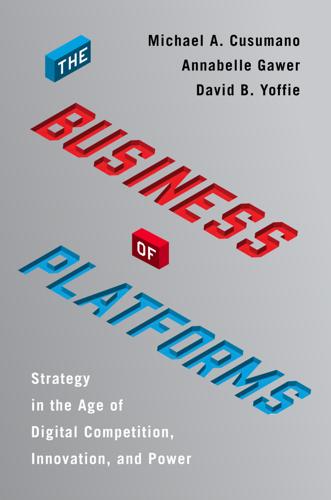
The Business of Platforms: Strategy in the Age of Digital Competition, Innovation, and Power
by
Michael A. Cusumano
,
Annabelle Gawer
and
David B. Yoffie
Published 6 May 2019
A classic example of a first mover’s failure to appreciate this pricing problem was Sidecar’s missteps in the taxi market. In August 2015, San Francisco–based ride-sharing platform Sidecar announced it would “pivot” to begin focusing primarily on same-day deliveries. It had introduced this service earlier in the year to supplement its main peer-to-peer ride-sharing business. The company anticipated that the majority of revenues going forward would come from deliveries of food, flowers, and even medical marijuana rather than rides, a tacit admission that it had lost its battle to compete with the larger and more well-known ride-hailing platforms Uber and Lyft.3 That pivot failed to pay off, and the company announced it would suspend operations entirely on December 31.
…
Its failure was nonetheless significant because Sidecar had pioneered the peer-to-peer ride-sharing model before Uber and Lyft transitioned their start-ups into the space. By 2015, ride-sharing platforms—where smartphone apps connected riders with nonprofessional drivers operating their personal vehicles—had become a pillar of the sharing, or gig, economy, despite the fact that such platforms had only existed for three years. Sidecar’s cofounder and CEO, Sunil Paul, claimed to have had the idea for such a service as far back as 1998 and received a patent for mobile ride hailing over a wireless network in 2002.5 Paul developed the idea into Sidecar, which he founded in January 2012.
…
Ultimately, we expect voice to be a classic platform battle, where the winner(s) will depend on who can build up the largest installed base of users, who can create the best ecosystem for producing innovative applications, and who (if anyone) can lock in their customer base, limit multi-homing in the future, and create a sufficiently compelling solution to reduce competition from niche players and differentiation in the market. RIDE SHARING AND SELF-DRIVING CARS: FROM PLATFORM TO SERVICE While AI will spawn a range of new platforms, it will also enable new capabilities that may destroy existing platforms. One of the most exciting AI applications has been the emergence of self-driving cars. Ironically, this new technology may replace some of the most widely used platforms in the world: Uber, Lyft, Didi Chuxing, and other ride-sharing businesses. Despite the strong cross-side network effects, the ride-sharing platform revolution could actually disappear. The business challenge for ride-sharing platforms is simple: They tend to lose money, and lots of it.
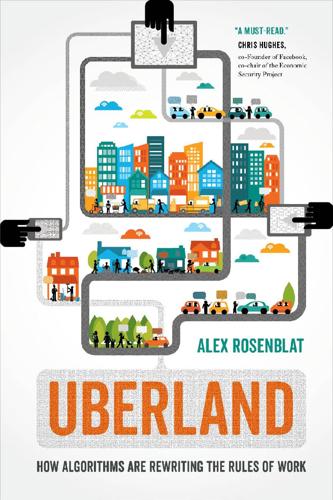
Uberland: How Algorithms Are Rewriting the Rules of Work
by
Alex Rosenblat
Published 22 Oct 2018
Alison Griswold, “Three US States Have Already Blessed Uber’s Independent Contractor Employment Model,” Quartz, December 10, 2015, https://qz.com/571249/three-us-states-have-already-blessed-ubers-independent-contractor-employment-model/; Lisa Nagele-Piazza, “Florida Legislature Approves Ride-Hailing Driver Bill,” Society for Human Management, www.shrm.org/resourcesandtools/legal-and-compliance/state-and-local-updates/pages/florida-legislature-approves-ride-hailing-driver-bill.aspx; Dara Kerr, “Uber and Lyft Messed with Texas—and Won,” CNET, June 20, 2017, www.cnet.com/news/uber-lyft-toyed-with-texas-to-get-their-ride-hailing-way/; Kimberly Reeves, “Uber’s Big Win: Texas Ridesharing Rules Bill Passes through Senate,” Austin Business Journal, May 17, 2017, www.bizjournals.com/austin/news/2017/05/17/ubers-big-win-texas-ridesharing-rules-bill-passes.html. 42. Lindsey Hadlock, “Upstate New York Ride-Hailing Drives Gig Economy,” Cornell University Media Relations Office, June 29, 2017, http://mediarelations.cornell.edu/2017/06/29/upstate-new-york-ride-hailing-drives-gig-economy/. 43.
…
Elizabeth Wissinger, “Glamor Labour in the Age of Kardashian,” Critical Studies in Fashion and Beauty 7, no. 2 (December 2016): 141–152, www.ingentaconnect.com/contentone/intellect/csfb/2016/00000007/00000002/art00002. 68. International Finance Corporation–World Bank, “Driving toward Equality: Women, Ride-Hailing, and the Sharing Economy,” March 1, 2018, http://documents.worldbank.org/curated/en/856531520948298389/Driving-toward-equality-women-ride-hailing-and-the-sharing-economy. 69. Kaleigh Rogers, “Love in the Time of Ridesharing,” Motherboard, May 27, 2016, https://motherboard.vice.com/en_us/article/yp33yg/love-in-the-time-of-ridesharing-uber-lyft-romance-technology. 70. Lobel, “The Law of the Platform”; Calo and Rosenblat, “The Taking Economy.” 71. Tressie McMillan Cottom, “Credentials, Jobs and the New Economy,” Inside Higher Ed, March 2, 2017, www.insidehighered.com/views/2017/03/02/impact-new-economy-profit-colleges-and-their-students-essay. 72.
…
Lindsey Hadlock, “Upstate New York Ride-Hailing Drives Gig Economy,” Cornell University Media Relations Office, June 29, 2017, http://mediarelations.cornell.edu/2017/06/29/upstate-new-york-ride-hailing-drives-gig-economy/. 43. Safraz Maredia, “Westchester Would Send Anti-business Message by Opting Out from Ride-Hailing: Uber Official,” lohud, June 25, 2017, www.lohud.com/story/opinion/contributors/2017/06/26/westchester-ride-hailing-uber-view/427351001/. 44. Edward T. Walker, “The Uberization of Activism,” New York Times, August 6, 2015, www.nytimes.com/2015/08/07/opinion/the-uber-ization-of-activism.html?mcubz=1. 45. Nikil Saval, “Disrupt the Citizen: Against Ride Sharing,” Portside, July 11, 2017, https://portside.org/2017–07–11/disrupt-citizen-against-ride-sharing. 46.

The Upstarts: How Uber, Airbnb, and the Killer Companies of the New Silicon Valley Are Changing the World
by
Brad Stone
Published 30 Jan 2017
There were other ridesharing companies that preceded Sidecar. Starting in 2010, one San Francisco service, called Homobile, offered transvestite performers and members of the gay community rides and solicited donations as payment. Sunil Paul says he tried the service on a trip to the airport in 2011. 21. “Travis Kalanick of Uber,” This Week in Startups, YouTube video, August 16, 2011, https://youtu.be/550X5OZVk7Y. 22. Tomio Geron, “Ride-Sharing Startups Get California Cease and Desist Letters,” Forbes, October 8, 2012, http://www.forbes.com/sites/tomiogeron/2012/10/08/ride-sharing-startups-get-california-cease-and-desist-letters/#767d66027e81. 23.
…
Chen, “Uber to Roll Out Ride Sharing in California,” Bits Blog, New York Times, January 31, 2013, http://bits.blogs.nytimes.com/2013/01/31/uber-rideshare/. 26. Travis Kalanick, “@johnzimmer You’ve Got a Lot of Catching Up,” Twitter, March 19, 2013, https://twitter.com/travisk/status/314079323478962176. 27. David Pierson, “Uber Fined $7.6 Million by California Utilities Commission,” Los Angeles Times, January 14, 2016, http://www.latimes.com/business/la-fi-tn-uber-puc-20160114-story.html. 28. “Order Instituting Rulemaking on Regulations Relating to Passenger Carriers, Ridesharing, and New Online-Enabled Transportation Services,” Cpuc.ca.gov, September 19, 2013, http://docs.cpuc.ca.gov/PublishedDocs/Published/G000/M077/K112/77112285.PDF. 29.
…
With Didi and Kuaidi consumed with their merger, Uber started gaining ground on the strength of ridesharing and clawed its way to what it estimated was 30 percent of the Chinese market for on-demand transportation apps. As usual, there was drama. Taxi drivers went on strike in half a dozen cities, including Changchun, Nanjing, and Chengdu.17 The police raided Uber offices in Guangzhou and Chongqing.18 In January 2015, the country’s Ministry of Transport ruled that private car owners were not allowed to use ride-hailing apps for profit. But strangely, Uber and its rivals were allowed to continue to operate.
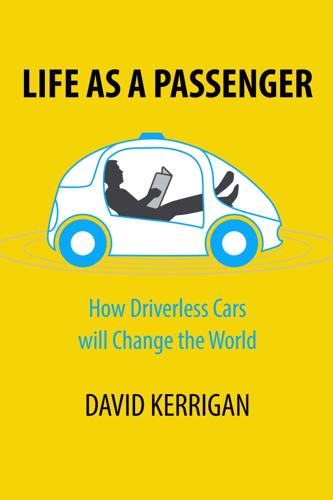
Life as a Passenger: How Driverless Cars Will Change the World
by
David Kerrigan
Published 18 Jun 2017
According to data in the report, two thirds of US drivers still prefer driving their own vehicle to using a ride hailing service and 63 per cent wouldn’t replace their own vehicle with a ridesharing service, even if it were free”.[179] From Car-less to Care-less Self-driving cars will push prices for ride-sharing down to levels that are currently unimaginable. Given that today drivers account for approximately 70% of the cost of Uber or Lyft fares, the advent of self-driving cars could reduce the average ride-sharing fare to well below 50% of current rates. One analyst with ARK Investment Management,[180] is expecting ridesharing firms to drastically lower fares.
…
Tesla owners however won’t be permitted to use their self-driving Tesla to pick up people using a competitive ride-hailing app such as Uber. Rather, they Tesla documentation states they can only do so as part of what is now being called the Tesla Network. Uber "If we are not tied for first, then the person who is in first, or the entity that's in first, then rolls out a ride-sharing network that is far cheaper or far higher-quality than Uber's, then Uber is no longer a thing" Travis Kalanick, Uber CEO [116] San Francisco-based ride-hailing company Uber is also a high-profile member of the race for driverless car technology.
…
Plenty of “unassailable” market leaders have missed cusps and fallen away. Think Kodak, Borders, Blockbuster, music companies, newspapers. The major car manufacturers don’t want to be the “horse” of a new “horseless carriage” era. The line between the agile technology sector and the lumbering powerhouse automotive industries is blurring. The rise of rideshare and ride hailing companies such as Uber and Lyft means that transportation is being tied ever more closely to your cell phone, while autonomous driving technology will require turning your car into a supercomputer. But these developments are expensive: Carmakers’ R&D budgets jumped 61 percent, to $137 billion from 2010 to 2014.
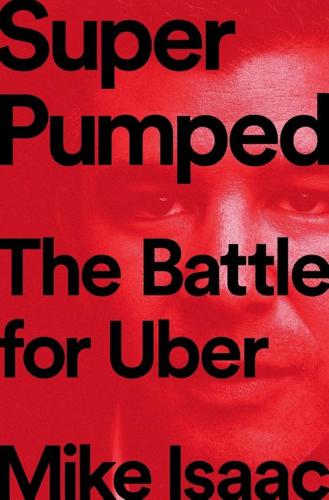
Super Pumped: The Battle for Uber
by
Mike Isaac
Published 2 Sep 2019
To Kalanick’s dismay, SF transit authorities weren’t enforcing a damn thing. For all his bluster about ignoring regulators and disrupting an industry, Kalanick hadn’t actually gone as far as Lyft and Sidecar. Up until then he hadn’t been willing to cross the line into extreme ride-sharing. But he was wrong to hesitate. After Kalanick took his first Sidecar, it clicked. There was an enormous potential market in peer-to-peer ride-hailing with everyday drivers. Kalanick needed to build the same thing for Uber. From the sidelines, what Gurley saw struck him like a lightning bolt. Uber wasn’t just fighting for a piece of the taxi and limousine market.
…
Google, long considered an ally and a partner, seemed to be turning on him. Google’s little car would destroy Uber, and would do it smiling. If Google had a ride-sharing service that didn’t need drivers, they could charge almost nothing, steal all of Uber’s customers, and destroy its business. Brin was being interviewed on stage by the journalist Kara Swisher, who ran the Code Conference. She asked him point blank if Google had plans to ever create a ride-hailing service, like Uber. Kalanick might have hoped to hear Brin deny it. He didn’t. “I think some of these kinds of business questions—how will the service be operated, will we operate it ourselves, will we work with partners—are things that we’ll sort out when it’s closer to being widely deployed,” Brin told Swisher, noncommittal.
…
v=TS0NuV-zLZE. 244 “We will impound the vehicle”: Victor Fiorillo, “Uber Launches UberX In Philadelphia, but PPA Says ‘Not So Fast,’ ” Philadelphia, October 25, 2014, https://www.phillymag.com/news/2014/10/25/uber-launches-uberx-philadelphia/. 244 “UBERX: REMINDER”: Documents held by author. 245 a behavior engineers called “eyeballing”: Mike Isaac, “How Uber Deceives the Authorities Worldwide,” New York Times, March 3, 2017, https://www.nytimes.com/2017/03/03/technology/uber-greyball-program-evade-authorities.html. 247 “Uber has for years used”: Isaac, “How Uber Deceives the Authorities Worldwide.” 247 Uber’s security chief, prohibited employees: Daisuke Wakabayashi, “Uber Seeks to Prevent Use of Greyball to Thwart Regulators,” New York Times, March 8, 2017, https://www.nytimes.com/2017/03/08/business/uber-regulators-police-greyball.html. 247 Department of Justice opened a probe: Mike Isaac, “Uber Faces Federal Inquiry Over Use of Greyball Tool to Evade Authorities,” New York Times, May 4, 2017, https://www.nytimes.com/2017/05/04/technology/uber-federal-inquiry-software-greyball.html. 247 the inquiry widened to Philadelphia: Mike Isaac, “Justice Department Expands Its Inquiry into Uber’s Greyball Tool,” New York Times, May 5, 2017, https://www.nytimes.com/2017/05/05/technology/uber-greyball-investigation-expands.html. 248 He called it The Rideshare Guy: Harry Campbell, “About the Rideshare Guy: Harry Campbell,” The Rideshare Guy (blog), https://therideshareguy.com/about-the-rideshare-guy/. 248 directly due to the string of controversies: Kara Swisher and Johana Bhuiyan, “Uber President Jeff Jones Is Quitting, Citing Differences Over ‘Beliefs and Approach to Leadership,’ ” Recode, March 19, 2017, https://www.recode.net/2017/3/19/14976110/uber-president-jeff-jones-quits. 250 “there’s just a bunch of models”: Emily Peck, “Travis Kalanick’s Ex Reveals New Details About Uber’s Sexist Culture,” Huffington Post, March 29, 2017, https://www.huffingtonpost.com/entry/travis-kalanick-gabi-holzwarth-uber_us_58da7341e4b018c4606b8ec9. 253 “I am so sorry for being cold”: Amir Efrati, “Uber Group’s Visit to Seoul Escort Bar Sparked HR Complaint,” The Information, March 24, 2017, https://www.theinformation.com/articles/uber-groups-visit-to-seoul-escort-bar-sparked-hr-complaint. 253 reporter’s cell phone number: Efrati, “Uber Group’s Visit to Seoul Escort Bar.”
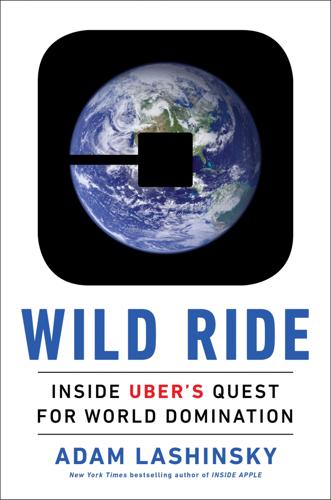
Wild Ride: Inside Uber's Quest for World Domination
by
Adam Lashinsky
Published 31 Mar 2017
Didi similarly utilized Tencent’s WeChat messaging service to its advantage. Yet both companies focused on the taxi market, leaving Uber unencumbered to pursue its own nontaxi ride-hailing strategy. “When you’re the small guy you can do things the big guy can’t,” said Kalanick, nostalgically evoking his entrepreneurial sensibilities and even sounding a bit wistful, given how big Uber had become in other markets. “We’re so small right now that it’s not going to cost much to get into the game [in China]. Right now we’re doing ridesharing and just figuring out how to make it work.” Uber would remain neither small nor cost-effective in China. And its Chinese competitors proved that they were quite capable of reading international headlines describing Uber’s gains around the world.
…
Car ownership hasn’t yet declined in the United States as the result of the advent of ridesharing or for any other reason. According to U.S. Census data, the percentage of households with no vehicles declined from 21.5 percent in 1960 to 9.1 percent in 2010, the year Uber started. It was the same four years later, the last data available. There is similar national data for driver’s licenses: The number ticked up by four million from 2014 to 2015, also according to census data. As well, the Pew Research Center reported in 2016 that while 51 percent of Americans had heard of the concept of ridesharing, just 15 percent had used a service like Uber and Lyft, and another 33 percent were unfamiliar with them altogether.
…
These included a protracted battle in New York City, where one of the bones of contention was the city’s demand that Uber share trip data with officials, and Orlando, where proposed rules attempted to force Uber and similar companies to charge 25 percent more than taxis. In most instances a massive lobbying and public-relations onslaught succeeded in allowing the ridesharing companies to operate. But not everywhere. In May 2016, Uber and Lyft left Austin, Texas, after refusing to comply with the city’s fingerprinting measures. New ridesharing services willing to comply with Austin’s rules quickly offered service there. Uber’s customers were often reliable supporters of the company, especially in its earliest months in a new market. The convenience of summoning a cheap ride—almost always subsidized by Uber—and being freed from spotty taxi service typically felt too good to be true.
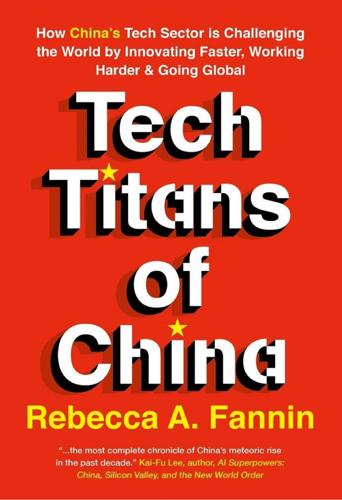
Tech Titans of China: How China's Tech Sector Is Challenging the World by Innovating Faster, Working Harder, and Going Global
by
Rebecca Fannin
Published 2 Sep 2019
Uber’s Chinese competitors joined together in February 2015 and rebranded as Didi Kuaidi. The consolidated company claimed an 80 percent market share of China’s ride-hailing market—comparable to Uber’s dominant share of the US ride-hailing sector. Kalanick wasn’t about to give up. He took his venture capitalist’s advice: be respectful to China officials, call on mayors, and take note of their key performance indicators to win them over. He finally gave up in China after bumping up against new national and provincial regulations for ride-sharing services in 2016—and getting an offer he couldn’t refuse. Faced with some $2 billion of losses in its Chinese operations and the prospect of investing billions more, Uber’s China business was bought out in August 2016 by the homegrown champion Didi in a huge $35 billion deal.
…
The gap creates a good opportunity for Chinese investors to profit from investing in next-generation tech stars in Asia, a topic I wrote about in my forward-looking book Startup Asia.12 China is reaping the bonus of an early start in Southeast Asia and is making American companies seem slow and clumsy. Take what’s happened with Uber. After Uber was overtaken by local Chinese rival Didi in 2016, the American ride-hailing leader then sold out to its chief Asian competitor, Grab, Southeast Asia’s dominant ride-share company. At Amazon, founder and CEO Jeff Bezos made a big fuss about committing $5 billion to pursue India’s tremendous potential. Indian newspapers ran front-page headlines of Bezos when he kick-started Amazon in India by parading into Mumbai on the back of a colorful truck, with a $2 billion investment check in tow.
…
Didi is positioned in China’s sharing economy sector, the nation’s leader in the world’s largest ride-hailing market, worth $30 billion. The privately held startup, funded by Tencent, Alibaba, and even Apple, is perhaps best known to those outside of China as the company that won the competition with Uber in China in a fierce three-year battle that ended in 2016 when Uber sold out to its China rival. By absorbing Uber and its main Chinese rival, Kuaidi, Didi climbed to the top of the ride-hailing heap with a dominant share of China’s large $23 billion ride share market, which is projected to nearly triple by 2020.1 On the downside, Didi has recently undergone layoffs of 15 percent of its workforce in China’s economic slowdown, faced closer government scrutiny over safety issues, and failed to turn a profit since starting in 2012.
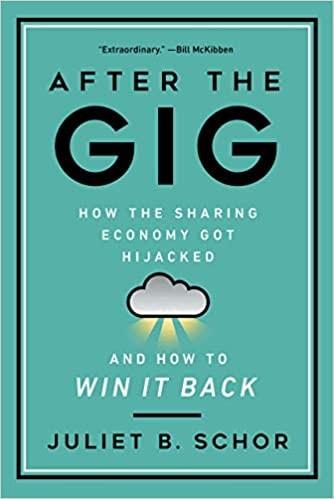
After the Gig: How the Sharing Economy Got Hijacked and How to Win It Back
by
Juliet Schor
,
William Attwood-Charles
and
Mehmet Cansoy
Published 15 Mar 2020
Many were captivated by the commonsense approach to eco-impacts that the idealistic discourse offered, especially the mantra of “efficiency.” If cars sit idle for twenty-three hours a day, deploying them for ridesharing will reduce the demand for new vehicles. Airbnb listings will prevent the construction of hotels. Secondhand markets transfer goods from people who have little use for them into the hands of those who want them, thereby reducing purchases. The logic seemed unassailable to many, and quite a few of our respondents repeated it nearly verbatim. These included hosts, car renters, and ride-hail drivers. Adam, an Airbnb host, offered a typical rationale: “Personally I’m [against] overconsumption of resources in the world from either the environmental or an equity perspective.
…
It may be affordable for consumers but not for the climate.39 There’s another aspect of ride-hailing that isn’t environmental but that the increased number of vehicles on the streets is responsible for: traffic accidents and, even more problematically, fatalities. The University of Chicago study discussed above found that the growth of ride-hail has resulted in between 2 and 4 percent more traffic fatalities, including for pedestrians.40 Before ride-hailing, traffic fatalities had been declining for twenty years. That trend reversed in 2010, and deaths have climbed since then. This is true even though ride-hailing services are a popular option for people who have been drinking. Moreover, as ride-hailing has expanded, additional deaths have been rising. We know less about how Airbnb and other accommodation platforms are affecting carbon footprints.
…
Another issue is how the competition with legacy businesses played out in terms of jobs lost and “jobs” (or gigs) created. To date there are few studies of this question.53 Ride-hail apps appear to have devastated the traditional taxi industry. In New York City, where we have data, taxi rides per day were halved, from 479,000 in 2010 to 263,000 in 2019, while ride-hail rose from 82,495 in 2015 (the first year of data) to 769,729 in 2019.54 New York is a city where cabs have traditionally been plentiful and relatively inexpensive, but there are now four times as many trips on ride-hail vehicles as taxis. While eventually many taxi drivers did convert to the platforms, others were unable to because of loans they’d taken out for medallions55 or because earnings are lower on the apps.
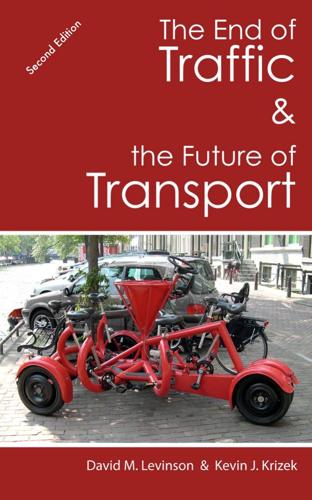
The End of Traffic and the Future of Transport: Second Edition
by
David Levinson
and
Kevin Krizek
Published 17 Aug 2015
project=innovative-mobility-carsharing-outlook-summer-2015. 187 Totten, Kristy (2015-07-01) "The Quiet Exit of Downtown Car-Sharing Venture Shift." Las Vegas Weekly. http://lasvegasweekly.com/as-we-see-it/2015/jul/01/shift-downtown-car-sharing-venture-exits-zach-ware/#.VaCICA7q0Qc.twitter 188 Some have tried to change the language, since ridesharing implies carpooling, preferring to call them "ride-hailing" or "ride-sourcing" services, we think the misleading term "ridesharing" is here to stay. 189 How does Lyft (or any other Transportation Network Company) work? From the perspective of the user (1 and 2 are one-time) the following is the sequence: 1. Download the App. 2. Enter the required info 3.
…
Figure 8.2 shows trends on carsharing in North America.186 It is not clear where market saturation is, and whether the dip in 2015 is just a data issue or indicative that perhaps ridesharing is stealing some carsharing thunder. Notably carsharing company Shift shuttered in Las Vegas in mid-2015.187  Sharing Rides If carsharing was a warm and fuzzy name for modern car rental services, 'ridesharing' is a warmer and fuzzier name for modern taxi services.188 The terminology for this service is still in flux, sometimes the terms ‘ridehailing' or 'ridesourcing' are used rather than ‘ridesharing' to cool and de-fuzzify it. You might have thought ridesharing was the same as carpooling. And it is, if you think of modern ridesharing drivers as your friends giving you a lift (or in the name of one company a Lyft), not for money, but for a voluntary donation or paying for half the costs, like the carpooling service and app Carma enables.
…
Re/Code. http://recode.net/2015/07/18/how-didi-kuaidi-plans-to-destroy-uber-in-china/ 193 A longer discussion of our skepticism is here: Levinson (2014-12-01) "It is a Small Market After All" Transportationist blog. http://transportationist.org/2014/12/01/its-a-small-market-after-all-es-gibt-einen-kleinen-markt-uber-alles/ 194 French, Sally (2015-07-01) "An 8-year-old's take on 'Uber for kids'" MarketWatch https://secure.marketwatch.com/story/an-8-year-olds-take-on-uber-for-kids-2015-07-01 195 Zimmerman, Eilene (2016-04-13) "Ride-Hailing Start-Ups Compete in ‘Uber for Children’ Niche” New York Times. http://www.nytimes.com/2016/04/14/business/smallbusiness/ride-sharing-start-ups-compete-in-uber-for-children-niche.html 196 Hatmaker, Taylor (2014-09-08) "Taxi service by women for women launching in New York." The Daily Dot. http://www.dailydot.com/business/sherides-shetaxis-uber-women-nyc/ 197 Apparently Based on this NPR story (2013-10-24) In Most Every European Country Bikes are Outselling Cars http://www.npr.org/blogs/parallels/2013/10/24/240493422/in-most-every-european-country-bikes-are-outselling-cars 198 We use the term "bike" to mean the traditional human-powered "bicycle," unless otherwise noted as in e-bike or motor-bike. 199 National Bike Dealers Association (2012) Industry Overview http://nbda.com/articles/industry-overview-2012-pg34.htm 200 ACS numbers are undoubtedly an under-report of bike travel, but the number remains small.
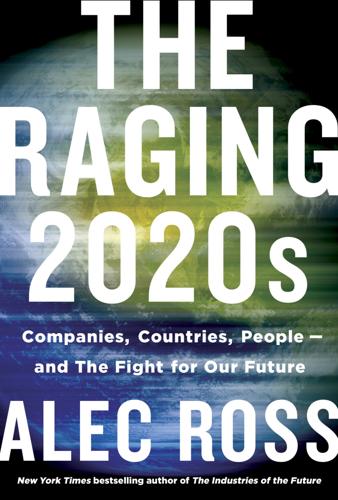
The Raging 2020s: Companies, Countries, People - and the Fight for Our Future
by
Alec Ross
Published 13 Sep 2021
However, Dolber and Pardo developed a more scalable strategy for picking out rideshare drivers: Facebook. “Facebook is able to identify drivers better than anybody else,” Dolber said. “They know who drivers are because they have the app downloaded on their phone. It’s not that people are necessarily identifying themselves [as rideshare drivers]. On Facebook itself, they’re figuring out who drivers are … and then [targeting] them with ads.” Armed with an academic grant, Dolber and Pardo set out creating a Facebook ad campaign to target rideshare drivers across Los Angeles. The strategy was simple: when users clicked the ad, they were directed to the Rideshare Drivers United website and invited to join the group.
…
With his class schedule changing each semester, Dolber needed some extra cash. He also saw rideshare driving as a research opportunity—what better way to study the gig economy than to join it? So off he went in his silver Honda Civic, shuttling passengers around the concrete jungle of Los Angeles County. Dolber first learned of Rideshare Drivers United at an academic conference. He decided to attend one of its meetings in Los Angeles, and while there he crossed paths with Ivan Pardo. By that point, the organization had connected with only about five hundred of the estimated three hundred thousand rideshare drivers in California. Because Uber and Lyft publish only sparse data on their contractors, identifying and contacting new drivers was a laborious process.
…
Most adjunct faculty: “Average Adjunct Professor Salary,” PayScale, accessed May 20, 2020, https://www.payscale.com/research/US/Job=Adjunct_Professor/Salary. about five hundred of the estimated three hundred thousand rideshare drivers: Brian Dolber, interview with Will Peischel, May 15, 2020; “About Us,” Rideshare Drivers United, accessed May 21, 2020, https://drivers-united.org/about. the group had recruited most of its members: Brian Dolber, From Independent Contractors to an Independent Union: Building Solidarity through Rideshare Drivers United’s Digital Organizing Strategy (Philadelphia, PA: Media, Inequality & Change Center, October 2019), 9, https://mic.asc.upenn.edu/wp-content/uploads/2020/07/Dolber_final1.pdf.
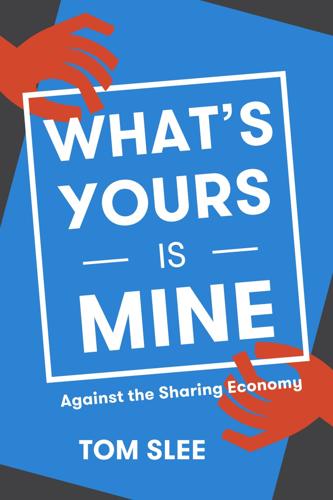
What's Yours Is Mine: Against the Sharing Economy
by
Tom Slee
Published 18 Nov 2015
Just as “sharing economy” is no longer a realistic description, so ridesharing is not accurate, to the point that the Associated Press stylebook explicitly says not to use it to describe Uber. Some have taken to calling this model “ridesourcing”;1 the AP stylebook suggests ride-hailing or ride-booking services. Nevertheless, the phrase “ridesharing,” inaccurate as it may be, is still more widely used and I will use it, without the scare quotes. But let’s start with carsharing. ZIPCAR Carsharing co-operatives have been around for a long time, some run as non-profits and some as commercial companies. There is a continuous history of activities starting in the 1970’s, and in Kitchener-Waterloo where I live, Community CarShare was founded in 1998 and is still running.
…
Lyft aims to bridge that gap.” 11 Lyft themselves encouraged the conflation of their business model with non-commercial activities like carpooling: when the service was first launched in 2012 journalist Liz Gannes asked John Zimmer about insurance and regulation, and he replied “our understanding is that when it’s ride-sharing, you can use your personal insurance policy. As for regulation, a lot of state laws are supportive of carpooling and ride-sharing and want to make that work.” 12 But of course most Lyft drivers were not giving a lift to people who happened to be going in the same direction, and they were not saving money, they were driving to make money. Things became quickly clearer: in July 2013 the company sold off the original Zimride business to Enterprise Rent-A-Car to focus on Lyft.13 Every now and then passengers would not make the suggested donation, and bad feelings and bitterness would ensue, so in late 2013 Lyft ditched its voluntary donation system and replaced it with a fare system.
…
“Lyft Sells Zimride Carpool Service to Rental-Car Giant Enterprise.” AllThingsD, July 12, 2013. http://allthingsd.com/20130712/lyft-sells-zimride-carpool-service-to-rental-car-giant-enterprise/. ———. “Zimride Turns Regular Cars Into Taxis With New Ride-Sharing App, Lyft,” May 22, 2012. http://allthingsd.com/20120522/zimride-turns-regular-cars-into-taxis-with-new-ride-sharing-app-lyft/. Gans, Joshua. “Is Uber Really in a Fight to the Death?” Digitopoly, November 25, 2014. http://www.digitopoly.org/2014/11/25/is-uber-really-in-a-fight-to-the-death/. Gansky, Lisa. The Mesh: Why the Future of Business Is Sharing.
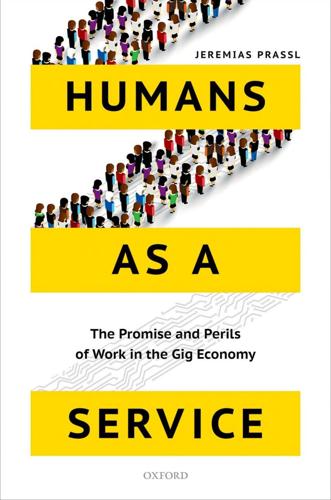
Humans as a Service: The Promise and Perils of Work in the Gig Economy
by
Jeremias Prassl
Published 7 May 2018
Debbie Wosskow, Unlocking the Sharing Economy: An Independent Review (BIS 2014), 5. 60. RStreet, ‘Map of ridesharing laws’, http://www.rstreet.org/tnc-map/, archived at https://perma.cc/4QCU-9SNN 61. Heather Somerville and Dan Levine, ‘Exclusive: US states pass laws backing Uber’s view of drivers as contractors’, Reuters (10 December 2015), http:// www.reuters.com/article/us-uber-statelaws-idUSKBN0TT2MZ20151210, archived at https://perma.cc/PB5L-NM8Y; see also Douglas MacMillan, ‘Uber laws: a primer on ridesharing regulations’, The Wall Street Journal (29 January 2015), http://blogs.wsj.com/digits/2015/01/29/uber-laws-a-primer-on-ride- sharing-regulations/, archived at https://perma.cc/2RUQ-M3QH 62.
…
L. 176 Chen, Keith 122 Davies, Paul 174 Cherry 38 Davies, Rob 151 Cherry, Miriam 97, 99, 132, 173, 174, 184 Day, Iris 177 chess robots 1, 6 Deakin, Simon 36, 112, 130, 131, 152, 172, China 12, 38, 153 174, 177, 178, 184, 185 Chowdhry, Amit 181 deductions from pay 15, 19, 60, 63, 67 Christenson, Clayton M. 39 Deep Blue 1 ‘churn’/worker turnover 68 Deliveroo 2, 11, 12, 13, 115 Clark, Shelby 46 collective action by drivers 113 classificatory schemes 13, 28–9, 147 contractual prohibitions 66–7 misclassification 95, 96–100 employment litigation 99 Clement, Barrie 162 internal guidelines 43–4 Clover, Charles 153 safety and liability 122–3 Coase, Ronald 19, 94, 101, 172 wage rates 65 Coase’s theory 19, 20 delivery apps 2 Codagnone, Cristiano 150 demand fluctuations 78 Cohen, Molly 36, 37, 152, 157 Denmark 36 ‘collaborative consumption’ 42 deregulation 37, 40 (see also regulation) collective action 113–15 Dholakia, Utpal 150 collective bargaining rights 48, 65, 82 Didi 2, 12, 38 commission deductions 15, 19, 60, 63, 67 differential wage rates 109–11 commodification of work 76, 77, 110 digital disruption 49, 50 competition 88 ‘digital feudalism’ 83 consumer demand 17–18 digital innovation see innovation consumer protection 10, 112, 121, 128–9 digital market manipulation 123 safety and liability 122–3, 128–9 digital payment systems 5 * * * Index 193 digital work intermediation 5, 11, 13–16 borderline cases 100 disability discrimination 62, 121 identifying the employer 100 discriminatory practices 62, 94, 113, easy cases 102–3 121, 180 functional concept of the disputes 66 employer 101–2, 104 disruptive innovation 39–40, 49, 50, 95 genuine entrepreneurs 103 dockyards 78, 79–80 harder cases 103–4 ‘doublespeak’ 31–50, 71, 95, 97–8, 133 multiple employers 103 Doug H 160, 163 platforms as employers 102–3 down-time 60, 65, 76, 77 ‘independent worker’ 48 Downs, Julie 180 misclassification 95, 96–100 Drake, Barbara 168 ‘personal scope question’ 93 drink driving 133, 184–5 employment taxes 125–7 Dzieza, Josh 163 Engels, Friedrich 81, 168 ‘entrepreneur-coordinator’ 101 economic crises 145 entrepreneurship 6, 8, 21, 32, 42, 43, economic drivers 7, 18–24 45–6, 50, 52 (see also micro- Edwards, Jim 146 entrepreneurs) efficiency 7 autonomy 53–5 Elejalde-Ruiz, Alexia 175 algorithmic control and 55–8 ‘elite worker’ status 61, 67 sanctions and 61–3 ‘emperor’s new clothes’ 71 wages and 58–61 empirical studies 28–9 freedom 8, 14, 27, 29, 47, 49, 51, 52, employer responsibility 104 53, 55, 65–8, 69, 85, 96, 108, 110, employment contracts 94 112, 113 bilateral relationships 100 on-demand trap and 68–70 employment law 4, 9, 10, 38, 84 risk and 86 (see also regulation) genuine entrepreneurs 102, 103 continuing importance 139–40 misclassification 96–7, 98, 101 control/protection trade-off 93–4, 95 ‘personal scope question’ 93 European Union 107, 111, 112, 178 self-determination 63–5 flexibility and environmental impacts 21, 26 innovation and 90 Estlund, Cynthia 137, 185 measuring working time 105–7 Estonia 127 mutuality of obligation 174 Estrada, David 41 new proposals 46–9 euphemisms 44–5 rebalancing the scales 107–8 European Union law 107, 111, 112, 178 collective action 113–15 exploitation 26–7 portable ratings 111–13 Ezrachi, Ariel 150 surge pricing 108–11 ‘risk function’ 131, 132 Facebook 35, 57 workers’ rights 105 FairCrowdWork 114, 179 rights vs flexibility 115–17 Farrell, Sean 164 employment litigation FedEx 97 FedEx 97, 173 feedback 5, 15–16 France 99 Feeney, Matthew 35, 151 Uber 45, 48, 54–5, 98, 99, 106, 115 Field, Frank 26 UK 45, 48, 98–9, 106, 115 financial losses 22–3 US 54–5, 97, 98, 99 ‘financially strapped’ 29 employment status 21, 45, 47 Finkin, Matthew 74, 84, 166, 169 * * * 194 Index Fiverr 12, 13, 24, 78 historical precedents and CEO 17 problems 72, 73–85 Fleischer, Victor 20, 147 rebranding work 4–6, 32 flexibility 8, 10, 12, 107, 108 labour as a technology 5–6 vs rights 115–17 market entrants 88 food-delivery apps 12 matching 13, 14, 18–20 Foodora 2, 12 monopoly power 23–4, 28 Foucault, Michel 55, 159 network effects 23–4 founding myths 34–5 overview 2–3 Fox, Justin 182 perils 6, 26–8, 31 fragmented labour markets 83, 84, 86, platform paradox 5 90, 113 platforms as a service 7–8 France 78 consumer protection 10 employment litigation 99 potential 6, 7, 12, 24–6, 31 Labour Code 114, 176, 179 regulation 9–10 (see also regulation) regulatory battles 36 real cost of on-demand services 119, tax liability 126 121–2 (see also structural ‘free agents’ 28–9 imbalances) Freedland, Mark 174, 175 regulation see regulation Freedman, Judith 111, 178 regulatory arbitrage 20–2 freedom 8, 14, 27, 29, 47, 49, 51, 52, 53, size of the phenomenon 16–17, 145–6 55, 65–8, 69, 85, 96, 108, 110, work on demand 11–29 112, 113 gigwork 13 on-demand trap and 68–70 Giliker, Paula 183 risk and 86 global economic crises 145 Frey, Carl 136, 185 Goodley, Simon 173 Fried, Ina 183 GPS 5, 57 Greenhouse, Steven 66, 164 Gardner-Selby, W. 185 Griswold, Alison 164, 181 gender parity 144 (see also Grossman, Nick 46 discriminatory practices) Gumtree 20 Germany Gurley, Bill 161 regulatory battles 36 Guyoncourt, Sally 178 workers’ rights 114 gift vouchers 105 Hacker, Jacob 86, 170 gig economy Hall, Jonathan 60, 162, 165 business models 12–13, 44, 100 Hammond, Philip 126, 182 cash burn 22–3 Hancock, Matthew 46, 166 clash of narratives 8 Handy 18 classification 13, 28–9 Hardy, Tess 176 critics 2, 3, 8 Harman, Greg 163 digital work intermediation 5, 11, Harris, Seth 48, 49, 105, 157, 175 13–16 Hatton, Erin 82, 169 economic drivers 7, 18–24 Heap, Lisa 177 empirical studies 28–9 Helpling 2 employment law and see employment Hemel, Daniel 147, 170 law Hesketh, Scott 181 enthusiasts 3, 4, 8 hiring practices: historical gigwork vs crowdwork 13 perspective 78, 79 growth 17–18 historical perspective 72, 73–85 ‘humans as a service’ 3–6 Hitch 38 * * * Index 195 Hitlin, Paul 162 Internet Holtgrewe, Ursula 169 collective action 113 HomeJoy 132 Third Wave 73 Hook, Leslie 153 Irani, Lilly 6, 114, 142, 162, 179 Horan, Hubert 22, 148 Isaac, Mike 170, 171 Horowith, Sara 144 Issa, Darrell 41 hostile takeovers 111–12 Howe, Jeff 7, 11, 142 jargon 42–5 Huet, Ellen 153 Jensen, Vernon 167, 168, 170 Human Intelligence Tasks (HITs) 60, 93 Jobs, Steve 35 ‘humans as a service’ 3–6 joint and several liability 104 historical precedents and problems 72, Justia Trademarks 143 73–85 rebranding work 4–6, 32, 40–50 Kalanick, Travis 43, 86 Hunter, Rachel 106, 176 Kalman, Frank 16, 144 Huws, Ursula 27, 141, 150 Kaminska, Izabella 22–3, 44, 90, 148, 156, 169, 171, 172 ‘idle’ time 60, 65, 76, 77 Kaplow, Louis 184 illegal practices 57 Kasparov, Garry 1 immigrant workers 77 Katz, Lawrence 16 incentive structures 67–8 Katz, Vanessa 116, 179 independent contractors 21 Kaufman, Micha 17, 145, 149 Independent Workers Union of Great Kempelen, Wolfgang von 1 Britain (IWGB) 113, 179 Kennedy, John F. 135, 185 industrialization 75 Kenya 36 industry narratives 32–3, 49–50 Kessler, Sarah 151 information asymmetries 32, 54, 87, 131 Keynes, John Maynard 135, 185 innovation 3, 6, 8, 9, 10, 31, 32, 42, 45–6, King, Tom, Lord King of Bridgwater 71 110 cheap labour and 89 Kirk, David 133, 184 disruptive innovation 39–40, 49, 95 Kitchell, Susan 166 historical precedents and problems 72, Klemperer, Paul 165 73–85 Krueger, Alan 16, 48, 49, 60, 105, 106, incentives 86–90 157, 162, 165, 175 myths 72, 83 Krugman, Paul 170 obstacles to 88–90 Kucera, David 186 paradox 72, 87 problematic aspects 85–90 labour law see employment law productivity and 87 Lagarde, Christine 86, 170 shifting risk 85–6 Leimeister, Jan Marco 13 workers’ interests and 89–90 Leonard, Andrew 33, 151 innovation law perspective 36 Lewis, Mervyn 168 ‘Innovation Paradox’ 9 Liepman, Lindsay 184 insecure work 9, 10, 12, 27, 42, 107 Lloyd-Jones, Roger 168 historical perspective 80, 81 loan facilities 68 insurance 123 lobbying groups 32, 47, 48 intermediaries 83 (see also digital work Lobel, Orly 11, 37–8 intermediation) low-paid work 9, 26–7, 40–2, historical perspective 79–80 59, 61 International Labour Organization low-skilled work 76, 77, 82 (ILO) 4, 83, 97, 169, 173 automation and 138 * * * 196 Index Lukes, Steven 159 Murgia, Madhumita 182 Lyft 2, 12, 13, 38, 41, 42, 76 mutuality of obligation 174 algorithmic control mechanisms 56 network effects 23–4 regulatory battles 35 Newcomer, Eric 148, 165 Uber’s competitive strategies 88 Newton, Casey 164 Nowag, Julian 183 McAfee, Andrew 137, 138, 185 Machiavelli, Niccolo 93, 172 O’Connor, Sarah 43, 155 machine learning 136, 137 ODesk 60 McCurry, Justin 186 O’Donovan, Caroline 144, 164, 181 Malone, Tom 73 Oei, Shu-Yi 124, 125, 132, 147, 182, 184 Mamertino, Mariano 161, 163 Ola 2, 12 market entrants 88 on-demand trap 68–70 market manipulation 123 on-demand work 11– 29 Markowitz, Harry 184 real cost of on-demand services 119, Marsh, Grace 182 121–2 (see also structural Marshall, Aarian 186 imbalances) Martens, Bertin 150 Orwell, George 31, 151 Marvit, Moshe 142 Osborne, Hilary 164 Marx, Patricia 119–20, 180 Osborne, Michael 136, 185 matching 13, 14, 18–20 outsourcing Maugham, Jolyon 182 agencies 40 Mayhew, Henry 77, 78, 79, 167 ‘web services’ 2 Mechanical Turk 1, 2, 6 outwork industry 74–5, 76–7, 79, 80, 89 mental harm 57–8 Owen, Jonathan 178 Meyer, Jared 149 ‘micro-entrepreneurs’ 8, 21, 46, 49, Padget, Marty 186 52–3, 63 Pannick, David, Lord Pannick 110 ‘micro-wages’ 27 Pasquale, Frank 8, 40, 154 middlemen 80 Peck, Jessica Lynn 26 minimum wage levels 3, 9, 21, 26, 27, 59, peer-to-peer collaboration 42, 43 94, 104, 105 Peers.org 32–3 minimum working hour guarantees 108 performance standard probations 61 misidentification 95, 96–100 personal data 112, 178 mobile payment mechanisms 5 ‘personal scope question’ 93 monopoly power 23–4, 28 Pissarides, Christopher 19, 147 Morris, David Z. 171 platform paradox 5 Morris, Gillian 174 platform responsibility 122–3, 128 MTurk 2, 3, 4, 11, 12, 24–5, 76, 139, platforms as a service 7–8 161–2, 163 consumer protection 10 algorithmic control mechanisms 56 regulation 9–10 (see also regulation) business model 100, 101, 103, 104 Plouffe, David 154 commission deductions 63 Poe, Edgar Allen 1 digital work intermediation 14, 15 Polanyi’s paradox 138–9 matching 19 political activism 114 payment in gift vouchers 105 portable ratings 111–13 quality control 120 Porter, Eduardo 171 TurkOpticon 114 ‘postindustrial corporations’ 20 wage rates 59, 60, 61 Postmates 57, 63, 121 * * * Index 197 Poyntz, Juliet Stuart 168 structural imbalances 130, 131 Prassl, Jeremias 174, 175, 176, 177, robots 136–7 178, 183 Mechanical Turk 1, 6 precarious work 9, 10, 12, 27, 42, 107 Rodgers, Joan 177 historical perspective 80, 81 Rodriguez, Joe Fitzgerald 181 price quotes 121–2 Rönnmar, Mia 175 surge pricing 58, 108–11, 122 Roosevelt, Franklin D. 133, 185 Primack, Dan 148 Rosenblat, Alex 54, 56, 65, 123, 131, 159, productivity 87 160, 163, 164, 182, 184 public discourse 69 Rosenblat, Joel 165 public health implications 27 Rubery, Jill 84, 169 punishment 57 (see also sanctions) Ryall, Jenny 181 quality control 5, 80, 120 safe harbours 47, 49 safety and liability 122–3, 128–9 rating mechanisms 5, 15–16, 53–4 sanctions 61–3 (see also punishment) algorithms 54, 55, 87–8 Sandbu, Martin 87, 170 discrimination 62, 113 Scheiber, Noam 164 portable ratings 111–13 Schmiechen, James 167, 168, 169 sanctions and 61–3 Schumpeter, Joseph 133 rebranding work 4–6, 32, 40–50 self-dealing 123 regulation 9–10 (see also employment law) self-determination 36–7, 47, 63–5 industry narratives 32–3, 49–50 (see also autonomy) new proposals 31, 46–9, 50 self-driving cars 89, 137 opponents 31, 33–4 sexual assaults 121, 180–1 Disruptive Davids 34–7 sexual discrimination 62, 144, 180 disruptive innovation theory ‘sham self-employment’ 97 39–40, 49 sharing economy 7, 20, 51 New Goliaths 37–40 critics 32–3 regulatory battles 35–7, 47–9 disruptive innovation 39, 49 safe harbours 47, 49 enthusiasts 61 self-regulation 36–7, 47 Sharing Economy UK 33, 37 shaping 32–3, 45–9 sharing platforms 116 regulatory arbitrage 20 –2, 147 Shavell, Steven 184 regulatory experimentation 36 Shleifer, Andrei 111, 178 Reich, Robert 108, 176 Shontell, Alyson 161 Relay Rides 46 Silberman, Six 61, 114, 162, 163, 179 ‘reluctants’ 29 Silver, James 156, 158 reputation algorithms 54 Singer, Natasha 43, 155, 156 ride-sharing/ridesharing 2, 21, 38, 41 Slee, Tom 32, 53, 142, 151, 155, 158, 159 (see also taxi apps) Smith, Adam 73 algorithmic control mechanisms 55–6 Smith, Jennifer 170 business model 102–3 Smith, Yves 148 discriminatory practices 62, 121 social media 114 maltreatment of passengers 121 social partners 10, 94 ride-sharing laws 47 social security contributions 21, 125–7 Ries, Brian 181 social security provision 3, 48, 131 Ring, Diane 124, 125, 132, 147, 182, 184 sociological critique 27–8 Risak, Martin 102, 175 specialization 75 risk shift 85–6 Spera 51, 158 * * * 198 Index Sports Direct 40–1 taxi regulation 21, 36, 37, 38, 114 Standage, Tom 141 vetting procedures 121 standardized tasks 76 tech:NYC 33 Stark, Luke 54, 56, 65, 159, 160, 163, 164 technological exceptionalism 6, 128 start-up loans 68 technological innovation see innovation Stefano, Valerio De 84, 169 technology 5–6, 27 Stigler, George 32, 151 unemployment and 135, 137, 140 Stone, Katherine 67, 165 terminology 42–5 structural imbalances time pressure 57 business model 130–2 Titova, Jurate 183 digital market manipulation 123 TNC, see transportation network levelling the playing field 127–32 company platform responsibility 122–3, 128 Tolentino, Jia 166 real cost of on-demand services 119, Tomassetti, Julia 20, 147, 156, 171 121–2 Tomlinson, Daniel 163 safety and liability 128–9 trade unions 65, 113, 114, 178, 179 sustainability 132–3 transaction cost 19 tax obligations 123–4, 129, 131, 132 transport network company (TNC) employment taxes and social regulation 47–8 security contributions 125–7 Truck arrangements 105 VAT 124–5, 129 Tsotsis, Alex 151 Stucke, Maurice 150 TurkOpticon 114, 162, 163, 179 Sullivan, Mike 180 Summers, Lawrence 111, 131, 178, 184 Uber 2, 11, 12, 43 Sundararajan, Arun 36, 37, 41, 73, 74, 75, algorithmic control mechanisms 56, 151, 152, 157, 166, 167 57, 58 Supiot, Alain 130–1, 177, 184 arbitration 165 surge pricing 58, 108–11, 122 autonomous vehicles and 89 survey responses 120 ‘churn’/worker turnover 68 Swalwell, Eric 41, 154 commission deductions 63 competitive strategies 88 takeovers 111–12 consumer demand 18 ‘task economies’ 76, 77, 79 control mechanisms 54 Task Rabbit 2, 12, 13, 46, 143–4, 163 creation of new job business model 100, 101, 160 opportunities 77–8 company law 56 digital work intermediation 14, 15 contractual prohibitions 66 disruptive innovation 39 digital work intermediation 14, 15–16 driver income projections 51 financial losses 22 Driver-Partner Stories 25, 149 founding myth 34–5 driver-rating system 158, 160 regulatory arbitrage 20 employment litigation terms of service 44, 53, 122, 158, 181 France 99 wage rates 64 UK 45, 48, 98, 106, 115 working conditions 57 US 54–5, 99 Taylor, Frederick 52–3, 72, 158 financial losses 22, 23 tax laws 84 ‘Greyball’ 88, 170 tax obligations 123–4, 129, 131, 132 ‘Hell’ 88, 170 employment taxes and social security loss-making tactics and market share 64 contributions 125–7 monopoly power 23 VAT 124–5, 129 positive externality claims 132–3 taxi apps 12, 20 regulatory arbitrage 20 * * * Index 199 regulatory battles 35, 36 Vaidhyanathan, Siva 40, 154 resistance to unionization 65, 178 value creation 18–19, 20 risk shift 86 van de Casteele, Mounia 182 safety and liability 122–3, 180–1 VAT 124–5, 129 sale of Chinese operation 38 Verhage, Julie 147 surge pricing 58, 122 vicarious liability 128 tax liability 125, 126, 127 unexpected benefits 26 wage rates 58–61, 64, 65 wage rates 58, 59, 60–1, 64, 65, 127 Wakabayashi, Daisuke 171 working conditions 113, 178 Warne, Dan 115 UberLUX 14 Warner, Mark 16 UberX 14, 51, 60 Warren, Elizabeth 127, 183 UK Webb, Beatrice and Sidney 80, 168 collective action 113 Weil, David 83, 169 employment litigation 45, 48, 98–9, 106 welfare state 130, 131 tax liability 124–5, 126 Wilkinson, Frank 84, 130, 131, 169, unemployment 135, 137, 140, 145 172, 184, 185 Union Square Ventures 46 Wong, Julia Carrie 170 unionization 10, 65, 113, 114, 178, 179 work on demand 11–29 ‘unpooling’ 147 worker classification 28–9, 147 Unterschutz, Joanna 178 misclassification 95, 96–100 Upwork 12, 76, 144 workers’ rights 105 algorithmic control mechanisms 56 vs flexibility 115–17 business model 100, 160 working conditions 57, 68–9 commission deductions 63, 67 historical perspective 77, 81 US Uber 113, 178 discriminatory practices 121 working time 105–7 employment litigation 54–5, 97, 98, 99 Wosskow, Debbie 157 regulatory battles 36, 47 Wujczyk, Marcin 178 tax liabilities 126–7 taxi regulation 36, 114 Yates, Joanne 73 transport network company (TNC) YouTube 58 regulation 47–8 user ratings 5, 15–16, 53–4, 55 Zaleski, Olivia 165 portable ratings 111–13 zero-hours contracts 40, 41, 107 sanctions and 61–3 Zuckerberg, Mark 35 * * * Document Outline Cover Humans as a Service: The Promise and Perils of Work in the Gig Economy Copyright Dedication Contents Introduction Welcome to the Gig Economy Humans as a Service Rebranding Work The Platform Paradox Labour as a Technology Making the Gig Economy Work Platforms as a Service Exploring the Gig Economy Charting Solutions A Broader Perspective 1.
…
Politi- Fact Texas rated Uber’s claims in Austin as ‘mostly true’, noting that ‘different * * * Notes 185 time frames for making statistical comparisons suggest a range of results— even, in one slice, more DWI collisions than before. It’s worth repeating that Uber is referring to correlations between ride-sharing’s availability and colli- sions, not necessarily causation’: W. Gardner-Selby, ‘Uber says drunk-driving crashers down in Austin since advent of ride-sharing services’, Politifact (16 December 2015), http://www.politifact.com/texas/statements/2015/dec/16/ uber/uber-says-drunk-driving-crashes-down-austin-advent/, archived at https:// perma.cc/4X3U-ZEP6 50. Franklin D.

Ghost Road: Beyond the Driverless Car
by
Anthony M. Townsend
Published 15 Jun 2020
To fight the urge to sit back, change your own behavior. Don’t use ride-hail for any trip under a mile on foot, or up to five by bike or bus. Try installing a shop-blocking browser extension like Icebox, which will quarantine your online impulse buys for up to 30 days—long enough to consider shopping locally instead. Look nearby for goods and services, pricing in the negative impacts of speedy delivery, and get off your ass and out into the world instead. Fourth, use vehicles—don’t own them. There’s far too much hope being placed on ride-sharing as a panacea for the excesses of the automobile age. But not only are shared rides even more heavily subsidized by ride-hail operators today (they lose more money on shared rides, which are seen primarily as a customer-acquisition and brand-building strategy), sharing back seats with strangers has plateaued far below levels needed to bring about the transformation desired by car-lite communards.
…
It’s easy to dismiss these antitransit sentiments as the self-serving ideas of a techno-elite. But as the convenience of ride-hail has spread, the opinion of the traveling public seems to be swinging to their side. Complicating matters is the complex relationship between ride-hail and transit. Many Uber and Lyft trips begin or end at transit stations, a fact the companies highlight often. But after a decade, a bigger shift is emerging—ride-hail competes with transit everywhere it takes hold. The most comprehensive study available at the time of writing, which analyzed transit and ride-hail ridership in 22 American cities from 2012 to 2018, found that ride-hail’s growth accompanied noticeable, and otherwise unexplained, declines in bus (1.7 percent per year) and heavy rail (1.3 percent) ridership.
…
Cheape, Moving the Masses: Urban Public Transit in New York, Boston, and Philadelphia 1880–1912 (Cambridge, MA: Harvard University Press, 1980), 1. 175companies merely joined forces: Cheape, Moving the Masses, 172. 175the most powerful, reviled traction monopoly: Walt Crowley, “City Light’s Birth and Seattle’s Early Power Struggles, 1886–1950,” History Link, April 26, 2000, https://www.historylink.org/File/2318. 175enjoyed decades of unrivaled power: Owain James, “We Miss Streetcars’ Frequent and Reliable Service, Not Streetcars Themselves,” Mobility Lab, April 17, 2019, https://mobilitylab.org/2019/04/17/we-miss-streetcars-frequent-and-reliable-service-not-streetcars-themselves/; combination of technological change and federal intervention: “Jersey Trolley Merger,” Wall Street Journal, May 13, 1905, 2. 176$100 billion Vision Fund: Katrina Brooker, “The Most Powerful Person in Silicon Valley,” Fast Company, January 14, 2019, https://www.fastcompany.com/90285552/the-most-powerful-person-in-silicon-valley. 176its total commitment to some $9 billion: Pavel Alpeyev, Jie Ma, and Won Jae Ko, “Taxi-Hailing Apps Take Root in Japan as SoftBank, Didi Join Fray,” Bloomberg, July 19, 2018, https://www.bloomberg.com/news/articles/2018-07-19/softbank-didi-to-roll-out-taxi-hailing-business-in-japan. 177$2 billion into Singapore-based Grab: Yoolim Lee, “Grab Vanquishes Uber with Local Strategy, Billions from SoftBank,” Bloomberg, March 26, 2018, https://www.bloomberg.com/news/articles/2018-03-26/grab-vanquishes-uber-with-local-strategy-billions-from-softbank. 177Ola downloaded $2 billion: Saritha Rai, “India’s Ola Raises $2 Billion from SoftBank, Tencent,” Bloomberg, October 2, 2017, https://www.bloomberg.com/news/articles/2017-10-02/india-s-ola-is-said-to-raise-2-billion-from-softbank-tencent. 17715 percent stake in Uber: Alison Griswold, “SoftBank—not Uber—Is the Real King of Ride-Hailing,” Quartz, January 23, 2018, https://qz.com/1187144/softbank-not-uber-is-the-real-king-of-ride-hailing/. 177Uber picked off Dubai-based Careem: Adam Satariano, “This Estonian Start-Up Has Become a Thorn in Uber’s Side,” New York Times, April 23, 2019, https://www.nytimes.com/2019/04/23/technology/bolt-taxify-uber-lyft.html. 177The damage to consumers: Justina Lee, “Singapore Fine Is ‘Minor Bump’ in Grab’s Ride-Hailing Dominance,” Nikkei Asian Review, September 25, 2018, https://asia.nikkei.com/Spotlight/Sharing-Economy/Singapore-fine-is-minor-bump-in-Grab-s-ride-hailing-dominance. 177Grab cornered more than 80 percent: Ardhana Aravindan, “Singapore Fines Grab and Uber, Imposes Measures to Open Up Market,” Reuters, September 23, 2018, https://www.reuters.com/article/us-uber-grab-singapore/singapore-fines-grab-and-uber-imposes-measures-to-open-up-market-idUSKCN1M406J. 177all launched antitrust investigations: Mai Nguyen, “Vietnam Says Eyeing Formal Antitrust Probe into Uber-Grab Deal,” Reuters, May 16, 2018, https://www.reuters.com/article/us-uber-grab-vietnam-idUSKCN1IH0XNiAikaRey, “Antitrust Watchdog Fines Grab P16 Million over Uber Deal,” Rappler, October 17, 2018, https://www.rappler.com/business/214502-philippine-competition-commission-fines-grab-philippines-over-uber-deal; Yoolim Lee, “Singapore Watchdog Fines Uber, Grab $9.5 Million over Merger,” Bloomberg, September 24, 2018, https://www.bloomberg.com/news/articles/2018-09-24/singapore-fines-uber-grab-s-13-million-for-merger-infringement. 177another fare-slashing battle with Ola: “Steering Group: A Bold Scheme to Dominate Ride-Hailing,” The Economist, May 10, 2018, https://www.economist.com/briefing/2018/05/10/a-bold-scheme-to-dominate-ride-hailing. 177“SoftBank is playing the ride-hailing”: Alison Griswold, “Softbank Has Spread Its Ride-Hailing Bets and Didi Looks Like an Early Win,” Quartz, April 24, 2018, https://qz.com/1261177/softbanks-winner-in-ride-hailing-is-chinas-didi-chuxing-not-uber/. 177“driver incentives, passenger discounts”: Tim O’Reilly, “The Fundamental Problem with Silicon Valley’s Favorite Growth Strategy,” Quartz, February 5, 2019, https://qz.com/1540608/the-problem-with-silicon-valleys-obsession-with-blitzscaling-growth/. 178“locked in a capital-fueled deathmatch”: O’Reilly, “The Fundamental Problem.” 178The Vision Fund’s biggest investor: Brooker, “The Most Powerful Person.” 178the proceeds of an earlier liquidation: Catherine Shu, “Saudi Arabia’s Sovereign Fund Will Also Invest $45B in SoftBank’s Second Vision Fund,” Tech-Crunch, October 2018, https://techcrunch.com/2018/10/07/saudi-arabias-sovereign-fund-will-also-invest-45b-in-softbanks-second-vision-fund/. 178Uber’s multi-billion-dollar quarterly losses: “Aramco Value to Top $2 Trillion, Less Than 5 Percent to Be Sold, Says Prince,” Reuters, April 25, 2016, https://www.reuters.com/article/us-saudi-plan-aramco-idUSKCN0XM16M. 178the House of Saud: Brooker, “The Most Powerful Person.” 178thwart municipal officials’ attempts at enforcement: Mike Isaac, “How Uber Deceives the Authorities Worldwide,” New York Times, March 3, 2017, https://www.nytimes.com/2017/03/03/technology/uber-greyball-program-evade-authorities.html. 179“Even if that means paying money”: Dara Khosrowshahi, “The Campaign for Sustainable Mobility,” Uber, September 26, 2018, https://www.uber.com/newsroom/campaign-sustainable-mobility/. 180Five-cent nickel fares: Cheape, Moving the Masses, 174–75. 180cities . . . grant a ride-hail monopoly: “Free Exchange: The Market for Driverless Cars Will Head towards Monopoly,” The Economist, June 7, 2018, https://www.economist.com/finance-and-economics/2018/06/07/the-market-for-driverless-cars-will-head-towards-monopoly. 180“corrupt and contented”: Cheape, Moving the Masses, 177. 180Jay Gould’s Manhattan Railway Company: Terry Golway, Machine Made: Tammany Hall and the Creation of Modern American Politics (New York: Live-right, 2014), 135. 180took over Puget Sound’s streetcar: Crowley, “City Light’s Birth.” 181Public transit was the competition: United States Securities and Exchange Commission, Registration Statement under the Securities Act of 1933: Uber Technologies, April 11, 2019, 25, https://www.sec.gov/Archives/edgar/data/1543151/000119312519103850/d647752ds1.htm#toc. 181deploy predatory pricing: United States Securities and Exchange Commission, Registration Statement. 182“have been created based on cash flows”: “Asset-Backed Security,” Investo-pedia, accessed December 7, 2018, https://www.investopedia.com/terms/a/asset-backedsecurity.asp. 183Amazon’s body-tracking technology: “The Learning Machine: Amazon’s Empire Rests on its Low-Key Approach to AI,” The Economist, April 11, 2019, https://www.economist.com/business/2019/04/13/amazons-empire-rests-on-its-low-key-approach-to-ai. 8.

Machine, Platform, Crowd: Harnessing Our Digital Future
by
Andrew McAfee
and
Erik Brynjolfsson
Published 26 Jun 2017
‡ For a variety of reasons, car quality has improved tremendously since 1970, so it’s not as common to hear the term “lemon” used in this way as it was back then. § The French long-distance ride-sharing company BlaBlaCar incorporates particularly precise ratings. Its name comes from the ability of drivers and passengers to communicate their talking preferences in their profiles: “Bla” if they do not like to talk with the other people in the car, “BlaBla” if they like to talk a little, and “BlaBlaBla” if they’re quite chatty. Rawn Shah, “Driving Ridesharing Success at BlaBlaCar with Online Community,” Forbes, February 21, 2016, http://www.forbes.com/sites/rawnshah/2016/02/21/driving-ridesharing-success-at-blablacar-with-online-community/#73ea3e4679a6
…
People who sign up for ride hailing via Uber don’t directly benefit if other people adopt the same app, the way they do when their friends adopt WhatsApp. Instead, what ride hailers care about is the number of drivers who sign up for a different app, the companion app that enables them to find riders. Having more drivers on the rider-finding app increases the likelihood that an available car will be nearby, and therefore makes the service more attractive to people using the ride-hailing app; it shifts out the app’s demand curve. Without such a shift, there really wouldn’t be much demand at all: a ride-hailing app that somehow managed to get millions of users but was connected to zero actual drivers would not be very attractive to these ride hailers.
…
siteedition=uk#axzz3QsbvnchO. 190 “BlaBlaCar drivers don’t make a profit”: Laura Wagner, “What Does French Ride-Sharing Company BlaBlaCar Have That Uber Doesn’t,” Two-Way, September 16, 2015, http://www.npr.org/sections/thetwo-way/2015/09/16/440919462/what-has-french-ride-sharing-company-blablacar-got-that-uber-doesnt. 190 the average BlaBlaCar trip is 200 miles: “BlaBlaCar: Something to Chat About,” Economist, October 22, 2015, http://www.economist.com/news/business/21676816-16-billion-french-startup-revs-up-something-chat-about. 191 operating in twenty-one countries: BlaBlaCar, accessed February 5, 2017, https://www.blablacar.com. 191 facilitating over 10 million rides every quarter: Rawn Shah, “Driving Ridesharing Success at BlaBlaCar with Online Community,” Forbes, February 21, 2016, http://www.forbes.com/sites/rawnshah/2016/02/21/driving-ridesharing-success-at-blablacar-with-online-community/#5271e05b79a6. 191 $550 million in investor funding: Yoolim Lee, “Go-Jek Raises Over $550 Million in KKR, Warburg-Led Round,” Bloomberg, last modified August 5, 2016, https://www.bloomberg.com/news/articles/2016-08-04/go-jek-said-to-raise-over-550-million-in-kkr-warburg-led-round. 191 $15: Steven Millward, “China’s Top ‘Uber for Laundry’ Startup Cleans Up with $100M Series B Funding,” Tech in Asia, August 7, 2015, https://www.techinasia.com/china-uber-for-laundry-edaixi-100-million-funding. 191 100,000 orders per day: Emma Lee, “Tencent-Backed Laundry App Edaixi Nabs $100M USD from Baidu,” TechNode, August 6, 2015, http://technode.com/2015/08/06/edaixi-series-b. 191 twenty-eight cities with a combined 110 million residents: Edaixi, accessed February 5, 2017, http://www.edaixi.com/home/about.
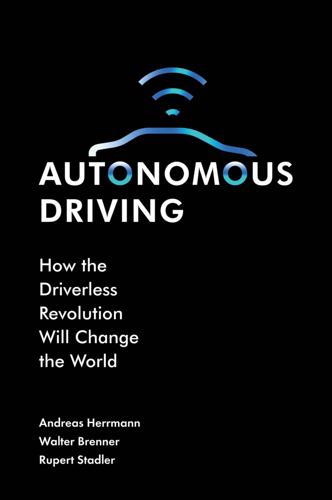
Autonomous Driving: How the Driverless Revolution Will Change the World
by
Andreas Herrmann
,
Walter Brenner
and
Rupert Stadler
Published 25 Mar 2018
And car insurance rates will likely go down too, since there will be a clear drop in the number of accidents. The costs of mobility can be reduced yet again if we take into consideration driverless taxis, autonomous bus systems or car- and ride-sharing services. Driverless taxis can transport guests with the same door-to-door convenience as traditional taxis but for a lower price, since there is no driver on-board. Car- and ride-sharing services make it possible to eliminate the fixed costs related to owning a car; instead, there will be per-hour or permile usage fees that will be far lower in total for most users. In addition, autonomous taxis, buses and shared cars could be used far more intensely and only need the downtime required for maintenance and refuelling.
…
The project focuses on app-based ride hailing as well as on pooling services with smart 318 Autonomous Driving connection to public transportation (connected commuting). The primary goal is to use the existing infrastructure in large cities and improve its performance. The objective of connected commuting is to enable travellers to combine the various modes of transportation as efficiently as possible. As such a project can only be realised with joint forces, the company regularly enters technology partnerships, which has started with an investment in the appbased ride sharing provider Gett. In December 2016, Mercedes launched the Croove app for private car rentals.
…
Ownership Access and Sharing User as Use of one’s Rental car sharing, business-to-consumer (DriveNow, driver own car Car2Go) and peer-to-peer (Croove, Getaround) User as passenger Use of a taxi Ride sharing (Uber, Lyft) and carpooling (BlaBlaCar) Source: The authors. Note: Mobility apps can link up the various modes of transportation so that the user can identify the fastest and most convenient way to get from one place to another. The Sharing Economy 343 sharing (DriveNow, car2go, Flinkster, Mobility, ReachNow, ZipCar) and with peer-to-peer car sharing (Drivy, Tamyca, Croove, CarUnity, Sharoo, Turo, Getaround), users have to drive the cars themselves. With ride sharing (Uber, Lyft, myTaxi) or carpooling (BlaBlaCar), they are driven by a chauffeur.
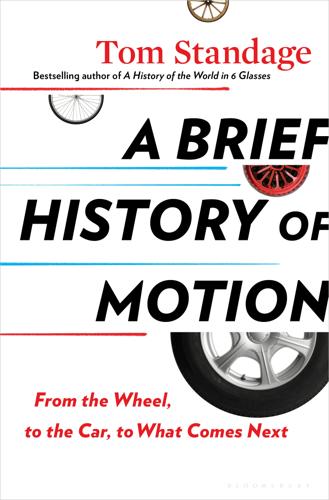
A Brief History of Motion: From the Wheel, to the Car, to What Comes Next
by
Tom Standage
Published 16 Aug 2021
See Mobility Data Specification Mesopotamia cities, design of, here trade with Egyptians, here and wheeled vehicles, here, here, here micromobility, here Middle East, and wheeled vehicles, here Milwaukee mushrooms, here mobility as a service (MaaS) [internet of motion] car ride-hailing and sharing in, here challenges faced by, here cities’ social control through, here current systems in Europe, here definition of, here improvement through experimentation, here potential abuse of data from, here replacement of cars by, here, here, here and risks of transportation monocultures, here smartphones and, here, here and transport-aggregator apps, here, here Mobility Data Specification (MDS), here Model Municipal Transport Ordinance of 1928, here Modern Times (Chaplin film), here Montgomery Bus Boycott, here Moses, Robert, here, here motel chains, car culture and, here Motorwagen (Benz car), here, here, here, here, here Musk, Elon, here, here Nader, Ralph, here Native Americans, and wheeled vehicles, here The Negro Motorist Green Book (Green), here New York City early omnibus service in, here first parkways in, here, here horsecars (trams) in, here, here horse-drawn vehicles, problems with, here as leader in establishing traffic laws, here New York to Seattle race (1909), here New York World’s Fair (1939), Futurama exhibit, here, here, here, here, here Oakland (car manufacturer), here, here oil crude, processing of, here, here oil shock of 1979, here OPEC oil embargo (1973–74), here rise of Middle East production, here U.S. supply in 1930s–40s, here oil companies, U.S., overseas operations, here Oldsmobile, here, here, here, here, here omnibus service early experiments with, here horsecars (trams) as competition for, here railroads and, here as symbol of democracy, here OPEC oil embargo of 1973–74, here Panama–Pacific Exposition (1915), here Panhard et Levassor, here, here, here Paris, Cours-la-Reine in, here, here Paris–Bordeaux race (1895), here Paris–Rouen race (1894), here, here, here contestants and cars, here Paris–Rouen journey, described, here Le Petit Journal as sponsor of, here, here qualifying round, here, here rules and judging criteria, here, here winners of, here Parks, Rosa, here path dependency, cars and, here, here, here Peugeot, here, here, here, here Pierce-Arrow, here, here Pig Stand restaurants, here, here pollution from gas cars, here, here, here, here from horse manure, here, here, here, here MaaS data as, here Pompeii, here, here, here, here, here Pope Manufacturing Co., here, here, here public transportation in cities with anti-car policies, here, here, here common use before cars, here coronavirus pandemic and, here decline with increased car use, here as ill-suited to suburbs, here, here improved, and expansion of suburbs, here ride-hailing and, here, here, here subsidized, for suburban commuters, here, here See also mobility as a service (MaaS); specific types races of early cars, here See also New York to Seattle race (1909); Paris–Bordeaux race (1895); Paris–Rouen race (1894) railroads and concern about health effects of speed, here impact on cities, here replacement of stagecoaches by, here and standardization of timekeeping, here steam engines, development of, here railroad tracks gauges, origin of, here for horsecars (trams), here mine cart tracks as predecessor of, here rare earth elements, supply issues with, here retrofitting, here ride-hailing in 21st century, here, here, here and mobility as a service (MaaS), here, here ride-sharing autonomous cars and, here benefits of, here bike sharing, here car ride-sharing services, here civil rights movement and, here electric scooter sharing, here improved, and need for cars, here, here jitneys of early 20th century, here, here and micromobility, here in mobility as a service (MaaS), here opposition to, here, here, here, here and rider data, potential misuse of, here short-term car rental services, here, here roads early cyclists’ activism for improvement of, here in Europe, 17th–18th centuries, here in France, Napoléon’s improvements to, here improvements for coaches, here, here paving or surfacing of, here, here, here, here side driven on, choice of, here, here Roads Improvement Association (Britain), here Romans, ancient and chariots, here, here driving on right side of road, here roads of, here, here, here steerable wagons, invention of, here transport for elites, here and wheeled vehicles in cities, here, here See also Pompeii Royal Standard of Ur, here, here, here runabouts (horseless carriages), here segregation and discrimination autonomous vehicles and, here cars as means of avoiding, here self-driving cars.
…
Noting the subsequent significance of the automobile in supporting civil rights campaigns, a writer in the Pittsburgh Courier declared, “The key to the movement was a key to an automobile.” FROM JITNEYS TO UBER In the early twenty-first century, the idea of offering rides to strangers in private cars has reemerged in a new guise: through ride-sharing or ride-hailing apps. The new model had its origins in America, before being widely copied elsewhere. It would not have been possible without smartphones, mobile internet access, and satellite-positioning systems that can pinpoint the positions of both riders and drivers. But it also draws on the earlier traditions of the jitney and of the shared minivan taxis found in many parts of the world.
…
See autonomous vehicles (AVs) Serpollet steam engines, here, here shared space street design, here shopping malls proliferation of, here, here as re-creation of town square, here, here replacement by online shopping, here silent policemen, here Sloan, Alfred P., here, here, here smartphones and Chinese influence, here and distracted driving, here and ease of using public transportation, here and mobility as a service (MaaS), here, here and modern alternatives to car ownership, here and new online culture, here replacement of cars as status symbols, here and ride-sharing/hailing, here, here, here and shopping and socializing without cars, here, here stagecoaches cost of travel by, here, here introduction of, here replacement by railroads, here speed increases of early 19th century, here Standard Oil Trust, here, here, here, here steam engine, development of, here steam-powered vehicles advantages and disadvantages of, here early examples of, here, here, here in Paris–Bordeaux race (1895), here, here in Paris–Rouen race (1894), here, here, here, here reasons for lack of success, here sales in late 19th and early 20th centuries, here streetcars electric, introduction of, here replacement by buses, here, here suburban commuters cross-suburb commuters, here increasing lengths of commute, here in pre-car days, here subsidized public transportation for, here, here suburbs American-style, global imitation of, here and “back to the city” movement, here and cars, reliance on, here, here and discriminatory loan practices, here expansion with improved transportation, here high carbon footprint of, here as less prevalent in Europe, here Levittown, here models for design of, here, here, here move of stores and businesses to, here ongoing growth of, here and pedestrian-involved accidents, here percentage of Americans living in, here popularity of, here positive and negative views of, here postwar housing boom in, here redesign efforts, here white migration to, here zoning laws in, here supermarkets, as product of car culture, here tax law and ethanol fuels, here, here and shopping mall boom, here, here Taylor, John, here, here teenagers car culture and, here emergence as distinctive group, here Tesla Motors founding and growth, here and materials needed for electric cars, here and self-driving cars, here, here, here Thrun, Sebastian, here, here, here touring cars, here traffic congestion autonomous vehicles and, here, here, here highways as remedy for, here, here, here horse-drawn vehicles and, here inadequacy of public transport and, here ride-hailing/sharing and, here, here, here and rising commute times, here turn from horses to cars and, here, here, here, here use of fees to reduce, here, here traffic laws and rules cities with alternative anti-car rules, here early definition in Europe, here, here early definition in U.S., here, here, here, here effect on traffic fatalities, here international standards, development of, here speed limits, early opposition to, here, here See also traffic lights; traffic signs traffic lights addition of yellow light to, here development of, here railroad signals as model for, here removal of, in shared space planning, here traffic signs early lack of consistency in, here first use of, here Milwaukee mushrooms, here removal of, in shared space planning, here silent policemen, here stop sign shape, standardization of, here transport-aggregator apps, here transportation, future of. See mobility as a service (MaaS) Trevithick, Richard, here, here tzero electric car, here Uber e-scooter sharing service, here expansion of, here and misuse of rider data, here and mobility as a service (MaaS), here, here and ride-hailing, here, here and self-driving cars, here, here size, vs. Chinese ride-sharing services, here United States and anti-jaywalking campaign, here car ownership in early 20th century, here early car races in, here early enthusiasm for cars, here side of road driven on, regularization of, here velocipedes (laufmaschine, draisine), here, here Vision Zero initiative, here, here Waymo, here, here, here wheel early construction methods, here, here, here invention of, here oldest discovered examples of, here, here, here spoked, invention of, here wheeled vehicles, early cultures choosing not to use, here domestication of horses and, here rapid spread of technology, here, here steerable front wheels, invention of, here two-wheeled carts, introduction of, here types of, here use only outside cities, here wheel gauges of, here See also horse-drawn vehicles women and bicycles, freedom gained from, here, here high-status, and carriages, here, here marketing of electric cars to, here, here Zimmer, John, here, here, here Zimride, here A NOTE ON THE AUTHOR Tom Standage is deputy editor at the Economist, and editor of its future-gazing annual, The World Ahead.
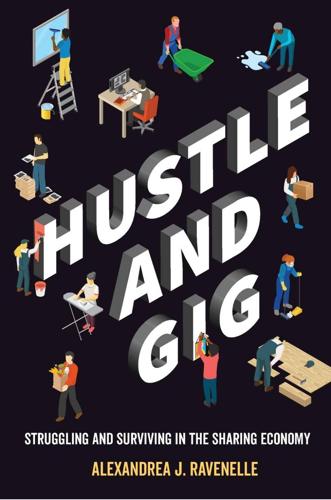
Hustle and Gig: Struggling and Surviving in the Sharing Economy
by
Alexandrea J. Ravenelle
Published 12 Mar 2019
See also Airbnb repeat business: Kitchensurfing Tonight, 58; TaskRabbit, 56, 80 research methodology: case studies, 7; critical perspective and, 7–8; Hawthorne effect, 232n24; interview matrix, 216–17; participant recruitment and methodology, 21–22, 223n85, 225n34, 228n30, 229n5; service platforms, 7 response rates, 1, 78–79, 81–82, 160 retirement funds: access to, 190; as contributory plans, 37; decreases in, 9; productivity and, 190; sharing economy and, 94, 156; temporary workers lack of, 180; use of, 61 reviews, negative, 4 review systems: customer review sites, 26; employee monitoring and, 204–5; negative reviews, 4, 13, 91, 143; transfer between sites, 20 Rideshare Guy website, 76 ride-sharing, 223n75, 233n72 risks: overview, 22; mitigation of, 170; as transaction costs, 27 risk shifts: overview, 31, 36–38; advanced planning and, 97–100; assumption of risk, 92; dangers of driving for hire, 101–4; entrepreneurship and, 36–37; financial risks, 37; financial sustainability, 31; marketing of self, 181; risk reduction, 27 Robinson, Spottswood, 119 Rockefeller family, 68–69 Rodriguez, Ydanis, 51 Rogers, Jackie Krasas, 122 Roosevelt, Franklin D., 70 Russell, Mike, 189 safety issues: overview, 113; background screening mechanisms, 113–15; pedestrian dangers, 228n32; yellow taxicab standards, 227n16 Santander Bank, 3, 73 Sapone, Marcela, 187–89 Sasso, Anthony, 58 scams: overview, 23; overpayment scams, 148–49; platforms misuse and, 141–42 Scharf, Michael, 109, 189–90, 192 schedules: client response rates and, 84; computerized scheduling systems, 180; flexibility in, 207; just-in-time scheduling, 179, 180–81; long, 5 scheduling availability, 1, 62, 87 Schierenbeck, Warren, 58–59 Schoar, Antoinette, 38 Schor, Juliet, 16, 26, 27, 56, 100, 183, 194, 224n1 Schultz, Ken, 191 Schumpeter, Joseph A., 207 scientific management, 178 Scott, Marvin, 124 secondary labor market, defined, 37 secondhand economy companies, 27, 28fig. 2.
…
For instance, in the Pew survey, 41 percent of adults had “used programs offering same-day or expedited delivery,” and 28 percent had purchased tickets from an online reseller—these are hardly concepts that are novel to the sharing economy. While 50 percent of adults have purchased used goods online, there’s a sharp drop in the percentage of respondents who have tried a ride-hailing app (15 percent), utilized an online home-sharing service (11 percent), or hired someone online for a task/errand (4 percent). The Pew study also found racial differences by service platform. Car services, such as Uber and Lyft, have been identified as helping equalize the playing field by reducing the discrimination that racial minorities may otherwise experience in hailing a cab.
…
Then in September 2014, Uber increased its uberX commission to 25 percent, up from 20 percent for new drivers in select markets, and quickly expanded to additional cities. However, the commission doesn’t include platform booking fees, which range from $1.40 to $2.15, or more, depending on market. The rate drops, commission hikes, and booking fees have led the Rideshare Guy website to point out that in some markets, on short trips that are charged a minimum fare, platforms take more than 40 percent of the price of ride.42 Adding insult to injury, in May 2017 the Wall Street Journal revealed that Uber had been mistakenly underpaying New York City drivers for more than two years by charging the platform’s 25 percent commission before deducting sales tax and Black Car Fund fees.

Blood in the Machine: The Origins of the Rebellion Against Big Tech
by
Brian Merchant
Published 25 Sep 2023
Bill de Blasio, Bernie Sanders, and New York State’s attorney general, to name a few, all spoke out in support of Smalls and called for a National Labor Relations Board investigation into the termination, which seemed retaliatory. Much like Uber and the rideshare companies, Amazon seems intent on finding out just how hard it can push its increasingly distressed workforce before those workers decide to fight back, in ways perhaps more forceful than organizing walkouts. “It’s not gonna stop me,” Smalls said. “I’m gonna continue to fight.” He was not alone. GIG WORKERS RISING Nicole Moore, Veena Dubal, Abed, Eric, Tammy, and the Drivers November 2020 “I hope Tammy didn’t fall asleep,” one ride-hail driver said on the late-night Zoom call, before being cut off by another.
…
It was late into the evening on Election Night, November 2020, and drivers who had organized to try to stop the passage of California’s Prop 22—which would keep them from being classified as employees, prevent them from obtaining benefits, and bar them from organizing—were gathered online to watch the results come in. “It’s not looking good,” said Nicole Moore, Uber driver, organizer, and president of Rideshare Drivers United, a Los Angeles–based association that advocates for ride-hail drivers. She was stating the obvious: anything short of a miracle and the proposition, backed by a record $200 million campaign by Uber, Lyft, DoorDash, and InstaCart, would pass into law. It had been a whiplash decade for the world of on-demand app work. In the early 2010s, the wages had started out relatively high, the schedules flexible, the gigs interesting, as Uber and Lyft and their ilk actively sought to attract workers to the platform.
…
They shared tips and strategies on Reddit and online message boards, undertook informal efforts like coordinating with each other to decline rides at a given location until the app’s algorithm offered them fairer prices, and formed groups like Gig Workers Rising and Rideshare Drivers United. Workers in a line of employment strictly designed to keep them isolated began to meet up. They forged solidarity, staged protests, and eventually held daylong strikes. A new, distributed kind of movement for gig workers’ rights was born. They were acting, essentially, as the cloth workers had in the ten years before they became Luddites—pushing for better conditions and for legislators to enshrine protections into law. In 2019, California lawmakers led by Lorena Gonzalez passed AB5, a law that classified rideshare drivers as employees, not independent contractors, and granted them the same legal rights that employees are entitled to.

On Bicycles: A 200-Year History of Cycling in New York City
by
Evan Friss
Published 6 May 2019
Shortly thereafter and just weeks after New York became the first major American city to cap the number of new ride-hailing licenses, Uber’s CEO announced that it would invest heavily in promoting bicycles, rather than cars, in dense urban centers. “It is very inefficient,” he said, “for a one-ton hulk of metal to take one person 10 blocks.” Sadik-Khan and the other brains behind Citi Bike already knew that.5 Yet, Citi Bike and its parent company, Motivate, have also been bought by another giant in the rideshare business, Lyft, which boasts more than a million drivers who take passengers on several hundred million rides each year.
…
How does the popularity of ridesharing affect the bicycle’s place in the city? This last question has become more urgent as rideshare vehicles have congested New York’s streets more than ever. By the summer of 2017, Uber drivers chauffeured more New Yorkers than did cabbies. But Uber, Lyft, and the other rideshare companies did not displace taxis; they encouraged millions of people to get in the backseat of a car. One 2018 study found that without rideshare, roughly 60 percent of those trips would have instead been taken by subway, bike, or walking, or not taken at all.4 To complicate matters further, rideshare has now also come to mean bikeshare.
…
For an interesting take on what e-bikes mean for the state of cycling, see Thomas Beller, “The Electric-Bike Conundrum,” New Yorker, August 18, 2017, https://www.newyorker.com/culture/culture-desk/the-electric-bike-conundrum. 4. Regina R. Clewlow and Gouri Shankar Mishra, “Disruptive Transportation: The Adoption, Utilization, and Impacts of Ride-Hailing in the United States,” Institute of Transportation Studies, University of California Davis, October 2017; “Uber, Surging Outside Manhattan, Tops Taxis in New York City,” New York Times, October 12, 2017; Bruce Schaller, “Unsustainable?: The Growth of App-Based Ride Services and Traffic, Travel and the Future of New York City,” Schaller Consulting, February 27, 2017; Bruce Schaller, “The New Automobility: Lyft, Uber and the Future of American Cities,” Schaller Consulting, July 25, 2018. 5.

Reinventing Capitalism in the Age of Big Data
by
Viktor Mayer-Schönberger
and
Thomas Ramge
Published 27 Feb 2018
the average individual wins weren’t spectacular: For a detailed description of Libratus’s winning approach, see Nikolai Yakovenko, “CMU’s Libratus Bluffs Its Way to Victory in #BrainsVsAI Poker Match,” Medium, February 1, 2017, https://medium.com/@Moscow 25/cmus-libratus-bluffs-its-way-to-victory-in-brainsvsai-poker-match-99abd31b9cd4; see also Noam Brown and Tuomas Sandholm, “Safe and Nested Endgame Solving for Imperfect-Information Games” (2016), Proceedings of the AAAI-17 Workshop on Computer Poker and Imperfect Information Games, http://www.cs.cmu.edu/~noamb/papers/17-AAAI-Refinement.pdf. get matched along multiple dimensions: “Ride-Sharing with BlaBlaCar’s New MariaDB Databases,” ComparetheCloud.net, February 19, 2016, https://www.comparethecloud.net/articles/ride-sharing-with-blablacars-new-mariadb-databases; “About Us,” BlaBlaCar.com, accessed January 27, 2017, https://www.blablacar.com/about-us. 4 million people book rides: Arun Sundararajan, “Uber and Airbnb Could Reverse America’s Decades-Long Slide into Mass Cynicism,” Quartz, June 9, 2016, https://qz.com/700859/uber-and-airbnb-will-save-us-from-our-decades-long-slide-into-mass-cynicism.
…
Whereas eBay’s original focus was on price-based auctions, BlaBlaCar’s marketplace offers participants rich data about each other, ranking details such as driver chattiness (hence its name), so users can easily search and identify the best matches for them, and downplaying the importance of price (ride-sharers can select price only within a limited range). BlaBlaCar’s ride-sharing market isn’t alone in using rich data. From Internet travel site Kayak to online investment company SigFig, to digital labor platform Upwork, more and more markets that use data to help participants find better matches are gaining traction and attracting attention.
…
He is easy to recognize, thanks to his bushy mustache and his sense of humor. Confronted with potential disruption by new competitors such as Tesla and its Chinese counterparts, facing game-changing advances in technology, such as self-driving cars, and finding himself up against novel business models, such as ride-hailing services, the Daimler head ordered his organization to shift into start-up mode. Copying the cellular organizational structure of successful Internet titans such as Google, Zetsche explained, would mean that Daimler will “supplement the hierarchical-management pyramid with cross-functional and interdisciplinary groups and eventually replace them.”

Stakeholder Capitalism: A Global Economy That Works for Progress, People and Planet
by
Klaus Schwab
Published 7 Jan 2021
In some regions, this tabula rasa has had positive outcomes. In Indonesia, for example, where my colleague drove around in scooters and cars of the ride-hailing companies Grab and Go-Jek on a country visit, drivers were mostly enthusiastic about the opportunities gig work provided to them. Many had previously been agricultural workers or had worked odd jobs in the city. Not having a traditional employment contract wasn't a barrier or inconvenience; it was what they were used to. In fact, the technology ride-sharing companies used gave them more transparency and choice, not less, in terms of their work and pay. And even some drivers who had previously worked in factories expressed their satisfaction about switching to be a gig economy worker.
…
See China (People's Republic) PepsiCo (US), 250 Persson, Mayson, 149 Peru, 64 Philippines economic recession (1997) in, 98 post-war economy of, 6 predicted economic growth (2020–2021) in, 65–66 tech unicorns of, 66, 67fig Philippon, Thomas, 140, 142 Philips (The Netherlands), 215, 250 Physical capital definition of, 235 New Zealand's Living Standards Framework on, 235fig–236 Pichai, Sundar, 69 Piketty, Thomas, 38 Ping an Insurance, 60 PISA (Programme for International Student Assessment) ranking, 230 Pitchfork protests (2013) [Italy], 86 Pittsburgh (Pennsylvania), 159 Planet at the center of the global stakeholder model, 180fig at the center of the simplified stakeholder model, 178fig–179 a post-COVID world and sustainable economy for the, 251 as the responsibility of every stakeholder, 176 as Stakeholder Capitalism Metrics pillar, 214 See also Environmental issues; People; Stakeholder model Platform on Biodiversity and Ecosystems Services (IPBES) report [2019], 51 Poland Solidarity movement in, 83 stakeholder approaches to major challenges in, 195 Political divisions checks and balances and robust institutions to heal, 185, 193–198 erosion of the political center creating, 80–90 need to overcome our, 194 See also Democracy Political parties erosion of political center of, 80–90 existential crisis facing todays, 188 See also specific party Pollution Asian economic growth and, 72 CO2 emissions, 160, 161, 165–166, 182, 200, 202, 203, 207 impact on natural ecosystems by, 50 microplastics, 50 as negative impact of globalization, 107 WHO guidelines on air, 50 WHO on unsafe air (2019) due to, 72 See also Climate change; Global warming; Greenhouse gases Pony Ma, 60 Population Baby boom (1950s and 1960s), 8, 9, 105, 135, 154, 160 demographic change megatrend, 160–161 GFN of growing global, 48–49 increasing rates of, 48–49 megacities, 159 urbanization megatrend, 159–160 Populism erosion of the political center and rise of, 80–90 increasing nationalism and, 84 Porsche (German manufacturer), 9 Preindustrial Revolution, 45fig, 129–130 Principles of governance description of, 214 as Stakeholder Capitalism Metrics pillar, 214 Productivity growth declining, 33–34 “decoupling” of wages from, 34 during golden age of capitalism, 33–34 Proposition C referendum (San Francisco), 212–213 Prosperity description of the elements of, 214 Legatum Prosperity Index (2019) ranking, 231 as Stakeholder Capitalism Metrics pillar, 214 stakeholder government role in enabling equitable, 178–179, 225 success of New Zealand and Singapore in creating, 249 See also Environment, social, and governance (ESG) objectives; Income equality; People Puar, Puty, 95, 96, 107, 110 Public debt COVID-19 pandemic and increasing, 19, 29–30 increasing rates of predicted, 28 population pyramid and repayment of, 30 Public health care spending dramatic increase (2000–2016) of, 32 in OECD countries, 32 Purchasing power parity (PPP), Financial Times reporting on Asian GDP (2020), 70–71 PwC (US), 126, 215, 250 Q Qambrani, Tanzeela, 245–246 Qing Imperial dynasty (China), 56 QQ social media app (China), 60 Qualcomm, 141 Quebec (Canada), 167 R Racism against Sheedi population in Pakistan, 245–246 Black Lives Matter protests against, 186, 243, 246, 250 history of US school segregation and, 226 redlining practice of housing discrimination, 226 Rapin, Philippe, 163–164 Ravensburger Pact (1997), 17 Ravensburger (Germany), 5, 7, 8, 9, 19, 251 Reagan, Ronald, 77, 122 Redlining practice, 226 Reed, John, 71 “Reefer ships” (1870s), 104, 110 Reform and Opening Up policy (1979) [China], 15, 18, 36, 57, 59, 72 Reformation, 130 Reich, Robert, 122 Reliance Industries (India), 68 Renaissance, 130 Ren Zhenfei, 60 Renzi, Prime Minister (Germany), 81 Republic of Korea. See South Korea Reuters, 246 Rheinreise (“Journey on the Rhine”) board game, 8 Ride-hailing companies, 66, 97, 98, 187, 237, 238, 241 Rideshare Drivers United (California), 187 Robber barons (19th century), 132–134 Robust institutions, 185, 193–198 Rockefeller Center, 132 Rockefeller, John D., 23, 132, 134 Rodrik, Dani, 109–110, 112 Rogoff, Kenneth, 127 Romania, 41 Romei, Valentina, 70–71 Rome–China trade routes, 99 Rushkoff, Douglas, 210 Russia, 64.
…
ASEAN is arguably the most successful regional economic community after the European Union. Regional trade is rising and integration increasing. And it also created several homegrown tech unicorns, a term to describe privately held companies with a valuation of $1 billion or more. Singapore-based ride hailing app Grab is the most famous, but Indonesia's Go-Jek, Tokopedia, and Traveloka, several Singaporean start-ups, Vietnam's VNG, and the Philippines’ Revolution Precrafted also achieved that hallowed status (at least before the COVID crisis), according to consulting firm Bain & Company25 (Figure 3.2).

Stakeholder Capitalism: A Global Economy That Works for Progress, People and Planet
by
Klaus Schwab
and
Peter Vanham
Published 27 Jan 2021
In some regions, this tabula rasa has had positive outcomes. In Indonesia, for example, where my colleague drove around in scooters and cars of the ride-hailing companies Grab and Go-Jek on a country visit, drivers were mostly enthusiastic about the opportunities gig work provided to them. Many had previously been agricultural workers or had worked odd jobs in the city. Not having a traditional employment contract wasn't a barrier or inconvenience; it was what they were used to. In fact, the technology ride-sharing companies used gave them more transparency and choice, not less, in terms of their work and pay. And even some drivers who had previously worked in factories expressed their satisfaction about switching to be a gig economy worker.
…
See China (People's Republic) PepsiCo (US), 250 Persson, Mayson, 149 Peru, 64 Philippines economic recession (1997) in, 98 post-war economy of, 6 predicted economic growth (2020–2021) in, 65–66 tech unicorns of, 66, 67fig Philippon, Thomas, 140, 142 Philips (The Netherlands), 215, 250 Physical capital definition of, 235 New Zealand's Living Standards Framework on, 235fig–236 Pichai, Sundar, 69 Piketty, Thomas, 38 Ping an Insurance, 60 PISA (Programme for International Student Assessment) ranking, 230 Pitchfork protests (2013) [Italy], 86 Pittsburgh (Pennsylvania), 159 Planet at the center of the global stakeholder model, 180fig at the center of the simplified stakeholder model, 178fig–179 a post-COVID world and sustainable economy for the, 251 as the responsibility of every stakeholder, 176 as Stakeholder Capitalism Metrics pillar, 214 See also Environmental issues; People; Stakeholder model Platform on Biodiversity and Ecosystems Services (IPBES) report [2019], 51 Poland Solidarity movement in, 83 stakeholder approaches to major challenges in, 195 Political divisions checks and balances and robust institutions to heal, 185, 193–198 erosion of the political center creating, 80–90 need to overcome our, 194 See also Democracy Political parties erosion of political center of, 80–90 existential crisis facing todays, 188 See also specific party Pollution Asian economic growth and, 72 CO2 emissions, 160, 161, 165–166, 182, 200, 202, 203, 207 impact on natural ecosystems by, 50 microplastics, 50 as negative impact of globalization, 107 WHO guidelines on air, 50 WHO on unsafe air (2019) due to, 72 See also Climate change; Global warming; Greenhouse gases Pony Ma, 60 Population Baby boom (1950s and 1960s), 8, 9, 105, 135, 154, 160 demographic change megatrend, 160–161 GFN of growing global, 48–49 increasing rates of, 48–49 megacities, 159 urbanization megatrend, 159–160 Populism erosion of the political center and rise of, 80–90 increasing nationalism and, 84 Porsche (German manufacturer), 9 Preindustrial Revolution, 45fig, 129–130 Principles of governance description of, 214 as Stakeholder Capitalism Metrics pillar, 214 Productivity growth declining, 33–34 “decoupling” of wages from, 34 during golden age of capitalism, 33–34 Proposition C referendum (San Francisco), 212–213 Prosperity description of the elements of, 214 Legatum Prosperity Index (2019) ranking, 231 as Stakeholder Capitalism Metrics pillar, 214 stakeholder government role in enabling equitable, 178–179, 225 success of New Zealand and Singapore in creating, 249 See also Environment, social, and governance (ESG) objectives; Income equality; People Puar, Puty, 95, 96, 107, 110 Public debt COVID-19 pandemic and increasing, 19, 29–30 increasing rates of predicted, 28 population pyramid and repayment of, 30 Public health care spending dramatic increase (2000–2016) of, 32 in OECD countries, 32 Purchasing power parity (PPP), Financial Times reporting on Asian GDP (2020), 70–71 PwC (US), 126, 215, 250 Q Qambrani, Tanzeela, 245–246 Qing Imperial dynasty (China), 56 QQ social media app (China), 60 Qualcomm, 141 Quebec (Canada), 167 R Racism against Sheedi population in Pakistan, 245–246 Black Lives Matter protests against, 186, 243, 246, 250 history of US school segregation and, 226 redlining practice of housing discrimination, 226 Rapin, Philippe, 163–164 Ravensburger Pact (1997), 17 Ravensburger (Germany), 5, 7, 8, 9, 19, 251 Reagan, Ronald, 77, 122 Redlining practice, 226 Reed, John, 71 “Reefer ships” (1870s), 104, 110 Reform and Opening Up policy (1979) [China], 15, 18, 36, 57, 59, 72 Reformation, 130 Reich, Robert, 122 Reliance Industries (India), 68 Renaissance, 130 Ren Zhenfei, 60 Renzi, Prime Minister (Germany), 81 Republic of Korea. See South Korea Reuters, 246 Rheinreise (“Journey on the Rhine”) board game, 8 Ride-hailing companies, 66, 97, 98, 187, 237, 238, 241 Rideshare Drivers United (California), 187 Robber barons (19th century), 132–134 Robust institutions, 185, 193–198 Rockefeller Center, 132 Rockefeller, John D., 23, 132, 134 Rodrik, Dani, 109–110, 112 Rogoff, Kenneth, 127 Romania, 41 Romei, Valentina, 70–71 Rome–China trade routes, 99 Rushkoff, Douglas, 210 Russia, 64.
…
ASEAN is arguably the most successful regional economic community after the European Union. Regional trade is rising and integration increasing. And it also created several homegrown tech unicorns, a term to describe privately held companies with a valuation of $1 billion or more. Singapore-based ride hailing app Grab is the most famous, but Indonesia's Go-Jek, Tokopedia, and Traveloka, several Singaporean start-ups, Vietnam's VNG, and the Philippines’ Revolution Precrafted also achieved that hallowed status (at least before the COVID crisis), according to consulting firm Bain & Company25 (Figure 3.2).
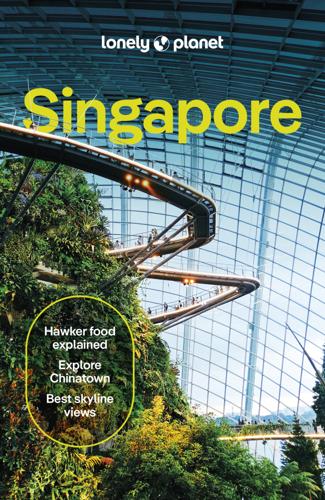
Lonely Planet Singapore
by
Lonely Planet
Published 14 May 2024
Renting a car at the ferry terminal is possible, but driving in Batam can be hectic if you're unfamiliar with the roads. Consider hiring a car with driver instead – it's usually cheaper and certainly more convenient than taking taxis everywhere. Most drivers use WhatsApp to communicate with their customers. Rideshare apps such as Grab and Gojek can also be used, but tensions with the local taxi industry mean there are limited rideshare pickup points within the city area. Gear Up for Adventure Affordable family activities Batam is a haven for lovers of watersports who are on a budget. Popular spots include Harris Resort and Batam View Beach Resorts for jetskiing, banana boating and parasailing and Batam WakePark for cable-tow wakeboarding.
…
Raise your hand to flag down the driver. Taxi & Grab Many seasoned drivers retired during the pandemic, and surge-based pricing has been introduced, so taxis in Singapore aren’t quite as cheap as they were before. If you travel outside peak times, and never in a rainstorm, it’s still reasonably affordable to ride. Hailed taxis are metered, or you can lock in a price beforehand via taxi apps CDG Zig or Grab (Singapore’s Uber). Dr David Sing/shutterstock © Bike Sharing A number of bike-sharing companies operate in Singapore. They’re relatively easy to use: download the app, set up an account, scan the bike’s QR code and get pedalling.
…
A quick ferry ride away, Batam is an easy way to spend a relaxing day out without blowing your travel budget. There’s a galaxy of affordable outdoor activities and water sports; foodies can indulge in a seafood feast by the shore or hang out in cute cafes; or you can just spend a few hours shopping and heading to the spa. Taxis or a rental car are the easiest way to get around quickly, and rideshare apps such as Grab and Gojek are also convenient, though do your research as they're limited to specific pickup points. Cross the Barelang Bridge An icon of Batam There aren’t any true must-see sights on Batam, but the Barelang Bridge can be considered one of its icons. It's actually made up of six bridges and is named for the three largest islands that it connects: Batam, Rempang and Galang.
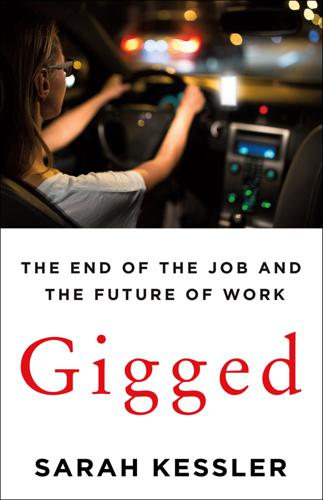
Gigged: The End of the Job and the Future of Work
by
Sarah Kessler
Published 11 Jun 2018
” * * * By the summer of 2017, Abe had put all things Uber aside. After the strikes and his last-ditch attempt to sell his silence to Uber had failed, he decided to start his own ride-hailing app called A-Ryde. He spent money promoting the idea at a conference and filming a commercial (“Woaaahh, let’s not ruin this night with surge pricing,” a hip young man tells a friend who presumably is about to use a different ride-hailing app). When Abe couldn’t raise enough funding to launch the app, he tried to sell his house to finance it (given that a lien had been placed on it, that didn’t work). Since then, he’d realized that the thought of competing with Uber, a startup with billions of dollars in funding, had always been a fantasy.
…
See also Davenport, Terrence; Foster, Gary; Green, Shakira; Logan, Kristen Samasource Schneider, Nathan Scholz, Trebor Schwartz, Emma (Managed by Q employee) Schwarzenegger, Arnold Screen Actors Guild self-driving cars Shea, Katie Shieber, Jon Shyp (shipping service) sick days Silberman, Six Snapchat So Lo Mo (social, local, mobile) Social Security SpaceX Sprig (restaurant delivery service) Starbucks Stern, Andy Stocksy (stock photo cooperative) subcontractors Arise and earnings Managed by Q and Silicon Valley and Sundararajan, Arun Sweet, Julie SXSW (South by Southwest) Taft-Hartley Act Take Wonolo (staffing agency) Target TaskRabbit (odd job marketplace) taxi industry EU regulation and New York Taxi Workers Alliance tips and Uber and US statistics See also Lyft; ride-hailing services; Uber TechCrunch (blog) TechCrunch Disrupt temp workers and agencies early history of earnings freelancers versus injury rate Kelly Services (“Kelly Girls”) Manpower permanent employees versus Silicon Valley and “temp worker” as a category US statistics work satisfaction Teran, Dan Tischen (labor marketplace) Ton, Zeynep Trader Joe’s trucking industry Trudeau, Kevin Trump, Donald Try Caviar (food delivery service) Turker Nation (online forum) Turkopticon Twitch (live streaming video platform) Twitter Uber (ride-hailing service) 180 days of change affiliate marketing program driver-led activism and protests Drivers’ Guild and FTC charges of exaggerated earnings funding growth of guaranteed fares history of independent contractor model lawsuits and legal issues “No shifts.
…
Workers could use them to simultaneously supplement their income from fares and position themselves to others as small business owners, entrepreneurs, and members of the tech class. For a nominal cost, Uber had created a remarkably enthusiastic salesforce. That’s how Mamdooh Husein became an Uber driver. A 28-year-old waiter in Kansas City whose mother and everyone else calls “Abe,” he was initially skeptical when one of his coworkers told him about the ride-hailing app. Abe had lived in Kansas City for most of his life, and he had never once had an occasion to take a cab. He couldn’t see how what was essentially a taxi business could work in the city, or how his friend could make the $500 per weekend in profits that he’d reported. He wanted a demonstration.

Exponential: How Accelerating Technology Is Leaving Us Behind and What to Do About It
by
Azeem Azhar
Published 6 Sep 2021
They were questioning the core of what makes the gig economy giants, especially ride-hailing companies, successful: algorithmic management. ‘We are people, not Uber’s tools,’ they yelled. These people and millions of other gig workers are managed by computers. Their work is scrutinised through a stream of quantitative performance assessments. Rideshare drivers may only have 10–20 seconds to respond to an offered ride, without knowing in advance where they’re expected to go or how much they can expect to make. If they refuse too many rides in a row, they can be kicked off the platform.71 And this is not limited to ride-sharing. The warehouse workers who put together your grocery delivery are commanded by scanners, which tell them how much time they have to collect each item.72 None of Taylor’s lackadaisical soldiering here.
…
West, Scale: The Universal Laws of Growth, Innovation, Sustainability, and the Pace of Life in Organisms, Cities, Economies, and Companies (New York: Penguin Press, 2017), pp. 387–410. 3 Myoung Cha and Flora Yu, ‘Pharma’s First-to-Market Advantage’, McKinsey & Company, 1 September 2014 <https://www.mckinsey.com/industries/pharmaceuticals-and-medical-products/our-insights/pharmas-first-to-market-advantage> [accessed 23 September 2020]. 4 ‘Car Registrations’, SMMT <https://www.smmt.co.uk/vehicle-data/car-registrations/> [accessed 23 September 2020]. 5 ‘TV Manufacturers: LCD TV Market Share Worldwide 2018’, Statista <https://www.statista.com/statistics/267095/global-market-share-of-lcd-tv-manufacturers/> [accessed 23 September 2020]. 6 ‘Standard Ogre’, The Economist, 23 December 1999 <https://www.economist.com/business/1999/12/23/standard-ogre> [accessed 23 September 2020]. 7 ‘Teen IPhone Ownership Hits an All-Time High in Long-Running Survey’, MacRumors, 8 April 2020 <https://www.macrumors.com/2020/04/08/teen-iphone-ownership-hits-all-time-high/> [accessed 21 April 2021]. 8 Keach Hagey and Suzanne Vranica, ‘How Covid-19 Supercharged the Advertising “Triopoly” of Google, Facebook and Amazon’, Wall Street Journal, 19 March 2021 <https://www.wsj.com/articles/how-covid-19-supercharged-the-advertising-triopoly-of-google-facebook-and-amazon-11616163738> [accessed 13 April 2021]. 9 Liyin Yeo, ‘The U.S. Rideshare Industry: Uber vs. Lyft’, Bloomberg Second Measure, 2020 <https://secondmeasure.com/datapoints/rideshare-industry-overview/> [accessed 23 September 2020]. 10 John Van Reenen and Christina Patterson, ‘Research: The Rise of Superstar Firms Has Been Better for Investors than for Employees’, Harvard Business Review, 11 May 2017 <https://hbr.org/2017/05/research-the-rise-of-superstar-firms-has-been-better-for-investors-than-for-employees> [accessed 2 September 2020]. 11 James Manyika et al., “Superstars”: The Dynamics of Firms, Sectors, and Cities Leading the Global Economy (McKinsey & Company, 24 October 2018) <https://www.mckinsey.com/featured-insights/innovation-and-growth/superstars-the-dynamics-of-firms-sectors-and-cities-leading-the-global-economy> [accessed 19 December 2020]. 12 David Autor et al., ‘The Fall of the Labor Share and the Rise of Superstar Firms’, The Quarterly Journal of Economics, 135(2), May 2020, pp. 645–709 <https://doi.org/10.1093/qje/qjaa004>. 13 ‘Companies – The Rise of the Superstars’, The Economist, 15 September 2016 <https://www.economist.com/special-report/2016/09/15/the-rise-of-the-superstars> [accessed 2 September 2020]. 14 ‘What Drives Productivity Growth?’
…
, Wall Street Journal, 1 April 2019 <https://www.wsj.com/articles/will-ai-destroy-more-jobs-than-it-creates-over-the-next-decade-11554156299> [accessed 11 January 2021]. 45 ‘Company Information’, Uber Newsroom Pakistan <https://www.uber.com/en-PK/newsroom/company-info/> [accessed 21 September 2020]. 46 ‘Mechanical Turk: Research in the Crowdsourcing Age’, Pew Research Center: Internet & Technology, 11 July 2016 <https://www.pewresearch.org/internet/2016/07/11/research-in-the-crowdsourcing-age-a-case-study/> [accessed 28 September 2020]. 47 Jeff Howe, ‘The Rise of Crowdsourcing’, Wired, 1 June 2006 <https://www.wired.com/2006/06/crowds/> [accessed 28 September 2020]. 48 Nicole Lyn Pesce, ‘This Chart Shows How Uber Rides Sped Past NYC Yellow Cabs in Just Six Years’, MarketWatch, 9 August 2019 <https://www.marketwatch.com/story/this-chart-shows-how-uber-rides-sped-past-nyc-yellow-cabs-in-just-six-years-2019-08-09> [accessed 7 January 2021]. 49 Kelle Howson et al., ‘Platform Workers, the Future of Work and Britain’s Election’, Media@LSE, 11 December 2019 <https://blogs.lse.ac.uk/medialse/2019/12/11/platform-workers-the-future-of-work-and-britains-election/> [accessed 7 January 2021]. 50 James Manyika et al., Connecting Talent with Opportunity in the Digital Age (McKinsey & Company, 1 June 2015) <https://www.mckinsey.com/featured-insights/employment-and-growth/connecting-talent-with-opportunity-in-the-digital-age> [accessed 6 October 2020]. 51 Neil Munshi, ‘Tech Start-Ups Drive Change for Nigerian Truckers’, Financial Times, 26 August 2019 <https://www.ft.com/content/c6a3d1f2-c27d-11e9-a8e9-296ca66511c9> [accessed 21 September 2020]. 52 ‘Upwork Reports Fourth Quarter and Full Year 2020 Financial Results’, Upwork Inc., 23 February 2021 <https://investors.upwork.com/news-releases/news-release-details/upwork-reports-fourth-quarter-and-full-year-2020-financial> [accessed 21 April 2021]. 53 Lijin Yeo, ‘The U.S. Rideshare Industry: Uber vs. Lyft’, Bloomberg Second Measure, 2020 <https://secondmeasure.com/datapoints/rideshare-industry-overview/> [accessed 23 September 2020]. 54 ‘Gig Economy Research’, Gov.uk, 7 February 2018 <https://www.gov.uk/government/publications/gig-economy-research> [accessed 21 September 2020]. 55 Ravi Agrawal, ‘The Hidden Benefits of Uber’, Foreign Policy, 16 July 2018 <https://foreignpolicy.com/2018/07/16/why-india-gives-uber-5-stars-gig-economy-jobs/> [accessed 21 September 2020]. 56 Department for Business, Energy & Industrial Strategy, ‘Gig Economy Research’, Gov.uk, 7 February 2018 <https://www.gov.uk/government/publications/gig-economy-research> [accessed 21 September 2020]. 57 Directorate General for Internal Policies, The Social Protection of Workers in the Platform Economy, Study for the EMPL Committee, IP/A/EMPL/2016-11 (European Parliament, 2017). 58 Nicole Karlis, ‘DoorDash Drivers Make an Average of $1.45 an Hour, Analysis Finds’, Salon, 19 January 2020 <https://www.salon.com/2020/01/19/doordash-drivers-make-an-average-of-145-an-hour-analysis-finds/> [accessed 27 March 2021]. 59 Kate Conger, ‘Uber and Lyft Drivers in California Will Remain Contractors’, New York Times, 4 November 2020 <https://www.nytimes.com/2020/11/04/technology/california-uber-lyft-prop-22.html> [accessed 12 January 2021]. 60 Mary-Ann Russon, ‘Uber Drivers Are Workers Not Self-Employed, Supreme Court Rules’, BBC News, 19 February 2021 <https://www.bbc.com/news/business-56123668> [accessed 29 March 2021]. 61 ‘Judgement: Uber BV and Others (Appellants) v Aslam and Others (Respondents)’, 19 February 2021 <https://www.supremecourt.uk/cases/docs/uksc-2019-0029-judgment.pdf> [accessed 19 March 2021]. 62 ‘Frederick Winslow Taylor: Father of Scientific Management Thinker’, The British Library <https://www.bl.uk/people/frederick-winslow-taylor> [accessed 29 March 2021]. 63 Nikil Saval, Cubed: A Secret History of the Workplace (New York: Anchor Books, 2015), p. 42. 64 Saval, Cubed, p. 56. 65 Alex Rosenblat, Tamara Kneese and danah boyd, Workplace Surveillance (Data & Society Research Institute, 4 January 2017) <https://doi.org/10.31219/osf.io/7ryk4>. 66 ‘In March 2017, the Japanese Government Formulated the Work Style Reform Action Plan.’, Social Innovation, September 2017 <https://social-innovation.hitachi/en/case_studies/ai_happiness/> [accessed 6 October 2020]. 67 Alex Hern, ‘Microsoft Productivity Score Feature Criticised as Workplace Surveillance’, The Guardian, 26 November 2020 <http://www.theguardian.com/technology/2020/nov/26/microsoft-productivity-score-feature-criticised-workplace-surveillance> [accessed 1 April 2021]. 68 Stephen Chen, ‘Chinese Surveillance Programme Mines Data from Workers’ Brains’, South China Morning Post, 28 April 2018 <https://www.scmp.com/news/china/society/article/2143899/forget-facebook-leak-china-mining-data-directly-workers-brains> [accessed 6 October 2020]. 69 Robert Booth, ‘Unilever Saves on Recruiters by Using AI to Assess Job Interviews’, The Guardian, 25 October 2019 <http://www.theguardian.com/technology/2019/oct/25/unilever-saves-on-recruiters-by-using-ai-to-assess-job-interviews> [accessed 6 October 2020]. 70 Chartered Institute of Personnel and Development, ‘Workplace Technology: The Employee Experience’ (CIPD: July 2020) <https://www.cipd.co.uk/Images/workplace-technology-1_tcm18-80853.pdf> [accessed 19 May 2021]. 71 Sarah O’Connor, ‘When Your Boss Is an Algorithm’, Financial Times, 7 September 2016 <https://www.ft.com/content/88fdc58e-754f-11e6-b60a-de4532d5ea35> [accessed 3 August 2020]. 72 Tom Barratt et al., ‘Algorithms Workers Can’t See Are Increasingly Pulling the Management Strings’, Management Today, 25 August 2020 <http://www.managementtoday.co.uk/article/1692636?

The Future Is Faster Than You Think: How Converging Technologies Are Transforming Business, Industries, and Our Lives
by
Peter H. Diamandis
and
Steven Kotler
Published 28 Jan 2020
“We’ve come to accept extreme congestion as part of our lives,” said Holden.1 “In the U.S., we have the honor of being home to ten of the world’s twenty-five most congested cities, costing us approximately $300 billion in lost income and productivity. Uber’s mission is to solve urban mobility.… Our goal is to introduce an entirely new form of transportation to the world, namely urban aviation, or what I prefer to call ‘aerial ridesharing.’ ” Aerial ridesharing might sound like sci-fi cliché, but Holden had a solid track record of disruptive innovation. In the late 1990s, he followed Jeff Bezos from New York to Seattle to become one of the earliest employees at Amazon. There, he was put in charge of implementing the then zany idea of free two-day shipping for a flat annual membership fee.
…
Finally, while the company has started drilling with conventional machines, Musk has borrowed a page from Tesla’s playbook and is now designing electric boring machines that are three times as powerful as the traditional version. It’s also worth noting that all of the innovations discussed in this chapter will work in concert. In the minutes before a Hyperloop pod arrives at a Boring Company–drilled station, the AI behind Uber’s aerial ridesharing service and the AI behind Waymo’s driverless ridesharing fleet will dispatch a swarm of vehicles to that station in order to take passengers on the next leg of their trip. And if that’s not fast enough for you, sometime soon there might just be another option available. Rockets: LA to Sydney in Thirty Minutes As if autonomous cars, flying cars, and high-speed trains weren’t enough, in September of 2017, speaking at the International Astronautical Congress in Adelaide, Australia, Musk promised that for the price of an economy airline ticket, his rockets will fly you “anywhere on Earth in under an hour.”
…
Because ANA knows this is one of the technologies likely to disrupt the airline industry—their industry—and they want to be ready. To put this in different terms, individual car ownership enjoyed over a century of ascendency. The first real threat it faced, today’s ridesharing model, only showed up in the last decade. But that ridesharing model won’t even get ten years to dominate. Already, it’s on the brink of autonomous car displacement, which is on the brink of flying car disruption, which is on the brink of Hyperloop and rockets-to-anywhere decimation. Plus, avatars. The most important part: All of this change will happen over the next ten years.

Virtual Competition
by
Ariel Ezrachi
and
Maurice E. Stucke
Published 30 Nov 2016
Douglas Macmillan and Telis Demos, “Uber Valued at More than $50 Billion,” Wall Street Journal (London), July 31, 2015, http://www.wsj.com /articles/uber-valued-at-more-than-50-billion-1438367457. See, for example, Mark Harris, “Uber: Why the World’s Biggest RideSharing Company Has No Drivers,” The Guardian, November 16, 2015, http://www.theguardian.com/technology/2015/nov/16/uber-worlds-biggest 274 20. 21. 22. 23. 24. 25. 26. Notes to Pages 50–51 -ride-sharing-company-no-drivers; Izabella Kaminska, “If and When Uber Drivers Unionise . . . ,” Financial Times, January 12, 2016, http://ftalphaville .ft.com/2016/01/12/2149878/if-and-when-uber-drivers-unionise/ (on the possibility of Uber drivers receiving low wages and few employment rights); Tim Bradshaw and Leslie Hook, 2015.
…
But Uber also sees the long shadow of the super-platforms, and realizes that it will likely be at a significant competitive disadvantage over the long run. Uber must now develop its own driverless car technology (or partner with a car manufacturer that does). It also lacks the super-platforms’ mapping technology. So in early 2015, when Bloomberg reported that Google was preparing its own ride-hailing ser vice,33 Uber responded. In 2015, it acquired mapping technology, including Microsoft’s Bing Maps street-mapping technology and a hundred of its workers.34 Uber has also hired around fift y researchers from Carnegie Mellon to develop driverless cars.35 Google’s rival, Microsoft, is also an investor in Uber.36 So Google is now Uber’s friend, investor, and enemy.
…
One study of Uber and Lyft drivers found that they “distanced themselves from one another by checking other drivers’ locations on the map so that they did not compete with each other for passenger requests. When drivers desired a break but did not want to turn off their driver applications to benefit from an hourly payment promotion, they parked in between the other ridesharing cars in order not to get any requests.”27 So, as more people use Uber in Nashville, more drivers will likewise gravitate to Uber’s platform, which further reduces users’ wait time, increasing Uber’s appeal. Unless passengers switch en masse to another platform, Uber’s algorithms will 52 The Collusion Scenarios have greater market power to set the price (including surge pricing) and increase profits.

How to Fix the Future: Staying Human in the Digital Age
by
Andrew Keen
Published 1 Mar 2018
And governments all over the world are working to shape a peer-to-peer economy that will protect both workers and consumers. In 2015, for example, the Seattle City Council voted unanimously to approve a bill that allows drivers for ride-hailing apps to form unions.44 In 2016 a London employment tribunal ruled that these drivers are indeed entitled to workers’ rights, including the national minimum wage and paid holidays.45 In 2016 Uber paid $25 million to settle a lawsuit filed by the cities of Los Angeles and San Francisco claiming that the rideshare company misled customers with a “false sense of security” about its checks on drivers.46 In Austin, Texas, voters rejected Uber’s and Lyft’s proposal to self-regulate their services.
…
To him, the centralized services managing data are, ultimately, flawed businesses. He explains that things will become broken when Amazon or Uber increases what he calls “its take.” So, in Uber’s case, for example, the change will eventually be triggered by its drivers, who are getting more and more squeezed by the ridesharing company’s increasingly onerous terms. Eventually, presumably, they will be pushed into participating in their own decentralized marketplaces that will compete with Uber. One possible platform for this type of radically new business is a German start-up called Slock.it that is building a blockchain-based “Universal Sharing Networks” which empowers people to bypass central silos like Uber and Airbnb and directly transform their cars into taxis or their houses into hotels.2 “But when?”
…
As I write this, in late June 2017, the tech community is once again embroiled in a series of scandals over its disgraceful treatment of women, with two high-profile investors, Dave McClure of 500 Startups and Justin Caldbeck of Binary Capital, forced to step down because of their persistent and well-documented attempts to sexually assault female entrepreneurs. Earlier this month, Travis Kalanick, the cofounder and CEO of Uber, was forced to resign because of a long history of ethical controversies at the ridesharing company in everything from rampant sexual harassment of its female engineers to threatening tech journalists to spying on its customers. “What is most interesting is that Silicon Valley remains in a cognitive bubble, reluctant to engage with legitimate public worries over monopoly, privacy and tech related job disruption, not to mention its own culture,” the Financial Times’ Rana Foroohar wrote in July 2017 in response to this latest round of Silicon Valley scandals.6 So, yes, it’s certainly not bad news that three of the Four Horsemen of the Apocalypse—Facebook, Amazon, and Google—have joined a self-policing alliance of Big Tech companies committed to “ethics, fairness, and inclusivity” in the development of AI products.

The Truth Machine: The Blockchain and the Future of Everything
by
Paul Vigna
and
Michael J. Casey
Published 27 Feb 2018
In James Graham’s engaging play Privacy, which featured Harry Potter star Daniel Radcliffe in the lead role for its New York premier (and included a cameo video feed from Snowden himself), audience members got a disturbing view of how the data on their phones accumulates and can be used against them, as those who gave permission had their trips with ride-hailing service Uber displayed on a giant screen. If revelations about the tracking of our digital footprints breed angst in wealthy countries, people in the developing world face the exact opposite problem: too little data is available about their activities. They can’t prove “who they are.” It’s made more difficult by the fact that 2.4 billion people do not have an official form of ID, either, according to the World Bank.
…
What blockchain technology says is, “Why stop at Uber?” Why do we even need this particular company, which takes 25 percent from each ride and has a reputation for abusing its “God’s View” knowledge of passengers’ rides? How about a totally decentralized solution, such as the Tel Aviv–based, blockchain-powered ride-sharing application Commuterz? In that case no one owns the platform, which like Bitcoin is just based on an open-source software protocol that anyone can download. There’s no Commuterz, Inc. taking 25 percent. Instead, users own and trade a native digital currency system that incentivizes them to share rides to reduce traffic congestion and lower the cost of transportation for all.
…
MIT Media Lab MIT Media Lab’s Digital Currency Initiative Mizrahi, Alex MME Modi, Narendra Monax Monero monetary and banking systems central bank fiat digital currency and community connections and digital counterfeiting mobile money systems money laundering See also cryptocurrency; financial sector Moore’s law Mooti Morehead, Dan Mozilla M-Pesa Nakamoto, Satoshi (pseudonymous Bitcoin creator) Nasdaq Nelson, Ted New America Foundation New York Department of Financial Services Niederauer, Duncan North American Bitcoin Conference Norway Obama, Barack Occupy Wall Street Ocean Health Coin off-chain environment Olsen, Richard open protocols open-source systems and movement and art and innovation challenges of Cryptokernel (CK) and data storage and financial sector and health care sector and honest accounting Hyperledger and identity and permissioned systems and registries and ride-sharing and tokens See also Ethereum organized crime Pacioli, Luca Pantera Capital Parity Wallet peer-to-peer commerce and economy Pentland, Alex “Sandy” Perkins Coie permissioned (private) blockchains advantages of challenges of and cryptocurrency-less systems definition of and finance sector open-source development of scalability of and security and supply chains permissionless blockchains Bitcoin and Cypherpunks Ethereum financial sector and identity information mobile money systems and scalability and trusted computing Pink Army Cooperative Plasma Polkadot Polychain Capital Poon, Joseph practical byzantine fault tolerance (PBFT) pre-mining pre-selling private blockchains.
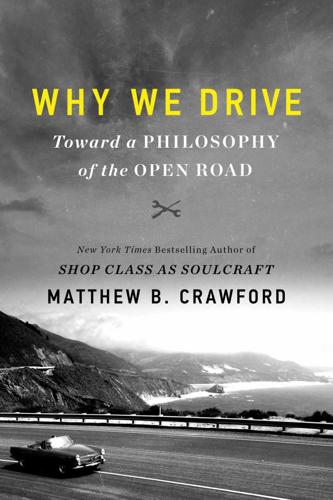
Why We Drive: Toward a Philosophy of the Open Road
by
Matthew B. Crawford
Published 8 Jun 2020
Boudette, “Building a Road Map for the Self-Driving Car,” New York Times, March 2, 2017. 8.Jody Rosen, “The Knowledge, London’s Legendary Taxi-Driver Test, Puts Up a Fight in the Age of GPS,” New York Times Style Magazine, November 10, 2014, https://www.nytimes.com/2014/11/10/t-magazine/london-taxi-test-knowledge.html. 9.In much commentary and reportage, several unrelated developments get mixed up together: driverless cars, electric vehicles, and ride hailing. I believe this fuzziness is deliberately cultivated, as it imparts a sheen of technological progress to the ride-hailing firms when in fact their core business is one of labor arbitrage. Their innovation is merely to exploit the deskilling effect of GPS for this purpose. The main divide across which they practice labor arbitrage is time of residence in a city, which corresponds to the acquisition of knowledge held independently, without reliance on GPS.
…
There have been guerrilla actions against red light cameras and speed cameras in the United States as well, and they seem to express political discontent more than simple vandalism. On the other side of the Channel, the mass protests of the London taxi drivers both expressed and contributed to the Brexit mood. This was a fight for economic sovereignty by highly trained professionals against the threat posed by foreign ride-hailing firms that rely on map software, U.S. military satellites, and the subsistence drivers of the gig economy. Essentially, Uber created a system of labor arbitrage to sidestep and nullify local control. The protests of the Germans against a proposed speed limit on the autobahn explicitly referenced the Yellow Vests, in a rare expression of French-German solidarity, and gave rise to a slogan adopted not just by the car lobby, but by dissident political parties: “Freie Fahrt für freie Bürger!”
…
Uber did everything it could to signal that “its eventual marketplace dominance was inevitable, that competitive or regulatory resistance was futile, and that journalistic probing was pointless.” Meanwhile, its multi-billion-dollar fare subsidies “completely distorted marketplace price and service signals, leading to a massive misallocation of resources.” One effect of such misallocation is city streets clogged with empty ride-share vehicles, which of course is the very condition that makes it possible to “press a button, get a car” almost instantly. This seems like magic, and we can only marvel at what technology might deliver next. In light of Horan’s analysis, one has to wonder: is Uber’s conspicuous interest in driverless cars really driven by a hope to replace low-wage drivers with autonomous vehicles?
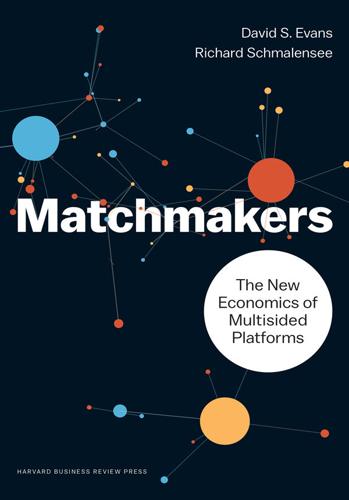
Matchmakers: The New Economics of Multisided Platforms
by
David S. Evans
and
Richard Schmalensee
Published 23 May 2016
All the people who used Uber 140 million times in 2014, and all of those who used it in the more than three hundred and fifty cities in sixty-seven countries where it was available in November 2015, had downloaded the Uber app onto their smartphones.25 Mobile operating systems, particularly iOS and Android, are foundational multisided platforms that power other important platforms. They are critical components of ride-hailing apps such as Uber and its Chinese competitor Didi Kuaidi and important for music apps such as Spotify. Mobile operating systems are also important for “old” Internet-based matchmakers. Google earned 20 percent of its advertising revenue from the use of its apps on smart mobile devices in 2014, and Facebook earned 73 percent of its ad revenue that way in the first quarter of 2015.26 These mobile operating systems, combined with smart mobile devices, have begun to tear down the walls between the online and the offline worlds.
…
See also pricing provider incentives, 105 QuickBooks, 18 QR (quick response) codes, 163 RadioShack, 184 rating systems, 143 recruitment business, 124 regulatory environment, 140 reseller platforms, 107–108 restaurant reservation systems, 7–8, 9–14 retail design in, 186–187 ecosystems, 104–105 frictions in, in China, 61–63 future of, 204 omnichannel, 194–196 reinvention of, 193–196 transformation of from multisided platforms, 183–196 waves of disruption in, 187–188 See also shopping malls RetailNext, 183 ride-sharing apps. See BlaBlaCar; Didi Kuaidi; Uber Rochet, Jean-Charles, 14–15, 17, 22, 27, 30 Rohlfs, Jeffrey, 22–23 ROKR, 113 Rosebar nightclub, Buenos Aires, 96 Safaricom, 168, 169, 172 Samsung Pay, 163 Schumpeter, Joseph A., 49 screening devices, 124–125 Sculley, Arthur B., 65 search diversion, 129 search engines, 42, 93–94 matching algorithms in, 127 pricing, 97 shopping and, 185–186 Sears, 184 self-supply, 80 sexual predators, 139–140 sharing economy, 197–198, 203–205 shopping, changing style of, 183–196 shopping malls, 17–18, 129–133 anchor stores in, 80, 130, 131 creative destruction of, 184, 192–193 designing, 121–122 ecosystems for, 103 ignition strategies in, 80 layout of, 132–133 marquee participants in, 125 pricing, 94, 95 search diversion in, 129 store selection for, 131–132 signaling devices, 127 single-sided businesses, 16 coordination problem in, 69, 70 ecosystems for, 104–106 pricing in, 89–91 Sir John Barnard’s Act, 140–142 sixdegrees.com, 28 small and medium-sized enterprises (SMEs), 56 smartphones, 19–20, 41, 48–49 apps, 47–48 broadband development and, 42–43 creative destruction and, 204 ecosystems for, 101–102, 110–119 iPhone, 100 mobile payment systems, 58, 149–150 shopping changed by, 183–196 social networking first-mover advantage in, 28 governance of, 135–136, 137–138, 145–148 See also Facebook Soffer, Donald, 121 Soffer, Harry, 121 Solomon, Bob, 68 Sony, 23, 26–27 Southdale Center, 122 standards, technology, 22–23, 41–42, 126–127 Starbucks, 163 stock brokers, 139 stock exchanges, 39–40, 123 governance of, 140–142 streaming technology, 191–192 subsidy side of the platform, 33–34, 93–94, 96 Sun Microsystems, 43 supply, 2 switching, 28–29 Symbian, 111–112, 115, 118 Taobao, 62–63, 64 taxicabs, 51 technology, 2 for Apple Pay, 158, 159, 160–161 chips, 40–41 creative destruction and, 49–51, 197–206 in growth/development of matchmakers, 19–20, 39–61, 202–203 Internet service providers, 45–47 online/offline world and, 48–49 operating systems, 18, 43–44, 47–48 standards adoption and, 22–23, 26–27, 41–42 telegraph, 201–202 telephones, landline, 22–23, 25–26 Telkom Kenya, 168 Templeton, Chuck, 9–14, 21, 79.
…
Platforms can reduce the effects of congestion by making it easier for participants to connect with each other faster.14 It can take a long time for taxicabs and riders to connect in major cities. Some people who call for taxis end up hailing one because of uncertainty about when and whether the driver will show up. Ride-sharing apps, such as Didi Kuaidi, reduce this problem by using technology to enable drivers and riders to connect quickly and confidently. Search engines, to take another example, design their results pages to make it easier for people to find relevant organic and sponsored search results. Showing people too many items on one page makes it harder for people to find things, since each additional item adds congestion.15 Searching and Matching A platform’s design must do more than help get enough of the right participants.
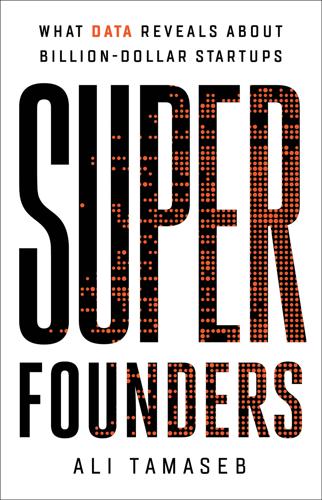
Super Founders: What Data Reveals About Billion-Dollar Startups
by
Ali Tamaseb
Published 14 Sep 2021
COMPETING AGAINST A HIGHLY FUNDED STARTUP As mentioned, Uber and Lyft provide a much less common example of two highly funded startups finding success in the same space. But neither company started out in the ride-hailing space as we know it today, and two other companies helped shape their story: Zimride and Sidecar. The first company on the scene was Zimride, which began offering ridesharing between cities in 2007. Uber hit the market in 2009—but not the Uber you’re familiar with. The company started out as a black-car-only service aimed at wealthy and aspirational clientele, offering town cars and limousines and billing itself as “Everyone’s Private Driver.” Sidecar, the first on-demand ride-hailing app, launched in 2011 in San Francisco. A few months later, in 2012, Zimride held an internal hackathon in an attempt to increase user retention and engagement.
…
Logan Green, the CEO, began the company shortly after graduating from University of California, Santa Barbara, with a bachelor’s degree in business economics. His co-founder, John Zimmer, had a degree in hotel administration from Cornell. Both saw the early potential of ridesharing. Although Green had learned to code and was able to build initial prototypes, they had to bring on senior and junior engineers to develop the complicated back-end systems required for ridesharing. On the other side, Coinbase, an early cryptocurrency exchange, was started by two technical founders. Brian Armstrong and Fred Ehrsam had both studied computer science and economics as undergraduates; Armstrong would go on to get a master’s degree in computer science.
…
We failed—for the most part—because Uber is willing to win at any cost and they have practically limitless capital to do it.”6 Sidecar shut down operations on New Year’s Eve in 2015, and General Motors acquired its remaining assets and intellectual property. Uber went on to raise billions of dollars to become the dominant force in the ridesharing industry. Today, Lyft and Uber have raised billions of dollars from investors in public and private markets. Despite its lower sales and market share, Lyft has remained persistent over the last ten years, establishing itself as a more ethical alternative to Uber, which has suffered a long list of scandals and controversies.
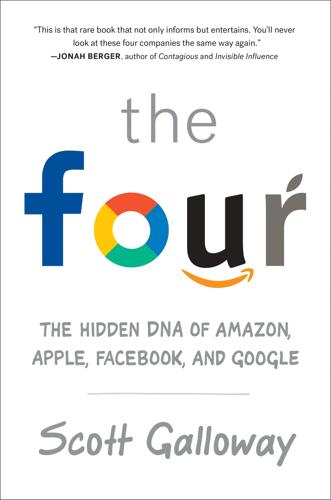
The Four: How Amazon, Apple, Facebook, and Google Divided and Conquered the World
by
Scott Galloway
Published 2 Oct 2017
NYU Stern Professor of Management Sonia Marciano (clearest blue-flame thinker in strategy today) believes the key to establishing advantage is finding points of differentiation where there is large, real or perceived, variance. If you’re a decathlete, the key is to find the event with the greatest variance in performance and own it. Uber is a great product, but I’d challenge you to identify (without knowing which ride-sharing platform you booked through) the difference between Uber, Lyft, Curb, and Didi Chuxing. The category is a 10x improvement over cabs and black cars, but there is an increasing sameness among ride-sharing players. This has likely been the case for a while, but Uber’s CEO frat rock (that is, shit for brains) behavior has prompted people to discover on their own that Lyft is the same thing. The Airbnb platform takes on greater importance as an arbiter of trust, as there is greater variance in the product—a houseboat in Marin vs. a townhouse in South Kensington.
…
Uber As I write this, around 2 million people drive for Uber (called “Driver Partners”), which is more than the total number of employees of Delta, United, FedEx, and UPS20 combined. Uber adds 50,000 or more drivers per month.21 The service is available in more than 81 countries and 581 cities.22 And it’s winning in (most of) those markets. In Los Angeles, only 30 percent of ride-hailing trips were in taxis in 2016.23 In New York, almost the same number of cabs and Ubers are hailed daily (327,000 vs. 249,000).24 For many urban dwellers around the world, Uber has become their default transportation solution, the dominant brand in a space that was previously a hodgepodge of local operators and a penchant for yellow.
…
Liquidity translates to having enough suppliers and customers who can be matched to make the service viable. Both have achieved this. However, the liquidity Airbnb has garnered is more impressive and harder to replicate. Uber needs a mess of drivers and people looking for rides to build a business in a city. Uber’s cash hoard gives them the ability to ramp up a city, as can other ride-hailing firms with sufficient capital. However, Airbnb needed to achieve a critical mass of supply in one city and demand (awareness) in many others—people visit Amsterdam from all over the world. There is competition for Uber in every major city, as a firm only needs to establish liquidity in one market.

Insane Mode: How Elon Musk's Tesla Sparked an Electric Revolution to End the Age of Oil
by
Hamish McKenzie
Published 30 Sep 2017
Others, like Cruise Automation (which GM acquired for $1 billion) and Comma.ai, which offers open-source autonomous driving technology in the same vein as Google’s Android mobile operating system, are chasing hard. Baidu, China’s leading Internet search company, has an autonomous-driving research center in Sunnyvale. Byton—backed by China’s Tencent, Foxconn, and the China Harmony New Energy auto retailer group—has an office in Mountain View, as does Didi Chuxing, the Chinese ride-sharing company in which Apple invested $1 billion. Many of these companies have taken not just inspiration but also talent from Tesla. Part of the value of an innovation cluster like Silicon Valley lies in the dispersal of intellectual labor from one node to the next. For instance, PayPal is well known in the Valley for producing a number of high performers who left the company to start, join, or invest in others.
…
For the last century, Wu said, the auto industry had been like boxing, dominated by big guys who followed well-defined rules. But now, it was like mixed martial arts, which favors scrappy, nimble fighters, even if they’re smaller. “The rules become very complicated—or people don’t follow rules.” Meanwhile, ride-sharing had become popular, led in China by Didi Chuxing. Connectivity provided an opportunity to make cars more like mobile phones. And the idea of autonomous driving was gaining momentum, with Baidu, China’s largest online search company, working on its own vehicle since 2013, following Google’s lead.
…
In a phone interview two days before I met Wu, Wang Jing, the head of Baidu’s autonomous driving unit, said Baidu believed self-driving cars could reduce the death toll on China’s roads by 90 percent—since that’s the proportion of accidents caused by human error. Self-driving cars would also save time, Wang said. A commute in a megacity like Beijing or Shanghai commonly takes an hour or two, but most cars on the road have only one occupant. A more efficient distribution of bodies per vehicle through ride-sharing would improve traffic and speed up commutes. In China, it will be easier than in the United States for people to make the transition to sharing self-driving cars, Wang reasoned. The population density of the big cities makes it difficult for people to have access to their own parking spaces, and hundreds of millions of Chinese still don’t own cars.

Peers Inc: How People and Platforms Are Inventing the Collaborative Economy and Reinventing Capitalism
by
Robin Chase
Published 14 May 2015
See Reviews reCAPTCHA, 27–28, 29 Red Hook initiative, 245–246 Regulations outdated, 151–152, 155–156 overregulation, 150 platform’s process for not adhering, 132 proposals to police websites, 158–159 self-governing, 153–155 taxis vs. Uber, 149–151 through decentralized leader-free “voting,” 216–217 Requests for proposals (RFPs), vs. asking for solutions, 171 Retail model, 237–238 Reviews creating meritocracy, 55 eBay, 103 rideshare companies, 154 Reward system, decentralized, based on digitized data, 214–215 Rickshaws, auto, 239–243 Ridesharing disinterest, 108–109 as inevitability, 188 mechanisms for regulating, 153–154 See also BlaBlaCar; GoLoco; LaZooz Rock cairns, as metaphor for sharing innovation, 224–225 Romero, Carlos, 251–252 Rosetta Stone, 79 SaferCar, 41 Sainsbury’s, 179 St.
…
“Rethinking Retail in the Collaborative Economy,” talk given by Véronique Laury, Castorama CEO, OuiShare Fest, June 9, 2014, ww.youtube.com/watch?v=nDkrBfaP8bg. 25. Kevin Delaney, “Google in Talks to Buy YouTube for $1.6 Billion,” Wall Street Journal, October 7, 2006. 26. Curt Woodward, “MA Warns Ride-Sharing, Car-Sharing Drivers of Insurance Risks,” Xconomy.com, June 26, 2014, www.xconomy.com/boston/2014/06/26/ma-warns-ride-sharing-car-sharing-drivers-of-insurance-risks. 27. Scott Austin, “How Does Airbnb’s $10 Billion Valuation Size Up?,” Digits blog, Wall Street Journal, March 20, 2014. 28. Roxane Googin, “The Techonomy, Get Used to It,” High Technology Observer, September 27, 2012. 29.
…
So here’s my failure at building a successful platform for participation that didn’t get past phase one. I started raising money for GoLoco in 2006, and in April 2007 we launched it with a little over $1 million in investment capital thanks to angel investors who believed in me. GoLoco was going to do for ridesharing (short-distance carpooling and long-distance hitchhiking) what Zipcar had done for sharing cars. We were going to make sharing a car trip easy, fun, and financially rewarding. Technology, great marketing, and branding would make it possible. GoLoco would make use of all those empty car seats available in the 80 percent of cars that are occupied only by the driver.

Uncanny Valley: A Memoir
by
Anna Wiener
Published 14 Jan 2020
Transplanted startup workers bemoaned the transit infrastructure, an old system riddled with inefficiencies that shut down almost entirely at midnight—not that anyone making a midlevel tech salary was taking the bus. A glut of transportation apps had sprung up to replace San Francisco’s poky streetcars and unreliable taxi fleet. The largest was an on-demand ride-sharing startup, a company committed to domination at all costs, including profitability. The ride-sharing startup’s main competitor had a near-identical business model but much cuter branding. The cute competitor required its drivers—contract laborers commandeering their own personal vehicles—to hook large fuchsia mustaches, made of synthetic fur, to their grilles and greet passengers with a fist bump.
…
We all knew that internal permissions, limiting what we could see of customer data sets, would come eventually. We also knew, at least for the time being, that it wasn’t a priority for our Engineering team. This level of employee access was normal for the industry—common for small, new startups whose engineers were overextended. Employees at ride-sharing startups, I’d heard, could search customers’ ride histories, tracking the travel patterns of celebrities and politicians. Even the social network everyone hated had its own version of God Mode: early employees had been granted access to users’ private activity and passwords. Permissioning was effectively a rite of passage.
…
The next two days were spent canvassing, walking through suburban sprawl. I hated our conspicuousness, the imposition on strangers; hated that they all knew what was coming the minute we clomped up onto the porch. In working-class neighborhoods with streets that were quiet and still, half the parked cars bore windshield decals from ride-sharing startups. My coworker fretted about rumors she was hearing of the Sales team starting layoffs. PRAY FOR JESUS TO LOWER INFLATION, advised a bumper sticker. On Election Day, engorged with anxiety and optimism, I secured an enamel pin shaped like a uterus to my jacket and went to scout breakfast.
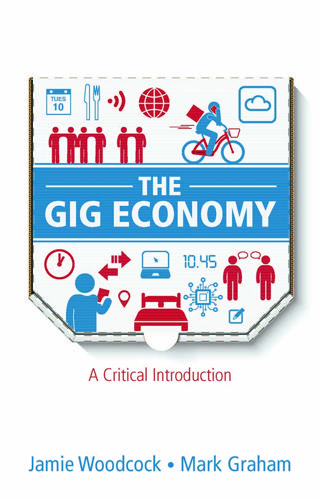
The Gig Economy: A Critical Introduction
by
Jamie Woodcock
and
Mark Graham
Published 17 Jan 2020
Kalanick has described the rise of the company as analogous to a political campaign in which ‘the candidate is Uber and the incumbent is an asshole called “taxi”’ (Kalanick and Swisher, 2014). Another documented tactic is the use of ‘greyballing’ to evade regulation. This involves the ‘greyball’ tool developed by Uber, which take the data collected by the app through its normal operation in order to ‘identify and circumvent officials who were trying to clamp down on the ride-hailing service’.8 The use of the tool was approved by Uber’s legal team and has been running since at least 2014. For example, in Portland, Oregon, Uber was operating without approval. Uber gathered the details of city officials and ‘greyballed’ them, providing ‘a fake version of the app, populated with ghost cars, to evade capture’, including cancelling any rides they were able to hail.
…
Starting from the least amount of control, cloudwork platforms tend not to get involved in when workers log on and off, and instead leave those sorts of negotiations to workers and clients. Workers on geographically tethered platforms likewise are rarely told that they have to work on any given day. In practice, however, platforms have a variety of ways of encouraging workers to be active at particular times. Ride-hailing and delivery platforms use variable rates to increase the available workforce at peak times. Once a worker has accepted a job, platforms then greatly increase the amount of temporal control that they exert. On some platforms, workers are tracked down to the second in order to ensure that work is effectively carried out.
…
Instead, the client is hidden behind the interface of the platform. Delivery drivers may re-encounter some of the same customers, but those interactions tend to be fleeting. It therefore makes little sense for clients and workers to attempt to disintermediate the platform – repeating their interaction, but without the platform connecting to them. Ride-hail drivers may have long stretches of time with some customers, but – for them too – it makes little sense to attempt to disintermediate the operation of the platform. It is precisely the multi-sided nature of the platform (connecting workers and clients with many potential matches) that is of value to both clients and workers in that case.
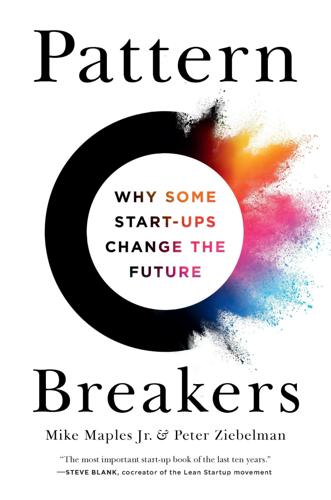
Pattern Breakers: Why Some Start-Ups Change the Future
by
Mike Maples
and
Peter Ziebelman
Published 8 Jul 2024
An example of an insight was the realization by start-ups like Uber and Lyft that the new embedded GPS location capabilities of smartphones could enable people to share their location to allow ridesharing between drivers and passengers. This insight was similar to the way Airbnb had recently made it possible for homeowners to share their houses with guests. A pattern-breaking idea is a specific product or service based on an insight. In the ridesharing example, this idea is the actual ridesharing app itself. To most of us, set in our ways, these ideas often may seem strange or even nonsensical. They can’t be compared with anything that’s come before.
…
It was doing well enough but wasn’t setting the world on fire. Now founders Logan Green and John Zimmer wanted to conduct an experiment: a peer-to-peer ridesharing app that ran on smartphones. But the California state government (at the behest of the taxi lobby) would almost certainly challenge the legality of ridesharing services. Like virtually all major US cities, San Francisco required taxi firms to be licensed according to an old-fashioned medallion system that limited the number of cabs. The city would likely issue cease-and-desist letters to ridesharing services on the grounds that they were unlicensed taxi services. “Logan and John are going to call it Lyft,” Ann continued.
…
When you intertwine potent technological advancements with groundbreaking insights about how to harness them, the outcome is often transformative products that redefine industries. Before the new, foundational capabilities, nobody could have created a ridesharing network in the sense we understand them today. However, once those inflections were accessible, the insight uncovered by Uber and Lyft allowed them to usher in a service distinct from anything preceding it. Once passengers tried a ridesharing app, few found themselves drawing parallels with traditional taxis. The ridesharing networks redefined the playing field, aligning it with their unique strengths. Start-ups, as we’ve emphasized, need an unfair advantage because incumbents benefit from people’s established patterns of behavior.

The Sharing Economy: The End of Employment and the Rise of Crowd-Based Capitalism
by
Arun Sundararajan
Published 12 May 2016
Uber is very much a market economy, as is Getaround (although environmental concerns might lead one to use these as substitutes for auto ownership); BlaBlaCar and Lyft have some gift economy aspects to them, as does Bandwagon, a platform for sharing yellow cabs in New York, and Hitch, a carpooling network acquired by Lyft in 2015. Natalie Foster, the founder of the (then) sharing economy collective action platform Peers.org, quotes a Peers member named Justin, a ride-share driver in Los Angeles, who calls the ride-sharing experience a positive force in his life: “Often times because of how we run so close in our circles, we sometimes shut ourselves off from interactions with new people. Ride sharing has allowed me to interact with people whom I would never have met.”45 The sharing economy is thus diverse not just in its industries, services and business models, but on the market-to-gift spectrum as well.
…
Co-founded in 2013 by Matan Field, Oren Sokolowsky, and Shay Zluf, La’Zooz is (as of 2015) a decentralized peer-to-peer ridesharing marketplace that takes a novel approach to this problem. (The platform is based in Israel, and the word “lazuz” means “to move” in Hebrew.) Think about a service like Uber. Sure, there’s value in the technology, but eventually, the system is more valuable to passengers when there are more drivers; and the system is valuable to drivers when there are more passengers. So a critical “input” into such a ridesharing system is user participation. Correspondingly, the users who “seed” the system with early participation are likely to be more valuable, at the margin, than those who join later.
…
La’Zooz has created what seems to be a familiar-looking mobile device app for ridesharing, but with a key difference: embedded in each app is a “mining app” as well, designed to encourage early participation. Here’s how it works. You download and install the app. You turn it on when you are driving, and earn “zooz,” the La’Zooz currency, simply by driving around with the app on. The more you drive, the more zooz you earn. You also earn zooz by inviting others to download the app. (The project leaders also sold some zooz to raise money.) Once the level of adoption in any neighborhood is sufficiently high, the ridesharing portion of the app gets activated.

The Internet Is Not the Answer
by
Andrew Keen
Published 5 Jan 2015
The Alien Overlord Spaceships Outside the San Francisco hotel, the future had arrived and, to paraphrase William Gibson, it was distributed most unequally. Uber limousines lined up outside the club to whisk Silicon Valley’s successful young failures around town. Cars from rival transportation networks hovered hopefully around the hotel, too—companies like Lyft, Sidecar, and the fleet of me-too mobile-ride-hailing startups trying to out-Uber Travis Kalanick’s $18 billion market leader. Some of the people scrambling for a living as networked drivers were themselves aspiring entrepreneurs with billion-dollar startup ideas of their own.27 So even in these unlicensed cabs, it was impossible to get away from the pitches for the next WhatsApp, Airbnb, or Uber, which pitches, sadly, were mostly just a glorified form of begging.
…
No, the Internet is not the answer, especially when it comes to the so-called sharing economy of peer-to-peer networks like Uber and Airbnb. The good news is that, as Wired’s Marcus Wohlsen put it, the “sun is setting on the wild west” of ride- and apartment-sharing networks.44 Tax collectors and municipalities from Cleveland to Hamburg are recognizing that many peer-to-peer rentals and ride-sharing apps are breaking both local and national housing and transportation laws. What the Financial Times calls a “regulatory backlash”45 has pushed Uber to limit surge pricing during emergencies46 and forced Airbnb hosts to install smoke and carbon monoxide detectors in their homes.47 “Just because a company has an app instead of a storefront doesn’t mean consumer protection laws don’t apply,” notes the New York State attorney general Eric Schneiderman, who is trying to subpoena Airbnb’s user data in New York City.48 A group of housing activists in San Francisco is even planning a late 2014 ballot measure in the city that would “severely curb” Airbnb’s operations.49 “Airbnb is bringing up the rent despite what the company says,” explains the New York City–based political party Working Families.50 The answer is to use the law and regulation to force the Internet out of its prolonged adolescence.
…
Siwek, “The True Cost of Sound Recording Piracy,” Institute of Policy Research, August 21, 2007. See executive summary: ipi.org/ipi_issues/detail/the-true-cost-of-sound-recording-piracy-to-the-us-economy. 25 IFPI Digital Music Report, 2011, “Music at the Touch of a Button,” ifpi.org/content/library/dmr2011.pdf, p. 15. 26 Ibid. 27 See, for example, Ellen Huet, “Rideshare Drivers’ Unexpected Perk: Networking,” San Francisco Chronicle, December 29, 2013. 28 Gideon Lewis-Kraus, No Exit: Struggling to Survive a Modern Gold Rush (Kindle Single, 2014). 29 Jessica Guynn, “San Francisco Split by Silicon Valley’s Wealth,” Los Angeles Times, August 14, 2013. 30 Rebecca Solnit, “Google Invades,” London Review of Books, February 7, 2013. 31 Michael Winter and Alistair Barr, “Protesters Vandalize Google Bus, Block Apple Shuttle,” USA Today, December 20, 2013. 32 Alexei Oreskovic and Sarah McBride, “Latest Perk on Google Buses: Security Guards,” Reuters, January 16, 2014. 33 Tom Perkins, “Progressive Kristallnacht Coming?
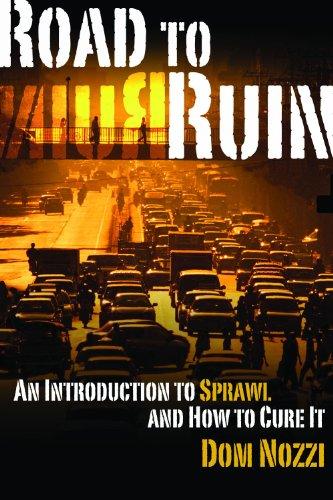
Road to ruin: an introduction to sprawl and how to cure it
by
Dom Nozzi
Published 15 Dec 2003
Charging meaningful parking fees, not raising residential densities, is the key to discouraging car trips and encouraging transit, walking, or bike trips, claims one civil engineer.18 In San Francisco, 95 percent of workers whose employers charged for parking and offered public transit vouchers commuted by public transit.19 Extremely high parking fees have been remarkably effective at the University of California–Davis in persuading commuters to ride bikes instead of drive.20 RIDESHARING AND CARPOOLING A good example of the need for pairing tactics that discourage driver-only trips and encourage travel choice is the finding that financial parking incentives are essential to persuade the maximum number of people to share rides.21 When a firm in California started charging $30 per month for parking, solo driving dropped from 90 percent to 45 percent, while carpooling jumped from 6 percent to 48 percent.22 Although rideshare incentives have a difficult time competing with free parking, a federal study of employer ride-sharing programs found that vehicle trips declined by an average of 20 percent when the program was introduced.23 In the mid 1990s, carpooling was much more common for shopping, recreation, and other purposes than for work; occurred mostly on multi-purpose trips; and was most efficient when destinations were accessible to each other.24 GUARANTEED RIDE HOME Communities that adopt “guaranteed ride home” programs assure employees a motor vehicle will be available should they have a trip need while at work, such as a family emergency, that they cannot make by walking, bicycling, or public transit.
…
Apart from urban downtowns, the highest rates of bicycling and walking occur in neighborhood centers with a jobs and housing balance. (Well-designed “neighborhood centers,” which usually occur at major street intersections, are walkable shopping areas mixed with housing.) Adding retail shops to office-oriented areas further promotes walking, bicycling, ridesharing, and use of public transit by those who live near their work and near the commingled retail and service outlets.17 Here are some persuasive statistics: compared to a development in a remote, sprawled location, new in-town development can reduce vehicle miles traveled by up to 52 percent and reduce emissions of nitrogen oxide by up to 81 percent and of volatile organic compounds by up to 316 percent.
…
Indeed, scholars in the field of transportation research indicate that we would drive one-third to two-thirds less if these “market distortions” or “underpricing” were eliminated and we had to pay our fair share for driving. Among the many tactics being used or considered for shifting these costs back to motorists are parking fees, ridesharing, guaranteed rides home, trip reduction laws, gasoline taxes, congestion fees, and high-occupancy vehicle lanes.1 PARKING: CASH-OUT PROGRAMS, PARKING ALLOWANCES, AND PARKING FEES Excess parking promotes undesirable levels of solo car travel, makes communities less walkable and less safe, is more costly to businesses, promotes urban sprawl, and degrades an area’s appearance.
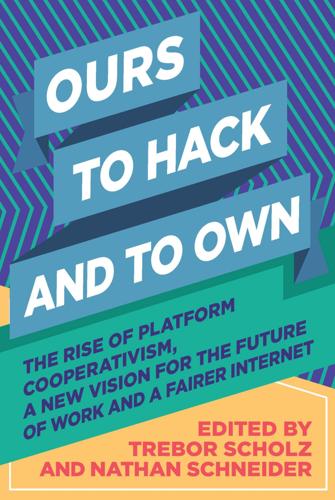
Ours to Hack and to Own: The Rise of Platform Cooperativism, a New Vision for the Future of Work and a Fairer Internet
by
Trebor Scholz
and
Nathan Schneider
Published 14 Aug 2017
This incident and others seem to support the legal claim by thousands of drivers who are suing Uber, insisting they are indeed employees under the strict management of Uber, not sovereign contractors. As an employer, Uber would be responsible for paying Social Security and Medicare contributions for these workers, as well as unemployment and injured workers’ compensation and driving expenses. This stark reality also points to the grave need for the creation of a new ride-sharing platform in which drivers have more control, either through outright cooperative ownership of the platform or a binding contract negotiated by a union-type organization, such as was recently empowered in Seattle via new legislation. According to Uber’s own numbers, most drivers work only part-time and leave after a year.
…
Point-to-point urban transportation is a fairly uniform service in an industry with a limited amount of competition. Once the technology associated with “e-hail” and logistics is commoditized, which it will be, the economic fundamentals for the emergence of a platform cooperative would appear to be in place. More important, the network effects associated with ridesharing are geographically concentrated. Thus, unlike platforms such as eBay and Facebook, the barriers to entry posed by an incumbent platform may not be onerous. True, passengers gravitate toward the platforms with more drivers, and vice versa. However, these effects are localized. Most potential passengers in New York care little about the scale of a platform in Los Angeles or Minneapolis.
…
As a consequence, instigating the emergence of a platform cooperative doesn’t involve getting millions or billions of users to switch simultaneously. Rather, it might be seeded simply by signing up a few thousand providers. One such effort under way as of the writing of this essay is Swift in New York, a nascent ridesharing effort that hopes to organize as a driver cooperative. Despite these relatively low barriers to entry, a collective that hopes to build a scalable platform business with a cooperative ownership model faces other challenges. During a panel that Juliet Schor and I participated in at the Platform Cooperativism conference, Schor highlighted an issue her research had uncovered about sharing economy cooperatives: that their value system was often better articulated than their value proposition.
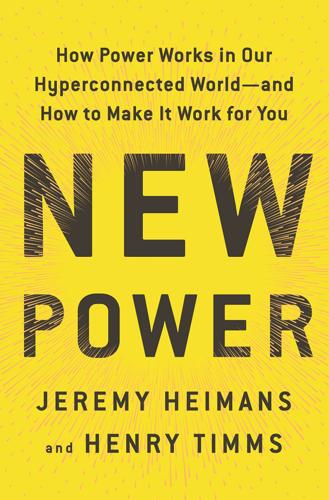
New Power: How Power Works in Our Hyperconnected World--And How to Make It Work for You
by
Jeremy Heimans
and
Henry Timms
Published 2 Apr 2018
And Ride Austin was born. Ride Austin was created not simply as a replacement for Uber, but as an antidote to it. It was an entrepreneurial attempt to create a ridesharing model that would be defined by community, not just by transactions. As TheNextWeb described it: “The app is essentially a clone of Uber, only without the shitty business behind it.” What is behind Ride Austin isn’t a business at all, but a nonprofit. It is a ride-share service that serves the community, with a commitment to drive down costs and increase accessibility. As its slogan goes, “Built by Austin, for Austin.” It espouses a philosophy that is proudly local, pro-driver, and philanthropic.
…
Ride Austin sees the harmony it can achieve within its triangle and circle as its competitive advantage. It is now committed to making its drivers full employees with benefits—creating reliable jobs. It has plans to work in underserved areas to increase mobility and to encourage more actual ridesharing, by reducing single occupancy rides. It is also thinking through a proposal to use some of the fees from its luxury ride options to offset the costs to low-income riders. Think of it as redistributive ridesharing. The unique situation in Austin—the Uberpocalypse, as it was known—and Austin’s progressive culture offered up a rare chance for an initiative like Ride Austin to emerge. Yet its story may prove quixotic.
…
The conventional wisdom is that network effects at work around platforms like Uber will lead inexorably toward a national and perhaps global monopoly or duopoly emerging (and that is certainly Uber’s goal). Yet, as Deshotel reminded us, 90 percent of ridesharing is purely local. It is a service fairly well suited to a city scale and a more communitarian bent, especially if the incentives of drivers, riders, community, and government can all fall into alignment. Going further, it is not absurd to imagine a Ride Houston, or a Ride DC, or even a Ride São Paulo. Using shared technology and branding, local versions of ridesharing apps might even start to assemble some kind of “federated platform,” with different communities owning and tending their own patches of the same ecosystem.
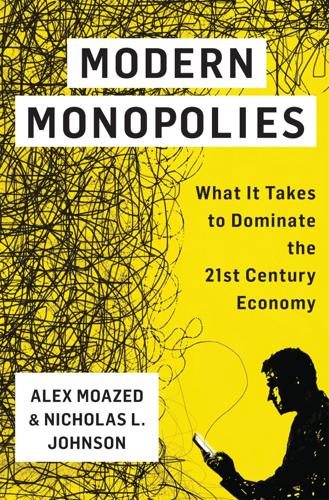
Modern Monopolies: What It Takes to Dominate the 21st Century Economy
by
Alex Moazed
and
Nicholas L. Johnson
Published 30 May 2016
If you succeed, you’re rewarded with cold, hard cash. If you’re caught, your employer will deny your existence. No, this isn’t the plot of a movie about high-stakes corporate espionage. This is Operation SLOG, Uber’s covert, ethically dubious, and possibly illegal attempt at poaching drivers from rival ride-hailing service Lyft. “SLOG” stands for Supplying Long-term Operations Growth, a name that hints at why Uber goes to such great lengths to recruit drivers. Uber understands that one of its core functions is to grow its network. Aggressive marketing is nothing new, but for a platform like Uber, the task goes beyond marketing.
…
A great example of this is the console industry, where the Xbox One and Playstation 4 are sold at or below cost in order to get as many users as possible onto the platform. These platforms can then use their large consumer base to attract game developers, whom they charge licensing fees. Many platforms also provide guarantees to producers in order to get them to join. Heavy competition for drivers on ride-sharing platforms has led both Uber and Lyft to offer minimum-earnings guarantees to drivers who join. Handy also offers a guarantee to producers from other on-demand services marketplaces who join its network. Product Features Subsidies Another way to subsidize value is through product features.
…
Metromile charges users only for the personal miles, since Uber covers the car when drivers are with or en route to passengers. “The existing model for insurance hasn’t been able to adapt [to Uber],” Metromile CEO Dan Preston said.3 “We have a technology that drives the insurance product.” More mainstream insurance companies, such as Geico and Progressive, have followed Metromile’s lead by offering ride-share insurance that caters to Uber and Lyft drivers. This phenomenon of derivative businesses being built around larger platform companies isn’t new. The legion of search engine optimization experts that sprang up to help businesses grapple with Google’s search engine are an obvious precedent, as are the legions of people and companies that hold some variation of the title “social media manager.”
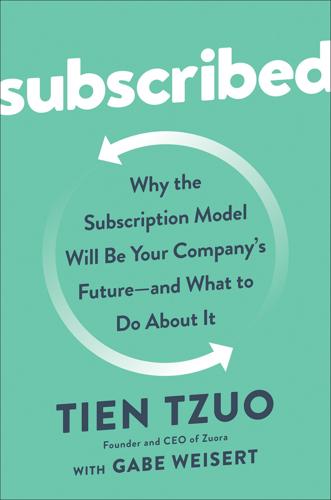
Subscribed: Why the Subscription Model Will Be Your Company's Future - and What to Do About It
by
Tien Tzuo
and
Gabe Weisert
Published 4 Jun 2018
Right now Surf Air costs around $2,000 a month, so it’s specifically aimed at frequent fliers with more money (or access to expense accounts), but we’re going to start seeing this model spread through the entire aviation industry in much the same way it’s transforming the automotive industry. It’s just a matter of time. RAILWAYS AND RIDESHARES Competition in the transportation industry has switched from vertical to horizontal. By that I mean it’s not just car companies going after car companies, or airlines taking on other airlines anymore. Light rails are competing against rideshares that are competing against budget airlines. Everyone is chasing after passengers who are demanding access to anytime, anywhere travel. Take SNCF, France’s state-owned railway company, which was founded in 1938.
…
They want media at their fingertips, not physical products to manage. That’s why most of the big box retailers I grew up with are gone now: Circuit City, Tower Records, Blockbuster, Borders, Virgin Megastore. A lot of the malls are gone, too! Today people expect services to provide immediate, ongoing fulfillment, from rideshares to streaming services to subscription boxes. They want to be happily surprised on a regular basis. And if you don’t meet those expectations, you get dropped, not to mention trashed on social media. It’s that simple. Forrester Research thinks we’re at the beginning of a new twenty-year business cycle it calls “The Age of the Customer.”
…
You can subscribe to a Volvo XC40 (their compact SUV) for $600 a month, and that includes concierge services like packages delivered straight to your vehicle. Everything is covered except the gas: insurance, maintenance, wear-and-tear replacements, 24/7 customer care. Volvo’s CEO expects that one out of every five of the company’s vehicles will be delivered via subscription by 2023, and the company is working on its own ridesharing network that will allow users to loan or rent its cars for profit. Jim Nichols, product and technology communications manager at Volvo USA, told Consumer Reports, “Our research has shown that many customers are looking for a hassle-free, fixed-rate experience that mirrors the many subscriptions they currently have, such as Netflix or Apple’s iPhone [upgrade] program.”

System Error: Where Big Tech Went Wrong and How We Can Reboot
by
Rob Reich
,
Mehran Sahami
and
Jeremy M. Weinstein
Published 6 Sep 2021
Andrew Ng, a leading AI scientist, says that AI will produce “automation on steroids” and transform every industry known to humankind. The benefits of increasing automation are easy to see, but the costs are often concentrated and sometimes hard to pin down. Some of the costs result in power and wealth inequities. The CEO and shareholders of a ride-hailing service that deploys millions of self-driving cars stand to gain untold wealth, while millions of unemployed taxi, bus, and truck drivers will have to grapple with the consequences of technology over which they have no power. When it comes to material well-being, the age of smart machines may be wonderful for some but livelihood destroying for others.
…
Their response was swift. First, they tried to get an injunction against the new law, delaying its effective date. They were denied. Then they threatened to shut down their operations in the state. In the meantime, they worked on producing a ballot initiative, Proposition 22, that defined “app-based transportation (rideshare) and delivery drivers as independent contractors and [the adoption of] labor and wage policies specific to app-based drivers and companies,” effectively exempting them from the requirements of AB 5. A consortium of tech companies, including Uber, Lyft, and DoorDash, raised more than $200 million to get Prop 22 onto the ballot and sing its praises to the electorate, including pushing smartphone alerts to millions of their users, encouraging them to vote for the proposition.
…
They’ve slashed tires, hurled rocks at the cars, and attempted to run them off the road. We can see around us the beginning of a modern revival of the Luddites, nineteenth-century textile workers who destroyed machines they believed might one day replace them at their jobs: taxi drivers organizing against ride-share applications in New York and other major cities; Barcelona’s crackdown on Airbnb in an effort to sustain the hospitality industry and prevent further urban gentrification. One recent Nobel Prize–winning economist, Paul Romer, even warned that as anger at tech companies boils over, it may result in the bombing of data centers.
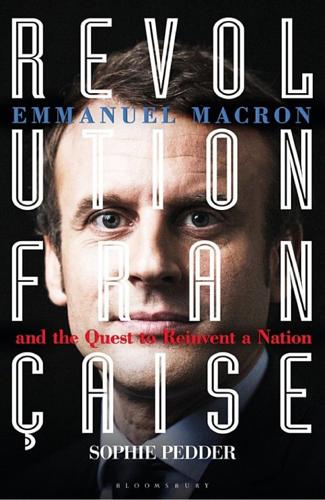
Revolution Française: Emmanuel Macron and the Quest to Reinvent a Nation
by
Sophie Pedder
Published 20 Jun 2018
He persuaded his sister to take a detour via Paris to pick him up for the ride and, as they headed down the motorway for the 500-kilometre journey, Frédéric Mazzella noticed how many other cars on the route were empty apart from the driver. That moment, he recalled later, was when the idea came to him of launching a long-distance ride-sharing service that could link passengers to empty seats. Three years later, BlaBlaCar was launched. By 2017 it was the biggest ride-sharing service in the world, with 60 million users. The idea behind BlaBlaCar is simple: the driver ‘sells’ empty seats to cover petrol and road tolls, but not at a profit; the passenger gets a cheap trip, even last minute. The business model is that of Airbnb: BlaBlaCar takes a cut on transactions; trust is built through peer review.
…
Such was the scarcity of taxis on the streets of Paris that the concept of Uber was actually dreamt up in the French capital, one wintry evening in 2008, when Travis Kalanick and Garrett Camp were in town for a tech conference, known as Le Web, and couldn’t find a cab. They hit upon the idea of a ride-hailing app, and a year later launched Uber in America. When the French government finally deregulated the chauffeur-driven car sector, it initially put in place a raft of restrictions, which Uber proceeded to breach. Exasperated, the police raided Uber’s premises. Two Uber executives were detained. Only one French minister at the time dissented.
…
Emmanuel Macron, March 2017 In the summer of 2015, while Macron was pondering his political options, Courtney Love, widow of Nirvana lead singer Kurt Cobain, arrived at Charles de Gaulle airport in Paris, and posted a message on Twitter: ‘they’ve ambushed our car and are holding our driver hostage. they’re beating the cars with metal bats. this is France?? I’m safer in Baghdad.’ The singer was one of the many passengers caught up in violent anti-Uber protests at the capital’s main international airport, and couldn’t believe her eyes. The previous year, the American ride-sharing firm had launched UberPop, a service that matched unregistered car drivers with passengers and which was ultimately ruled illegal in Paris. The capital’s taxi drivers, already exasperated by the arrival of ordinary Uber cars, did what protesters do. Roads were blocked, passengers intimidated, drivers threatened and tyres slashed.
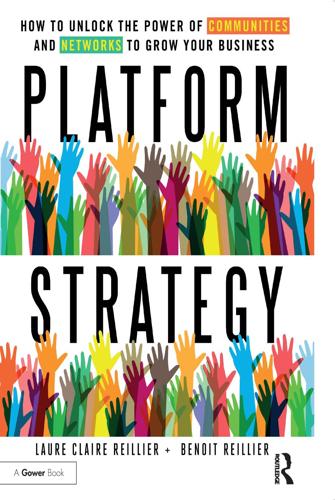
Open for Business Harnessing the Power of Platform Ecosystems
by
Lauren Turner Claire
,
Laure Claire Reillier
and
Benoit Reillier
Published 14 Oct 2017
This is the approach that car-sharing start-up BlaBlaCar adopted with great success, by introducing upfront online prepayment of rides, after having tried a number of other models. The number of drivers not showing up for pickups was significantly reduced (from about 35% down to 3%!) almost overnight. BlaBlaCar was simultaneously able to monetize its service and capture real data about ride-sharing. This critical enabler, to help arbitrate potential disputes, was not possible when the financial transaction happened off-platform. Platforms can also use such pricing strategies to differentiate their customer community vs other platforms based on the ‘average value’ of users. Apple promotes its users as higher-value customers to app developers, and Amex its cardholders as high-value diners to restaurants.
…
While the trust quotient equation is a helpful starting point, we find that platforms often benefit from a more granular approach of the key levers available to enhance trust. BlaBlaCar’s co-founder Frédéric Mazzella believes trust is fundamental to the company success. His excellent DREAMS framework (declared, rated, engaged, activity-based, moderated, social)7 has facilitated the mapping and enhancement of key trust levers for peer-to-peer ride-sharing. From our experience, we have found that a more generic framework, as illustrated by the 7Cs in Figure 12.3, can be applied to and adapted for most types of platforms, from marketplaces, social networks, payment platforms, operating systems and app stores. Let’s have a look at each part in more detail.
…
Joseph Stiglitz, professor of economics at Columbia University, Economics Nobel Prize winner (2001) Trust, governance and brand 165 As participants get more familiar with one platform, research shows that they also become more willing to use other platforms. A recent study from Professor Arun Sundararajan showed that existing BlaBlaCar ride-sharers were more likely to use a peer-to-peer marketplace than non-ride-sharers.17 As interpersonal trust is being transformed from a ‘scarce to an abundant resource’,18 a new digital trust ecosystem is emerging. Companies such as eRated or Traity are now aggregating ratings and reviews from various marketplaces, social networks and government sites in order to create a unified online trusted identity.
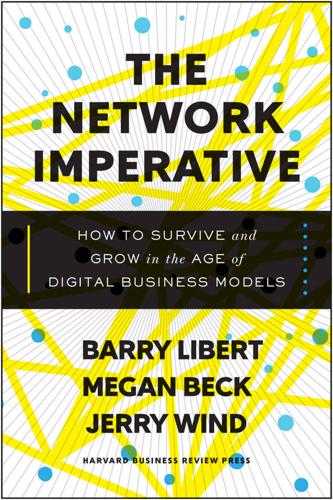
The Network Imperative: How to Survive and Grow in the Age of Digital Business Models
by
Barry Libert
and
Megan Beck
Published 6 Jun 2016
Uber’s CEO, Travis Kalanick, did the same thing when he created a ride-sharing service using mobile technologies to connect drivers and riders directly, where existing black car and taxi companies didn’t. Founder of Angie’s List Angie Hicks connected homeowners to share reviews of local businesses and service providers, creating enormous value over traditional listings like the Yellow Pages. But don’t assume that only start-ups can embrace new mental models and core beliefs. General Motors is demonstrating that it too can shift its core beliefs about value with a $500 million investment in the ride-sharing start-up Lyft and a commitment to build digital networks and autonomous vehicles.
…
Other network companies access the physical assets of the network, such as Uber making use of customers’ cars, or Airbnb making use of customers’ real estate. The task of managing external assets, however, is entirely different from managing those owned by your firm. To maintain and grow access to a network’s assets, you must carefully manage the sentiment and engagement of the network itself. If Uber doesn’t keep its drivers happy, there are other ride-sharing networks such as Lyft and Sidecar ready to take them into the fold. Let’s reflect on your organization and pinpoint where you lie on the spectrum from tangible to intangible. Ask yourself these questions, and then mark on the scale of tangible (1) to intangible (10) where your company falls on the spectrum.
…
It favours people whose optimism drives them to prepare for many possible futures, pretty much purely for the joy of doing so. —Richard Branson, The Virgin Group EVEN A HUNDRED-YEAR-OLD ORGANIZATION CAN INNOVATE ITS BUSINESS MODEL. General Motors (GM) is coming enthusiastically, albeit a bit late, to the innovative ride-sharing market with a $500 million investment in Lyft as part of Lyft’s latest $1 billion venture financing round. Although a shift from car ownership to car sharing, and even further to autonomous vehicles, could be a risky disruption to their market, GM’s leaders have decided to embrace the changing business model landscape in transportation and innovate what they do and how they do it.

Platform Revolution: How Networked Markets Are Transforming the Economy--And How to Make Them Work for You
by
Sangeet Paul Choudary
,
Marshall W. van Alstyne
and
Geoffrey G. Parker
Published 27 Mar 2016
In some cases, the gradual addition of new interactions is part of the long-term business plan that platform founders had in mind from the beginning. In early 2015, both Uber and Lyft began experimenting with a new ride-sharing service that complements their familiar call-a-taxi business model. The new services, known as UberPool and Lyft Line, allow two or more passengers traveling in the same direction to find one another and share a ride, thereby reducing their cost while increasing the revenues enjoyed by the driver. Lyft cofounder Logan Green says that ride-sharing was always part of the Lyft idea. The initial version of Lyft, he explains, was designed to attract an initial customer base “in every market.”
…
Having achieved that, he continues, “Now we get to play that next card and start matching up people to take rides.”3 Uber isn’t taking the competition lightly. To try to ensure that its ride-sharing service out-competes Lyft’s, Uber has joined the bidding for Here, a digital mapping service owned by Nokia that is the chief alternative to Google Maps. Uber hopes to buy Here and use its mapping power to produce swift and accurate ride-sharing matches more effectively than any other service.4 In other cases, ideas for new interactions emerge from experience, observation, and necessity. In its search for new drivers, Uber discovered that many of its best prospects were recent immigrants to the U.S. who were eager to supplement their incomes by driving for Uber but who lacked the credit histories and financial qualifications needed to finance car purchases.
…
Matthews, “Uber Passenger Says Driver Struck Him with Hammer After He Told Him He Was Going the Wrong Way,” NBC Bay Area, October 8, 2014, http://www.nbcbayarea.com/news/local/Passenger-Hit-with-Hammer-by-Uber-Driver-278596821.html. 47. Airbnb, “Host Protection Insurance,” https://www.airbnb.com/host-protection-insurance, accessed June 15, 2015; A. Cecil, “Uber, Lyft, and Other Rideshare Drivers Now Have Insurance Options,” Policy Genius, https://www.policygenius.com/blog/uber-lyft-and-other-rideshare-drivers-now-have-insurance-options/, accessed June 14, 2015. 48. Huckman, Pisano, and Kind, “Amazon Web Services.” 49. Jillian D’Onfro, “Here’s a Reminder Just How Massive Amazon’s Web Services Business Is,” Business Insider, June 16, 2014, http://www .businessinsider.com/amazon-web-services-market-share-2014-6. 50.

Nothing but Net: 10 Timeless Stock-Picking Lessons From One of Wall Street’s Top Tech Analysts
by
Mark Mahaney
Published 9 Nov 2021
I initiated coverage of both Uber and Lyft with an Outperform rating, in large part because I thought both companies would be able to generate premium revenue growth for long periods of time. And this was because I believed that ridesharing was a massive trillion-dollar TAM segment that was still early in its consumer adoption. Survey work I had run indicated that less than a third of US consumers had ever even used a ridesharing service, and I thought this penetration could more than double over time. I also believed that ridesharing carried compelling value propositions for both consumers and drivers. I declared a preference for UBER over LYFT because it had a global presence (thus a larger TAM), while Lyft was purely a US service, and because Uber had a much stronger market share position than Lyft in the United States.
…
That’s essentially what Lyft and Uber did over the years. By lowering prices, increasing the number of drivers on its platform, reducing wait times, and making payments and eventually tipping seamless, Uber expanded the use cases for and the appeal of ridesharing. By removing friction, they both expanded the use cases and thus the addressable market for ridesharing. There are also two specific steps that companies can take to expand their TAMs—expand into new geographic markets and generate new revenue streams. As of early 2021, DoorDash is in the process of doing both of these things. Its long-term success in doing so will have a major impact on its perceived TAM, on its growth rate potential, and thus on its stock market success.
…
Because if they are successful, they can lead to revenue growth acceleration, which many more times than not, the market will reward with a higher share price. A QUICK WORD ON COMPS Pro tip. For those looking for consistent revenue growth trends, the Covid-19 crisis creates some challenges. Companies with exposure to travel demand (e.g., Airbnb, Booking, and Expedia) or to ridesharing (e.g., Lyft and Uber) or to advertising revenue (e.g., Google and Twitter) suffered a material year-over-year decline in their revenue for part or all of 2020. Whereas companies that were clear work-from-home (WFH) or live-from-home (LFH) winners—such as Amazon, Etsy, Netflix, Peloton, and Zoom—experienced material revenue growth acceleration for part or all of 2020.
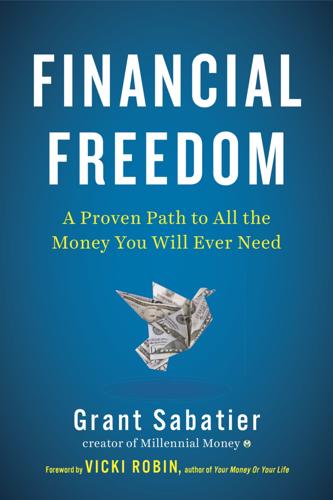
Financial Freedom: A Proven Path to All the Money You Will Ever Need
by
Grant Sabatier
Published 5 Feb 2019
Sell some handmade mittens on Etsy. Do you collect comic books? Auction some off on eBay. Do you like to drive? Become a driver for a ride-sharing company—or better yet, become a driver for all the ride-sharing companies in your city! Like music? Maybe you can work as a DJ or start selling beat packs online. The possibilities are pretty much endless. However, while there are an infinite number of ways to make money side hustling, not all side hustles are created equal. For example, if you drive for a ride-sharing company you can drive whenever you want, but you are still working for a large company—which, just like a full-time job, limits your income potential.
…
If you have a couple of friends or neighbors who drive the same direction as you, then carpooling is a simple way to cut costs, one that might be even more affordable than public transportation. Another option is ride-sharing using a service like Uber, Lyft, or Waze. In some locations, ride-sharing might even be cheaper than owning a car. I know people in Los Angeles, one of the most car-dependent cities on the planet, who use ride-sharing services to get everywhere because they’re so inexpensive. THE ART OF TRAVEL-HACKING Get out and explore the world. It’s never been easier to travel for less. While travel-hacking takes some work, with a little effort you can travel for a lot less.
…
US Household Annual (2016) You Monthly You Annual Housing Mortgage/Rent Property Taxes Maintenance and Cleaning Home/Renter’s Insurance Electricity Oil/Gas Water/Garbage/Sewer Phone Cable/Internet Other (Including vacation and hotels) Total Housing $18,886 Transportation Car Payment Maintenance/Repairs Gas/Oil License/Registration Insurance Bus/Train Fare Flights (including vacation) Taxis/Ridesharing Total Transportation $9,049 Food Groceries/Eat at Home Eating Out Total Food $7,203 Apparel & Services Clothing and Shoes Jewelry Dry Cleaning/Laundry Total Apparel and Services $1,803 Cash Contributions Donations Other Total Cash Contributions $2,081 Expense Avg.

Blitzscaling: The Lightning-Fast Path to Building Massively Valuable Companies
by
Reid Hoffman
and
Chris Yeh
Published 14 Apr 2018
This also means that there is far less mobility between firms, and, as a consequence, less intermixing of ideas and innovation. This may be changing; Jerry pointed out that the first generation of Chinese start-up giants is already beginning to provide the seeds of the next. For example, Cheng Wei, the founder of ride-hailing giant Didi Chuxing, learned how to scale at Alibaba, where he worked for eight years before starting his own firm. That experience probably helped Cheng scale Didi at a pace that makes Uber envious. Despite being founded three years later than Uber, Didi completed more rides in 2015 than Uber had during its entire existence to that point.
…
Uber wasn’t the first company to try to improve the experience of hailing a taxi. But prior to the technological innovation of the smartphone, complete with wireless Internet connection and GPS-enabled location-based services, Uber’s business model simply wouldn’t have worked. These innovations reduced the friction for both driver and rider, making Uber’s core UberX ridesharing model a mass-market possibility for the first time. Nor can companies afford to ignore technology innovation after they successfully blitzscale their way to City or Nation stage. Each and every one of the technology companies worth over $100 billion has used technology leadership to reinforce its competitive advantages.
…
For example, Uber often uses heavy subsidies on both sides of the marketplace when it launches in a new city, lowering fares to attract riders and boosting payments to attract drivers. By paying out more than it takes in on those early trips, Uber is able to reach critical scale faster than a more conservative competitor. Given the winner-take-most nature of the ridesharing market, that “wasteful” spending has helped Uber achieve a dominant market position in the cities in which it operates. Of course, that strategy isn’t possible without the ability to raise massive amounts of capital on favorable terms. In Uber’s case, it has been able to raise nearly $9 billion between its founding and the writing of this book.
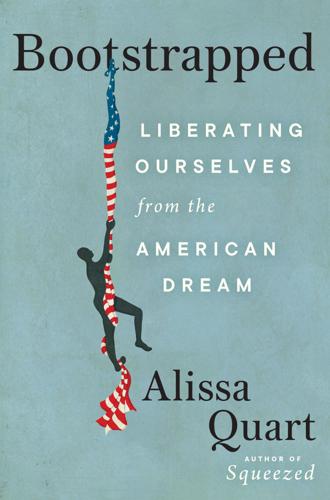
Bootstrapped: Liberating Ourselves From the American Dream
by
Alissa Quart
Published 14 Mar 2023
And while on a good day she’d make $180, she also had to pay to rent the car, which was $200 for the week, and then also gas, which averaged $90 per week. She was cashing out every day so she could put gas in the car every night. “I had to work constantly,” she recalled. After a year, Okawa started talking to other gig workers about the way these app-based companies treated their contractors. Uber and Lyft still classified ride-hailing drivers as contractors, so these companies didn’t pay into state unemployment funds. A University of California at Berkeley study found that they would owe the state $413 million, for the period from 2014 to 2019 alone, if they had correctly classified their drivers as employees. And when these workers are able to access funds, other taxpayers and the state foot the bill, and the drivers themselves are the ones paying taxes.
…
“The pandemic lifted up the need for us to focus on meeting each other’s needs,” said Kerr. “What better way to do it than collectively owned?” And not coincidentally, during the pandemic a number of such businesses took off. In 2021, three New York City drivers rolled out the Drivers Cooperative, a ride-hailing company and app owned and operated by cabdrivers fed up with what they saw as Uber’s exploitation of their work. They say they are now the largest worker cooperative in the country, with 3,500 members at the time of this writing. As one of the founders of the group, Ken Lewis, told NPR, “Our pitch to customers will principally be to support drivers who have had a really hard time.”
…
Sometimes she would make as little as two dollars a ride, sometimes even during a rainstorm. Okawa, an enterprising woman, then rushed to join other apps, like Postmates and the companies Bain worked for, DoorDash and Instacart. She started to prefer the grocery delivery because it seemed safer than ride-sharing during a pandemic, but her days were still long and she’d leave early in the morning to pick up orders from Walmart, because the drivers had started to notice that the pay for these same jobs went down as the day went on. She was still coming home every day twelve hours later. “I don’t know if I am making minimum wage,” she said.

Moon Prague, Vienna & Budapest: Palaces & Castles, Art & Music, Coffeehouses & Beer Gardens
by
Jennifer D Walker
,
Auburn Scallon
and
Moon Travel Guides
Published 15 Oct 2024
Bike- and Scooter-Sharing Note that Czech law restricts bikes and scooters to ride only in bike lanes and city streets, and not in pedestrian areas (such as Old Town Square and the Charles Bridge) or on sidewalks. As of 2023, Prague is also cracking down on all ride-sharing vehicles that are not parked in officially designated spaces, which will result in steep fines automatically charged to users through the apps. Review each company’s individual websites for updated parking rules to avoid unwanted charges (not to mention inconveniencing the residents sharing these streets and sidewalks). Rekola www.rekola.cz You’ll find locally owned pink ride-sharing Rekola bikes and scooters around the city. These are available for rent by downloading a mobile app, and there are different pricing levels.
…
Validate your ticket onboard in small yellow boxes near some of the doors. Like trams, buses run at all hours, and night buses also begin with the number 9 (e.g., 92, 97). Taxi and Ride-Sharing Taxi service in Prague is notorious for taking indirect routes and overcharging foreigners, particularly if flagged down off the street near touristy areas. You may ask your hotel or restaurant to call a cab for you to be on the safe side. Smartphone travelers can also use local ride-sharing providers Liftago (www.liftago.cz) or international operators Bolt (www.bolt.eu) and Uber (www.uber.com) for a safe ride that is tracked on a map and doesn’t require having the local currency on hand.
…
The trip between the airport and the city center takes roughly 35-55 minutes total. For an easy ride into the city, try local ride-sharing providers Liftago (www.liftago.cz) or international operators Bolt (www.bolt.eu) and Uber (www.uber.com). The city added Uber kiosks in both terminals in 2023 as the primary taxi provider, but you may use any rideshare service. These do require setting up a profile, so it’s best to download and enter information before your trip. Rideshares pick up passengers along the strip of pavement in the short-term parking lot that sits in front of Terminal 1 and Terminal 2 (not at the sidewalk in front of arrivals).
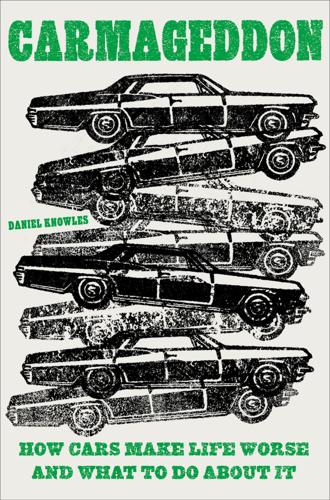
Carmageddon: How Cars Make Life Worse and What to Do About It
by
Daniel Knowles
Published 27 Mar 2023
profits property development protests public policy public transportation buses in cities in India in Japan in London Los Angeles Musk on subsidies race real estate redlining new roads registration, car Republicans rickshaws ride-sharing services ring roads road building Rothstein, Richard safety bicycle San Francisco, California Saumarez Smith, Otto scandals Schwartz, Sam, 1114 Sea Link (toll road) segregation pedestrian “self-driving” cars Shoup, Donald Shuto Kōsoku-dōro Kabushiki-gaisha (Metropolitan Expressway Company) Singapore size, car skyscrapers “slums” The Slums of Beverly Hills (film) solar power Sorensen, Andre South Side Chicago Speck, Jeff speed cameras speed limits sprawl in cities Standard Oil steam engines streetcars streets/roads costs of demand for residential ring subsidies car ownership public transportation suburbs suburbs sprawl in subsidies for white flight and subway systems SUVs taxes French, 249 gasoline taxis technology electronic vehicles internal combustion engine ride-sharing services Tesla Texas Toderian, Brent Tokyo, Japan tolls Toyota traffic accidents in cities city planning and gridlock Jacobs on lanes New York ride-sharing services increasing segregation trams impacted by traffic engineers trains/rail lines high-speed HS2 Japanese nationalized trams trucks tunnels Turbocharged Direct Injection (TDI) engines Uber United Kingdom (UK) car ownership Department for Transport Parliament United States (US) car ownership cars per capita cities Department of Energy Department of Transportation free parking in government National Transportation Safety Board oil industry in vehicular deaths Vancouver, Canada Victorian era Voie Georges-Pompidou Volkswagen walking Washington, D.C.
…
That means we need more space for humans, and less for cars. The car industry also wants you to think it has the solution to some of these problems. Electric cars will supposedly solve the problem of climate change emissions. Self-driving cars will solve the problem of traffic and make trains redundant. Ride-sharing services like Uber or Lyft will mean we do not need to own a car to always hail a ride. A few techno-lunatics even suggest that “flying cars” will shuttle people around cities quicker than ever before without even needing roads. All of these ideas are wrong. Producing enough batteries to replace every gasoline-driven vehicle will require untold amounts of cobalt, a large majority of which currently has to be mined in one of the poorest and most miserable countries on Earth, the Democratic Republic of Congo in central Africa, the source of more than half of the world’s supply.
…
But their promise, that car-sharing would somehow alleviate traffic, has proven hollow. Uber’s investors haven’t even made a profit. All they have done is generate traffic. A 2018 study by Schallar Consulting found that Uber and Lyft increased the number of cars on some American city streets by 180 percent. Another study of San Francisco found that ride-sharing companies accounted for more than half of the city’s growth in traffic. Lyft drivers spend a fifth of their time driving around empty, waiting for passengers. In Britain, Ubers are not carrying a passenger for 58 percent of the time they are driving. Cars are not just about how you get around.

Ghost Work: How to Stop Silicon Valley From Building a New Global Underclass
by
Mary L. Gray
and
Siddharth Suri
Published 6 May 2019
According to Smith, in 2016, 8 percent of U.S. adults reported earning money in the previous year by doing online tasks (such as surveys and data entry), ride hailing, shopping/delivery, cleaning/laundry, and other tasks. Kidscount.org shows census data that estimates there were 249,747,123 adults in the U.S. in 2016. Thus, 8 percent of the roughly 250 million adults gives our estimate of 20 million. The margin of error for the survey was 2.4 percent, so a more conservative estimate would be 5.6 percent of 250 million, or 14 million. Interestingly, Pew estimates that the fraction of U.S. adults who got paid to do an online task like a survey or data entry was 5 percent, whereas the fraction that got paid for ride hailing was only 2 percent.
…
Economist Lawrence Mishel and his research team estimate that between 0.5 and 1 percent of working adults in the U.S., or 1.25 to 2.5 million people, participate in the on-demand gig economy. But they come to that number through a very specific study of Uber drivers and the assumption that Uber and other ride-hailing mobile apps make up the bulk of gig work. A study produced by the JPMorgan Chase Institute found that 4.3 percent of U.S. adults, or 10.73 million people, had worked an online-platform-economy job at least once between 2015 and 2016.21 A revolving door of temporary tasks defines this job market.
…
For example, the Pew Research Center found that most customers hold a mixed, often contradictory set of beliefs about what Uber does and does not owe driver-partners.4 Most respondents felt strongly that ride services like Uber should not have to follow the same rules and regulations as taxis. The majority of respondents also viewed ride-hailing services’ drivers as independent contractors rather than employees. Yet they also expected Uber, as much if not more than the driver, to manage their customer experience. This contradicts all of the current rules we have about how much a business can manage or direct those working for them on contract and what help or support an independent contractor can receive from a business that is not one’s official employer.
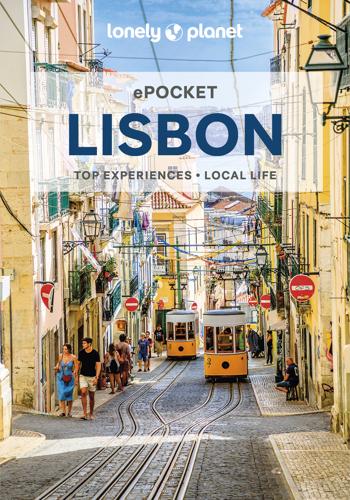
Lonely Planet Pocket Lisbon
by
Sandra Henriques
and
Joana Taborda
Published 15 Apr 2023
AFor shorter trips, you can use Gira (www.gira-bicicletasdelisboa.pt), the city’s bike-sharing scheme with 48 stations around the city (and more on the way). Taxi & Ride-Share ATaxis in Lisbon are plentiful. Try the ranks at Rossio and Praça dos Restauradores, near stations and ferry terminals. AThe fare on the meter should read €3.25 (daytime minimum fare). AYou will be charged extra for luggage and 20% more for journeys from 9pm to 6am. AMany locals prefer to use taxi apps and ride-share services, which are markedly cheaper than conventional taxis. A few popular apps include Uber (www.uber.com), Bolt (www.bolt.eu) and Taxi-Link (www.taxi-link.com).
…
Arriving in Lisbon Aeroporto de Lisboa AAround 6km north of the centre, the ultramodern Aeroporto de Lisboa operates direct flights to major international hubs. AThe airport is connected to central Lisbon by metro (a single costs €1.50). It is the terminus of the red line. AA taxi into central Lisbon should cost around €16, plus €1.60 for luggage. Avoid queues by flagging one down at the Departures hall. AUnlike taxis, ride-sharing services such as Uber and Bolt can only do pickups outside the Departures zone on the 2nd floor. At Arrivals, take the escalator to your right. Estação Santa Apolónia AMetro services run every few minutes, providing speedy connections to central Lisbon. A single ticket costs €1.50 to anywhere in the city.
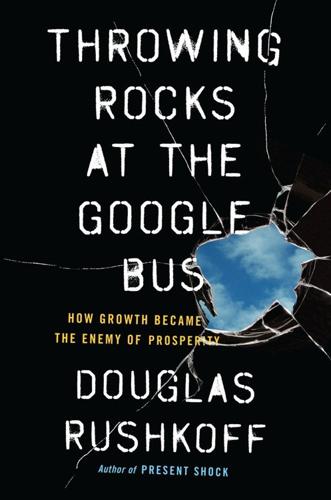
Throwing Rocks at the Google Bus: How Growth Became the Enemy of Prosperity
by
Douglas Rushkoff
Published 1 Mar 2016
For example, as an alternative to investing in the platform monopolies favored by most of today’s venture capitalists, Fred Wilson has invested in Uber competitor Sidecar, which he argues “has built a true open marketplace for ridesharing.”31 Sidecar does not offer the extreme convenience of Uber, but it’s not really geared toward increasing the efficiency of business travelers. It’s more of a peer-to-peer ridesharing app, through which passengers book lifts from drivers usually in advance. The app lets passengers connect with drivers and then gets out of the way, emphasizing those human-to-human connections over the primacy of its own platform.
…
Uber can’t leverage anything if it’s just one of several competing ride-sharing apps. That’s why the company must behave so aggressively. Uber’s rival, Lyft, documented over 5,000 canceled calls made to its drivers by Uber recruiters, allegedly in an effort to get drivers to change platforms.26 It’s not that there’s too little market share to go around; it’s that Uber doesn’t mean to remain a taxi-hailing application. In order to become our delivery service, errand runner, and default app for every other transportation-related function, Uber first has to own ride-sharing completely. Only then can it exercise the same sort of command as the chartered monopolies on whose code these modern digital corporations are still running.
…
In contrast to Uber’s centralized price-fixing and opportunistic gouging,32 Sidecar asks drivers to set their own prices by negotiating with riders within the application. Sidecar facilitates a decentralized free market. The app has been configured to transcend the traditional biases of the corporation against real-world human connection. It’s a more social rideshare program, not a gray-area, unregulated taxi service, so it’s not competing head-to-head against full-time livery drivers. Uber surely wins in an always-on world where agility is the key to success. Sidecar wins in a slightly slower world where riders plan ahead, giving them the added luxury of being choosier about price, driver, and amenities.

What's Mine Is Yours: How Collaborative Consumption Is Changing the Way We Live
by
Rachel Botsman
and
Roo Rogers
Published 2 Jan 2010
Modern technology including online social networks and GPS-enabled handheld devices offers a multitude of ways to solve this problem. The ubiquity of cheap connectivity that surrounds us can maximize the productivity and usage of a product and mop up the surplus created by hyper-consumption without creating costs or inconveniences. Robin Chase, founder of Zipcar and the ride-sharing service GoLoco, and one of the pioneering thinkers on maximizing idling capacity via technology, says, “This was what the Internet was made for, an instant platform sharing excess capacity among many people.” Ilan Bass, an old friend of Rachel’s, started a new job in London. He had never been a fan of the underground in rush hour.
…
‘The question is,’ said Humpty Dumpty, ‘which is to be master—that’s all.’ ”15 Meanings of words can change as our cultural acceptance of ideas is reframed.16 Hotels don’t call their business “bed sharing” for good reasons, and as Jonathan Zittrain, a professor of law at Harvard University, says, craigslist does not call its ride-sharing board “hitchhiking.” Collaborative Consumption is not asking people to share nicely in the sandbox. On the contrary, it puts a system in place where people can share resources without forfeiting cherished personal freedoms or sacrificing their lifestyle. A distinguished political scientist who shares this view is seventy-six-year-old Indiana University professor Elinor Ostrom.
…
In his book From Counterculture to Cyberculture Fred Turner envisioned that these citizens desire a world in which “Each individual could act in his or her own self-interest and at the same time produce a unified social sphere, in which we’re ‘all one.’ ”5 Collaborative Consumption Systems Swap trading, time banks, local exchange trading systems (LETS), bartering, social lending, peer-to-peer currencies, tool exchanges, land share, clothing swaps, toy sharing, shared workspaces, cohousing, coworking, CouchSurfing, car sharing, crowdfunding, bike sharing, ride sharing, food co-ops, walking school buses, shared microcrèches, peer-to-peer rental—the list goes on—are all examples of Collaborative Consumption. Some of these may be familiar already, some not, but all are experiencing a significant growth surge. Although these examples vary in scale, maturity, and purpose, they can be organized into three systems—product service systems, redistribution markets, and collaborative lifestyles—which are the subject of the next three chapters.

Street Smart: The Rise of Cities and the Fall of Cars
by
Samuel I. Schwartz
Published 17 Aug 2015
Though I have to admit that another part of the reason I find VIA, Uber, and their ridesharing competitors so fascinating is that so many of the people who are now working on these kinds of complex traffic problems are, like me, lapsed physicists, using sophisticated mathematics to improve the world of transportation. (In fact, my professor brother, forty years after rejecting me as a physics has-been, invited me to a physics PhD candidate’s defense of her thesis, which mathematically described the flow of traffic on highways. Now who’s the scientist?) Actually, although Uber is often described as a ridesharing company, the “sharing” part is a little disingenuous.
…
Competitors like Sidecar (launched January of 2012) and Lyft (founded summer of 2012 as an extension of an earlier city-to-city ridesharing service known as Zimride) noticed the potential upside for a business that could extract revenue from travelers without actually investing in anything as expensive as buses, trains, or even cars; all that they needed were software algorithms and marketing. Though the California Public Utilities Commission, under pressure from existing taxi services, shut them all down, it allowed them to reopen the following year as what the state of California now calls “Transportation Network Companies.” Uber, by far the biggest kid on the ridesharing block, expanded to Paris, Toronto, and London in 2012, and hasn’t looked back.
…
You don’t have to spend ten years learning the commuting ropes to know whether the train or bus you’re on is an express or a local, or even when it’s going to show up. You just need a smartphone. Smartphones are also all that’s needed to take advantage of other revolutionary new transportation options: ridesharing services like Via, car-sharing like Zipcar, and—especially—dispatchable taxi services like Uber and Lyft.c However, these and other cool new businesses didn’t create Millennial distaste for driving. They just exploited it. The question remains: why do Millennials find the automobile so much less desirable than their parents, grandparents, and great-grandparents did?

Lonely Planet Malta & Gozo
by
Lonely Planet
Do also note that riding bikes or e-scooters along the pedestrians-only promenade from Sliema to Spinola Bay is not permitted. See publictransport.com.mt/en/tallinja-bike for more information and rental costs. Rideshare Service & Taxi App-based rideshare services offered are Uber and Bolt. Many of the cars are e-vehicles and the majority are based around Sliema and St Julian’s. Note that rideshare services depart from the crowded car park to the left of the arrivals terminal at Malta airport. It can sometimes be slightly confusing finding your driver. Taxis leave from across the road in front of the terminal.
…
The Middle Level Forming the focus of guided tours, the Hypogeum’s middle level consists of several different rooms and chambers. During their construction, it’s thought giant rocks were lifted to the surface by an ancient engineering system known as Cyclopean rigging. Don’t Miss Your Slot Late arrivals to the Hypogeum are strictly not admitted, so arrive on time. Parking is limited around Paola and bus or ride-share transport is recommended. Bus routes 1, 2 and 3 travel from Valletta’s main bus station (20 minutes) to the Pjazza stop on Paola’s main square. From the square to the Hypogeum is 400m south, and the Tarxien Temples are 600m to the east. The Main Chamber Circular in aspect, the main chamber of the middle level is carved out of rock.
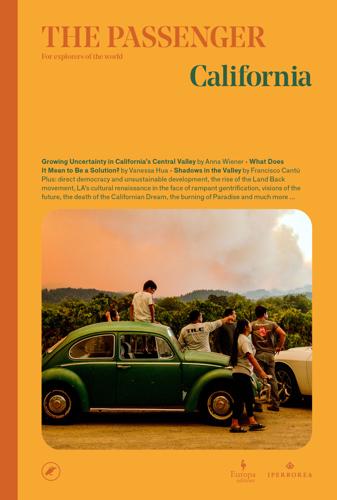
The Passenger
by
AA.VV.
Published 23 May 2022
But once refused inclusion in the exemption list, Uber and Lyft took a different stance altogether; they chose to disregard AB5 in its entirety and refused to reclassify gig workers as employees. In turn, the California attorney general sued the rideshare companies, and in the summer of 2020 the court ruled against Uber and Lyft and said that they were misclassifying gig workers as independent contractors. On 10 August 2020, the companies were given ten days to comply with AB5, but they threatened to shut down their rideshare services across the state. Through the app, users were sent an ominous message declaring services to be terminated across California on 20 August. On that date, the companies announced they were granted an extension by the court until 4 November.
…
On that date, the companies announced they were granted an extension by the court until 4 November. They wasted no time in crafting the language of Prop 22 so it could reach the ballot by 3 November. The rideshare companies constructed something that at first glance appears to be a kind of middle ground but under closer scrutiny appears to lean far to the right. Prop 22 provides a healthcare stipend that accrues with hours worked but stops short of providing health insurance. There is no job security when demand is low, but the companies boast that workers have the freedom to choose their own schedules.
…
Another novel aspect of Prop 22 is a small proviso that states that it would require seven-eighths of the legislature to agree to make any amendments, rather than the typical two-thirds needed, effectively quashing any legislative resistance to the measure. It would seem that the only challenge left that could overturn it would be another ballot measure. It is worth noting here that Uber has yet to turn a profit, although their net loss shrank in 2021 to around $100 million, so profitability may prove to be around the corner after all, now that rideshare services have become ubiquitous in California. Uber, in collaboration with DoorDash, Lyft, Instacart, and Postmates, poured money and resources into backing Prop 22. These companies either pressured management overtly to promote the Yes on 22 campaign to employees or else forced workers to include Yes on 22 stickers with every customer’s order, printed grocery bags with Yes on 22 emblazoned on the side, and developed a pop-up window within their apps that gave drivers the option with every ride to “Support 22” or click “OK.”

AI 2041: Ten Visions for Our Future
by
Kai-Fu Lee
and
Qiufan Chen
Published 13 Sep 2021
By that time, people who love driving will do what equestrians do today—go to private areas designated for entertainment or sports. As autonomous vehicles, electric cars, and ride-sharing mature together, fewer people will buy cars (effectively reducing monthly expenses for families), parking garages can be largely repurposed (freeing up huge amounts of wasted space, as cars are parked 95 percent of the time), and the total number of cars can be reduced significantly (since ride-sharing AVs can operate efficiently 24/7). Collectively, these changes will reduce traffic congestion, fossil fuel consumption, and air pollution. Alongside the lives saved and productivity gained, there will be disruptions to other aspects of our society.
…
IMPLICATIONS OF FULLY AUTONOMOUS (L5) VEHICLES When L5 AV roams the road, it will bring about a revolution in transportation—on-demand cars that take you to your destination with lower cost, greater convenience, and improved safety. When your calendar sees that you need to be driven to a meeting in an hour, an autonomous ride-hailing app like Uber or Lyft could order a car for you just as you’re ready to depart. Uber’s AI algorithms will move their AV fleet to be closer to people who might need a ride soon (say, when a concert is about to end). Vehicles’ routes can be optimized based on minimizing the total amount of time all users wait idly, and the total amount of time Uber AVs are empty, while ensuring that the car’s batteries are charged along the way.
…
In a decade, the 1.35 million fatality figure could go down dramatically. The average American drives eight and a half hours per week. In the future AV world, people would gain these eight and a half hours back for their lives. The interiors of the AVs will be reconfigured for work, communication, play, and even sleep. Many ride-sharing AVs may be designed as minicars, since we tend to ride in cars with just one or two people. But even a single-person car may be equipped with a reclining seat, a refrigerator with drinks and snacks, and a large screen. More data leads to better AI, more automation leads to greater efficiency, more usage leads to reduced cost, and more free time leads to greater productivity.

Don't Be Evil: How Big Tech Betrayed Its Founding Principles--And All of US
by
Rana Foroohar
Published 5 Nov 2019
CHAPTER 8 The Uberization of Everything February 2017 wasn’t a good month for former Uber CEO Travis Kalanick. The ubiquitous ride-hailing business he founded had been drawing criticism from municipal lawmakers and union activists—particularly in large cities like New York and San Francisco—for years, but their PR crisis reached a boiling point following a series of scandals that started with a blog post from a former engineer, Susan Fowler, alleging harassment and rampant sexism at the company. That news went viral in the same month that Waymo, an autonomous vehicle unit owned by Google’s parent company, Alphabet, filed a federal lawsuit against the ridesharing company alleging that a software engineer had stolen its trade secrets and taken them to Uber, which is developing its own autonomous vehicles.
…
In her book Uberland, the social scientist Alex Rosenblat rode five thousand miles with numerous Uber drivers in twenty-five cities across the United States and Canada. She found that, not surprisingly, while Uber itself took most of the upside of the business, drivers were often left to bear the cost and the downsides of the disruptive technology on their own. Lyft, Uber’s biggest competitor, has always been known as the kinder, gentler ridesharing company, in part because its CEO Logan Green has been more inclined to discuss the downsides of the sharing economy in a thoughtful and open way (that and the fact that he hasn’t been caught on a dashcam screaming at his own drivers). Green is, for example, concerned about the potential mass displacement of drivers in the United States (which represents the largest single category of work for men with a high school degree or less) by autonomous vehicles.
…
Four years ago, I watched Kalanick give a speech to local business leaders in Boston, during which he boldly proclaimed, “I see a world in which there is no more traffic in Boston in five years.” Uber’s current CEO, Khosrowshahi, has continued to laud the potential traffic- and pollution-reducing effects of the company’s reign in urban areas. Yet today, there is disturbing research that shows that ridesharing, while possibly reducing car ownership, may also increase the number of miles traveled in cities, thus having the effect of increasing transit and pollution issues.35 Such issues were starting to be apparent when I began covering Uber years ago. Yet Kalanick himself, in typical move-fast-and-break-things mode, wasn’t interested in discussing them.
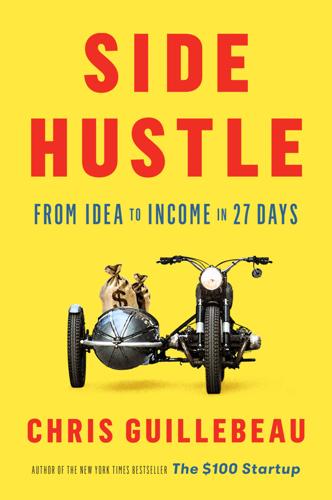
Side Hustle: From Idea to Income in 27 Days
by
Chris Guillebeau
Published 18 Sep 2017
.* STARTER IDEAS VERSUS NEXT-LEVEL IDEAS (NLIs) As you learn to think more about hustle ideas, you’ll notice other differences among them. Some ideas are “starter” ideas—they aren’t bad, but they also have severe limitations. Then there are “next-level ideas” (NLIs) that have much better long-term potential. On our imaginary drive, I mentioned ridesharing, where you essentially operate your own car as a taxi. A lot of people get started with side hustles by driving for Uber, Lyft, or some other rideshare service. It’s not a bad start at all; you can work when you want, and the majority of the fares are yours to keep. Still, it also has a severe limitation: since you only make money when you’re driving, you’re still just earning an hourly wage that is capped by market demand, competition from other drivers, and of course, your own limited supply of free time.
…
Still, it also has a severe limitation: since you only make money when you’re driving, you’re still just earning an hourly wage that is capped by market demand, competition from other drivers, and of course, your own limited supply of free time. In my last book, Born for This, I told the story of Harry Campbell, an Uber driver who created an online community called The Rideshare Guy. Instead of just ferrying people around all the time, he now also earns money coaching other drivers and serving as an expert commentator on the booming rideshare industry. This is what I mean by a next-level idea. See the difference? Since new drivers are signing up all the time, Harry’s market demand is nearly inexhaustible. Starter idea: Drive for Uber Next-level idea: Coach other Uber drivers As another example, back when I got started hustling more than two decades ago, I listed various items for sale on online auction sites.
…
The first thing to notice is that we’re not the only ones on the road. Who else is driving today, and where are they going? Are they driving to work or running errands? Here we can already spot several options. First, all these people need to get somewhere. If you have a car and live in a city, you can sign up for a rideshare service and drive them where they need to go—even if you shuttle people around for just an hour before you have to get to your job. The good thing about signing on with these services is that you decide exactly when and how much you want to work. (Note: this might not actually be the best idea for you, but we’ll get to that in a moment.)

Lab Rats: How Silicon Valley Made Work Miserable for the Rest of Us
by
Dan Lyons
Published 22 Oct 2018
From 2013 to 2016, the average New York cabbie’s annual bookings dropped 22 percent, and the value of a New York taxi medallion plunged 85 percent from more than $1 million to less than $200,000, according to the New York Times. Within months of Schifter’s suicide, four more drivers killed themselves in New York. Their union held a protest, placing four coffins outside City Hall and begging the city to regulate the ride-sharing operators. “We are sick and tired of burying our brothers,” the union president said. Twenty years ago, pundits believed the Internet was going to make the world better in all sorts of ways, from perfecting democracy to saving the planet. Best of all would be the financial impact. During the heady days of the first dotcom boom, when stocks were soaring and people were mooning over the magical powers of the web, Wired founding editor Kevin Kelly declared the Internet would usher in decades of “ultraprosperity,” with “full employment…and improving living standards.”
…
As the dollars get bigger, so does the stress, especially when employers take advantage of the leverage they’ve gained. In the hands of a bad employer those options can make people incredibly vulnerable to abuse and exploitation. That is reportedly what happened at Uber. For several years after its founding in 2009, Uber was the hottest tech unicorn in the world. Getting a job at the San Francisco ride-sharing company was like winning a golden ticket. But Uber’s managers took full advantage of that. Uber became a toxic, stressful place to work, with bullying, allegations of sexual harassment, and a notoriously cruel culture. “It’s a money cult” is how a former worker described Uber to BuzzFeed in 2017.
…
Significantly, they actually call themselves “Amabots.” An Automaton Class Uber manages its three million drivers almost entirely with software. Why not? The company makes no secret of the fact that it hopes one day (as soon as possible) to get rid of human drivers entirely and replace them with self-driving cars. For now, the ride-sharing company treats human drivers as poorly as it can and keeps them at arm’s length. Software becomes a barrier between worker and employer. To the driver, what is Uber? Where is it located? What does it look like? Uber is a black box. Uber is an app on a smartphone screen. Drivers rarely talk to actual human managers at Uber, except when being recruited, and sometimes not even then.

Rule of the Robots: How Artificial Intelligence Will Transform Everything
by
Martin Ford
Published 13 Sep 2021
Once the cars become autonomous, the companies will find themselves in the business of owning vast fleets of vehicles and will therefore be responsible for all the hassle and expense that comes along with that. Uber in effect will look quite a lot like Hertz or Avis—neither of which is valued as a “tech company.” Moreover, the vehicles owned by the ridesharing companies will be far more expensive given the specialized equipment, such as lidar systems, that they require. In the aftermath of the coronavirus pandemic, there may also be far more emphasis placed on properly cleaning and sanitizing vehicles on a frequent basis. This, again, is something that is currently the responsibility of drivers.
…
Aside from the technology, they’ve also developed a potential solution to the business model problem. At the 2019 Autonomy Day event, Musk described a scheme in which Tesla owners would be able to have their cars participate in a robotaxi service run by the company. Tesla would get a cut of the ride-sharing fee in the same way that Apple generates revenue from its App Store. One interesting thing about this proposal is that it solves the ownership and maintenance problem that might eventually plague companies like Uber and Lyft. Tesla may have found a way to step into the role of a pure internet intermediary, while avoiding the need to own a fleet of cars.
…
Seltz-Axmacher believes that the challenges faced by the industry are not yet fully appreciated and that investors missed an opportunity to safely put a fleet of self-driving trucks on highways in the near term, in part because of an overriding focus on the promise of full automation and on the more advanced features that were often demonstrated by competing startups, but were nowhere close to being ready for real-world deployment. Developing sufficiently capable technology looms as the greatest challenge for the autonomous vehicle industry, but I think there are also some real questions regarding the potential business models for such vehicles. The natural place to deploy self-driving cars is generally assumed to be in ride-sharing services. Uber and its competitors have been subsidizing the cost of every ride by drawing on capital obtained through venture funding or, more recently, IPOs.60 Given that this is unsustainable, self-driving cars are widely viewed as the long-term solution. Once the driver, who generally gets seventy to eighty percent of the fare, is out of the picture, the companies ought to have a smooth path to profitability.
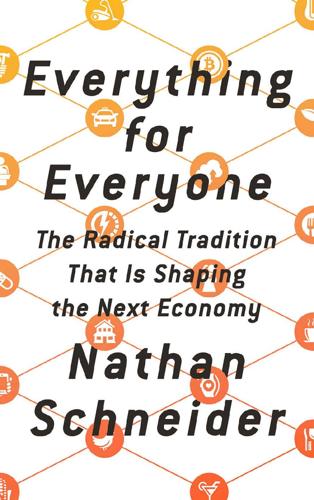
Everything for Everyone: The Radical Tradition That Is Shaping the Next Economy
by
Nathan Schneider
Published 10 Sep 2018
Devin Balkind, founder of coopData.org and a collaborator of mine in building the Internet of Ownership, offers a critique of data practices in the co-op sector in “When Platform Coops Are Seen, What Goes Unseen?” The Internet of Ownership blog (February 10, 2017). 26. See platform.coop/2015/participants/maria-del-carmen-arroyo; on Austin and the aftermath, Jeff Kirk, “The Austin Ride-Hail Chronicles: Game Over for RideAustin?” Austin Startups (June 15, 2017); Anca Voinea, “Corbyn’s Digital Democracy Manifesto Promotes Co-operative Ownership of Digital Platforms,” Co-operative News (August 30, 2016). 27. Lina Khan, “Amazon’s Antitrust Paradox,” Yale Law Journal 126, no. 3 (January 2017); Jonathan Taplin, “Is It Time to Break Up Google?”
…
We think we are in some sense members of a digital commons while we relinquish our ownership rights. At least Millet’s gleaners knew that’s what they were. Ubiquitous platforms like Facebook and Google gather reams of data about users and offer it for sale to advertisers and others. We know this, to an extent. But our data is also the business of the ride-sharing apps, the office productivity apps, and the apps that use us to train the intelligence of other apps, along with data brokers whose names we’ll never know but who trade in the stuff of our lives. Users supply a growing surveillance economy based on targeted advertising and pricing, which, intentionally or not, can bleed into discrimination of vulnerable populations.
…
The city of Barcelona has taken steps to enshrine platform cooperativism into its economic strategies. After Austin, Texas, required Uber and Lyft drivers to perform standard safety screenings, the companies pulled their services from the city in May 2015, and the city council aided in the formation of a new co-op taxi company and a nonprofit ride-sharing app; the replacements worked so well that Uber and Lyft paid millions of dollars in lobbying to force their way back before Austin became an example. Meanwhile, UK Labour Party leader Jeremy Corbyn issued a “Digital Democracy Manifesto” that included “platform cooperatives” among its eight planks.26 The challenge of such digital democracy goes beyond local tweaks.

The Launch Pad: Inside Y Combinator, Silicon Valley's Most Exclusive School for Startups
by
Randall Stross
Published 4 Sep 2013
They call their startup Ridejoy, after trying out Ridebank, Ridetastic, and Ridebee. Jason Shen introduces the idea. “We’re everything for rides. We want to change the way people travel by making it super easy and fun to share rides with other people.” The number of rideshare posts on Craigslist—about a thousand are listed at the moment for just the San Francisco Bay Area—provides encouraging evidence of demand. Shen says they will start off with long-distance ridesharing, to the upcoming Burning Man festival in the desert and also between San Francisco and Los Angeles. As the other startups do at the end of their presentations, Shen offers to the batch the expertise of his team’s members: “Kalvin and Randy are developers,” he says, and as for himself, he knows how to stay motivated in the face of rejection.
…
When writing on his personal blog, “The Art of Ass-Kicking,” Shen projects fearlessness. But today, standing before the assembled group, he seems ill at ease and relies too heavily on reading his prepared text word for word. The only time he speaks in a natural voice is when he talks about the shortcomings of Craigslist as a ridesharing service. Graham notices this. In his critique, he says, “You became strangely animated when you talked about how Craigslist sucked.” The audience laughs. Graham wants everyone to draw a lesson from this. “You should choose the part of your presentation where you want to be most animated. You don’t want to be animated the whole way through—you’ll seem like a used-car salesman.
…
As he approaches the dais, the former collegiate gymnast does a cartwheel.3 “I thought you guys need a little pick-me-up or something,” he says, and goes into his pitch. “Ridejoy is the community marketplace for rides. If you’re going on a trip, you can list extra seat space in your car. And if you need to get somewhere, you can find a ride using our site.” He explains that Ridejoy is adding an element of “reputation” to ridesharing, a mechanism for payments, and a “great user experience.” Shen anticipates a question that may be in the minds of the audience members: “Maybe this is some kind of crazy San Francisco hipster thing. It’s not.” He shows a photograph of an older man. “That’s Michael. He’s a former director of Merrill Lynch.
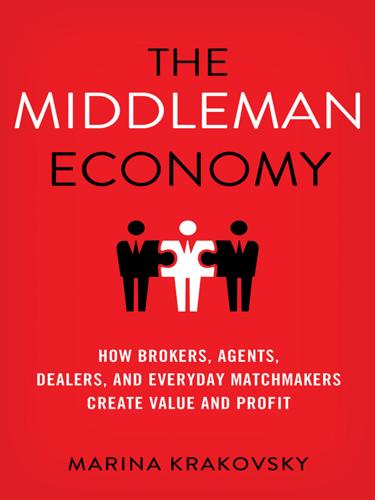
The Middleman Economy: How Brokers, Agents, Dealers, and Everyday Matchmakers Create Value and Profit
by
Marina Krakovsky
Published 14 Sep 2015
This is similar to the discussion in the chapter on Enforcers of state-of-the-art reputation systems that can sometimes do a better and more efficient job of eliciting good behavior than government institutions. You might say Maples prefers to back what is righteous rather than what is legal. Why does he love pitches in that legal gray area? “Those could be good businesses to fund because a lot of times there are not a lot of competitors,” he explains. (Even though Uber has a competing ride-sharing service, UberX, Maples points out that Lyft started before Uber launched UberX.) Whether the laws eventually side with the entrepreneur’s venture or against it is a huge risk—the kind that many people are afraid to take—but that is precisely what makes the bet attractive; if it turns out to be right, the gain will be enormous and, because it is a nonconsensus venture, it won’t be shared by many others.
…
If you haven’t heard of this behemoth from Eden Prairie, Minnesota, it’s only because its customers are other businesses: rather than arranging rides for busy urbanites, as Lyft and Uber do, C. H. Robinson acts as freight broker for companies that need to quickly find truckload capacity to carry freight from one factory, warehouse, or retailer to another. At its core, C. H. Robinson does much the same thing for buyers and sellers as the ridesharing companies do. Like those companies, C. H. Robinson doesn’t actually own a fleet, and instead acts as a middleman between its customers (the shippers) and its suppliers (the carriers). And because of its large network of carriers—43,000 transportation providers in 2013—it’s able to meet customer demand much more quickly than shippers could by tapping a smaller network, let alone trying to contract with carriers directly.
…
“You don’t want to go to an insurance company that has only 100 subscribers—you want 10 million subscribers,” Chopra explains, because pooling across 10 million subscribers produces outcomes that are more predictable. For many types of middlemen, the minimum scale is obviously lower, but a certain scale is always important. A ridesharing service consisting of just ten drivers is less able to cope with unpredictable demand than a service of 100 drivers. A placement agency with just ten contractors can’t fill the sporadic needs of a client firm. “In being a middleman, scale matters,” Chopra says. The other thing that matters is unpredictability, of course, because it’s how a middleman can provide value to people who prefer predictability: there is no risk pool without risks.
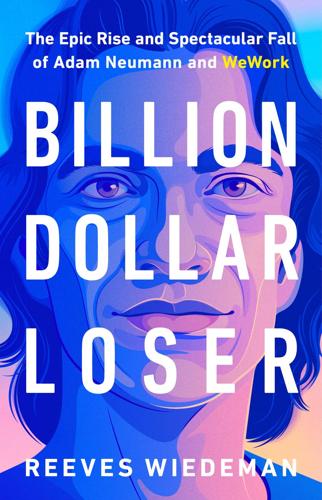
Billion Dollar Loser: The Epic Rise and Spectacular Fall of Adam Neumann and WeWork
by
Reeves Wiedeman
Published 19 Oct 2020
In early 2017, around the same time Adam was mulling his invitation to the White House, the Trump administration released its executive order banning travel from a group of Muslim nations. The order produced outcry across the country, and protesters swarmed airports. Both people and corporations took sides; a Twitter campaign, #DeleteUber, erupted after the ride-hailing company was seen as trying to profit from the protests. The travel ban seemed to be a natural place to take a stand for WeWork and for Neumann—an immigrant building a global company predicated on bringing people closer together. WeWork’s public affairs team presented Adam with several possible responses.
…
“Are you looking for good? Bad?” I had spent the latter half of the 2010s as a staff writer at New York magazine, exploring the increasingly warped start-up economy. I wrote about a rap lyrics website aspiring to “annotate the internet”; about Vice, a punk magazine looking to become “the new CNN”; and about Uber, the ride-sharing company that insisted it was much more than that. I visited Uber’s headquarters in the spring of 2017, just as Travis Kalanick was being chastened for recklessness in the rabid pursuit of global domination. It felt as if most start-ups could think of no other worthy goal, and now an office-management company in New York City was deploying the same bravado as the new class of world-altering tech companies emerging from Silicon Valley.
…
Masa had poured billions into WeWork and Uber at the peak of their private valuations. SoftBank’s Uber shares were now underwater, just as Masa was pitching investors on joining a second $100 billion Vision Fund. He could scarcely afford a repeat. Adam thought he knew how to avoid Uber’s fate. When the ride-sharing company announced its first post-IPO earnings, at the end of May, it reported not only that its losses continued to mount but also that it had experienced its slowest growth in years. This was typical for companies leading up to an IPO, as they tried to showcase fiscal restraint. But Adam told others that he believed the diminishing growth had spooked investors.

Whistleblower: My Journey to Silicon Valley and Fight for Justice at Uber
by
Susan Fowler
Published 18 Feb 2020
She stopped combing through her own notes for a moment and held her pen in her hand, staring at me over the dark rectangular frames of her glasses, awaiting my answer. “I understand,” I said, nodding. Albarrán crisply put her pen back down to her notes. Two months earlier, I had written and published a blog post about my experiences as a software engineer at the ride-sharing company Uber Technologies. In the blog post, which I had titled “Reflecting on One Very, Very Strange Year at Uber,” I described being propositioned by my manager on my first official day on Uber’s engineering team; the extent to which Uber’s managers, executives, and HR department had ignored and covered up harassment and discrimination; and the retaliation I’d faced for reporting illegal conduct.
…
Everyone I met used Uber, and after every meeting or party or bar outing, and at the end of every night, all I would hear was “Did you call your Uber?” “Can I call you an Uber?” and “Is that your Uber or mine?” It seemed as if half the cars on the street were being driven by Uber drivers. Uber was ubiquitous, its name synonymous with hailing a ride-share, a complete replacement for the old world of standing on the curb waving down yellow taxicabs. It felt strange to me at first—getting into a stranger’s car, trusting that this regular person in his regular car had both the driving skills and the experience to safely take me where I needed to go—especially after spending the last three years hailing yellow cabs in Philadelphia.
…
I met a man who had recently been homeless, who used to dig old soda and beer cans out of trash bins and recycle them in order to buy food; he was able to lease a car and drive for Uber and was no longer living on the streets. I met college students who drove during their breaks. All of the Uber drivers had one thing in common: they all seemed to love driving for Uber. A picture of Uber’s role in society began to form in my mind, and I started to really like this strange ride-sharing company. Even so, at first I thought it would be best to ignore the message from Uber. I didn’t want to look like a job-hopper, and even though my job was rough, the rest of my life was filled with joy. I had a busy, full social life: I spent a great deal of time with my friends from Plaid, my younger sisters flew out from Arizona to see me, and many of my old friends traveled to San Francisco from Philadelphia and Arizona just to visit me.
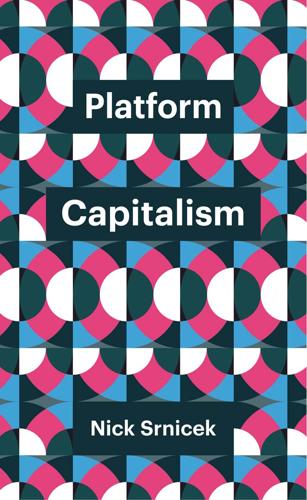
Platform Capitalism
by
Nick Srnicek
Published 22 Dec 2016
The convergence thesis helps explain why Google is lobbying with Uber on self-driving cars and why Amazon and Microsoft have been discussing partnerships with German automakers on the cloud platform required by self-driving cars.28 Alibaba and Apple have made major investments in Didi, Apple’s partnership being particularly strategic, given that iPhones are the major interface to taxi services. And nearly all of the major platforms are working to develop medical data platforms. The trend to convergence is igniting international competition as well: intense struggles occur in India and China over who will dominate the ride-sharing industry (Uber, Didi, Lyft) and who will dominate e-commerce (Amazon, Alibaba, Flipkart). Alibaba is already the largest e-commerce site in the world as measured by the volume of its sales,29 and Flipkart is valued at around $15 billion. Under the pressures of competition and the subsequent imperative to expand, we should expect these platforms to acquire as many companies as they need.
…
Uber also spends an immense amount of money on lobbying and marketing, attempting to ensure favourable regulations and growth in its user base. Such is its desperation that Uber has even attempted to sabotage its competitors. It has made extensive use of this tactic in its dealings both with long-running cab companies and with alternative ride-sharing platforms. To fight off one competitor, for instance, Uber took to calling up and cancelling rides with its rival, in an effort to clog up that rival’s supply of drivers.48 When competition through data does not work, money and sabotage remain as options for lean platforms. This leads us to the last major limit: lean platforms are entirely reliant on a vast mania of surplus capital.
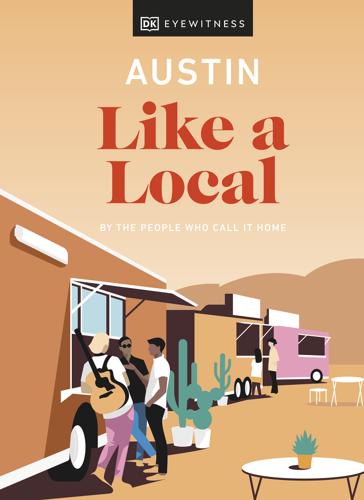
Austin Like a Local
by
DK
When you want to board, motion to the driver; then, when you’re about a block from your destination, trigger the stop signal by pushing the button or pulling the cord. By car or taxi Like the rest of Texas, Austin is car-centric. So, using a rideshare app or rental car is the way to go if you’re planning on zipping around to different parts of the city in a short period of time. Some of the most popular rideshare apps include Uber, Lyft, and nonprofit RideAustin. Taxis are less common than rideshares, but if that’s more your style Lone Star Cab Austin and Yellow Cab Austin are good options. When driving, avoid getting on I-35, the Interstate Highway that bisects the city to the east of Congress Avenue, at rush hour (or anytime, really) if you can help it – the traffic is real.

Lonely Planet Brazil
by
Lonely Planet
Radio taxis (set fare R$130, 45 to 90 minutes) to Copacabana and Ipanema. Metered yellow-and-blue comum taxis cost between R$82 and R$100. Ride-sharing services cost around R$60. Shuttle service costs R$25. GRU Airport (São Paulo) The Airport Bus Service (www.airportbusservice.com.br; R$50) is the most efficient way to/from GRU Airport. Guarucoop (www.guarucoop.com.br) is the only taxi service allowed to operate at the airport (R$150 to Jardins or Vila Madalena, R$157 to Vila Mariana). Ride-share services cost about half as much. By train, the brand new CPTM Linha 13 (Jade) connects GRU Airport with Engenheiro Goulart station on Linha 12 (Safira) in northeast São Paulo.
…
Bus 257 to Metrô Tatuapé – Terminal 2 (Terminal 2 East, GRU Airport) Bus 257 to Metrô Tatuapé – Terminal 3 (Terminal 3, Platform 4, GRU Airport) Airport Bus Service – Terminal 2 (%0800-770-2287; www.airportbusservice.com.br; btwn Terminal 2 East & West, GRU Airport) Airport Bus Service – Terminal 3 (%0800-770-2287; www.airportbusservice.com.br; Terminal 3, Platform 5, GRU Airport) Taxi & Ride Share Guarucoop (%11 2440-7070; www.guarucoop.com.br; GRU Airport) is the only taxi service allowed to operate from the international airport and charges vacation-spoiling prices to the city (R$150 to Jardins, R$150 to Vila Madalena, R$157 to Vila Mariana). There are Guarucoop booths outside of the terminals. Uber and other ride-share apps are generally 50% cheaper than Guarucoop. They cannot pick you up on the near curve, however; you must meet the driver on the departures level near established Uber pickup/drop-off totems.
…
Pick one or two regions, rather than losing a lot of time transiting between far-flung parts of the country just ticking off highlights. AIf you haven’t already, download WhatsApp and set up your profile. Tour operators, guides, restaurants, guesthouses and everyone else uses it. It’s also the best way to stay in touch with Brazilians you meet. AUsing a ride-sharing app (like Uber, 99Taxis or Easy Taxi) to get around major towns and cities is generally faster and cheaper than using a traditional taxi. ABrazil has many facets; decide what kind of trip you want while making your plans: wildlife-watching vs big-city nightlife, remote beaches and island-hopping vs cultural experiences etc.
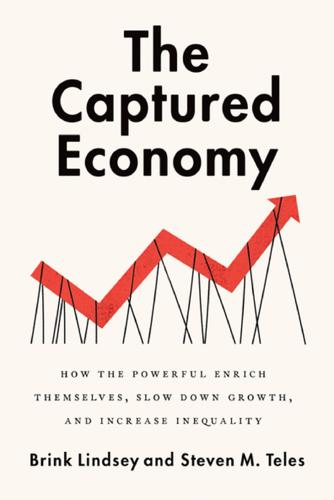
The Captured Economy: How the Powerful Enrich Themselves, Slow Down Growth, and Increase Inequality
by
Brink Lindsey
Published 12 Oct 2017
Occupational licensing, by impeding the formation of new businesses, slows down this vital channel of productivity growth. The advent of app-based ridesharing firms like Uber and Lyft, and the furious resistance they often provoke from supporters of the traditional taxicab industry, offer a powerfully vivid illustration of the conflict between occupational licensing and innovation. The quality of taxi services has long been fodder for consumer grumbling, but improvement through competition was thwarted by restrictive taxi licensing and associated anticompetitive regulations. When ridesharing firms devised an ingeniously convenient new way to purchase rides for hire, and an ingenious end-run around the current regulatory structure, consumers leaped to take advantage.
…
The most promising basis for judicial review of rent-creating regulations lies not in ideologically polarizing expansions of constitutional law but in novel applications of administrative law. Legal scholar John Blevins has proposed using three different standards of review, depending on the provenance of the restriction in question. For municipal regulations (such as those covering taxis and ridesharing, AirBnB, and food trucks), he recommends “hard look” review under the “arbitrary and capricious” standard used in cases under the Administrative Procedures Act; since municipalities derive their powers from the state, their regulations can be considered analogous to agency actions. For state agency interpretations of licensing laws (e.g., a determination of whether eyebrow threading constitutes the practice of cosmetology), Blevins calls for application of a “clear statement” rule in which agency interpretations that extend licensing requirements to any activity not explicitly contemplated by the underlying statute would be rejected by the courts.
…
See also regulation affluence and, 140–47 agenda-setting and, 133–36, 204n9 concentration of industry and, 20–21 defined, 16–18 dynamism and, 21–22 economic growth and, 113–23 entry barriers and, 21–22 image and, 140–47 increase in, 22–23, 185n11 intangible assets and, 19–20 intellectual property and, 64 legal profession and, 106–8 morality of, 17 politics of ( See politics) reform and, 159–64 RegData index of regulations and, 23, 186n13, 186n14 regressive regulation and, 123–26 rent-proofing and, 153–80 scarcity and, 16–17 secrecy and, 147–49 welfare state and, 150–52, 207n35 zoning as, 113 Republican party, 3, 143, 176, 178 research and development, 20, 23, 26, 70, 72, 80 reserve requirements, 50 ridesharing services, 96–97, 145–46 Rise and Decline of Nations, The (Olson), 8 risk-taking, 36–37 Robinson, James, 8 Robinson, Joan, 74 Rognlie, Matt, 123 Rogoff, Kenneth, 35 Saez, Emmanuel, 1 Sanders, Bernie, 4 savings-and-loan industry, 39–40, 44, 53, 150 scale, economies of, 21, 82, 114 Scalia, Antonin, 100–101 scarcity artificial, 17, 19, 32–33, 120, 184n1 of innovation, 16 rent/rent-seeking and, 16–17 Schleicher, David, 168 Schmitt, Mark, 135 Schumer, Chuck, 145 Schumpeter, Joseph, 21 secrecy, 147–49 securitization, 32, 38–45, 57, 150 self-liquidating profits, 16 “shadow banking”, 38, 41, 44, 47, 151 Shoag, Daniel, 116 Shockley, William, 115 sideways redistribution, 29 skilled workforce, 4, 6, 15, 27, 29–31.
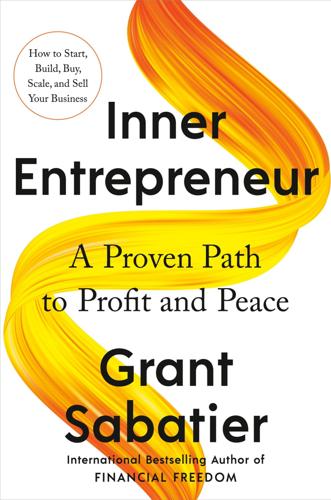
Inner Entrepreneur: A Proven Path to Profit and Peace
by
Grant Sabatier
Published 10 Mar 2025
While direct investments in private companies are historically risky, they present incredible upside opportunities as investments. It’s also increasingly common for entrepreneurs with extensive experience, or those who own companies within a particular industry, to start a venture firm. Harry Campbell (aka the Rideshare Guy) is so well known in the rideshare space, he recently created an investment fund backed by Bloomberg to invest in seed-stage rideshare start-ups because he has so many connections and access to so many deals. Buy a Business That Is Already Profitable Buying a profitable business can be extremely lucrative because you can buy a business for two to three times an owner’s annual profit and then earn and grow the profit for the next ten, twenty, or even forty-plus years.
…
By courting advertisers and brand partners who want to reach your audience, you can make more money by attracting more visitors and focusing on creating content you love and serving your audience. I’ve made millions of dollars this way, as have many of my fellow entrepreneurs. Take Harry Campbell, aka the Rideshare Guy. Harry started writing about his experience as an Uber driver on his blog. He also partnered with Uber to become an affiliate so that whenever someone signed up to be an Uber driver through a link on one of his YouTube videos or blog posts, Uber paid him a commission. As his reputation and traffic grew, so did the amount of money Uber was willing to pay him every time a new driver signed up.
…
One word is best, two words are good, and three words can be okay, but it can be challenging for people to remember anything longer than that. Make sure you choose a domain that relates to what you do and that matches your brand name. You don’t want a blog called “Money Machine” living at coolmoneyguy.com. Think of the brands profiled in this book for inspiration: Millennial Money, Student Loan Planner, and the Rideshare Guy. They’re short, to the point, and memorable—and they make it evident what services they offer. Search for available domains using reputable sellers like GoDaddy or Bluehost. Most domains start at $12, but because domain flipping has become a popular investment strategy, some of the more popular keyword-rich ones will cost you a few hundred or even a couple of thousand dollars.
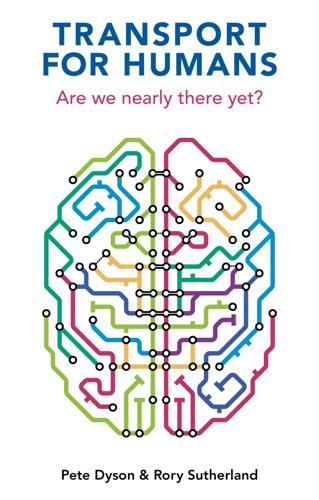
Transport for Humans: Are We Nearly There Yet?
by
Pete Dyson
and
Rory Sutherland
Published 15 Jan 2021
Instead of squabbling over a fixed pool of passengers, public transport operators could collaborate to promote the resilience of the wider network they jointly create. Our innervation would emphasize alternative options for travel and reassure people about them. These tend to be secondary routes and modes if plans change or if something goes wrong. People appreciate a backup. For instance, taxis and ride-sharing services function as an underappreciated fall-back for when plans change, or when services are disrupted.15 Car clubs, which enable people to rent a nearby vehicle (either spontaneously or prebooked), are thriving in cities. They already have a wide and loyal user base and are reaching the point of being a viable alternative to car ownership.16 The status gap Being able to drive means that you have a licence, own a nice car and have a set of keys that affirm your status as a driver.
…
Scientists know passengers are not conscious of the exact humidity or air pressure, but by applying knowledge of physiology they optimize air conditions and cabin pressure, which has a large effect on passenger experience. People report greater relaxation, better sleep and less achy legs, even if they don’t know why they feel better.38 Emerging mobility technologies can bring novelty and delight to the masses: electric cars, automated and autonomous vehicles, ride-sharing e-scooters and on-demand shared mobility. Some of this may be hype, but why dismiss novel enjoyment as a deviation from the real quantified model just because we can’t measure it using a speedometer? The e-scooter isn’t just a viable ‘last mile’ low-carbon solution to support core public transport: it’s fun as well.
…
Skype started in 2003 and Ocado in 2010, and while the benefits of both were clear from the outset, they saw modest usage until an exogenous shock – the Covid-19 pandemic – acted as a trigger for an explosion in home working and online shopping. Meanwhile, it took Uber many years – as well as questionable business practices and $14 billion in cumulative losses – from its founding in 2009 to gain widespread adoption, with dozens of gig-economy and ride-share services also finding that people’s aptitude and appetite for smartphone-connected travel fell short of their founders’ original enthusiasm. All three of these companies’ innovations rely on scale: the more people who use them, the better, cheaper and more dependable their services get. As we have shown, societal change most commonly follows an S-curve, i.e. change appears to happen slowly at first, then faster and faster, before plateauing off.
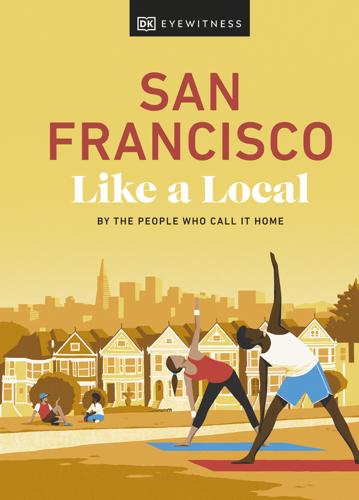
San Francisco Like a Local: By the People Who Call It Home
by
Dk Eyewitness
Published 5 Apr 2023
Simply download the free what3words app, type a what3words address into the search bar, and you’ll know exactly where to go. TRANSIT Your local transit advice San Francisco mightn’t have a cohesive public transportation system, but it does have a cohesive public transportation app. Transit predicts all bus and train arrivals, and calculates time and cost comparisons between Lyft’s rideshares and bike shares (provided there are Bay Wheels docks in your area). g Contents San Francisco NEIGHBORHOODS San Francisco is a patchwork of mini-neighborhoods, each with its own distinct look and personality. Here we look at some of our favorites. Bernal Heights Liberals have long been attracted to this hilltop ’hood, which was a hotbed of activism in the 1980s.
…
It’s free to take part, just meet at the store at 7pm to join the 2.5-mile (4-km) jog to Bay and Hyde streets, where you wait for the next car. » Don’t leave without running back to the store afterward (assuming you’ve stillgot some energy) for the post-race raffle. Outdoors | Alfresco Fitness Part workout, part social, the Midnight Mystery Ride is the ultimate secret club for eager cyclists. The ride wheels into the night on the third Saturday of every month. First, bag a bike through the Bay Wheels bike-sharing program (or book one via the Lyft ride-sharing app) then join the Facebook group, where the starting location is revealed on the day of the ride. Then, follow the leader on a mystery tour through SF’s streets, with a few pit stops for beers on the way. g Alfresco Fitness g Contents Google Map ZUMBA IN THE PARK Map 5; 198 John F.
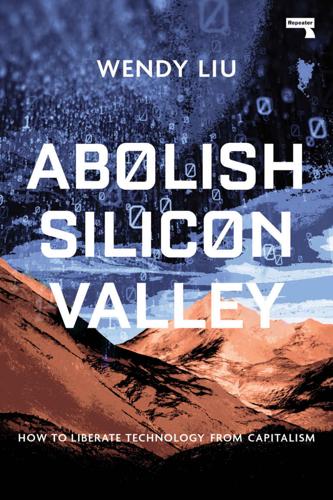
Abolish Silicon Valley: How to Liberate Technology From Capitalism
by
Wendy Liu
Published 22 Mar 2020
And what about the ecological damage of globalised commerce, which thrives on the power imbalance between multinational corporations and local populations in resource-rich, low-wage areas in order to transport and then sell goods at a mark-up in wealthy markets? The reasoning behind market logic seems to be that if people will pay for a product, then the product is good. This is myopic at best: at most it means that the product is useful in our current suboptimal environment. Of course customers will pay for VC-subsidised rideshares in cities with underfunded public transit; of course people will resort to payday loan apps when their boss doesn’t pay them enough to survive. The ostensible success of private enterprise does not imply that private enterprise is the best way to address the underlying problems. Because here’s another way to understand profit: as an indicator of inefficiency, a sign that something has gone wrong in the factors that shape a given market.
…
A few months after the protest, Uber announces a round of layoffs comprising approximately four hundred employees from its global marketing team24; this is followed in September by a further four hundred employees, this time from its product and engineering teams.25 These white-collar workers may be in better financial shape than the average rideshare driver, and most of them will probably find new jobs without much difficulty, but losing your job is losing your job, and it can be especially tough if you rely on your employer for health insurance or visa sponsorship. The fact that companies like Uber can lay off full-time employees with impunity is not unrelated to Uber’s ability to raise so much money for an app whose primary innovation is a new way to exploit workers.
…
It means public banking, along with higher wages and lower costs of basic goods to reduce the need for exploitative financial instruments like payday loans. Mobility in particular needs to be reclaimed from VC-backed startups. Take scooters, for instance: instead of five different tech companies littering them indiscriminately with minimal public oversight, imagine a system that’s municipally owned and free at the point of use.7 Similarly, rideshare apps could be part of local transit systems — publicly funded, positioned as an infrequent alternative to public transit, with well-compensated and unionised drivers. When it comes to community, instead of WeWorks everywhere, imagine better-funded public spaces like libraries or community centres, free from the strictures of commodity logic.
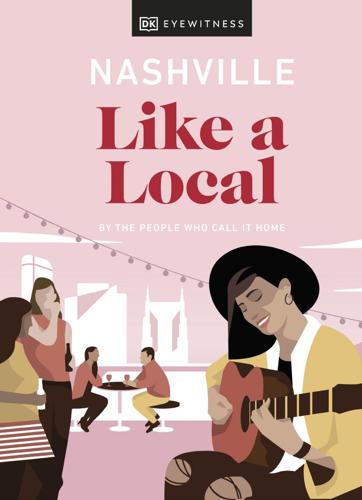
Nashville Like a Local: By the People Who Call It Home
by
Dk Eyewitness
Published 28 Sep 2021
Simply download the free what3words app, By car or taxi type a what3words address into Music City is heavily reliant on cars, with the search bar, and you’ll know most locals driving their own wheels exactly where to go. during the day and making use of cabs and rideshares – like Uber and Lyft – on B C Y C L E nights out. There are some drawbacks, Your local bikeshare scheme like heavy traffic and eye-wateringly The app for Nashville’s BCycles expensive parking (Downtown, we see helps you find docking stations, you). But rideshares are well developed easily pay for your ride, and get and a reliable way to get around the city. directions to your destination. Looking to hire a car? Nashville’s got loads of outlets to choose from.
…
{map 5} type a what3words address into browsing its boutiques and the city by the Cumberland Music City is heavily reliant on cars, with the search bar, and you’ll know stopping for coffee. {map 4} River, hipster HQ East The Gulch most locals driving their own wheels exactly where to go. Nashville has gentrified in With its high-rise condos during the day and making use of cabs Berry Hill the last decade, forcing out and rooftop bars, the Gulch and rideshares – like Uber and Lyft – on Forget Music Row: it’s all lower income families. That stands out against Nashvil e’s B C Y C L E nights out. There are some drawbacks, about Berry Hill these days. said, it’s still loved for its small town charm. But what it Your local bikeshare scheme like heavy traffic and eye-wateringly It’s trendy, innovative, and cocktail bars, vintage stores, lacks in village vibes it makes The app for Nashville’s BCycles expensive parking (Downtown, we see fast becoming a music hub and record shops.
…
But what it Your local bikeshare scheme like heavy traffic and eye-wateringly It’s trendy, innovative, and cocktail bars, vintage stores, lacks in village vibes it makes The app for Nashville’s BCycles expensive parking (Downtown, we see fast becoming a music hub and record shops. {map 3} up for in chic spots for dinner helps you find docking stations, you). But rideshares are well developed in its own right thanks to its and drinks, making the area easily pay for your ride, and get and a reliable way to get around the city. clutch of indie recording Germantown a go-to at night. {map 1} directions to your destination. Looking to hire a car? Nashville’s got studios.

Fodor's Seoul
by
Fodor's Travel Guides
Published 29 Nov 2022
Whether you have the digital or physical card, you can also use the app to check how much time you have remaining on your pass, and to find out which shops and attractions offer discounts. o Ride-Sharing Uber entered the market in Seoul in 2013, but was pushed out again in 2015 after Seoul’s taxi drivers protested what they considered to be an affront to their livelihoods. While Uber has since reentered the market in Seoul under the name UT, it is not a popular choice. Most Koreans use an app called KakaoTaxi, which is available in English (though Korean addresses can be a bit tricky to navigate within the English version of the app). While not technically a ride-share (since only one person or group rides in the car at once), KakaoTaxi is a hybrid between local taxis registered on the app and private drivers who use company cars or register their own cars to work with the company.
…
Your best bet is to buy a metro card at any of the stations and just charge it up ₩10,000 or ₩20,000 at a time, since you’ll receive a ₩100 discount each trip and will also be able to use it for transfers. CONTACTS Busan Metro. EBusan P1544–5005 wwww.humetro.busan.kr/english/main.do. TAXI AND RIDESHARE Taxis are a great way to get around Busan. They’re widely available and surprisingly affordable, and while drivers will know all the main neighborhoods and landmarks, it helps to have any addresses written out in Korean, since few speak English. There are two classes of taxis in town: the black cabs are premium taxis and will cost you a bit more than the run-of-the-mill silver cabs, though you usually only find these luxury cars at the airport.
…
While rip-offs are rare, make sure your driver turns on the meter when you get in, as flat rates are only legally allowed when traveling between towns. Basic fare starts at ₩3,800 and all taxis are equipped with GPS navigation, so getting lost is pretty much unheard of. They also all accept credit cards, and tips are never expected. Rideshares such as Uber are unavailable in Busan, though Korea does have its own slightly similar version called Kakao T, which allows you book cabs as well as arrange designated drivers. CONTACTS Deungdae Call. EBusan P051–600–1000 wwww.busan.go.kr/eng/bstranspor03. Kakao T. EBusan jTaxi app available for download in App Store.

Fodor's Oregon
by
Fodor's Travel Guides
Published 13 Jun 2023
It serves as the primary gateway to the state, with connections to a handful of smaller airports, including Redmond, Coos Bay, Eugene, and Medford. GROUND TRANSPORTATION PDX is 20–40 minutes by car from Downtown Portland, and is served by taxi ($38–$60), Lyft and Uber ride-sharing app service ($30–$50), and light rail ($2.50). Consult the airport’s website for a complete list of authorized rental car operators, app-based ride-share services, and other ground transportation options. e Boat CRUISES From early April through early November, a few cruise lines offer excursions focused specifically on the Pacific Northwest, usually along the Columbia River, leaving from Portland.
…
Car seats are compulsory for children under four years and 40 pounds; older children are required to sit in booster seats until they are eight years old and 80 pounds. Oregon is a hands-free state. It is illegal to talk or text on a cell phone while operating a motor vehicle, and doing so will net you a hefty fine. Use a wireless headset device if you need to stay connected. 6 Taxi Portland has several reliable taxi companies and is also well served by ride-share companies, such as Uber and Lyft. It can be expensive to get around town by cab, however, and you need to call for a taxi, as it’s very difficult to hail them on the street. In Portland the flag-drop rate is $3.80 and then $2.80 per mile, and Uber and Lyft trips typically cost less. Make sure to ask whether the driver takes credit cards, whether there’s a minimum fare, and whether there are charges for extra passengers.
…
(Express Jet), Alaska, Allegiant, American, Avelo, Delta, Southwest, and United. The flight time from Portland to Eugene is 40 minutes. Smaller airports for private aircraft are scattered throughout the valley. Rental cars are available at the Eugene airport from Budget, Enterprise, and Hertz. Taxis and rideshare vehicles will transport you to downtown Eugene for about $40. Some of Eugene’s larger hotels also offer shuttle services to their guests. BUS Buses operated by Portland’s TriMet network connect Forest Grove, Hillsboro, and other metro-area suburb communities with Portland and each other; light-rail trains operated by MAX run between Portland and Hillsboro.

AI Superpowers: China, Silicon Valley, and the New World Order
by
Kai-Fu Lee
Published 14 Sep 2018
See PricewaterhouseCoopers (PwC) Q Qianlong (emperor), 29 Qihoo 360 (web security software), 41–42 QQ (messaging platform), 41–42, 58 QR codes, 74, 77 Qualcomm, 96 Q-Zone (social network), 58 R Reddit, 109 Reddy, Raj, 4 red envelopes, 60, 61 redistribution of wealth, 203–4, 206–8, 222 reducing work hours, 203, 205–6, 207 reinforcement learning, 12, 143 Renren (social network), 23, 42–43, 48 ResNet, 90 retraining, 203, 204–5, 207, 215, 216, 221–22 ride sharing, 68–69, 76, 79, 137–38 risk-of-replacement graphs, 155–57, 204, 205–6, 211 robot reporters, 108 robots and robotics, 129–30, 166–68, 230 rule-based approach to AI, 7–8 RXThinking, 114–15 S Schmidt, Eric, 90 science fiction, 144–45, 168, 172, 199, 230 Sculley, John, 177–78 search habits, divergent, 37–38 The Second Machine Age (Brynjolfsson and McAfee), 148–49, 150 self-driving cars AI chips and, 96, 97 approaches for deployment of, 131–35 China vs. U.S., 136 deep learning and, 10–11 in India, 138 political culture divide and, 101–2 ride-hailing companies and, 137 semiconductors, 96 “A Sense of Purpose” (Fink), 215 service jobs, creation of, and compensation for, 214–15, 216 service work and social investment stipend, 221, 222 Seven Giants of the AI age, 83, 91–92, 93, 94, 95, 169 sharing economy, 213–14 Shenzhen, China, 99, 125–26, 127, 130–31 shopping carts, perception AI–powered, 119–21, 124, 125 Silicon Valley Baidu’s AI lab in, 93 China’s competition with.
…
While foreign analysts continued to harp on the question of why American companies couldn’t win in China, Chinese companies were busy building better products. Weibo, a micro-blogging platform initially inspired by Twitter, was far faster to expand multimedia functionality and is now worth more than the American company. Didi, the ride-hailing company that duked it out with Uber, dramatically expanded its product offerings and gives more rides each day in China than Uber does across the entire world. Toutiao, a Chinese news platform often likened to BuzzFeed, uses advanced machine-learning algorithms to tailor its content for each user, boosting its valuation many multiples above the American website.
…
After a day spent commuting on crammed subways and navigating eight-lane intersections, many middle-class Chinese just want to be spared another trip outdoors to get a meal or run an errand. Lucky for them, these cities are also home to large pools of migrant laborers who would gladly bring that service to their door for a small fee. It’s an environment built for O2O. The first O2O service other than ride-hailing to truly take off was food delivery. China’s internet juggernauts and a flood of startups like Wang Xing’s Meituan Dianping all made O2O food delivery plays, pouring subsidies and engineering resources into the market. Crowds at Chinese restaurants thinned out, and streets filled up with swarms of electric scooters trailing steam from the hot meals they carried on board.
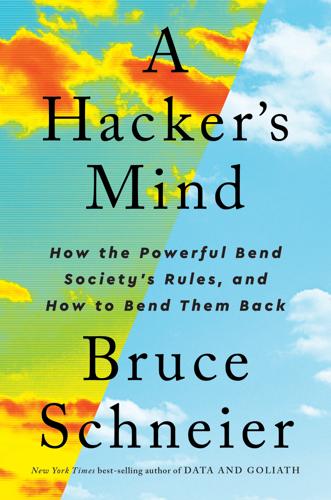
A Hacker's Mind: How the Powerful Bend Society's Rules, and How to Bend Them Back
by
Bruce Schneier
Published 7 Feb 2023
See wealth/power private equity, 101–2 Protestant Reformation, 72 psychotherapy, 217 pump-and-dump, 80–81 Quibi, 100–101 ranked-choice voting, 171 real estate hacks, 86–88 reciprocation, 217 recommendation engines, 236 Reconstruction, 161–62 red-teaming, 56, 77, 126–27, 149 Redeemers, 161–62 regulation accountability and, 68 banking, 74 financial exchange hacks and, 84 governance systems, 245–48 market hacks and, 94 real estate hacks and, 87–88 See also regulation avoidance regulation avoidance, 123–27 financial exchange hacks and, 82 gig economy and, 123–25, 264n jurisdictional rules and, 131 regulatory capture, 75–77, 91, 116–18 ride-sharing apps and, 123–24, 264n “too big to fail” hack and, 97 wealth/power advantages and, 121 Regulation Q, 74, 75 regulatory capture, 75–77, 91, 116–18 religious hacks, 71–72, 73, 85, 111, 139–40, 260n resilience, 28, 67–68 responsible disclosure, 89–90 rewards, 184, 186, 231–35, 240 ride-sharing apps, 99, 100, 101, 116, 123–25, 264n Riegle-Neal Interstate Banking and Branching Efficiency Act (1994), 75 risk analysis, 195–96 robotics, 208, 217–19, 222–23 See also AI hacking; AI systems Rodriguez, Alex, 170 Rodríguez, Jose, 170 Roombas, 217 Rosenblum, Jeremy, 126–27 rules, 18–19, 25, 232 Russell, Stuart, 233 Sahu, Lakhan, 170–71 Saunders, Don, 31 script kiddies, 22 secure systems design, 59, 85 Securities Act (1933), 82 Securities Exchange Act (1934), 80 Sedol, Lee, 212 segmentation, 60 self-driving cars, 209–10 SGT STAR, 188 shoplifting, 63, 68 SIM swapping, 191 simplicity, 59, 80 Siri, 217 skimming, 33 Smith, Adam, 93 social engineering, 191–92, 216 social media, 184–85, 186–87 soft money, 169 SoftBank, 99 SolarWinds, 54–55, 60, 145 South Carolina v.
…
Those drivers are supposedly independent contractors, not employees; Uber claims to have no control over them. Uber schedules the drivers and handles their billing, but that’s nothing more than a courtesy. To hear Uber tell it, the company really doesn’t have anything to do with cars at all, at least as far as any government regulations are concerned. Ride-sharing apps are a hack of the taxi industry, or—more generally—society’s attempt to manage its short-term transport needs. Their business model allows them to ignore dozens of laws regulating licensed taxis and limos, including worker protection laws, safety laws, consumer protection laws, permit and fee requirements, and public-good laws.
…
Amazon does it too, running what’s basically a private Uber-like system for its delivery vehicles. Because those drivers are independent contractors, the company can ignore all sorts of laws that conventional delivery drivers must follow. That companies hack regulations is a surprise to no one. What’s important here, especially when talking about ride sharing, short-term rental, and short-term loan companies, is that regulatory evasion is central to their business model. Many “disruptive” gig economy services would be completely unviable if forced to comply with the same regulations as the “normal” businesses they compete with. As a result, they—and their venture capital backers—are willing to spend unbelievable sums of money to combat these regulations.
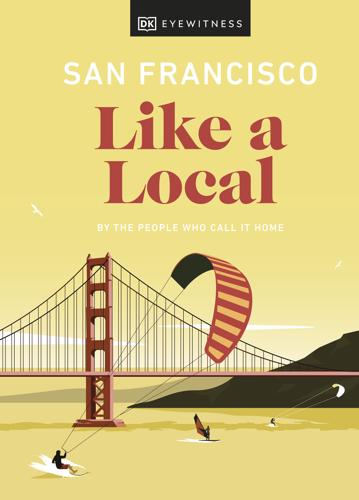
San Francisco Like a Local
by
DK Eyewitness
Published 4 Oct 2021
Simply download the free what3words app, type a what3words address into the search bar, and you’ll know exactly where to go. TRANSIT Your local transit advice San Francisco mightn’t have a cohesive public transportation system, but it does have a cohesive public transportation app. Transit predicts all bus and train arrivals, and calculates time and cost comparisons between Lyft’s rideshares and bikeshares (provided there are Bay Wheels docks in your area). g Contents San Francisco NEIGHBORHOODS San Francisco is a patchwork of mini-neighborhoods, each with its own distinct look and personality. Here we look at some of our favorites. Bernal Heights Liberals have long been attracted to this hilltop ’hood, which was a hotbed of activism in the 1980s.
…
Meet at the store at 7pm to join the 2.5-mile (4-km) jog to Bay and Hyde streets, where you wait for the next car. » Don’t leave without running back to the shop afterward (assuming you’re still alive) for the post-race raffle. Outdoors | Alfresco Fitness Part workout, part social, the Midnight Mystery Ride is the ultimate secret club for keen cyclists. The ride wheels into the night on the third Saturday of every month. First, bag a bike through the Bay Wheels bike-sharing scheme (or book one via the Lyft ride-sharing app) then join the Facebook group, where the starting location is revealed on the day of the ride. Then, follow the leader on a mystery tour through SF’s streets, with a few pit stops for beers on the way. g Alfresco Fitness g Contents Google Map Zumba in the Park Map 5; 198 John F.

Augmented: Life in the Smart Lane
by
Brett King
Published 5 May 2016
The average time spent looking for a parking spot is 20 minutes; Mobypark has reduced that time by over 50 per cent. Another new technology being embraced by many smart cities is real-time ridesharing, a service that enables one-time shared rides at very short notice. Companies such as Uber are able to accomplish this as a result of GPS navigation devices to determine the driver’s route and ride demands, smartphones for users to request rides from anywhere and social networks to establish trust and accountability between passengers and drivers. Ridesharing cuts down on the time spent finding and getting out of parking spaces, and saves the time traditionally spent kerbside in a city while waiting for a taxi to come along.
…
The costs of the driver will have been eliminated, and electric motors will require far less maintenance than typical combustion engines and the associated drivetrain. Smart transportation networks in large urban centres will work like a living organism. Small autonomous carts and pods will drive around campuses and shopping areas feeding people to ridesharing locations or public transport stations. Public transportation will be optimised around demand, events, weather and other considerations, all reactive in real time and dispatched by AI controllers. Car parks and parking garages will start to dwindle as it becomes unfashionable and increasingly costly to have your own combustion engine vehicle around town.
…
Instead of asking for their own car when they reach driving age, teens are now asking their parents for an Uber account.6 So this is not just a factor of electric, self-driving cars; the sharing economy is already starting to shift behaviour towards dramatically different vehicle ownership models. Children who have grown up with parents who use Uber or ride-sharing services will do the maths and find that it is cheaper to not own their own vehicle in an average city with good public transportation and an autonomous vehicle network. For those with a commute, this is where the Mercedes vision of the self-driving car gives us a glimpse of the near future. Realising that a self-driving car does not need to be optimised for driving, the interior space could instead be used for entertainment, eating your breakfast on the way to the office, as an office itself or just as an extension of your personal space.

Road to Nowhere: What Silicon Valley Gets Wrong About the Future of Transportation
by
Paris Marx
Published 4 Jul 2022
In New York City, transport consultant Bruce Schaller examined the effects of ride-hailing services and found that even as the number of taxis on the street and their total mileage dropped, the increase in the number of ride-hailing vehicles and their mileage more than made up for it. Between 2013 and 2017, the combined number of taxis and ride-hailing vehicles increased by 59 percent and their combined mileage jumped by more than one-third.10 As in San Francisco, the glut of ride-hailing vehicles meant more traffic and slower travel speeds. One of Schaller’s most interesting findings was that neither the private ride-hailing services nor the pooled services—where a rider can choose to share their ride with someone else to get a cheaper price—reduced the number of miles driven.
…
Certainly, the industry and the regulations applied to it have fluctuated since that time, but in many cities a regulatory structure similar to that established in the 1930s remained in place—at least until the arrival of ride-hailing services. As Uber spread in the years following 2012, the streets of cities in the United States and around the world were flooded with ride-hail vehicles and local governments were slow to regulate them. Since the companies claimed they were not taxi services but technology companies—even though they effectively offered the same service—they argued that the existing rules did not apply to them. The only difference, however, was the app-based mediation, which many taxi companies adopted in the years that followed anyway. Even as Kalanick and other ride-hailing executives made bold promises for the future they claimed to be ushering in—one of shared mobility instead of car ownership that would ostensibly solve congestion and many other transport problems—the reality was almost the complete opposite.
…
In Boston, it was estimated that 54 percent of the trips that users took on ride-hailing services would have been made by taking transit, cycling, or walking if the services had not been available, and 5 percent of trips would not have happened at all.12 Meanwhile, a larger survey that covered Boston, Chicago, Los Angeles, New York, San Francisco, Seattle, and Washington, DC similarly found that between 49 and 61 percent of trips on ride-hailing services pulled people from those more efficient transport modes or would not have happened if ride-hailing services had not been available. The researchers also found that people using Uber were very unlikely to get rid of their personal vehicles.13 This shows that Uber is not reducing congestion or vehicle ownership, and it is also unlikely to reduce transport emissions or to complement traditional public transit.

Germany
by
Andrea Schulte-Peevers
Published 17 Oct 2010
The S-Bahn runs half-hourly to Meissen (€5.30, 40 minutes) and Bad Schandau (€5.30, 50 minutes). There are connections to Frankfurt (€85, five hours) and Prague (€30.70, two hours). Dresden is connected to Leipzig via the A14/A4, to Berlin via the A13/A113, and to the Czech Republic via the B170 south. For ride-shares contact Mitfahrzentrale ( 194 30; Dr-Friedrich-Wolf-Strasse 2). Return to beginning of chapter Getting Around Dresdner Verkehrsbetriebe (DVB; 857 1011) runs the city’s buses and trams as well as a couple of information kiosks, including one on Albertplatz. The S2 train serves the airport from the Hauptbahnhof and Dresden-Neustadt (€1.80, 22 and 13 minutes respectively).
…
All major car-hire companies have offices at the airport and/or the 2nd level of Munich’s Hauptbahnhof, including Hertz ( 550 2256; www.hertz.com; 7am-9pm Mon-Fri, 9am-5pm Sat & Sun), Avis ( 550 2251; www.avis-europe.com; 7am-9pm Mon-Fri, 8am-5pm Sat & Sun) and Europcar ( 549 0240; www.europcar.com; 7am-9pm Mon-Fri, 8am-7pm Sat & Sun). For shared rides, consider using one of Munich’s Mitfahrzentralen (ride-share agency). The ADM-Mitfahrzentrale (Map; 194 40; www.mitfahrzentrale.de; Lämmerstrasse 6) is conveniently near the Hauptbahnhof. CityNetz Mitfahrzentrale (Map; 194 44; www.citynetz-mitfahrzentrale.de; Adalbertstrasse 6) in Schwabing has a good online booking function. Fares are considerably lower than the train.
…
Buses leave for Berlin at 12.10pm (one-way €42, four hours) with BerlinLinienBus, and to destinations across Europe from the spanking-new bus station near the Hauptbahnhof. The Eurolines/Touring ticket office ( 221 940; Käte-Ströbel-Strasse 4) is nearby. The CityToCity Mitfahrzentrale ( 194 40; www.citytocity.de; Hummelsteiner Weg 12; 9am-6pm Mon-Fri, 9am-1.30pm Sat) ride-share service is right behind the south exit of the Hauptbahnhof. Return to beginning of chapter Getting Around TO/FROM THE AIRPORT U-Bahn 2 runs every few minutes from the Hauptbahnhof to the airport (€1.80, 12 minutes). A taxi to/from the airport will cost you about €16. BICYCLE The tourist office sells the ADFC’s Fahrrad Stadtplan (€4.50), a detailed map of the city and surrounding area.

Lonely Planet Iceland
by
Lonely Planet
The changeable weather makes for tough going, and although the path is mostly paved, there is hardly any room on the shoulder of the road to provide a comfortable distance from vehicular traffic. Cycling can be a great way to explore more-rural regions. By Hitching & Ridesharing The most cost-effective way to venture around the Ring Road is to stick out your thumb. In summer it’s quite easy to hitch all the way around the Ring Road but be aware of the potential risks involved. Many hostels have ride-share posterboards in their lobbies. A great resource is www.samferda.is, an online ride-share messageboard. Plan Your Trip Outdoor Adventures Iceland’s spectacular natural beauty encompasses Western Europe’s largest national park and the mightiest ice cap outside the poles, plus a whale-filled ocean and the world’s biggest puffin colonies.
…
AMany of the stations have unmanned pumps; using these requires a credit card with a PIN. AYou can also buy N1 cards stocked with credit when you do find someone manning a full-service station. We recommend it, just in case your own credit card does not work in a pinch. AExpect lots of unpaved, often rugged, but universally beautiful roads; most are accessible with a 2WD. AFor ride-sharing, consult www.samferda.net and www.bilfar.is. Patreksfjörður Pop 683 The largest village in this part of the Westfjords, zippy little Patreksfjörður on the fjord of the same name is a convenient jumping-off point for visits to the Látrabjarg Peninsula. The no-frills town has dramatic views to the bluffs and good services for those preparing to head out to more remote fjords.
…
Flybus services: Buses are timed to meet Icelandair flights (but anyone can use them); they run the route Bolungarvík–Ísafjörður–Airport–Ísafjörður–Bolungarvík. In Ísafjörður they stop near the Hótel Ísafjörður, about 45 minutes before departure. Check with the information centre or www.westfjords.is for current schedules. Car For ride-sharing check www.samferda.net and www.bilfar.is. Avis (%591 4000; www.avis.is; Ísafjörður Airport) Europcar (%461 6000, 840 6074; www.holdur.is; Ísafjörður Airport) Hertz (%522 4490; www.hertz.is; Ísafjörður Airport) 8Getting Around City buses (kr350) operate from 7.20am to 6.15pm and connect the town centre with Hnífsdalur and Holtahverfi on the town's edges; they stop ( GOOGLE MAP ; Pollgata) along the waterfront.
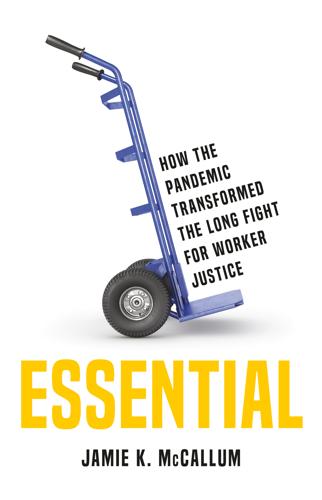
Essential: How the Pandemic Transformed the Long Fight for Worker Justice
by
Jamie K. McCallum
Published 15 Nov 2022
Ballot Drive,” Boston Business Journal, August 22, 2021, www.bizjournals.com/boston/news/2021/08/22/uber-backed-group-massachusetts-prop-22-ruling.html; Nate Raymond, “Companies-Backed Massachusetts Gig Worker Ballot Measure Clears Key Hurdle,” Reuters, September 1, 2021, www.reuters.com/world/us/companies-backed-massachusetts-gig-worker-ballot-measure-clears-key-hurdle-2021-09-01/; Alex N. Press, “Gig Companies Are Bringing the Disastrous Prop 22 to a State Near You,” Jacobin, August 16, 2021, https://jacobinmag.com/2021/08/gig-tech-companies-rideshare-ride-hail-uber-lyft-prop-22-contractor-employee-worker-protections-massachusetts-bill. 42. Jamie K. McCallum, Worked Over: How Round-the-Clock Work Is Killing the American Dream (New York: Basic Books, 2020). 43. Frank Pega et al., “Global, Regional, and National Burdens of Ischemic Heart Disease and Stroke Attributable to Exposure to Long Working Hours for 194 Countries, 2000–2016: A Systematic Analysis from the WHO/ILO Joint Estimates of the Work-Related Burden of Disease and Injury,” Environment International 154 (September 2021): 106595, https://doi.org/10.1016/j.envint.2021.106595. 44.
…
In May 2020, NTT’s Global Managed Services Report, which analyzes trends in outsourcing, found that 45 percent of global corporations planned “to outsource more of their IT than they insource” within eighteen months—a percentage nearly double the current amount.33 Within the United States, institutions such as colleges, law firms, and medical practices were eager to use the crisis as an opportunity to outsource jobs.34 Even employers who received generous federal assistance, such as Boeing and United Airlines, didn’t hesitate to contract out IT staff and catering operations.35 And employers didn’t just spread risk through fissuring and spillovers—they tried to enshrine it in law. Nowhere was this more the case than with gig companies. Fissuring typically starts with companies shedding one or two services, and then, like a crack in a windshield, it spreads exponentially over time. The entire rideshare economy—where drivers are independent contractors and not employees of Uber, Lyft, etc.—is an example of a fissured industry. Many gig workers slogged through the pandemic, but most of their services were rendered impossible during the lockdown phase. As they trickled back to work, they found themselves facing a new employment reality.
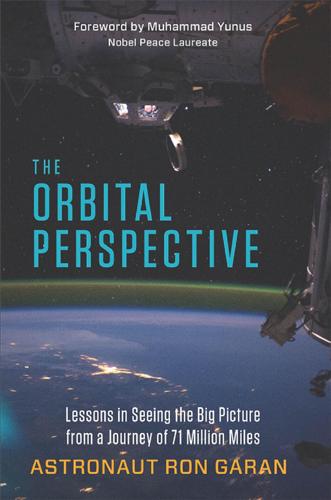
The Orbital Perspective: Lessons in Seeing the Big Picture From a Journey of 71 Million Miles
by
Astronaut Ron Garan
and
Muhammad Yunus
Published 2 Feb 2015
In both cases, trust leads to the belief that each side will do what they say, provide what they promise, and not take advantage of the other. Provisional trust was not really an option in the early days of the space program, but applications are arising today that make provisional trust possible. Uber, for instance, is a ridesharing platform that pairs drivers of private cars with passengers looking for a ride. Uber can locate a passenger and find the nearest available car. The app also offers information about the driver and details about the car. It certifies that others have ridden in a particular car, that they were safe and comfortable, that they gave the driver a good rating, and that the company has done some level of filtering.
…
See also Development work Project X, 151–153, 157 Ramon, Ilan, 20 Random Hacks of Kindness (RHoK) hackathon, 127, 141, 143 ReCAPTCHA, 145–146, 154, 160 Reisman, Garrett, 54–56, 60 Relationship building from a distance, 157–160 Relationships. See also Collaboration; Trust establishing real, sincere, 38–40 Rich, Ram, 158 Ridesharing, real-time, 153–154 Roscosmos, 16, 17, 36 Rotational pitch maneuver (RPM), 54 Russian Federal Space Agency. See Roscosmos Russian language, 28–30, 33, 36. See also Languages and language instruction Rwanda, 2–3, 68–69, 109–113, 119, photo. See also L’Esperance orphanage Rwandan Genocide, 68–69 Sagan, Carl, 165 Samokutyayev, Sasha, photo Semenov, Yuri, 16, 30 SERVIR, 139–140 orbital perspective and, 131, 133 science in action, 129–133 worm’s eye view and, 131, 133, 140 Sever, Thomas, 128–129 Shared credit, 88–89 Shekhovtsov, Igor, 23–25 Index Shkaplerov, Anton, photo Short-term thinking, 116 Shuttle-Mir agreement, 16 Shuttle-Mir program, 15, 18–20, 27, 30, 32, 42, 86.
…
See also Impossible; specific topics TechShop, 134 Thagard, Norm, 19, 23, photo Thomas, Evan, 109–112, 117, photo Thompson, Elizabeth, 163 Three- vs. two-dimensional thinking, 1–2 Titov, Vladimir, 40 TMA-21 spacecraft, photo Trust. See also under International Space Station (ISS) program building a foundation of, 19–22 community-based, 154–155 establishing, 85–87 provisional, 152–154 relationship building from a distance, 157–160 a web of, 149–170 Trust-based communities, 160 Uber (ridesharing service), 153–154 Unity (ISS module), xiv, 160–164, 167 Urzúa, Luis, 106 U.S. Agency for International Development (USAID), 131–132 U.S. Federal Acquisition Regulations (FARS), 33–34 184â•… â•… I n d e x Viktorenko, Aleksandr, 18 Vinta, Kiran, photo Virtual communities, 88, 154 Virtual meetings, 158.
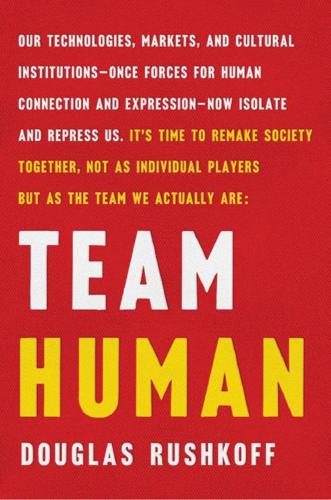
Team Human
by
Douglas Rushkoff
Published 22 Jan 2019
What computers lack in improvisational logic, they must make up for with massive computational power. So computer scientists feed the algorithms reams and reams of data, and let them recognize patterns and draw conclusions themselves. They get this data by monitoring human workers doing their jobs. The ride-hailing app on cab drivers’ phones also serves as a recording device, detailing the way they handle various road situations. The algorithms then parse data culled from thousands of drivers to write their own autonomous vehicle programs. Online task systems pay people pennies per task to do things that computers can’t yet do, such as translate certain phrases, label the storefronts in photos, or identify abusive social media posts.
…
Such businesses end up destroying the marketplaces on which they initially depend. When the big box store does this, it simply closes one location and starts the process again in another. When a digital business does this, it pivots or expands from its original market to the next—say, from books to toys to all of retail, or from ride-sharing to restaurant delivery to autonomous vehicles—increasing the value of its real product, the stock shares, along the way. The problem with this model, from a shareholder perspective, is that it eventually stops working. Even goosed by digital platforms, corporate returns on assets have been steadily declining for over seventy-five years.
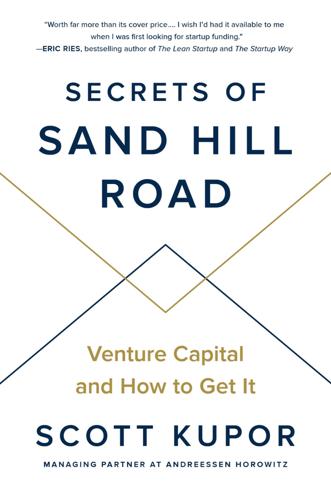
Secrets of Sand Hill Road: Venture Capital and How to Get It
by
Scott Kupor
Published 3 Jun 2019
Now let’s look at Lyft as a way to show how you can best position market size as an entrepreneur. When Lyft was getting started (Lyft actually started as another company called Zimride, a long-distance ride-sharing company), it wasn’t obvious how big the market for ride-sharing could be. A lot of people evaluating the financing opportunity started with the existing taxi market as a proxy for market size and made some assumptions about what percentage of that market a ride-sharing service could reasonably capture. That line of thinking was perfectly logical, but the entrepreneurs didn’t stop there. Rather, they made the case—convincingly at least to us at Andreessen Horowitz—that that line of reasoning was too myopic.
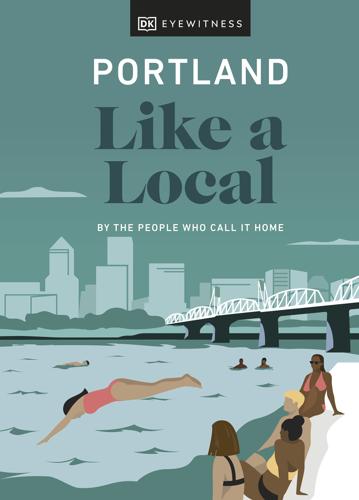
Portland Like a Local
by
DK
If you’re riding more frequently, download a Hop Card, which can be preloaded with funds or linked to cell phone payment apps. Tickets cover all three forms of transportation. https://myhopcard.com By car or taxi Between walking, cycling, and public transportation, there’s no real need to travel by car in town. For longer jaunts, rideshares like Uber and Lyft are available. Cabs are less common, but if that’s more your style, Radio Cab is a good option. Order cabs by phone or online. If you do drive, be aware that the narrow streets in the inner part of the city are tricky to navigate and parking can be difficult. Download these We recommend you download these apps to help you get about the city.
…
///ballots.future.quiz, for example, is the code for Portland’s iconic bookstore Powell’s. Simply download the free what3words app, type a what3words address into the search bar, and you’ll know exactly where to go. TRANSIT All-purpose transit app This multi-purpose transportation app provides bus and MAX times, routes, and trip planning, as well as options for rideshares like Uber and Lyft. It can also show you where to find BikeTown stations. Even better, it’s straightforward and easy to use, making navigating the city a complete breeze. g Contents Portland NEIGHBORHOODS Portland is a mosaic of overlapping neighborhoods, which nevertheless have their own character and community.
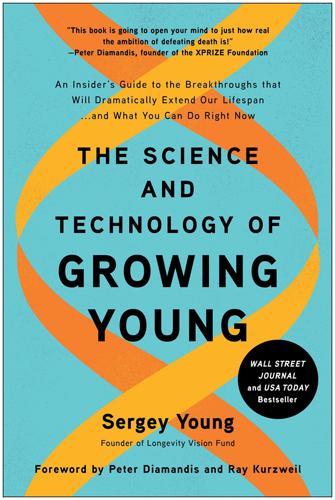
The Science and Technology of Growing Young: An Insider's Guide to the Breakthroughs That Will Dramatically Extend Our Lifespan . . . And What You Can Do Right Now
by
Sergey Young
Published 23 Aug 2021
,” Medscape, last modified July 1, 2020, https://www.medscape.com/answers/123702-11510/does-obesity-reduce-life-expectancy. 14International Programme on Chemical Safety, “Poisoning Prevention and Management,” World Health Organization, accessed July 19, 2020, https://www.who.int/ipcs/poisons/en/; Poison Control, “Common and Dangerous Poisons,” NCPC, accessed July 19, 2020, https://www.poison.org/common-and-dangerous-poisons; Fred Hosier, “Top 10 causes of accidental death,” Safety News Alert, last modified December 5, 2018, https://www.safetynewsalert.com/number-of-accidental-deaths-hits-new-high/; Poison Control, “Poison Statistics: National Data 2018,” NCPC, accessed July 19, 2020, https://www.poison.org/poison-statistics-national. 15Safety Team, “Does Ridesharing Reduce Drunk Driving Incidents?,” Safety.com, last modified January 13, 2020, https://www.safety.com/ridesharing-reduce-drunk-driving-incidents/. 16Ricki J. Colman et al., “Caloric Restriction Delays Disease Onset and Mortality in Rhesus Monkeys,” Science 325, no. 5937 (2009), https://doi.org/10.1126/science.1173635.; Sally E. Silverstone, “Food production and nutrition for the crew during the first 2-year closure of Biosphere 2,” Life support & biosphere science 4, no. 3-4 (1997); Christopher Turner, “Ingestion / Planet in a Bottle,” Cabinet Magazine, last modified Spring, 2011, http://www.cabinetmagazine.org/issues/41/turner.php.; Mark P.
…
LifeSaver locks your screen while you are in motion so that you cannot fidget with your device. Heads-up displays like Navdy make it possible to view navigation and conduct other essential smartphone tasks without ever touching your phone. As for drinking, there’s no excuse anymore. If you must drink, use a ride-sharing app like Uber or Lyft, which studies show have reduced alcohol-related auto accidents by 25 to 35 percent since their launch.15 Consider using a blood alcohol concentration calculator app like MyLimit or even installing a smartphone breathalyzer like BacTrack. Soon, fully self-driving cars will drastically reduce road accidents.
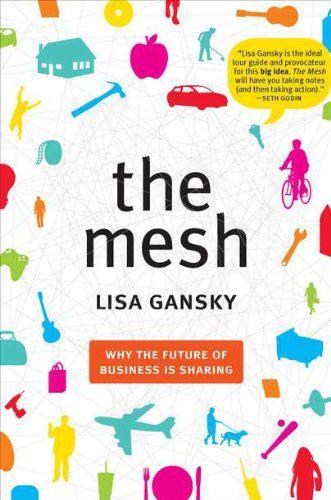
The Mesh: Why the Future of Business Is Sharing
by
Lisa Gansky
Published 14 Oct 2010
http://www.boei.net Eileo: Provides the necessary technology for starting a car-sharing service. http://www.eileo.com GoLoco: Ride-sharing system that notifies users when their friends or interest groups are going places they want to go. http://www.goloco.org Greenwheels: German car-sharing company. http://www.greenwheels.de GTFS Data Exchange: Provides open-source information about public transportation. http://www.gtfs-data-exchange.com liftshare: Ride-sharing service that connects passengers and drivers in the U.K. http://www.liftshare.com/uk MyTTC: Provides open access to transit data.
…
The percentage of young people in the United States seeking a driver’s license upon turning seventeen has been in rapid decline since 1998, and fell a third in the three decades between 1978 and 2008. Then, having a license was synonymous with adulthood and independence. Today, more young people are opting for car sharing, bike sharing, ride sharing, and mass transit for everyday personal transportation. Sustainable living is also trending up. Status formerly associated with autonomy and excess is now better achieved through civic behavior and community participation. When Brad Pitt helps build state-of-the-art green homes in the ravaged areas of New Orleans and Leonardo DiCaprio stumps for Global Green, they are reflecting the zeitgeist.

Give People Money
by
Annie Lowrey
Published 10 Jul 2018
They had problems with their cars, problems paying bills, problems accessing medical care, problems with insurance, problems trying to save, problems getting food on the table. Like many other Rust Belt cities, Pittsburgh was ravaged by the loss of manufacturing jobs. In some ways, Uber has offered the city a salvation, creating thousands of flexible ridesharing gigs and a smallish number of highly compensated positions for scientists and technologists at its local Advanced Technologies Group office. But salvation has seemed chimerical, with those ridesharing jobs paying little and pulling work away from the city’s taxi and jitney drivers and those highly compensated positions at the Advanced Technologies Group dedicated in part to eliminating the need for human drivers entirely.
…
Private-equity partners and venture capitalists have shunted billions and billions of dollars to start-ups seeking to disrupt brick-and-mortar businesses, vault over workplace protections, pay peanuts, employ close to no one, and offer no benefits or job security. Uber is just the biggest and most visible of these players. Others include the freelance-services marketplace Fiverr, Uber’s ridesharing rival Lyft, the grocery delivery company Instacart, and the do-anything handyman service TaskRabbit, now part of Ikea. Nobody quite knows the size of the diverse and chaotic and fast-changing pool of workers serving these businesses, but estimates drift as high as 45 million. For all these start-ups, the basic business model is the same.

Human + Machine: Reimagining Work in the Age of AI
by
Paul R. Daugherty
and
H. James Wilson
Published 15 Jan 2018
Ethnographers Madeleine Clare Elish and Tim Hwange coined the phrase “moral crumple zone.” In their research, they saw that, in our digital world, control of certain services like ride sharing has become distributed across multiple human and nonhuman actors, yet social and legal conceptions of responsibility remain the individual’s alone. In a 2016 report, Elish provides an example of the moral crumple zone in action.13 She had summoned a ride-sharing service to take her to the airport in Miami. The driver selected the first option provided by the map app for the Miami airport, and off they went. Elish fell asleep and awoke to find that her driver, who was new to the platform, had taken her to a location twenty minutes away from the airport’s passenger terminal.
…
While the crumple zone in a car is meant to protect the human driver, the moral crumple zone protects the integrity of the technological system, itself.14 For algorithmically-managed crowd platforms, human operators can also become “liability sponges,” getting bad feedback from a customer when it’s really the system’s fault, for instance. Additionally, they bear the brunt of expenses on their cars—the insurance, the gas, the wear and tear, all the while absorbing the liability on behalf of the ride-hailing app if something goes wrong with their ride-giving vehicle. Here are some ways to address the current shortcomings. First, create ways for algorithms to be accountable and identify root causes so that they can be fixed. Accountability isn’t just for human workers. Second, give human workers in the system the ability to second-guess the AI.

The Measure of Progress: Counting What Really Matters
by
Diane Coyle
Published 15 Apr 2025
The prevalence of contingent work is another phenomenon that makes m easurement and understanding of investment in domestic capital goods important. Such workers often have to invest in their own equipment. If they are formally self-employed or a sole trader, this expenditure will be reported (to reclaim tax) and in principle captured in investment statistics. But a Deliveroo rider or ride-share driver for Lyft will often use their own vehicle, and carpenters or photographers selling their s ervices via digital platforms w ill buy their own equipment. It is not clear to what extent any of these capital purchases are being measured. Incomes might not even be fully declared as there w ill be some overlap with the informal economy.
…
It has morphed into a large accommodation platform but was originally envisaged as a homespun way of matching people who had spare rooms or apartments looking to earn from spare capacity with travelers wanting a place to stay short-term with different characteristics (including lower price) than a conventional h otel room. Uber was initially touted as a similar model (although prompting scepticism from the start). There are many examples of smaller businesses true to the original philosophy of asset sharing for mutual benefit, including ride-sharing 94 Chapter Thr ee proper, platforms sharing gardening or DIY tools, driveways for car parking, or even pet sharing. A fleet of s ervices has slowly built around these, providing insurance and financial s ervices, for example— including some big players such as Stripe. Businesses of this kind are providing the matching efficiencies and gains from variety enabled by the digital platform model.
…
These bits of evidence suggest that in both countries the proportion of the workforce in, broadly speaking, a contingent arrangement of some kind is a fifth to a third. Some new US Census Bureau evidence derived from mining other survey data reported 490,000 platform workers compared with 367,000 in 2018 (Gayfield and Laughlin 2023). More than 60 per cent were ride-share drivers and almost 14 per cent w ere food delivery riders. Across the E uropean Union, one survey showed the proportion of p eople who had ever done some work via digital platforms ranged from 10 to 18 per cent, although smaller proportions made much of their income that way (Urzi Brancati et al. 2020).

Emails From an Asshole: Real People Being Stupid
by
John Lindsay
Published 31 Mar 2010
Missouri is really nice though! From Kathy to Me: IF I HAD A CAR I WOULDNT NEED A FUCKING RIDE THIS IS RIDICULOUS IM DONE TALKING TO YOU I am glad Kathy didn’t ride with us; she was very ungrateful. I offered to drive her over 800 miles for free, yet she complained about the most insignificant shit. Drunken Rideshare Steven’s original ad: I need a ride from Baltimore to New Orleans next weekend. I will be bringing just two bags. You will be compensated. From Me to Steven: Hey! If you still need a ride, I am headed to New Orleans next Friday and am looking for some company on the way down. I want to leave at 9 AM, and we will split the cost of gas and tolls.
…
From Steven to Me: You shouldn’t have a damn car! How you have yet to crash it is anyone’s guess! Stop bothering me with this, it isn’t going to happen! Despite Steven’s decision not to ride with me, I still got hammered and made it to New Orleans. I didn’t exactly remember driving there, but I’m sure it was a safe trip. Hummer Rideshare Chris’s original ad: looking for a ride from wilmington to manhattan next wednesday, any time during the day is good. I will pay for all your gas as compensation. From Me to Chris: Hello, I am driving to NYC for a business meeting around 10 AM on Wednesday and would be able to give you a ride.

Fodor's Essential Belgium
by
Fodor's Travel Guides
Published 23 Aug 2022
These cost about the same, but take longer. Taxis cost around €45 to the city center. Bus company flibco.com (www.flibco.com) operates every half hour between Brussels Midi Railway Station and Brussels South Charleroi Airport. The journey takes one hour and costs €14.70 one-way, €29.40 return. Rideshare app Uber can also be used to book cars to and from the airports. f Bicycle Travel by bicycle is popular and easy in Belgium; bike paths border its scenic canals and seaside roads. Many towns provide special lanes parallel to main streets for bicycles, and bicycle racks are available to the public.
…
EBrussels P070/232–000 wwww.stib.be. k Car CAR RENTALS Avis. EBrussels P02/720–0944 wwww.avis.be. Enterprise - Rent-a-car. P012/390–959 wwww.enterpriserentacar.be. Europcar. EBrussels P02/721–0592 wwww.europcar.be. Hertz. EBrussels P02/720–6044 wwww.hertz.be. Sixt. EBrussels P070/225–800 wwww.sixt.be. o Ride-Sharing Uber wwww.uber.com. 6 Taxi CONTACTS Taxi Antwerpen. EAntwerp P0474/390–766 wwww.taxibedrijfantwerpen.be. Taxis Verts. EBrussels P02/349–4949 wwww.taxisverts.be. q Train RAIL COMPANIES SNCB/NMBS. EBrussels P02/528–2828 wwww.belgiantrain.be. RAIL PASSES Eurail. wwww.eurail.com. h Lodging APARTMENT AND HOUSE RENTALS Airbnb. wwww.airbnb.com.
…
STIB/MIVB tickets are valid for its services only and tickets can no longer be bought on board buses and trams. If taking a De Lijn bus service, you will need to buy a ticket (€2.50) from De Lijn Go terminal or online in advance. CONTACTS STIB/MIVB. P070/23–20–00 wwww.stib.be. De Lijn. P070/22–02–00 wwww.delijn.be/en. TAXIS AND RIDESHARE You can catch a taxi at cab stands around town, indicated with yellow signs. All officially registered taxis have black bodywork and a mango-yellow checkered strip. The price starts at around €2.40 during the day and €4.20 at night, then goes up €1.80 per km within the city limits; €2.70 per km outside the city.
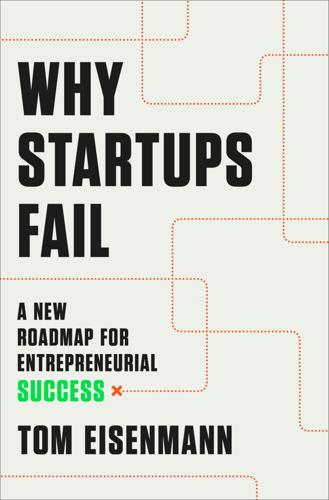
Why Startups Fail: A New Roadmap for Entrepreneurial Success
by
Tom Eisenmann
Published 29 Mar 2021
Scaling through Acquisitions To meet their objectives for Speed or Scope, late-stage ventures can consider acquiring other startups. By merging with direct rivals, they can speed the growth of their core business and remove a competitive threat, as Grab, the leading ride-sharing company in Southeast Asia, did when it acquired Uber’s operations in that region. Late-stage startups can also expand their scope through mergers by 1) entering new geographic markets, as with Uber buying Careem, the leading Middle Eastern ride-sharing service; 2) adding more products to their lineup, as with Google buying YouTube; or 3) integrating vertically, as with eBay acquiring PayPal. For mature corporations, management scholars have observed that the average economic payoff from mergers is negative: Buyers tend to overestimate synergies and consequently overpay.
…
If all of the potential home buyers and sellers in a community participate in a single network, then buyers will maximize their odds of finding their dream house, and sellers will maximize their odds of finding the buyer willing to pay the highest price. Network effects are similarly strong when they facilitate any of the following: 1) variety, by providing a series of unique experiences—as with streaming movies or playing videogames; 2) mobility, as with credit cards or ridesharing services, because customers want to be able to use such products wherever they go; and 3) connectivity, or the ability to communicate with many friends or business acquaintances, as is the case with Skype or WhatsApp, or with social networks like Facebook or Twitter. Early on, Fab leveraged network effects, but they were not as strong as those in the examples cited above—and the effects weakened as the startup grew.

Supertall: How the World's Tallest Buildings Are Reshaping Our Cities and Our Lives
by
Stefan Al
Published 11 Apr 2022
A place derives value from its access to schools, restaurants, grocery stores. Access improves as neighborhoods blend more and more uses or as they densify, for instance with tall, mixed-use buildings. Physical proximity has long been of the essence for access. However, better mobility systems can also improve access. With autonomous vehicles, hyperloops, and aerial ridesharing in the near future, we may be up for a wild ride! Plus, along with it, land that was previously less desirable will become the development hot spots of tomorrow. New mobility systems will change our cities and buildings once again. In 1994, Italian physicist Cesare Marchetti described a principle, now known as “Marchetti’s constant.”
…
Outside of peak traffic hours, lanes could close to give way to pedestrian space. The classic highway interchange may get a makeover as well. NASA considers the unused areas around highway cloverleafs ideal landing spots for vertical take-off and landing (VTOL) aircraft, where sound is drowned out by speeding cars. These will become desirable sites when aerial ridesharing serves new routes between frequently commuted routes with heavy car traffic. Because, inside cities, people have yet to accept their urban skylines flocked with the noise of buzzing drones. It is easy to be seduced by the speed of hyperloops or the aerial sophistication of a flying drone. While hyperloops are faster, they probably won’t come close to the transport efficiency of the good old subway.
…
accessed February 27, 2021, https://architecture2030.org/. INDEX Page numbers listed correspond to the print edition of this book. You can use your device’s search function to locate particular terms in the text. Page numbers in italics refer to illustrations. access to destinations, 233–34, 237 aerial ridesharing, 233, 236 affordable housing, 174, 202, 203, 205 aggregate, 33, 39, 43 agriculture urban, 250, 258, 260–61 urbanization and, 149, 246, 249, 270 air-conditioning design considerations and, 121–22 development of, 115–21 for different functional occupancies, 125–26 electricity consumed for, 115 energy inefficiency, 121, 126, 226, 258 environment and, 115, 119–20 gender-biased standard, 122–23 mechanical systems and, 124–25 necessity for, 113–15 reducing reliance on, 130, 133, 137, 140–41 in Singapore, 258 air rights, 179, 191–94, 201, 202, 205 air temperature and height, 21, 51, 126 airtightness, 134 Al Bahr Towers, Abu Dhabi, 139, 139 Allen, Thomas, 173 Allen, W.

MacroWikinomics: Rebooting Business and the World
by
Don Tapscott
and
Anthony D. Williams
Published 28 Sep 2010
After two months, the top nine ranked entries—finalists came from Hungary, Canada, Israel, Ireland, the United States, and the Netherlands—went on to the showdown round. Over the ensuing thirty days, each finalist posted slide decks, founder bios, and pitch videos and each participated in an open due diligence call, fielding questions from both experts and the crowd. In the end, the winner was a Seattle-based start-up called iCarpool. iCarpool, a ridesharing platform servicing consumers, corporate clients, and urban infrastructure providers, took home more than 60 percent of the community support. So what did they win? iCarpool’s founders scooped the $50,000 in cash but they also got a trip to ITS World Congress in Stockholm, Sweden. In addition to a supreme networking event, the founders got a chance to demo iCarpool in front of urban planners, government advisers, researchers, and consumers worldwide.
…
Optimizing Our Infrastructure with a Ubiquitous Data Grid A rich cloud of in-car services can do more than inform and entertain us; it could help optimize our entire transportation infrastructure. Accompanying your iTunes service, for example, would be an infinite number of applications that enable you to fundamentally change the way you use your car. Some apps could facilitate ridesharing. Others could ease congestion and keep you safe by distributing road traffic more evenly or selecting optimal routes for reducing air pollution on days when concentrations reach dangerous levels. Or, rather than sole ownership, there could be applications to facilitate shared car ownership, with dynamic pricing models that take into account environmental factors like location, time of day, traffic congestion, and seasonal demand patterns.
…
The other problem is coordination: matching two or more people who are leaving from the same place and going to the same destination at the same time has never been easy. With the emergence of carpooling platforms that make connections and help establish trust between drivers and passengers, these problems are now much easier to address. One of the biggest platforms is called mitfahrgelegenheit.de (rideshare), which operates across Germany and Austria. The popular site has 1 million registered users and facilitates between 20,000 and 30,000 rides every day. With high gas and rail ticket prices in Germany, the service is especially popular with young people. “Our goal is to reduce the traffic on our streets and with that the amount of pollution that is released into the atmosphere,” says Michael Reinicke, one of the site’s founders.

Cashing Out: Win the Wealth Game by Walking Away
by
Julien Saunders
and
Kiersten Saunders
Published 13 Jun 2022
Last, you may consider online survey companies like swagbucks.com that will pay out a small amount of money in exchange for your time. 2 | The Gig Economy (Mid- to High Urgency, Low Upside) If you are willing to put forth slightly more effort than keystroking, you can explore the gig economy. The gig economy was born after the Great Recession of 2008 as a way to empower people who had extra time to earn money taking on small tasks, powered by technology. This gave rise to ride-sharing companies like Uber and Lyft, grocery delivery companies like Instacart and Amazon Fresh, and handyman services such as taskrabbit.com. It ranks mid- to high from an urgency standpoint because once you sign up, the platforms do almost all the work to get you your first customers. It’s also mid- to high on upside because with most of these platforms you don’t have to sell a product; you just need to make yourself available and focus on providing good service.
…
See also expenses loneliness, overcoming, 18 low-wage workers, 76 Lyft, 131 M m1finance.com, 131 market downturns, 98–99, 173–74 marriage average length of, 75 challenges faced in, 201 and divorces, 75, 199, 201, 234 time to devote to, 35 See also couples matching by employers, 156, 176 McKinsey study on automation threat, 126 median wealth prediction for Black individuals, 3, 53–54 media portrayals of wealth, 33–34, 221 meetups, 218–19 mercari.com, 135 meritocracy, myth of, 28 middle class, 50 Middle personality type Big 3 downplayed by, 57, 59–60 blind optimism practiced by, 62–63 characteristics of, 50–52 and compound interest, 68 and Fast Spenders personality type, 50, 51, 61 and Financially Insecure personality type, 50, 51 and lifestyle inflation, 61 meaning of “freedom” for, 69 memories of financial insecurity, 51, 60–61 possessions of, 59 and struggles with retirement savings, 51, 63 taste preferences of, 61 millennials, 76, 144 millionaires FIRE movement and Black, 29 and market boom of 2020, 232 meetups of, 219–20 status as milestone, 233 mindset, 103–20 and absence of certainty, 111, 114–16 and confidence, 112–13 and courage, 108, 111, 112–14, 117–18 and financial literacy, 108–11 rules and richuals for, 118–20 and true income potential, 107 Money on the Table (video series), 12 money’s ability to work harder than you can belief in, 65 and purchasing power of wages, 172–73 and stealth wealth, 38 transitioning to, 62 value of acknowledging, 228 moral code, following, 172 mortgage and debt reduction methods, 82 paying off, 6 refinancing, 57 multilevel-marketing businesses, 170 mutual funds about, 159–60 active management of, 160, 166 educated guesses at heart of, 160 fees associated with, 163–64, 165–66 index funds compared to, 162 underperformance of, 166 See also 401(k)s; index funds N Nasdaq index, 161 National Basketball Association, 162 National Law Center on Homelessness and Poverty, 77 needs, basic, 56–60 negativity, 48 nerdwallet.com, 131 net worth declining, 54 and income, 54–55 stating publicly, 220 NFTs (non-fungible tokens), 129 Notorious B.I.G., 198 O opportunities, evaluating, 129–30, 129 oppression, exposure to, 210 optimism blind, 62–63, 158 as motivator for difficult tasks, 194 options trading, 114 Orman, Suze, 155 ourrichjourney.com, 215 P parenthood and childcare costs, 30 uncertainty experienced in, 115 and work-life balance, 30 parents, supporting aging, 10, 70 passive income, 22, 65 paycheck to paycheck, living, 47, 77–78 paying yourself first, 118 PDFs, selling, 136 personality types, financial, 46–52 Fast Spenders type, 48–50, 51, 52, 61, 69 Financially Insecure type, 46–48, 50, 51, 52, 69, 233 the Middle type, 50–52 Pew Research Center, 36, 172–73 phones, faux connectedness from, 25 Playing with FIRE (documentary), 47 The Plug (Dorsey), 133 podcasts and Jannese’s success story, 124 learning about FI through, 217–18 and preferences of audiences, 145 thepointsguy.com, 131 Popcorn Finance (Browning), 218 poshmark.com, 135 positivity, pressure to sustain, 43 poverty and automation threat to employment, 126 cycle of, 47, 234 principles of cashing out, 36–41 embracing stealth wealth, 37–39 prioritizing purpose and community, 40–41 recognizing the Black tax, 39–40 “progress trap,” 64 public.com, 131 public health, negative impacts of work on, 31–32 purchasing power, impact of inflation on, 173 Purple, 91–94, 95 purpose(s) of income, 44–73 asking better questions about, 120 and Black buying power, 52–55 and breaking the consumerism cycle, 45 and financial personality types, 46–52 flexibility, 56, 60–65 freedom, 56, 56, 68–71 independence, 56, 65–68 lack of, 51–52 and retirement, 54–55 rules and richuals for, 72–73 security, 56–60, 56 and sinking funds, 119 Q quality of life, financial components of, 9 questions, asking better, 119–20 R racism, 39–40 “Raising a Family Index” (RAFI), 30 Ramsey, Dave, 155 Ray, Ola, 101–2 real estate agents, 61 real estate investing of authors, 6, 11, 87–88, 142, 143 income from, 22, 86 Kendra’s success story, 85, 86–87 1 percent rule in, 87 “Reality Check: Paycheck-to-Paycheck,” 77 reasons for cashing out freedom from burnout, 31–33 prioritizing family life, 29–30 safety from corporate change, 27–28 success on your terms, 28–29 time to do what you love, 25–26 regret/sacrifice, moments of, 100, 200–201 religious faith, 36–37 restaurants, dining in, 57 retirement difficulty saving for, 59 income’s role in preparing for, 55 lack of successful examples of, 22 and Middle personality type, 51 and pending crisis, 210 See also retirement accounts retirement accounts IRAs (individual retirement accounts), 94, 114 and matching by employers, 156, 176 maxing out, 94, 168 procrastinating on, 154–55 of self-employed, 176 See also 401(k)s; index funds rewarding yourself, 81–82 Rice, Bradley, 212 “richuals” (term), 17 ride-sharing companies, 131 risk managing feelings of, 116 and the myth of full confidence, 113–14 and uncertainty, 116 Rock, Chris, 33 role models, lack of relatable, 68 rounding-up programs at banks, 118–19 S S&P 500 index fund, 161, 163, 173, 230 sacrifice/regret, moments of, 100, 200–201 saving money/savings authors’ rate of, 11 conventional approach to, 226–27 conversations about, 193–94 and labeling people as “savers,” 191 lessons passed to children on, 226–27 low levels of, 4, 45 and Middle personality type, 50 reframing practice of, 193–94 sacrifices made for, 200–201 security as first purpose of income, 56–60, 56 self-care, 32 self-defeatist language, 15 self-doubt, overcoming, 18, 111 self-employment and retirement accounts, 176 self-reliance, 64–65 selling, 137–40 shame/shaming for buying preferences, 61 and defensiveness, 195 overcoming, 18 sharing, 213–14 Shopify, 137 short-term wants/needs, 63 sinking funds, 119 skills, cultivating marketable, 83, 87, 94, 99, 147 Skillshare, 137 slavery, legacy of, 3 snowball method to paying off debt, 80–81, 81 social issues, ability to engage with, 35 social media platforms and content creators, 141–45 FI community on, 216–17, 220–21 gurus/celebrity advisers on, 223 sharing strengths/wins on, 90 Souffrant, Jamila, 217 spending.
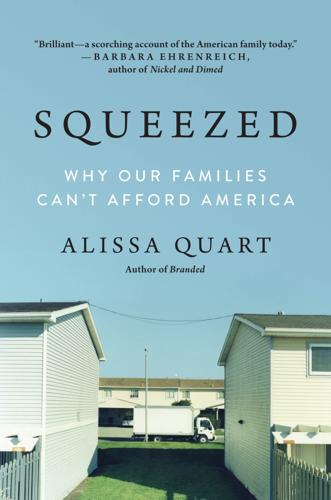
Squeezed: Why Our Families Can't Afford America
by
Alissa Quart
Published 25 Jun 2018
“I mean, I can’t imagine giving kids what they need to be happy.” Arinwine told me, “I thought I’d already be not worrying about money by now. I thought I’d be making my way to retirement.” Little of this desperation comes across in Uber’s teacher campaign. Instead, Uber’s website teems with profiles of middle-class “UberEducators” who work as rideshare drivers to collect extra spending money. The site features Monique, a schoolteacher in New Orleans with “12 years of teaching experience under her belt” who turned to Uber to “help during the 2015 holiday season.” Another driver profiled on the company’s site is a frustrated special education teacher who was sick of doing “paperwork” rather than working with children.
…
She also wanted to pay for a new porch for her home. These testimonies, sometimes accompanied by inspirational slo-mo videos of real-life driver-teachers, fit nicely with Uber’s portrait of their educators as wholesome, hardworking professionals. But they also telegraph another useful message: Uber’s drivers have turned to rideshare-driving not as a full-time professional pursuit but as a second job that serves a purely supplementary purpose. This is a useful message for Uber, which has been working hard to push the idea that its 400,000 drivers are independent contractors, not employees of the company. As employees, they would be entitled to minimum wage, overtime pay, benefits, and basic employee protections—which would strike at the very engine of the Uber business model, costing the company billions of dollars.
…
“Trucking is not the best job, but it pays the most in lots of rural communities. They worry: Are they going to support their families? And what will happen to all of the small towns built off the trucking economy?” Driverless Ubers may indeed threaten the gig economy freelancers we met earlier—the schoolteachers who drive for rideshare services in order to pay their bills. (Ironies compound: as the writer Douglas Rushkoff has noted, today’s drivers are themselves now part of the research and development for what will most likely be the driverless future, building up a company with their labor in preparation for a time when the company will do away with them.)

Data Action: Using Data for Public Good
by
Sarah Williams
Published 14 Sep 2020
Economists are not as clear on whether data is a public good, largely and precisely because private companies control data and can therefore limit access to it, which makes data an excludable resource.17 For sure, the General Data Protection Regulation (GDPR) established by the European Union makes the data we contribute to private companies our individual property, which confuses the issue even more.18 But can data be a public good if we own it as individuals? The argument that such data is a public good is further complicated by the fact that private companies have set up entire business models to extract value from data. A great example of this is Uber, the ridesharing company. Uber has released aggregate data on traffic patterns in cities, but that data is not much different from information some cities already collect. For most cities the real value would come from seeing individual trips, which would help them analyze and find ways to alleviate congestion.
…
These include the cost to aggregate and anonymize the data as well as to draw up the lengthy legal contracts needed to protect the two organizations regarding the use of the data. The project was started by developing formal relationships between the World Bank and Easy Taxi, Grab, and Le.Taxi, three of the top ridesharing companies in the world, which combined, cover more than thirty countries and have millions of customers. The World Bank team in collaboration with Grab, the leading taxi-hailing app company in Southeast Asia, developed a pilot open-source platform for using anonymized GPS data generated by more than 500,000 Grab taxi drivers.
…
But beyond these statistics, until recently, very little was actually known about Manila's congestion, because the equipment and manpower required to collect traffic data have far exceeded the available resources. Most cities in developing countries face similar issues.37 The example of Manila demonstrates how data collected by private transit companies is essential for analyzing traffic conditions in countries that do not have the ability to create their own data. Ridesharing companies, as in the Grab example, also have an incentive to share it with governments as they are operating vehicles on government roadways. Improving traffic conditions benefits their businesses. Mutually beneficial relationships such as this one between Grab and the World Bank can make data sharing a reality.

The Future of Money: How the Digital Revolution Is Transforming Currencies and Finance
by
Eswar S. Prasad
Published 27 Sep 2021
A full-year commercial policy might make little sense for an Uber driver who drives only a few hours a week outside of another full-time job or an elderly couple renting out their apartment for just a few weeks a year when they are traveling. In the United States, the online insurance company Slice offers a variety of on-demand, usage-based products such as rideshare and homeshare insurance. Founded in 2015, Slice literally slices policies down to the period for which purchasers need insurance—which could be days, hours, or just minutes. The policies can be tailored to provide automobile insurance just for those periods when a car is being used for rideshare operations or when a house is being used as a short-term rental through a homeshare service. Metromile offers pay-per-mile insurance in a few US states, ostensibly saving money for automobile owners who use their cars only sparingly.
…
A new breed of Insurtech companies seek to use technologies such as artificial intelligence to make insurance products simpler and more accessible. They have created new products that are better suited to other changes in modern economies, such as the rise of the gig economy. On-Demand Insurance Traditional insurance companies are typically reluctant to extend auto insurance to drivers who use their cars to transport passengers for rideshare services such as Lyft and Uber or to provide homeowners with insurance policies that cover short-term rentals of properties through homeshare services such as Airbnb. Some of these scenarios can be covered by commercial insurance policies, but these tend to be prohibitively expensive. A full-year commercial policy might make little sense for an Uber driver who drives only a few hours a week outside of another full-time job or an elderly couple renting out their apartment for just a few weeks a year when they are traveling.
…
Unlike Mastercard and Visa, Stripe does not own a payment network but provides its clients with a platform that simplifies online payments and allows for specialized services such as fraud prevention, billing, compliance, and data analytics. An add-on application called Radar helps reduce fraud using machine-learning algorithms that can ferret out suspicious transactions and fraudulent payments. A service called Connect helps build and manage “multisided marketplaces” such as ridesharing and crowdfunding, where the client needs only to develop a technology for matching buyers and sellers. Stripe clients run into the millions of companies in over 120 countries, from small businesses to behemoths such as Amazon, Google, Salesforce, Uber, DiDi, and Zillow. Another US payment services provider, Square, has also expanded its business into online commerce platforms, payroll management, business loans, and gift cards.

Moon Oregon Trail Road Trip: Historic Sites, Small Towns, and Scenic Landscapes Along the Legendary Westward Route
by
Katrina Emery
and
Moon Travel Guides
Published 27 Jul 2020
It is 12 miles (19.3 km) north of the city center. Airport transportation to downtown Portland includes MAX Light Rail service on the Red Line run by TriMet (http://trimet.org, 4:45am-11:50pm daily, $2.50 one-way), which takes about 40 minutes and runs approximately every 15 minutes. From the airport you can also hail ride-sharing companies Uber and Lyft (about $30) or a taxi (about $40). Boise Airport (BOI, 3201 W. Airport Way, 208/383-3110, www.iflyboise.com) is small but offers daily flights on Alaska, American, Delta, Southwest, and United. This is a more convenient entry point to the eastern side of the state; Ontario, Oregon, is 55 miles (89 km) northwest of Boise, Idaho, less than an hour’s drive.
…
Airport transportation options to downtown Kansas City include bus 229 on RideKC (http://ridekc.org, 5:30am-11:15pm Mon.-Fri., 6:20am-11:15pm Sat.-Sun., $1.50), which takes about 45 minutes and runs approximately hourly, with less frequent service on early weekday mornings. From the airport you can also hail ride-sharing companies Uber and Lyft (about $30) or a taxi (about $50). St. Louis Lambert International Airport (STL, 10701 Lambert International Blvd., 314/426-8000, www.flystl.com) is a major gateway and offers nonstop flights all over the country, as well as from Canada and Mexico. It’s about 15 miles (24 km) northwest of St.
…
It’s 12 miles (19 km) north of the city center, and just 22 miles (35 km) north of Oregon City, the official endpoint of the Oregon Trail. Airport transportation to downtown Portland includes MAX Light Rail service on the Red Line run by TriMet (http://trimet.org, 4:45am-11:50pm daily, $2.50 one-way), which takes about 40 minutes and runs approximately every 15 minutes. From the airport you can also hail ride-sharing companies Uber and Lyft (about $30) or a taxi (about $40). The Boise Airport actually offers a more convenient entry point if you want to begin on the eastern side of the state and head west; Ontario, Oregon, is 55 miles (89 km) northwest of Boise, less than an hour’s drive. By Bus Greyhound (800/231-2222, www.greyhound.com) runs bus service along the route, but you’ll have limited options in much of western Nebraska, Wyoming, and Idaho, and many connecting lines head through the bigger hubs of Denver and Salt Lake City, adding a lot of extra time.

Intertwingled: Information Changes Everything
by
Peter Morville
Published 14 May 2014
After a ride, drivers see the rating they’re given but not the review. Passengers see neither. Drivers are told by Uber not to solicit 5-star ratings, nor confront passengers about low ratings, but both do occur. Balancing privacy and transparency for optimal performance and trust in the system requires constant tuning. Figure 1-5. Rideshares rely on trust and ratings. Despite these challenges, Uber has built a platform that integrates mobile phones, social networks, and GPS to disrupt the business of transport. Their success is evident in the backlash from rage over “surge pricing” to lawsuits and fines in cities around the world.
…
Interestingly, their defense is all about categorization. Uber insists they are not a taxi company nor a limo service. They simply match drivers and passengers. So they aren’t subject to established regulations, licensing, or insurance requirements. Uber isn’t alone in this argument. They have competition. For instance, there’s Lyft, a peer-to-peer rideshare whose drivers don’t charge “fares” but receive “donations” from passengers who are encouraged to sit in the front seat and give the driver a fistbump. Their tagline is “your friend with a car.” Do we need any more evidence that a Lyft is not a taxi? Meanwhile, taxis aren’t standing still. They’re adopting e-hail apps that enable passengers to book regular taxis with their mobile device.

The Future Is Asian
by
Parag Khanna
Published 5 Feb 2019
Its founders are also creating a virtual accelerator that digitizes the stages and lessons of the start-up process, from crowd-funding investment through initial coin offerings (ICOs) and blockchain-based business models. Cybersecurity companies are thriving in Singapore and expanding from there. Asians are learning and adapting as much or more from each other as from the West. The ride-sharing industry is emblematic of how Western companies are losing out to local rivals for both strategic and cultural reasons. As recently as 2015, it seemed as though Uber was taking over the world. But thanks to SoftBank’s consistent support for a suite of Asian car-sharing firms—Didi Chuxing (DiDi) in China, GrabShare in Southeast Asia, and Ola Cabs in India—Uber’s valuation dropped below that of DiDi, which bought Uber’s China operations (after which SoftBank bought Uber shares at a discount).28 In Russia, Uber was subsumed by Yandex.Drive; in Southeast Asia, Uber sold its operations to GrabShare, which took another $1 billion in investment from Toyota.
…
Not only did the company beat its five-year growth forecast in less than a year, but a half-million drivers joined the formal economy and tax base. In 2017, Gojek was valued at $3 billion. In 2018, it announced plans to spread across Southeast Asia. The key areas of Asia’s digital integration—social media, payments, e-commerce, and ride sharing—have been on a steep ascent since 2015, growing by more than 30 percent per year in terms of user base and revenues. Given the significant cross-border population movements across Asia, migrant laborers have been among the first to benefit. Malaysia’s Maybank has partnered with the Singapore blockchain start-up Crosspay to enable hundreds of thousands of unbanked Indonesian and Burmese migrants to receive payments.
…
Baidu’s open-source approach to driverless-car software development, called Apollo, has lured Intel, Daimler, and Ford to contribute resources. Baidu might be on a collision course with Didi Chuxing—or perhaps it will simply buy it. US firms are now copying Chinese innovations. LimeBike in California is copying China’s dockless bike sharing as pioneered by Ofo and MoBike. DiDi has algorithms that predict which ride-sharing users will want a ride at certain times and locations and is designing driverless car interiors for shared augmented-reality experiences—programs that Uber and others will surely copy. Apple is conducting payments through the iMessage chat service, following what Tencent has done. Amazon now has a lending service similar to that of Alibaba.
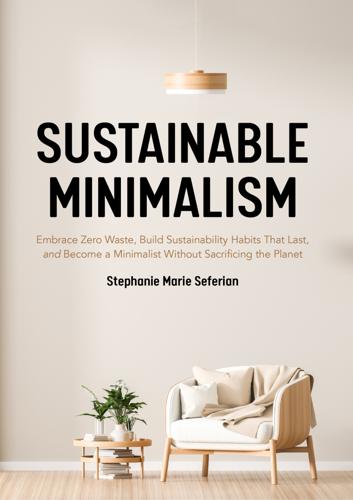
Sustainable Minimalism: Embrace Zero Waste, Build Sustainability Habits That Last, and Become a Minimalist Without Sacrificing the Planet (Green Housecleaning, Zero Waste Living)
by
Stephanie Marie Seferian
Published 19 Jan 2021
Put Vampire Energy Suckers on Notice GoogleTV and AppleTV set boxes, computers, modems, and DVD players suck significant energy when they are “sleeping.” Unplug them when they’re not in use and watch your electricity bill drop. 8. Carpool with Pride Ridesharing decreases the amount of cars on the road, eliminates unnecessary carbon dioxide from entering the atmosphere, and saves money. (It saves you the hassle of driving, too!) Coworkers don’t live nearby? No problem. Consider using one of countless rideshare apps to crowdsource your commute. 9. Turn Down the Water Heater Most of us rarely—if ever—need tap water at its hottest, so why not turn down the water heater? It’s as easy as turning a knob.

You've Been Played: How Corporations, Governments, and Schools Use Games to Control Us All
by
Adrian Hon
Published 14 Sep 2022
Uber is more cunning when it comes to its gamification experience. It has to be: Amazon employs its workers, who gain stability in exchange for control over their working conditions, whereas Uber’s drivers are generally independent contractors and theoretically free to come and go as they please. What’s more, drivers usually have a choice of rideshare companies to work with, so Uber can’t afford to be quite as punitive as Amazon. Instead, its gamification is a veritable bonanza of quests and bonuses, all to entice drivers into working as long as they possibly can. As Jonathan Hall, Uber’s head of economic and policy research told the New York Times in 2017, “The optimal default we set is that we want you to do as much work as there is to do.
…
As it is, a few six-dollar bonuses offered to you multiple times a day could make up a substantial proportion of your income, at which point they’re not bonuses any more—they’re just pay contingent on following orders. It’s coercion of a different kind. And Uber doesn’t feel any need to play fair, as Harry Campbell, owner of the Rideshare Guy, told The Verge: “They encourage drivers to go to certain places during certain times but there’s no guarantee that you’ll get a ride.”15 There is a guarantee Uber will take drivers for a ride, though. So we have an answer to my question at the start of this chapter: If workplace gamification doesn’t work in the sense of improving productivity in the long term, why do companies keep trying it?
…
Noam Scheiber, “How Uber Uses Psychological Tricks to Push Its Drivers’ Buttons,” New York Times, April 2, 2017, www.nytimes.com/interactive/2017/04/02/technology/uber-drivers-psychological-tricks.html. 9. “Uber Marketplace Driver Promotions,” Uber Technologies, accessed November 26, 2021, www.uber.com/us/en/marketplace/pricing/driver-promotions; “Become a Rideshare Driver in Your City,” Uber Technologies, accessed November 26, 2021, www.uber.com/us/en/drive/promotions. 10. Brett Helling, “Ridester’s 2020 Independent Driver Earnings Survey—Driver Income Revealed,” Ridester, updated May 25, 2021, www.ridester.com/2020-survey. 11. “Streak Bonus—Lyft Help,” Lyft, accessed November 26, 2021, https://help.lyft.com/hc/en-us/articles/115015748908-Streak-Bonus. 12.
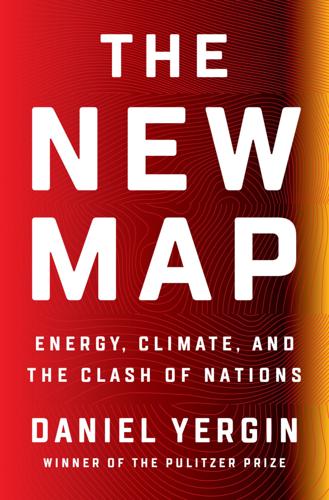
The New Map: Energy, Climate, and the Clash of Nations
by
Daniel Yergin
Published 14 Sep 2020
The one market that seemed to be guaranteed for oil for a very long time was transportation and, specifically, the automobile. No longer, not on the “Roadmap” to the future. For oil now faces a sudden challenge from the New Triad: the electric car, which uses no oil; “mobility as a service,” ride-hailing and ride-sharing; and cars that drive themselves. The result could be a contest for dominance in a new trillion-dollar industry: “Auto-Tech.” * * * — The debate over how rapidly the world can and must adjust to a changing climate, and how much it will cost, is unlikely to be resolved in this decade.
…
But the coronavirus and social distancing delivered an unexpected blow to ride sharing. Would people want to share vehicles, or would they rather own their own mobility? In one indication, by June of 2020, less than three months after the reopening of China, DiDi was back to 70 percent of its pre-crisis level. But the answer elsewhere would only become clear after the crisis. Chapter 40 AUTO-TECH Much will change for the auto industry and the oil industry if the future is no longer about owning a car—“mobility as a product”—but rather hailing a car—“mobility as a service.” To begin with, what does the rapid rise of ride hailing do to automobile ownership?
…
He was replaced by Dara Khosrowshahi, who had been CEO of the online travel company Expedia.6 By then, the ride-hailing industry was already well established; Uber alone had two million drivers worldwide, and “Uber” had the status of a verb. The growth in ride hailing had proved exponential. In San Francisco alone, Uber’s revenues were in the billions, compared to less than $200 million for taxis. By 2017, Uber was operating in 540 cities around the world; Lyft, 290 in the United States. In the United States, Uber had about 70 percent of ride hailing and Lyft, 30 percent. Internationally, in addition to DiDi, other major players have emerged, including Gett in Europe and Ola in India.

Palo Alto: A History of California, Capitalism, and the World
by
Malcolm Harris
Published 14 Feb 2023
Silicon Valley’s twenty-first-century firms underwent their own type of rapid carcinization, flattening into “platforms” suspended on rows of contractor pin legs. At first, the Uber guys clearly did not understand what they had, and neither did a parallel group of guys building their biggest competitor, Lyft. The two were made for disparate use cases—the Lyft founders admired the efficiency of ride-sharing in Zimbabwe, which made full use of empty seats, while the Uber guys wanted to pay less for a limo—but they converged on the same model. Like the winningest firms of the dot-com era, they tended toward monopoly plays, searching for social layers to disrupt with computers. When it comes to a given niche, that meant whoever could show the most and fastest growth could attract the most and fastest capital, which turbocharged growth, which attracted more capital, and so on.
…
That part did not happen, and it’s easy to understand why: You can’t improve the well-being of the working class with the money you get from sabotaging the well-being of the working class. Unfortunately, tech workers used their own products. Crabby platforms grew by tearing up the social foundation, the way hydrolickers carved away at that Placer County mining town until the whole thing was ready to slide down the hill. Airbnb undermined the hospitality industry, and the ride-share companies had the same effect on transportation. Instead of eating big-tip lunches at white-cloth restaurants, tech workers ordered fast-casual from an app, perhaps using one to order, another to pay, and a third to deliver. Instead of cartelized cabs and black cars—or state-wage buses and trains—they ordered Ubers and Lyfts.
…
The firm subsidized riders and drivers, changing the model from “better than a cab, cheaper than a limo” to “cheaper than a cab, so don’t take a cab ever again.” It was burning billions of investor dollars, faster than any start-up in history, but already the black-car drivers felt betrayed. Inexorably, as the ride-sharing companies broke the cab cartels, they pushed down wages for working drivers. In New York City, community members and reporters found Uber and its effects on the market responsible for a wave of suicides by professional taxi and black-car drivers, at least eight in 2018 alone.12 This was one of the first large battles in what was, in retrospect, a struggle over the nature of work.

Prediction Machines: The Simple Economics of Artificial Intelligence
by
Ajay Agrawal
,
Joshua Gans
and
Avi Goldfarb
Published 16 Apr 2018
It’s just different cultures, different policy regimes, and a different environment.”21 This is certainly the case for pursuing features like facial recognition. China, in contrast to the US, maintains a massive centralized database of photos for identification. This enables companies like Chinese startup Face++ to develop and license a facial recognition AI to authenticate the driver for passengers using Didi, the largest ride-hailing company in China, and also to transfer money via Alipay, a mobile payment app used by more than 120 million people in China. This system relies entirely on its facial analysis to authorize payment. Furthermore, incumbent Baidu is using a facial recognition AI to authenticate customers collecting their rail tickets and tourists accessing attractions.22 By contrast, in Europe, privacy regulation makes data access far more stringent than elsewhere, which may shut out European firms from AI leadership altogether.
…
Second, they had sensors affixed to them—their eyes and ears most importantly—that fed contextual data to their brains to ensure that they put their knowledge to good use. But so did other people. No London cabbie became worse at their job because of navigation apps. Instead, millions of other non-cabbies became a lot better. The cabbies’ knowledge was no longer a scarce commodity, opening up cabbies to competition from ride-sharing platforms like Uber. That other drivers could show up with “The Knowledge” on their phones and predictions of the fastest routes meant they could provide equivalent service. When high-quality machine prediction became cheap, human prediction declined in value, so the cabbies were worse off. The number of rides in London’s black cabs fell.
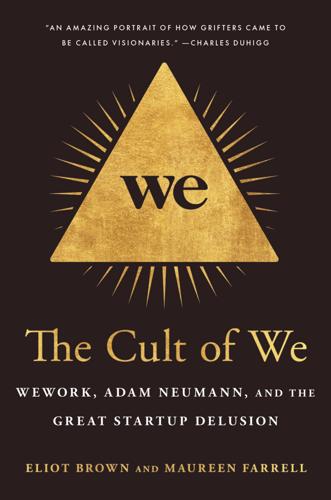
The Cult of We: WeWork, Adam Neumann, and the Great Startup Delusion
by
Eliot Brown
and
Maureen Farrell
Published 19 Jul 2021
The city quickly became a terrarium of money-losing startups that turned former jewelry and rug storage spots into buzzy offices with Ping-Pong tables and macchiato stations. Employees at VC-funded HR software companies (Zenefits) would line up for lunch at VC-backed salad purveyors (Sweetgreen) and stop for coffee at VC-backed coffee shops (Philz), wearing VC-backed wool sneakers (Allbirds). They’d get rides for well below their cost from unprofitable ride-hail companies (Uber) or park their cars below cost with unprofitable on-demand valets (Luxe). They’d purchase homes through unprofitable startup brokerages (Compass) and store belongings with unprofitable self-storage companies (Clutter). Discounts abounded: a massive wealth transfer was going on from venture capital funds spilling over with money to consumers who got below-cost products.
…
Neumann was obsessed with bringing WeWork to the most populous country in the world; he frequently told staff that anyone trying to build a global company needed to be in China. Looking to China also gave WeWork a good excuse to raise more money. It was a novel move previously executed by Travis Kalanick of Uber, who launched ride hailing in the country in 2014 and was in the process of raising more than $1 billion just for his China operation. Neumann’s existing investors weren’t happy to hear about his fund-raising plan. Bruce Dunlevie of Benchmark and Michael Eisenberg—who had left Benchmark to run his own firm—had been pushing him to improve existing operations.
…
He was there to make his own mark on the tech scene: Son would take to the same stage later in the day, where he described the future of India in euphoric terms, declaring it “the beginning of the big bang.” Son had recently invested $2 billion in India-based companies. Onstage, he pledged to accelerate that number in the coming years. But Son’s ambitions ran far larger. With a portfolio that extended from the telecom giant Sprint to stakes in ride-hailing startups in India and China, SoftBank was already one of the world’s best-known tech investors, having survived through several ups and downs. Son, known in tech circles simply as Masa, liked to tell people that he was the world’s richest man in 2000 for three days before losing almost everything—more than $70 billion—in the dot-com bust.

Terms of Service: Social Media and the Price of Constant Connection
by
Jacob Silverman
Published 17 Mar 2015
To reach such a state would require that our actions online go untracked, much less be used against us in ways we don’t expect. Unfortunately, an entire industry has built up around doing just that. They’re becoming increasingly wary that their lives are going to be no longer their own. —John Pezold, Georgia state representative If you’ve ever used Uber, the ride-sharing service and smartphone app, you’re probably familiar with rating drivers. After each trip, a passenger is expected to rate his or her driver on a score from 1 to 5. Too many low scores and the driver’s job is in jeopardy. What many people don’t know is that drivers rate their passengers as well, and these scores are usually kept hidden from passengers.
…
When a group of Uber drivers assembled outside the company’s headquarters to protest their firing, the company’s general manager said that the drivers weren’t employees and that, when they were fired, it simply amounted to deactivating the drivers’ accounts. The given reason? Low ratings from passengers. This insouciance is built into Uber, which calls itself a software company, or alternatively, a transportation network company, rather than a taxi company. (Sidecar identifies as a peer-to-peer ride-sharing service.) Uber is also known for flouting local laws by setting up business in a new city without speaking to officials responsible for managing the transport sector. There’s a great deal of unacknowledged work involved in the sharing economy. Drivers have to keep their cars clean and insured, with no help from the company nominally employing them.
…
Or that these moderators spend hours numbly scrolling through grisly photos that people around the world are trying to upload to the network. Uber’s selling point is convenience: press a button on your phone and a car will arrive in minutes, maybe seconds, to take you anywhere you want to go. As long as that’s what happens, what do consumers have to complain about? Now joined by a host of start-up delivery services, ride-sharing companies are in the business of taking whomever or whatever from point A to point B with minimal fuss or waiting time. That this self-indulgent convenience ultimately comes at the expense of others is easily brushed off or shrouded in the magical promise that anything you want can be produced immediately.
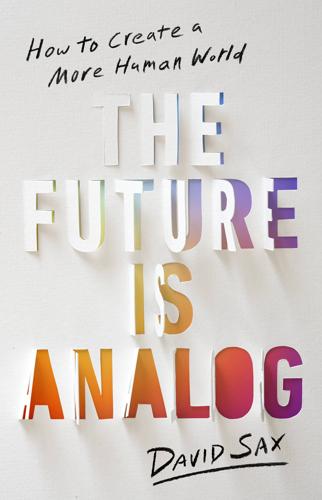
The Future Is Analog: How to Create a More Human World
by
David Sax
Published 15 Jan 2022
Fleets of self-driving electric vehicles were presented as the solution to so many of a city’s problems—public transit and trash collection, carbon emissions, congestion and accidents—and these would be supplemented by other digitally enabled vehicles, like the electronic scooters that already littered the sidewalks of cities around the world. Rather than replacing cars, many smart city plans proposed harnessing their true potential. By 2018 many cities were cutting deals with companies like Uber and Lyft to weave private ride sharing into their transit systems, based on the widely accepted promise that rideshares easily reduced congestion, emissions, and the other drawbacks of private car ownership, and paying them would be cheaper than investing in expanded bus service or building costly subway lines. If you lived in a place like, say, Silicon Valley (a sprawl of car-centric suburbs impossible to walk around), this made perfect sense.
…
fumed Roberta Gratz, when we spoke about Sidewalk Toronto’s plans. “They’re not going to eliminate traffic; they’re going to increase traffic.” Studies already showed that this had happened with Uber and Lyft and other ride-sharing companies worldwide: all those drivers, cruising around in their empty cars, waiting for the next ping of a pickup (an activity known as deadheading), actually added more pollution and congestion to cities, even compared to privately owned cars. Ride sharing’s digital future just put more cars on the road, and from what I saw every day, their drivers already drove like idiotic robots. Not a day goes by where I don’t witness an Uber driver making a suicidal, blind U-turn on a busy street, or pulling over in the middle of a bike lane without a signal, or driving the wrong way on a one-way street (my damn street!)
…
“All the good intentions behind trying to fix problems and treating technology to get at those big questions, it ends up over and over again as a PR performance. They rarely start from the problems.” Instead, smart cities offer digital solutions in search of an actual problem, like one Sidewalk Labs program in Columbus, Ohio, that proposed using driverless cars and ride sharing to bring patients to medical appointments as a solution to persistently high rates of infant mortality in Black neighborhoods, rather than, say, instituting better public transit, education, and prenatal services to improve maternal and infant health in a vulnerable community. “Technology might be an answer to that, but it cannot be the answer,” Baykurt said.

WTF?: What's the Future and Why It's Up to Us
by
Tim O'Reilly
Published 9 Oct 2017
In 2012, Sunil’s work inspired them to launch a new service, called Lyft, which offered the first public peer-to-peer ride-sharing service for local pickup not by professional drivers, but by “your friend with a car.” Sunil, late to the party despite being way early, launched Sidecar at about the same time. (It was still in private beta when Lyft launched publicly.) But by the time Sidecar went out to raise money, Uber and Lyft had already built huge venture capital war chests, and Sidecar was unable to compete in a capital-intensive business. It went out of business at the end of 2015. Uber responded to Lyft with UberX, and the ride-sharing landscape as we know it today was born.
…
In fact, one Internet entrepreneur had thought of Camp and Kalanick’s idea long before they did. Sunil Paul’s patent for System and Method for Determining an Efficient Transportation Route, filed in 2000 and issued in 2002, is eerily prescient. It describes almost perfectly many of the features of modern on-demand ride-hailing systems. But all the pieces of the puzzle weren’t yet on the table to build what Sunil imagined. “I had this idea that the smartphone would replace cars,” Sunil told me. “You wouldn’t need a car anymore because you could coordinate your transportation through your smartphone.” Early smartphones existed at that time, mostly in Europe, but they were far from ubiquitous.
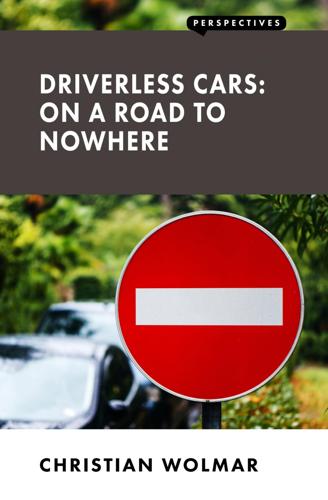
Driverless Cars: On a Road to Nowhere
by
Christian Wolmar
Published 18 Jan 2018
Shared use There is undoubtedly a trend, particularly among millennials, of being less interested in owning – or even driving – a car compared with the previous generation. A PriceWaterhouseCoopers report on connected cars suggests that ‘urban residents in Western markets appear to be losing interest in owning their own cars, a trend exacerbated by their desire to move to urban areas, where cars simply aren’t a requirement, and where public transport and ride-sharing apps can easily fulfil their needs’.29 Indeed. But this has to be put into context: global figures for car sales are still rising, in line with economic growth, and the shared-use concept has therefore only been adopted by a small urban-living minority. The idea that people will readily opt for communal vehicles is also questionable.
…
General Motors, while eschewing a precise time line, is almost as gung-ho about its ambitions: ‘we expect to be the first high-volume auto manufacturer to build fully autonomous vehicles in a mass-production assembly plant’, its CEO, Marry Barra, said in December 2016. The company paid $581 million in 2016 to buy a self-driving technology start-up called Cruise Automation, and it has said its focus will be on ride sharing, suggesting that the company is predicting the decline of the current model of individual car ownership. GM’s ‘Super Cruise’ system is due for release in 2018, but it is only considered as Level 2 on the automation scale. Several other car manufacturers have teamed up with tech companies too. Ford is investing $1 billion in a robotics company called Argo AI and, as mentioned in the previous chapter, it is skipping Level 3 automation.
…
The South Korean firm Hyundai is also investing heavily, with $1.7 billion allocated to its autonomous car programme. In February 2017 the company’s senior research engineer, Byungyong You, said that they were ‘targeting…the highway in 2020 and urban driving in 2030’,34 which would effectively be Level 3 and Level 4, respectively. Volvo is focusing on two different ends of the market: ride sharing and luxury cars. It has entered into a $300 million joint venture with Uber to develop autonomous cars. 58 What can cars do now? Volvo CEO Hakan Samuelsson said in an interview in July 2016: ‘It’s our ambition to have a car that can drive fully autonomously on the highway by 2021.’ 35 In June 2017 Daimler announced an agreement with Bosch to bring both Level 4 and Level 5 autonomous vehicles to urban environments ‘by the beginning of the next decade’.

No Ordinary Disruption: The Four Global Forces Breaking All the Trends
by
Richard Dobbs
and
James Manyika
Published 12 May 2015
In fact, intangible digital assets—such as behavioral data on consumers and tracking data from logistics—can be the seeds of entirely new products and services. The disruption in taxi services is one example. Uber uses algorithms to determine “surge” prices in times of peak demand.46 Lyft, another on-demand ride-sharing start-up, employs a “happy hour” pricing model to lower rates in times of soft demand.47 Health care is another example of a sector where the marriage of data, analytical models, and decision-support tools—all key components of digital capital—can create immense economic value, improve customer experience, and create difficult-to-replicate capabilities.
…
in competition, 10–11, 80, 84–85, 166–168 in consumption, 9, 94–95, 95 (table) in labor market, 10, 151 overview, 9–11, 203 Tunisia, 111–112 Twitter, 43 (table) Uber, 31–32, 47, 48, 154 Ukraine, 118–119, 176 Umea Energi, 28 Unemployment, 150, 155–156, 160, 184 (table) Unilever, 11, 67–68, 86, 87, 177–178 United Kingdom aging population in, 65, 70 car insurance and price transparency in, 173 Clarks Village, 93–94 connectedness rank of, 81 (table) e-commerce market in, 99 (fig.) England, 29, 31–32, 93–94, 143 fertility rate decline in, 56 labor market gap in, 162, 163–164 new competitor entry of, 84 public spending in, 191, 192 ride-sharing in, 31–32 savings rate in, 139 unemployment in, 184 (table) United States China e-commerce overtake of, 1–2, 9, 96, 98, 99 (fig.) connectedness rank of, 81 (table), 86 in economic center of gravity, 16–18, 19 (fig.) energy regulation in, 196 environment policy in, 119, 196 Federal Reserve, 10, 138 government centralization in, 192 government incentives in, 194 immigrant labor in, 77 international students in, 78 labor market gap in, 149–150, 153 (table), 155, 161, 193 local manufacturing in, 27 natural gas and oil extraction in, 2, 36, 116, 125 public-private partnerships in, 198 savings rate in, 138, 139 urban collaborative spaces in, 27 urbanization speed and scale in, 20 (fig.)
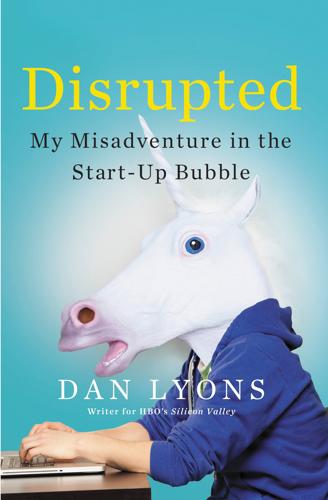
Disrupted: My Misadventure in the Start-Up Bubble
by
Dan Lyons
Published 4 Apr 2016
At a traditional company she would have been owed a week or two of vacation pay, but from HubSpot, she got nothing. Think about how many hundreds of people churn in and out of a place like HubSpot, and you can see how the savings add up. Another way to drive down labor costs is to deny people employee status in the first place. Uber, the ride-sharing company, saves money by categorizing drivers as independent contractors rather than employees. Uber insists drivers prefer this because they enjoy more freedom. Uber and others in the “share economy” are creating a new form of serfdom, an underclass of quasi-employees who receive low pay and no benefits.
…
During my time at HubSpot, I was shocked to see how badly managed the company was and how packs of inexperienced twenty-something employees were being turned loose and given huge responsibility with little or no oversight. In the world of start-ups that is now the norm, not the exception. The consequences are just what you would expect. Employees at Uber, the ride-sharing company, have used a “God View” feature to stalk people using the service, including a BuzzFeed journalist. Re/code, a tech blog, claims other companies have done the same, including Lyft, a rival to Uber; Swipe, a photo-sharing app; and Basis, which makes a “health watch” that tracks people’s heart rates, sleep patterns, and other personal information.

The End of College: Creating the Future of Learning and the University of Everywhere
by
Kevin Carey
Published 3 Mar 2015
Office of, 51 Secret of Life online course, see Introduction to Biology—The Secret of Life (7.00x) Securities and Exchange Commission (SEC), 188–89 Seoul University, 204 Sex and the City (television series), 64 Sexton, John, 64 Shannon, Claude, 52, 79, 147 Shockley, William, 124 Shockley Semiconductor, 124 Sieg, Wilfried, 109–12 Siemens, George, 150 Silber, John, 59, 61–62, 64 Silicon Graphics, 128–29 Silicon Valley, 122, 124, 126–34, 139–41, 168, 177, 180, 192, 204, 216 attitude toward hackers in, 169 attrition rate of companies in, 134 business model of, 145, 176 markers of status in, 66 software development in, 144–45, 186 symbiosis of Stanford University and, 126, 128, 147, 171–72 Thrun and, 148–53 University of Everywhere and, 121, 133, 141, 159, 234, 236 venture capital in, 126, 131, 141 Simon, Herbert, 78–79, 82–83, 100, 147, 148, 187 Slosson, Edwin, 156 Smithsonian Institution, 208 Social Network, The (film), 166 Socrates, 20–21, 31, 98, 137 Somme, Battle of the, 98 Soul Man (film), 166 Sound and the Fury, The (Faulkner), 166 Southern California, University of, 64 Stack Overflow, 217–18 Stanford, Leland, 26 Stanford Research Institute (SRI), 123, 125–26 Stanford University, 53, 64, 66, 101, 116, 157–58, 175, 181 admissions to, 138, 161, 212, 245 artificial intelligence laboratory at, 148, 150, 153, 170 Center for Advanced Study in the Behavioral Sciences, 136 Center for Entrepreneurial Studies, 151 Cold War research at, 54, 78 Education Program for Gifted Youth (EPGY), 155 endowment of, 150 experiments with computer use in education at, 91–94, 99–100, 106, 109, 155 founding of, 26 online courses offered by, 146, 147, 149–54, 156, 227 symbiosis of Silicon Valley and, 126, 128, 147, 171–72 State Department, U.S., 40 Staton, Michael, 121–22, 128, 130–31, 133–34, 139, 144, 147, 153, 156, 184 Stein, Gertrude, 165–66 Stephens, Dale, 139–41 Stuyvesant High School (New York City), 1 Suffolk County Community College, 164 Suppes, Patrick, 78, 89–94, 99–100, 104, 106, 109, 116, 155, 157–59 Swarthmore College, 53 Teacher in America (Barzun), 32–33 TED (Technology, Education, Design) festival, 148 Teletype, 93, 156 Terman, Frederick, 123 Texas, University of, 204, 216 Texas State University, 55 Thiel Fellowships, 139–41 Thrun, Sebastian, 147–53, 158, 169, 170, 181, 191 TIAA-CREF, 48 Timaeus (Plato), 17 Toyota, 129 Trachtenberg, Stephen Joel, 42–44, 53, 56, 59, 61–63, 65, 66, 197–98 TransUnion, 200 Trilling, Lionel, 32 Trivial Pursuit, 189 Truman, Harry, 51 Tulsa Senior and Junior High Schools, 90 Turner, Lana, 208 Twitter, 129, 217 U.S. Census, 9 U.S. News & World Report, 42, 58–60, 64, 163, 230 Uber ride-sharing service, 121–22, 133 Udacity, 152–54, 158, 170, 223, 231 UnCollege Movement, 139, 141 United Kingdom, Open University of, 231 University of Everywhere, 5–7, 11, 141, 201, 236, 238, 241 cost of, compared to current cost of higher education, 234 course development for, 85, 89, 111–12 credentialing system for, 218 elite university involvement in, 158–59 emergence of, 66–67, 73, 121, 231 hybrid university unbundled and reassembled into, 133 international collaboration in, 247–48 public consciousness of, 182 See also Massive open online courses USEED, 132–33 Uses of the University, The (Kerr), 54 Usher software, 199 Utah, University of, 125 Vatican, 16 Verizon, 146 Vermeer, Jan, 116 Veysey, Laurence, 34, 249, 261n Victoria’s Secret, 187–88 Virginia, University of, 154, 193 Virginia Tech Math Emporium, 108, 113 Volkswagen, 148 Vygotsky, Lev, 84, 227 Wall Street Journal, 128, 154 Walmart, 145 Wang Laboratories, 168 Washington, George, 23 Washington, University, 35, 204 Washington Post, 78 Washington University (St.
…
Press stores, 163 James, Henry, 32 James, William, 32–33, 45, 47, 250 Jefferson, Thomas, 23, 193 Jews, 46, 53 Jobs, Steve, 126 Johns Hopkins University, 27, 29 Johnson, Lyndon, 55, 56, 61 Jones, Tommy Lee, 165 Jordan, David Starr, 26 Junior college, 55 (see also Community colleges) Kamlet, Mark, 72–73, 251 Kantian philosophy, 251 Kennedy, John F., 165 Kerr, Clark, 53–56 Khan, Salman, 148–49 Khan Academy, 149, 155 Kickstarter, 133 King, Danny, 216, 218 King’s College, 23 Kiva, 133 Kleiner Perkins Caufield & Byers, 153 Knapp, Steven, 43 Koller, Daphne, 153–58, 171 Kosslyn, Stephen, 136–37 Kyoto University, 204 Lancet, 222 Lander, Eric, 1–4, 38–39, 44, 177–78, 221 MIT freshman biology course taught by, 11 (see also Introduction to Biology—The Secret of Life [7.00x]) Land-grant universities, 25–27, 35, 51, 53, 55, 95, 108, 122–23, 168 Learn Capital, 130, 156–57 Leckart, Steven, 149 Legally Blonde (film), 166 Levin, Richard C., 157 Lewin, Walter, 190–91 Liberal arts, 16, 27–31, 237, 241, 244–45 in accreditation standards, 50 core curriculum for, 49 at elite universities, 179 online courses in, 158, 244 PhDs and, 35 rankings and, 59 teaching mission in, 253 training, research, and, 29, 33, 261n (see also Hybrid universities) Lincoln, Abraham, 25 LinkedIn, 66, 217 Litton Industries, 75 Livy, 25 London, University of, 23 Lue, Robert, 178–81, 211, 231 Lyft ride-sharing service, 122 MacArthur, General Douglas, 51, 90 MacArthur “Genius” awards, 2 MacBooks, 132, 144 Madison, James, 23 Manitoba, University of, 150 Maples, Mike, Jr., 128–30, 132 Marine Corps, U.S., 140 Marx, Karl, 45 Massachusetts Bay Colony, Great and General Court of, 22 Massachusetts Institute of Technology (MIT), 37–38, 59, 116, 132, 148, 153, 167–79, 245 admissions to, 39, 161, 212, 214–15, 245 Brain and Cognitive Sciences Complex, 1–4, 143, 173–74 Bush at, 51–52, 79, 125, 168 computer science sequence offered online by, 231, 233 founding of, 29, 167 General Institute Requirements, 14, 190, 241 graduation rate at, 8 hacks as source of pride at, 168–69 joint online course effort of Harvard and, see edX MITx, 169, 173, 203 OpenCourseWare, 107–8, 150, 169, 185, 191 prestige of brand of, 163, 181 Saylor at, 176–90 Secret of Life (7.00x) online offering of, see Introduction to Biology—The Secret of Life (7.00x) tour of campus of, 168, 174 wormhole connecting Stanford and cafeteria at, 174–75, 179, 235 Massive open online courses (MOOCs), 150, 154, 156, 158, 159, 185, 204, 255 global demand for, 225 initial audience for, 214–15 providers of, see names of specific companies and universities Master Plans, 35, 60, 64–65 Master’s degrees, 117, 193, 195–96 Mayo Clinic, 242 Mazur, Eric, 137 “M-Badge” system, 208–9 McGill University, 204 Mellon Institute of Science, 75, 76, 229 Memex, 79, 80 Mendelian genetics, 3, 103–4 Miami-Dade Community College, 64 Microsoft, 128, 139, 145, 146, 188, 204 MicroStrategy, 187–91, 199 Middle States Association of Colleges and Schools, 50 Minerva Project, 133–38, 141, 215, 235, 236, 243 Minnesota, University of, Rochester (UMR), 242–43 Missouri, University of, 208 Moore’s law, 176 Morrill, Justin Smith, 25–26 Morrill Land-Grant Act (1862), 25, 168 Mosaic software program, 126 Mozilla Foundation, 205–8, 218, 248 MS-DOS, 87 Myanganbayar, Battushig, 214, 215 NASDAQ, 177, 188 National Aeronautics and Space Administration (NASA), 208 National Broadcasting Company (NBC), 96 National Bureau of Economic Research, 10 National Institutes of Health, 52 National Instruments, 216 National Manufacturing Institute, 208 National Oceanic and Atmospheric Administration, 208 National Science Foundation, 52 National Survey of Student Engagement, 243 Navy, U.S., 53, 123 Nebraska, University of, 26 Nelson, Ben, 133–35, 139, 181 Netflix, 131, 145 Netscape, 115, 126, 128, 129, 204–5 Newell, Albert, 79, 105 New Jersey, College of, 23 Newman, John Henry, 27–29, 47, 49, 244 Newman Report (1971), 56 Newton, Isaac, 190 New York, State University of, Binghamton, 183–84 New York City public schools, 1, 44 New York Times, 9, 44, 56–57, 107–8, 149, 170 New York University (NYU), 9, 64, 96, 250 Ng, Andrew, 153, 158 Nicomachean Ethics (Aristotle), 17 Nimitz, Admiral Chester W., 90 NLS/Augment, 125 Nobel Prize, 3, 45, 59, 78, 80, 176 Northeastern University, 64 Northern Arizona University, 229–30 Health and Learning Center, 230 Northern Iowa, University of, 55 Norvig, Peter, 149, 170, 227–28, 232 Notre Dame (Paris), cathedral school at, 18 Nurkiewicz, Tomasz, 218 Obama, Barack, 2 Oberlin College, 46 O’Brien, Conan, 166 Oklahoma, University of, 90 Omdurman Islamic University, 88 oNLine system, 125–26 Open Badges, 207 Open source materials and software, 177, 205–6, 215, 223, 232 Organisation for Economic Co-operation and Development, 9, 224 Overeducated American, The (Freeman), 56 Oxford University, 19, 21, 23, 24, 92, 135 Packard, David, 123 Parkinson’s disease, 70 Paris, University of, 18–19, 21, 137 Pauli, Wolfgang, 176 Pauling, Linus, 70 Pausch, Randy, 71–72 Peace Corps, 125 Pellar, Ronald (“Doctor Dante”), 208 Pell Grant Program, 56 Penguin Random House, 146 Pennsylvania, University of, 23, 24, 31 Wharton Business School, 155 Pennsylvania State University, 53 People magazine, 57 Pez dispensers, 146 Phaedrus (Socrates), 20, 98 PhDs, 7, 55, 117, 141, 193, 237, 250, 254 adjunct faculty replacing, 252 college rankings based on number of scholars with, 59 regional universities and community colleges and, 60, 64, 253 as requirement for teaching in hybrid universities, 31–33, 35, 50, 60, 224 Silicon Valley attitude toward, 66 Philadelphia, College of, 23 Philip of Macedon, 92 Phoenix, University of, 114 Piaget, Jean, 84, 227 Piazza, 132 Pittsburgh, University of, 73–76 Pixar, 146 Planck, Max, 45 Plato, 16, 17, 21, 31, 44, 250–51 Portman, Natalie, 165 Powell, Walter, 50, 117 Princeton University, 1–2, 23, 112, 134, 161, 245 Principia (Newton), 190 Protestantism, 24 Public universities, 7, 55, 177, 224, 253 Purdue University, 96, 208 Puritans, 22–24 Queens College, 23 Quizlet, 133 Rafter, 131–32 Raphael, 16, 17 Reader’s Guide to Periodical Literature, 87 Reagan, Ronald, 56 Regional universities, 55, 60, 64 Reid, Harry, 42 Renaissance, 19 Rhode Island, College of, 23 Rhodes Scholarships, 2 Rice University, 204 RNA, 3 Rockstar Games, 230 Roksa, Josipa, 9, 36, 85, 244 Romans, ancient, 16 Roosevelt, Theodore, 165 Ruby on Rails Web development framework, 144 Rutgers University, 23 Sample, Steven, 64 Samsung, 146 San Jose State University, 177 Sandel, Michael, 177 SAT scores, 63, 136–37, 171, 195, 213 Saylor, Michael, 186–93, 199, 201 Saylor.org, 191, 223, 231 Schelling, Friedrich Wilhelm Joseph, 45 School of Athens, The (Raphael), 16 Schopenhauer, Arthur, 45 Science: The Endless Frontier (Bush), 51 Scientific American, 92, 155 Scientific Research and Development, U.S.

The Age of Stagnation: Why Perpetual Growth Is Unattainable and the Global Economy Is in Peril
by
Satyajit Das
Published 9 Feb 2016
Digital advertising diverts revenue from newspaper, magazine, and TV advertising. Technological innovation increasingly relies on lowering costs, which is achieved by reducing the quality of the product as well using untrained individuals or personal assets. Airbnb allows people to rent out their own home for accommodation. Uber, a ride-sharing application, allows individuals to use their own cars to provide transport services. Wikipedia and other online media or entertainment services rely on unpaid labor. This kind of innovation also focuses on creating free platforms or services in order to build a sufficiently large user community from which stealth revenues can be extracted, either directly or by selling user data to allow targeted marketing, or worse.
…
Airbnb, Lyft, and others do not always comply with regulations designed to ensure a minimum level of skill, standard of performance, safety and security, and insurance coverage. Taxi and hire-car drivers have protested about services that undercut their often regulated charges and livelihoods. There have been anecdotes about orgies in Airbnb-rented properties, and accidents or assaults involving ride-sharing drivers. Accountability for these services relies on the parties to a transaction rating each other, ensuring that inadequate performance will preclude future participation. Like all online reviews and rating systems, this is not a substitute for independent evaluation and oversight. Unfair reviews, predicated on ulterior motives or malice, can exclude individuals from future work, “deactivating” them.

Driverless: Intelligent Cars and the Road Ahead
by
Hod Lipson
and
Melba Kurman
Published 22 Sep 2016
On rare occasions, a car bearing a human driver appears. Warned of the presence of a nearby biological being behind the wheel, other cars react with caution, giving the human-driven car an extra-wide berth. To summon a taxi, you press a button on your phone. A few minutes later, a driverless taxi sidles up next to you. Since you agreed to ride-share, your pod already contains a passenger or two headed in your general direction, a minor annoyance that will substantially reduce the cost of your fare. Figure 2.1 A depiction of customized autonomous mobile office pods (concept). Source: Courtesy of IDEO Like the inside of an elevator, your pod’s interior is bare bones, utilitarian, with hard, easy-to-clean surfaces and minimal moving parts.
…
Led by legendary robotics professor William “Red” Whittaker, CMU’s Tartan racing team dominated the series of three government-sponsored races between autonomous vehicles that some people credit with catalyzing the development of the modern driverless car—the DARPA Challenges of 2004, 2005, and 2007 (DARPA is the research arm of the U.S. Department of Defense). In February 2015, the ride-sharing company Uber, eager to jump-start the development of its own autonomous vehicle, also gravitated to Pittsburgh and hired away some forty staff members from CMU’s robotics and computer science departments. Our goal was to spend a day visiting a legendary off-campus division of CMU’s formidable robotics department, the university’s National Robotics Engineering Center, or NREC.

Magic Internet Money: A Book About Bitcoin
by
Jesse Berger
Published 14 Sep 2020
Chapter 8 Competition 8.1 A New Frontier “We ask only that we be permitted to compete on an even basis, and if we are not worthy, then the competition shall, per se, eliminate us.” Jackie Robinson, Humanitarian, First Professional African-American Baseball Player Like the taxi industry before ride-sharing, fiat money was for decades a deeply entrenched monopoly, with no impetus for meaningful improvement, and no expectation of any imminent or existential threat. It operated with impunity. That state of affairs was permanently changed with the arrival of Bitcoin. Its launch marked the opening salvo of a new arms race to reimagine money for the 21st century and beyond.

Lonely Planet Iceland (Travel Guide)
by
Lonely Planet
,
Carolyn Bain
and
Alexis Averbuck
Published 31 Mar 2015
The changeable weather makes for tough going, and although the path is mostly paved, there is hardly any room on the road’s shoulder to provide a comfortable distance from vehicular traffic. Cycling can be a great way to explore more-rural regions. By Hitching & Ridesharing The most cost-effective way to venture around the Ring Road is to stick out your thumb. In summer it’s quite easy to hitch all the way around the Ring Road but be aware of the potential risks involved. Many hostels have rideshare posterboards in their lobbies. A great resource is www.samferda.is, an online rideshare messageboard. Plan Your Trip Outdoor Adventures Iceland’s spectacular natural beauty encompasses Europe’s largest national park and the mightiest ice cap outside the poles, plus a sea full of whales and the world’s biggest puffin colonies.
…
Flybuses ( GOOGLE MAP ; Airport–Ísafjörður Ikr1000; Ísafjörður–Bolungarvík Ikr1000; Airport–Bolungarvík Ikr1500 ), keyed to Icelandair flights (but anyone can use them), run Bolungarvík–Ísafjörður–Airport–Ísafjörður–Bolungarvík. In Ísafjörður they stop near the Hótel Ísafjörður. Check with the tourist office or www.westfjords.is on all buses, as the situation is in flux. Car For ridesharing check www.bilfar.is. AvisCAR HIRE (%591 4000; www.avis.is; Ísafjörður Airport) EuropcarCAR HIRE (%840 6074; www.holdur.is; Ísafjörður Airport) HertzCAR HIRE (%522 4490; www.hertz.is; Ísafjörður Airport) 8Getting Around City buses (Ikr350) operate from 7.30am to 6.30pm on weekdays (until 10.30pm in winter) and connect the town centre with Hnífsdalur and Tungudalur; they stop along the waterfront.

Fodor's Big Island of Hawaii
by
Fodor’s Travel Guides
Published 1 Aug 2022
Some areas, like downtown Kailua-Kona and Waimea, can become congested at certain times of day. For those traveling to South Kona, a bypass road between Keauhou and Captain Cook alleviates congestion considerably during rush hour. In general, you can expect the following average driving times. o Ride-Sharing Both Uber and Lyft have designated pickup sites at the Hilo and Kona airports. Those who plan on traveling long distances may find that regular taxis are a bit cheaper, and you may have a longer wait for Uber and Lyft pickups beyond the airports. Essentials ; Beaches Don’t believe anyone who tells you that the Big Island lacks beaches.
…
If you’re coming during the Merrie Monarch Festival, rental cars will be in short supply. TAXI A couple of taxi companies in Hilo provide relatively affordable rates. There are 17 taxi companies that service Hilo airport. Approximate cost to Hilo from the airport is $12, and to Banyan Drive hotels $10–$11. A taxi from Hilo to Volcano would cost around $70. There are rideshare (Uber and Lyft) services in Hilo, but wait times can be long. CONTACTS AA Marshall’s Taxi. E391 Kukuau St., Hilo P808/936–2654 wwww.taxihilo.com. Da Best Taxi Service. EHilo P808/557–7059. Beaches Hilo isn’t exactly known for tropical white-sand beaches, but a few nice ones in the area offer good swimming and snorkeling opportunities, and lush rain forest surrounds some of the beaches.
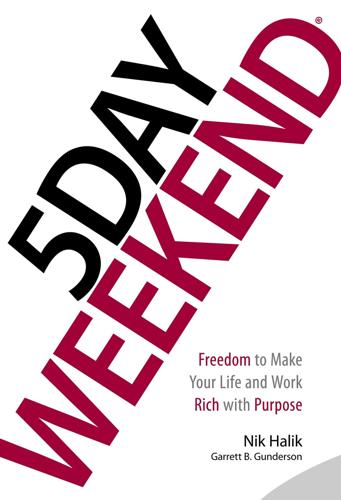
5 Day Weekend: Freedom to Make Your Life and Work Rich With Purpose
by
Nik Halik
and
Garrett B. Gunderson
Published 5 Mar 2018
There are plenty of people who have a driver’s license but don’t own a car. If you have an under-utilized car that’s just sitting in your garage and depreciating in value, you can rent it out to ridesharing drivers. You can now list your car on HyreCar.com. An average car owner has the potential to generate up to $12,000 per year, providing a good source of passive income. Also, your car is protected under HyreCar’s industry ridesharing insurance. Poshmark People buy or sell their clothing via Poshmark’s mobile app. The premise is that you can “make money from clothes that are just sitting in your closet.”

Make Your Own Job: How the Entrepreneurial Work Ethic Exhausted America
by
Erik Baker
Published 13 Jan 2025
It is important to acknowledge that entrepreneurship advocacy can serve socially as well as economically conservative ends; as Melinda Cooper has argued, critiques of contemporary capitalism that foreground its threat to tradition risk ignoring the fact that many of the architects of our current economic order sought quite deliberately to shore up received social hierarchies.11 But it is true, nevertheless, that entrepreneurial ideology also has a liberal, even self-consciously progressive branch, and its roots run just as deep as those of conservative entrepreneurialism. Now it’s 2023 and our taxi driver—Damani, the protagonist of Priya Guns’s novel Your Driver Is Waiting—is a queer woman, the daughter of Sri Lankan immigrants. She drives for a rideshare platform in an unnamed metropolis that one suspects is yet another version of New York. Once upon a time, Damani imagined a better life for herself. She graduated from college with a degree in anthropology: “Now I studied humans from my car.” She and her college friend, an underemployed math major, “had made it our thing to apply for twenty jobs every three months, but there was a waiting list for everything.”
…
People dance and drink and eat food that they make for each other. They read C. L. R. James and Angela Davis and work on organizing the revolution. “This was the only taste of a functioning utopia we had, and so it was our temple,” Damani explains. “You could be you and feel so free just being. Who said communism couldn’t be fun?”14 There are other rideshare drivers who hang out at Doo Wop, led informally by Damani’s friend Shereef. He reminds her: “It’s the haves and the have nots, there’s no in between!” They’re building a union, strategizing about how best to confront the platform that employs and exploits them. Damani brings Jolene to Doo Wop to meet her friends; she hopes to show her that there is another way to make change, another way to fight for justice, one in which people like her can be actors in their own right rather than merely the objects of the social-entrepreneurial interventions of well-meaning elites.
…
It has fed, over the course of the twentieth century, on the all-too-real decomposition of the working class of an earlier era of industrial capitalism, on the demolition of its social and political institutions, and on the separation of workers from the work that underpinned their self-consciousness as a class. And it is threatened today everywhere that a new working class is being recomposed. In unions of healthcare workers and rideshare drivers, in urban spaces discarded by capital and reclaimed for the work of mutual aid, in all those places where the poor and precarious organize to give themselves a foretaste of utopia—here we can glimpse, in an inchoate stage, a form of social life impervious to the demand to be entrepreneurial.
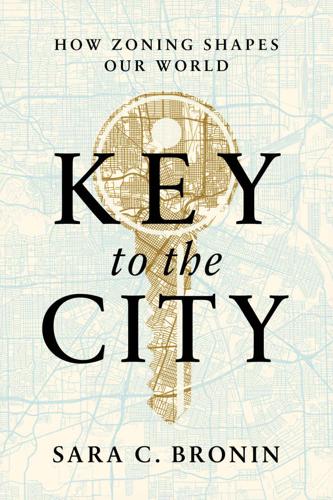
Key to the City: How Zoning Shapes Our World
by
Sara C. Bronin
Published 30 Sep 2024
As it stands now, most of us are Reverend Schullers, called by higher forces to practice an automobile ministry, surrounded by our asphalt sanctuaries. But is that who we want to be? Change never stops, and in figuring out how best to transport ourselves we will need to continue to adapt as new ways of moving emerge. Among current trends, car-share and ride-hailing services have changed our patterns of traffic, requiring more loading areas and diverting both riders and revenue from public transportation. Self-driving autonomous vehicles are laying claim to our streets. And massive subsidies of personal electric vehicles and charging stations reinforce the car as the primary way of getting around.
…
Census said that Buffalo had the sixth-highest rate of childhood poverty, at 42.3 percent. 100 one provision gave me pause: Buffalo Development Ordinance §§ 8.4.1, 8.4.2. Exempt from these provisions are single-family homes and duplexes. 101 board can require off-street parking: Buffalo Development Ordinance § 8.4.1. 101 suggests several strategies: Buffalo Development Ordinance § 8.4.2.B. The full list includes: 1. Walking, cycling, ridesharing, and transit promotion and education. 2. Parking cash-out programs or unbundled parking/market rate pricing. 3. Shared parking arrangements. 4. Enhanced bicycle parking and services (above the minimum required). 5. Support for car-share and bike-share services and facilities. 6. Carpooling or vanpooling programs or benefits. 7.

Brotopia: Breaking Up the Boys' Club of Silicon Valley
by
Emily Chang
Published 6 Feb 2018
But the vast majority of venture capital in 2016 went into fintech (meaning financial tech, such as apps that disrupt banking and retirement planning), security, genetics, augmented and virtual reality, and artificial intelligence, in addition to an outsize amount in transportation (dominated by funding of Uber, Lyft, and other ride-hailing services). These numbers indicate a big mismatch between ideas that attract mostly male VCs and ideas that attract female entrepreneurs. Is this a true gender gap? Maybe, but not necessarily. There is evidence to suggest that women choose lower-cost-of-entry, lower-growth sectors simply because they have fewer resources available to them.
…
I wish I’d voiced these concerns more effectively, but I was working with such legends, and I thought they knew better.” Every investor has a list of woulda, shoulda, coulda’s, to be fair, but had Lee spoken up, she might have saved Kleiner a lot of money—that is, if the legends had listened. A few years later, Lee suggested the firm make a seed investment in a quickly growing ride-hailing company called Uber. At that time, however, Kleiner didn’t typically invest at such an early stage. Later, she encouraged the partners to meet with Uber’s then-CEO Travis Kalanick as he was raising the Series B, but there was little interest. Given the juggernaut that Uber became—despite its cultural issues—clearly this was a missed opportunity.
…
Pishevar, a major Democratic party donor who raised money for President Obama and hosted a fundraiser with George Clooney for presidential candidate Hillary Clinton, was one of Uber’s most influential backers; he maintained an especially close relationship to co-founder Travis Kalanick. Geidt, who joined Uber as its fourth employee and its first woman, was in charge of launching the ride-sharing company in new cities at the time. A person with firsthand knowledge of Pishevar’s behavior toward Geidt confirmed the holiday party account. Though Geidt declined to comment when the story broke, it’s clear Pishevar was in a position of power. He had recently co-founded his own venture fund, Sherpa Capital, and the futuristic tube transportation company Hyperloop One.

Power and Progress: Our Thousand-Year Struggle Over Technology and Prosperity
by
Daron Acemoglu
and
Simon Johnson
Published 15 May 2023
After the Democratic Progressive Party came to power in the 2016 general election, Tang was appointed as a minister, with a focus on digital communication and transparency. She has built a variety of digital tools for providing transparency in government decision making and for increasing deliberation and consultation with the public. This digital-democracy approach was used for a number of key decisions, including the regulation of the ride-sharing platform Uber and of liquor sales. It involves a “presidential hackathon,” which allows citizens to make proposals to the executive. Another platform, g0v, provides open data from several Taiwanese ministries, which civic hackers can use to develop alternative versions of bureaucratic services.
…
Digital tools can provide information to managers not just for better decision making but also for the better monitoring of workers. Some of the AI-powered recommendation systems have incorporated and reintensified existing biases—for example, toward race in hiring or toward race in the justice system. Platforms for ride sharing and delivery have imposed exploitative arrangements on workers lacking protection or job security. Hence, the way in which even the most promising applications of human-machine complementarity are used is still dependent on market incentives, the vision and priorities of tech leaders, and countervailing powers.
…
According to the official planning document, a social credit system is founded on laws, regulations, standards and charters, it is based on a complete network covering the credit records of members of society and credit infrastructure, it is supported by the lawful application of credit information and a credit services system, its inherent requirements are establishing the idea of a sincerity culture, and carrying forward sincerity and traditional virtues, it uses encouragement to keep trust and constraints against breaking trust as incentive mechanisms, and its objective is raising the honest mentality and credit levels of the entire society. Early versions of the system were developed alongside private-sector firms, including Alibaba, Tencent, and the ride-sharing company Didi, with the purported aim of differentiating between acceptable (to the authorities) behavior and unacceptable behavior—and limiting the mobility and other actions of transgressors. Since 2017, prototypes of the social credit system have been implemented in dozens of major cities, including Hangzhou, Chengdu, and Nanjing.

Poland - Culture Smart!
by
Allen, Gregory;Lipska, Magdalena;Culture Smart!;
Published 15 Jun 2023
As a nation, Poland gave the world one of its first written constitutions and, more importantly, the knowledge that a people can endure any hardship and start again to rebuild their lives and their country. This book offers you a cultural compass to help you discover for yourself something of the richness of the Polish experience and way of life. Your journey will be both exciting and rewarding. Witamy w Polsce! USEFUL APPS Travel and Transportation BlaBlaCar Poland’s principal ride-sharing app. Register as a driver or passenger and share rides on your usual short and long distance routes. e-Toll Convenient payment app for Poland’s motorway toll roads. Google Maps Reliable route planning throughout Poland that includes all modes of transportation. JakDojade A useful app for route planning within Poland, with schedules for all methods of public transportation.
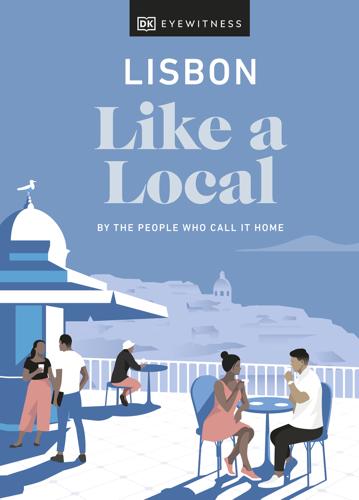
Lisbon Like a Local
by
DK
Leave plenty of time to buy your ticket – queues can be lengthy, especially on the first day of the month, when Lisboetas line up en masse to charge their monthly pass. By car and taxi Narrow streets and parking shortages make getting around by car difficult, so it’s only worth driving if you really must. For the same reasons, taxis can be slow and expensive. If you do want a cab, flag down a traditional taxi or use a ride-sharing app like Uber, Bolt or Free Now. Just make sure you’re standing in a spot that’s accessible to cars before hailing your ride. Download these We recommend you download these apps to help you get about the city. WHAT3WORDS Your geocoding friend A what3words address is a simple way to communicate any precise location on earth, using just three words.

The Inevitable: Understanding the 12 Technological Forces That Will Shape Our Future
by
Kevin Kelly
Published 6 Jun 2016
Car movements—Every car since 2006 contains a chip that records your speed, braking, turns, mileage, accidents whenever you start your car. Highway traffic—Cameras on poles and sensors buried in highways record the location of cars by license plates and fast-track badges. Seventy million plates are recorded each month. Ride-share taxis—Uber, Lyft, and other decentralized rides record your trips. Long-distance travel—Your travel itinerary for air flights and trains is recorded. Drone surveillance—Along U.S. borders, Predator drones monitor and record outdoor activities. Postal mail—The exterior of every piece of paper mail you send or receive is scanned and digitized.
…
See also books; ebooks and readers realism, 211–14, 216 real time, 66, 88, 104, 114–17, 131, 145 recommendation engines, 169 Red Dead Redemption, 227–30 Reddit, 136, 140, 143, 149, 264 Red Hat, 69 reference transactions, 285 relationship network analysis, 187 relativity theory, 288 remixing of ideas, 193–210 and economic growth, 193–95 and intellectual property issues, 207–10 legal issues associated with, 207–10 and reduced cost of creating content, 196–97 and rewindability, 204–7 and visual media, 197–203 remixing video, 197–98 renting, 117–18 replication of media, 206–9 Rethink Robotics, 51 revert functions, 270 reviews by users/readers, 21, 72–73, 139, 266 rewindability, 204–7, 247–48, 270 RFID chips, 283 Rheingold, Howard, 148–49 ride-share taxis, 252 ring tones, 250 Ripley’s Believe It or Not, 278 robots ability to think differently, 51–52 Baxter, 51–52 categories of jobs for, 54–59, 60 and digital storage capacity, 265 dolls, 36 emergence of, 49 industrial robots, 52–53 and mass customization, 173 new jobs related to, 57–58 and personal success, 58–59 personal workbots, 58–59 stages of robot replacement, 59–60 training, 52–53 trust in, 54 Romer, Paul, 193, 209 Rosedale, Phil, 219 Rowling, J.

The Industries of the Future
by
Alec Ross
Published 2 Feb 2016
The impact of Uber will likely spread far beyond your nightly ride home; it has implications for business models across transport and logistics globally. Today Uber is best known for providing the equivalent of a taxi ride. But if you listen to discussions in the executive suite and with its board of directors, what you’ll hear is a vision to dominate urban logistics. This starts with car rides. Uber is developing a ride-sharing model that aspires to take 1 million cars off the streets of London while creating 100,000 jobs. Even if it comes near a fraction of this goal, it is still all for the good for reducing carbon emissions and for employment. Beyond that, expect Uber to try to take over the big business of same-day and next-day delivery.
…
Founded in 2009 by Travis Kalanick: Cities, Uber, https://www.uber.com/cities. Uber’s first tagline was: Kevin Roose, “Uber Might Be More Valuable Than Facebook Someday. Here’s Why,” New York Magazine, December 6, 2013, http://nymag.com/daily/intelligencer/2013/12/uber-might-be-more-valuable-than-facebook.html. Uber is developing a ride-sharing: “The City of the Future: One Million Fewer Cars on the Road,” Uber Newsroom, October 3, 2014, http://blog.uber.com/city-future. High-profile investors include: Brad Stone, “Invasion of the Taxi Snatchers: Uber Leads an Industry’s Disruption,” Bloomberg Businessweek, February 20, 2014, http://www.businessweek.com/articles/2014-02-20/uber-leads-taxi-industry-disruption-amid-fight-for-riders-drivers.
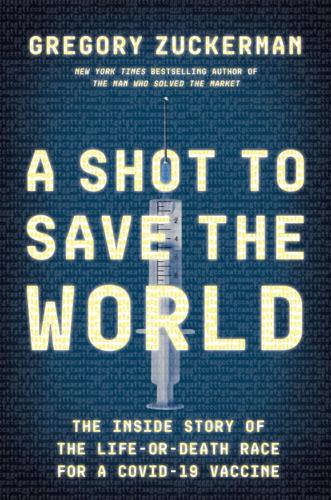
A Shot to Save the World: The Inside Story of the Life-Or-Death Race for a COVID-19 Vaccine
by
Gregory Zuckerman
Published 25 Oct 2021
Bancel read a book about the growth of Uber Technologies. Others who knew the book usually focused on how ruthless and rough-edged the ride-sharing service’s original chief executive, Travis Kalanick, had been, but that wasn’t Bancel’s concern. Instead, he was struck by how swiftly the company had acted to grab market share before inevitable fierce competition emerged. In meeting after meeting at the office, Bancel kept coming back to the company. “Uber didn’t invent taxis, they didn’t invent ride-sharing,” Bancel said to senior executives. “What did they do?” Bancel scanned the room, as if quizzing his team, before providing his own answer.

Thank You for Being Late: An Optimist's Guide to Thriving in the Age of Accelerations
by
Thomas L. Friedman
Published 22 Nov 2016
If empathy comes about through human interaction, this system creates so many more opportunities for that.” The day I interviewed Gorbis, Bettina Warburg, a researcher at the Institute for the Future, told me this story from her recent commute in the San Francisco area: “I was riding in a Lyft the other morning—where you ride-share with others headed in the same direction. My driver chatted with me and mentioned his last [passenger] was ‘voted out of the car,’ because he was expressing extreme homophobic rhetoric. He said, ‘You won’t get a ride in San Francisco with those values—you are in the wrong city.’ We were a black, a Hispanic, and a woman in the car talking about how intolerance does not jibe with an economy built on platforms that value participation.”
…
Today, however, scientific advances are bringing seismic shifts to the ways in which we use our roads; legislatures and municipalities are scrambling to keep up, tech companies are chafing under outdated and sometimes nonsensical rules, and the public is not sure what to think. Smartphone technology gave rise to Uber, but before the world figures out how to regulate ride-sharing, self-driving cars will have made those regulations obsolete.” This is a real problem. When fast gets really fast, being slower to adapt makes you really slow—and disoriented. It is as if we were all on one of those airport moving sidewalks that was going around five miles an hour and suddenly it sped up to twenty-five miles an hour—even as everything else around it stayed roughly the same.
…
planetary boundaries PlayStation 3 Pleistocene epoch pluralism Pluralism Project politics: bipartisanship in; compromise in; disruption in; dogmatism in; money in; polarization in; trust and; see also geopolitics politics, innovation in; adaptability and; diversity and; entrepreneurial mindset in; federal-local balance in; Mother Nature as mentor for; need for organization in; ownership in; “races to the top” in; resilience in; specific reforms in pollution Pol Pot polycyclic aromatic hydrocarbons (PAHs) Popular Science population growth; climate change and; political instability and; poverty and; in weak states Population Institute poverty; advances in connectivity and; chickens and; global flows and; population growth and power of flows power of machines power of many; Mother Nature and; supernova and; see also population growth power of one; ethics and; supernova and Prabhu, Krish prairie, as complex ecosystem Present at the Creation (Acheson) Preston-Werner, Tom Prickett, Glenn privacy, big data and Private Photo Vault Production and Operations Management Society Conference (2014) productivity, supernova and Profil Progressive Policy Institute progressivism; economic growth and Prohibition Project Dreamcatcher Project Syndicate public spaces Putin, Vladimir Putnam, Robert Quad Qualcomm; maintenance workers at Qualcomm pdQ 1900 Quednau, Rachel Queen Rania Teacher Academy Quiz Bowl (TV show) QuoteInvestigator.com (QI) racism rain forests Rain Room ransomware Rattray, Ben ReadWrite.com Reagan, Ronald Real Time Talent Reflections on the Revolution in France (Burke) regulation, technological change and Regulatory Improvement Commission (proposed) Reilly Tar & Chemical Corporation Rejoiner.com relationships, human, connectivity and Republican Party, Republicans: climate change denial by; dogmatism of; implosion of; liberal; polycultural heritage of resilience; in Mother Nature; ownership and; political innovation and retailing: big data and; supernova and Reuters ride-sharing Rifai, Salim al- Ringwald, Alexis Rise and Fall of American Growth, The (Gordon) Rise of the West, The (McNeill) “Rising Menace from Disintegrating Yemen, The” (Henderson) Roberts, Keith robotics “Robots Are Coming, The” (Lanchester) Rockström, Johan Rodríguez, Chi Chi rogue states Rosenstein, Wendi Zelkin Royal Ontario Museum Rugby World Cup (1995) Ruh, Bill Russ, Pam Russell, Richard B.
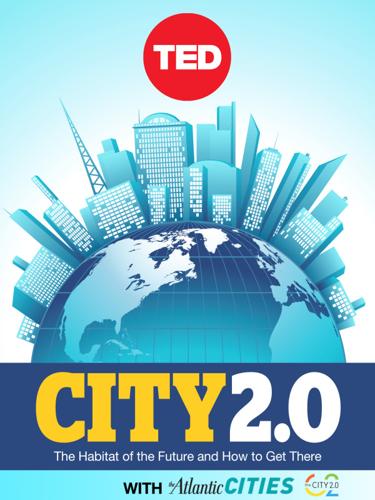
City 2.0: The Habitat of the Future and How to Get There
by
Ted Books
Published 20 Feb 2013
The sharing economy upends all of that. “Cities are going to have to reconsider and rethink how they view public space,” says Josh Moskowitz, the business development manager for car-sharing service Car2go. The reaction of most cities so far as been to warily size up Airbnb hosts as vacation rental owners, or rideshares as taxicabs. Their real identity is still something legally undefined, requiring new policies that recognize, for instance, the difference between someone recouping the cost of owning a car by giving rides in it, and someone making a hefty profit that way. Bureaucracies have to figure this out because the benefits will be so immense, at both citizen and city scales.
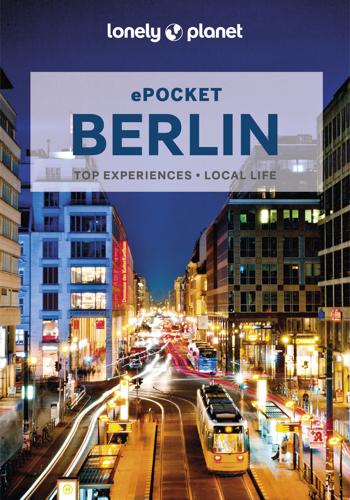
Pocket Berlin
by
Andrea Schulte-Peevers
Published 15 Mar 2023
A Regular Deutsche Bahn trains designated RE7 and RB14 make hourly trips from the city centre to T1/T2 (30 minutes). A The S9 leaves every 20 minutes and takes about 45 minutes from T1/2 to/from the city centre. A You’ll need an ABC transport ticket for all journeys. A Taxis to central Berlin take about an hour and cost around €60. A Ride-share companies like Uber and Free Now serve BER and cost roughly the same as regular taxis. The pickup location is communicated after completing your booking. City Tax In addition to value-added tax (VAT; 7%), an additional 5% ‘city tax’ is added to the net room rates; ie excluding VAT and fees for amenities and services.

Radical Markets: Uprooting Capitalism and Democracy for a Just Society
by
Eric Posner
and
E. Weyl
Published 14 May 2018
Governments around the world use auctions based on Vickrey’s ideas to sell licenses to use radio spectrum. Facebook, Google, and Bing use a system derived from Vickrey’s auction to allocate advertising space on their web pages. Vickrey’s insights about urban planning and congestion pricing are slowly changing the face of cities, and they play an important role in the pricing policies of ride-hailing apps like Uber and Lyft.2 However, none of these applications reflects the ambition that sparked Vickrey’s work. When Vickrey won the Nobel Prize, he reportedly hoped to use the award as a “bully pulpit” to bring George’s transformative ideas and the radical potential of mechanism design to a broader audience.3 Yet Vickrey died of a heart attack three days after learning of his prize.
…
You probably find the idea of Facebook prying into the details of your friends’ relationships, and paying you to help it, creepy. Yet this business practice, at one remove, is already ubiquitous. Why does Google enable us to plan our trips on Google maps? It learns traffic patterns, which it can then package into services it sells to ride-sharing and public transit platforms. Why does Facebook provide us a “free” space to build our social lives? Because we reveal personal information, which enables Facebook to match us with products we might be willing to buy. Why do Instagram and YouTube offer such useful ways to share media? The images and video they host are the inputs to “machine learning” (ML) systems that power “artificial intelligence” (AI) services that they sell to customers—from face recognition to automated video editing.
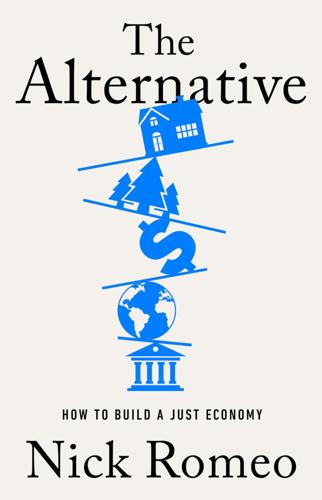
The Alternative: How to Build a Just Economy
by
Nick Romeo
Published 15 Jan 2024
High initial capital costs are one reason this occurs: railroad tracks that run through mountains, subway tunnels underneath a city, sewer lines, and safe power transmission cables all require high initial investment. Once these infrastructure systems are in place, it’s often costly, wasteful, or impossible for competitors to duplicate them. Natural monopolies also occur because of network effects: certain services become more useful as more people use them. Social networks and ride-hailing services are famous modern-day examples, but railroads and telephone services were earlier instances from the nineteenth and early twentieth centuries.13 Organizing natural monopolies as public utilities helps protect against an obvious danger: exploitation by a private company. If one unregulated private company controls the sewage systems in an entire city, it can charge exorbitant rates, and anyone who wants functional drain lines must pay them.
…
Rather than circumventing local laws or democratic processes, such markets could strengthen them. Instead of letting an increasing number of Airbnb rentals gradually drive up prices, neighborhoods might use the platform to cap the number of short-term home rentals per block, with regular surveys of locals’ preferences. In a city with a strong taxi union, the ability to offer ride-sharing might be preferentially allocated to union members in good standing with the local chapter. A state or city interested in helping ex-convicts or veterans find work could spend a designated percentage of its budget for parks and building maintenance hiring these workers, collaborating with job-skills programs and nonprofits to support them.

What Algorithms Want: Imagination in the Age of Computing
by
Ed Finn
Published 10 Mar 2017
This form of arbitrage is a sophisticated triangulation of intimacies, asking participants to trade in or renegotiate certain facets of identity in favor of algorithmically crafted substitutes. People hailing cabs on the streets of New York have long felt judged by race, among other characteristics, and some African Americans specifically use Uber because racial context is muted or removed from the ride-hailing equation.38 Uber becomes a new filter in the system of social context, identity politics, regulatory regimes, and antidiscrimination laws, inflecting these various ideological conflicts through the lens of its interface. As one blogger in Washington, DC, noted, “The Uber experience is just so much easier for African-Americans.
…
Natural-Born Cyborgs: Minds, Technologies, and the Future of Human Intelligence. Oxford: Oxford University Press, 2003. “Company Info | Facebook Newsroom.” Facebook. Accessed February 19, 2016. http://newsroom.fb.com/company-info. “The Comprehensive List of Uber Incidents, Assaults and Accusations.” Who’s Driving You? Accessed June 10, 2015. http://www.whosdrivingyou.org/rideshare-incidents.html. “Controlled Supply.” Bitcoin Wiki, July 20, 2015. https://en.bitcoin.it/wiki/Controlled_supply. Cooper, Matt, Panagiotis G. Ipeirotis, and Siddharth Suri. “The Computer Is the New Sewing Machine: Benefits and Perils of Crowdsourcing.” Presented at the WWW 2011, Hyderabad, India, March 28, 2011. http://www.ipeirotis.com/wp-content/uploads/2012/01/p325.pdf.

Code Dependent: Living in the Shadow of AI
by
Madhumita Murgia
Published 20 Mar 2024
Alexandru’s way of fighting back was more traditional than Armin’s: he challenged Uber in court, demanding access to his personal data and transparency about pay-calculation algorithms. He wanted to understand clearly how the algorithm had failed in his case, and what had been done to prevent this in future. He was part of a group of five claimants represented by the union, suing Uber and another ride-hailing app, Ola Cabs, for access to their personal data – especially when used as a basis for suspensions and wage penalties. The ruling, by the court in Amsterdam where Uber’s European headquarters are based, broke new ground on the rights of workers subject to algorithmic management. In the case against Ola Cabs, the Amsterdam court found that the app had used an entirely automated system to make deductions from one driver’s earnings, which contravene data protection laws that give people a right to human review of algorithms.6 Separately, it asked Uber to provide the defendants in the case with the personal data it held on them, specifically the information used to block the drivers from the app.
…
It’s how companies like Uber, he said, ensure they don’t have to face tens of thousands of drivers joining together in protest outside their offices. Alexandru hadn’t started out cynical. After working as a night courier for a delivery company, where if he ever took a day off in his six-day week, the threat of losing his route hung over him, he quit that job to begin working as an Uber driver. The ridesharing company’s promise that he could reclaim flexibility and control over his working hours was alluring. And at the start, he found it liberating. Over the nearly 7,000 trips he’s done for Uber, he has made a decent living and kept up a five-star rating, an achievement he believes was down to his years as a retail salesman in Bucharest.

Enshittification: Why Everything Suddenly Got Worse and What to Do About It
by
Cory Doctorow
Published 6 Oct 2025
Having spent $31 billion of its early investors’ money (mostly drawn from the Saudi royal family, who funneled the funds through the Japanese entrepreneur Masayoshi Son’s venture capital firm SoftBank) subsidizing taxi rides, the company now dominates urban transport. The tens of billions of dollars that Uber blew on subsidies (losing 41 cents on every dollar it brought in for twelve years) convinced many cities that public transit was an irrelevant historical curiosity and that cheap ride hailing would be here forever, prompting a lost decade of disinvestment in transit. Meanwhile, rival taxi companies shuttered, unable to compete with Uber thanks to the company’s labor misclassification, in which Uber pretended its employees were independent contractors and got away with it because Uber did it “with an app.”
…
The goal of this algorithm is to lower the wage of Uber drivers. It works spookily well. The legal scholar Veena Dubal coined the term algorithmic wage discrimination to describe Uber’s labor-pricing tactic. Dubal came to understand algorithmic wage discrimination through her ethnographic work with rideshare drivers. She reports that drivers divide themselves into two groups: ants (who take every job the app offers) and pickers (who are selective, cherry-picking the jobs with the biggest upside). When Uber’s algorithm offers a job to all the drivers in your neighborhood, it calculates a different wage for each driver based on that driver’s recent behavior.
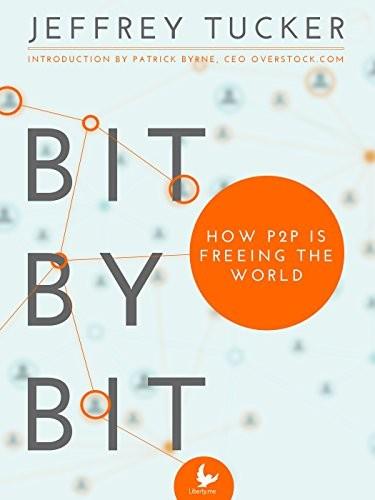
Bit by Bit: How P2P Is Freeing the World
by
Jeffrey Tucker
Published 7 Jan 2015
They make it easy for people who are too drunk to drive to click a button on their smartphones and get a ride home safely. Following two years in which DUI arrests increased 10 percent each year, they have fallen by 14 percent this year. The LA Weekly speculates that this drop is because of these ride-sharing services, which are used often late at night in locations with bars and clubs. All my conversations with Uber drivers seem to confirm this hunch. The taxi monopolies might have provided such efficient services, but without competition, the motivation for progress evaporates. Similarly, we might expect the hotel industry, which is forced to pay high taxes and to comply with vast regulations, to grumble about room-sharing services such as Airbnb, which bear no 11 such costs.

Pocket Stockholm Travel Guide
by
Lonely Planet
Bikes can be borrowed for three-hour stretches and returned at any City Bikes stand. Purchase a bike card online or from the tourist office. Taxi ATaxis are readily available but fees are unregulated – check for a meter or arrange the fare first. AUse one of the established, reputable firms, such as Taxi Stockholm or Sverige Taxi. AThe ridesharing company Uber (www.uber.com) also covers Stockholm. Boat ADjurgårdsfärjan city ferry services connect Gröna Lund Tivoli on Djurgården with Nybroplan (summer only) and Slussen (year-round) as frequently as every 10 minutes in summer; SL transport passes and tickets apply. Tram AThe historic 7 tram runs between Norrmalmstorg and Skansen, passing most attractions on Djurgården.

Vancouver Like a Local
by
Jacqueline Salomé
To pay, buy a Compass Card from any Translink station and pre-load the card with money. You can also pay by contactless or your phone. Remember to tap the same card when exiting. www.compasscard.ca By car or taxi Between walking, cycling, and public transport, there’s little need to travel by car in town. For longer trips, rideshare apps like Uber and Lyft are available. Cabs are less common but, if that’s more your style, Yellow Cab is a good option. If you do drive, be aware that parking spots can be scarce, and roads can get congested during rush hour. Download these We recommend you download these apps to help you get about the city.

The Mini Rough Guide to Budapest (Travel Guide eBook)
by
Rough Guides
Published 1 Oct 2023
Avoid the touts looking for custom. The reputable companies are available at the terminal (Fõ taxi, www.fotaxi.hu; Tele 5, www.tele5taxi.hu; 6x6 Taxi, www.6x6taxi.hu). Always clarify the rate before setting out. For example, a ride from the airport to the Castle district should cost approximately €22. A final option is to use a rideshare app; Uber is banned in Budapest but similar companies such as Bolt work in much the same way; a trip from the airport to the city centre with Bolt will cost around HUG 7,000 and take about half an hour. B Budapest Card The Budapest Card (Budapest Kártya; www.budapest-card.com) allows the holder 24, 48, 72, 96 or 120 hours of travel and sightseeing.
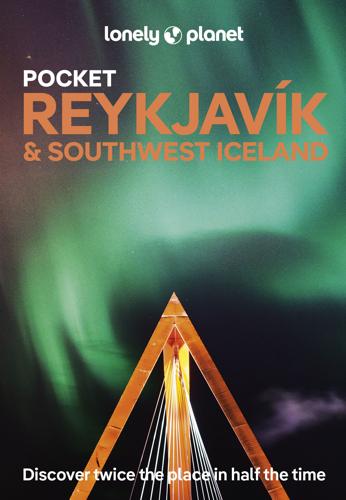
Lonely Planet Pocket Reykjavík & Southwest Iceland
by
Lonely Planet
Parking Street parking in the city centre is limited and costs 600kr per hour in the Red/Pink zone 1 and 220kr per hour in the Blue, Green and Orange zones (zones 2, 3 and 4, respectively). The hours of operation vary (check reykjavik.is). Pay with coins, card (with PIN only) or Easypark and Parka apps. Parking outside the city centre is free. Vitatorg Car Park is a relatively central, covered lot. Taxis & Rideshares Uber and Lyft don't operate here. Book taxis online or via the Hreyfill app. Taxis are metered and can be pricey. Tipping is not expected. There are usually taxis outside bus stations, airports and bars on weekend nights. Iceland has a vibrant carpool scene. People submit routes they’re driving on samferda.net, and passengers can request rides and offer to split costs.
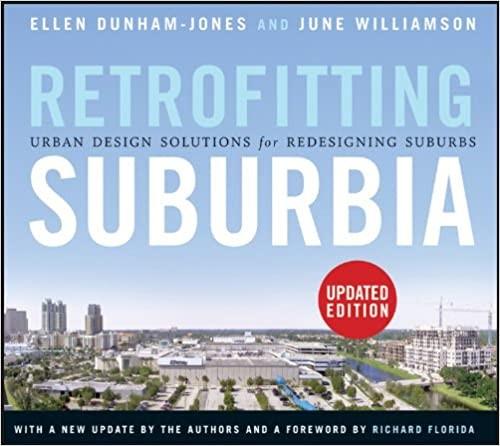
Retrofitting Suburbia, Updated Edition: Urban Design Solutions for Redesigning Suburbs
by
Ellen Dunham-Jones
and
June Williamson
Published 23 Mar 2011
The keys to making internal trip capture work are making sure the new uses substitute for what would have otherwise been external trips—and making sure the new trips are pedestrian friendly. This is particularly true in suburban employment centers. Studies have shown that giving employees the opportunity to replace after-work shopping trips with pedestrianbased midday trips led to a doubling of transit use and increases in ride-sharing trips.34 Also, by providing office workers with places to shop or socialize after work, the retail helps to stretch and thin out the evening rush hour. At the same time, the residential infill in edge cities reduces commuting lengths for those residents employed nearby and reverses the commute direction for those employed outside the edge city.
…
More salient findings include the following: having convenience-oriented retail located near work sites doubled the use of transit from 3.4% to 7.2% (Cambridge Systematics, The Effects of Land Use and Travel Demand Management Strategies on Commuting Behavior [Washington, DC: U.S. Department of Transportation, Federal Highway Administration, 1994]); each 10% increase in retail to an employment center resulted in a 3% increase in the mode share of transit and ride-sharing trips (Robert Cervero, “Land Use Mixing and Suburban Mobility,” Transportation Quarterly 42 (1988): 429–446); residents in communities with a balance of employment and residential uses commute, on average, one-third less distance than do workers living in areas with more housing than employment (Reid Ewing, “Characteristics, Causes and Effects of Sprawl: A Literature Review,” in Environmental and Urban Issues [Miami: Florida Atlantic University/Florida International University, 1994], 7). 35 Gloria Ohland’s 2002 case study of Addison Circle describes the project in some detail and clarifies Robert Shaw’s involvement first with Columbus Realty Trust, then Post Properties, and then Amicus Partners.
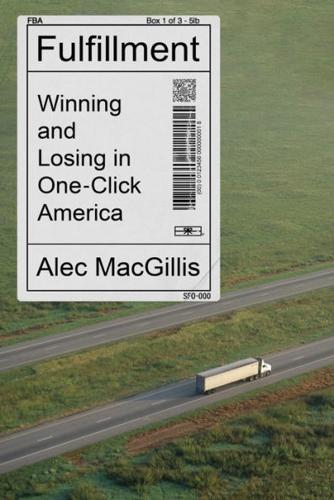
Fulfillment: Winning and Losing in One-Click America
by
Alec MacGillis
Published 16 Mar 2021
A big white tent, wedding-style, went up in the green space across from one of the sites of the planned new towers, which was in turn across the street from a new apartment building with a Whole Foods and a barre exercise studio. To provide a veneer of hipness, fences and temporary walls along the sidewalks had been festooned with brightly painted ride-share bicycles and random words and phrases: BRIGHT and WHAT IF and LISTEN TO THE QUIET VOICE. The open house was to last five hours, but half an hour in, the line was snaking all the way down the block, past the Lenox Club apartments, around the corner to the DoubleTree Hotel. The line was remarkably diverse—all colors and outfitted in all styles: headphones, headscarf, bow tie, baseball cap.
…
They could not capture the dense thicket of cranes rising across downtown—by 2019, there were fifty-eight deployed in Seattle, more than in any other city in the country. Or the ostentation of new money in a city once stereotyped by flannel and grunge: the Teslas prowling Capitol Hill and Belltown; the Black Suburbans circling for ride-share fares; the Gucci store selling slippers for $650; the rooftop bar with a “millionaires menu” that included a $200 martini; the forty-one-story Nexus tower, a stack of twisting glass cubes topped with penthouses that spread across 3,000 square feet and cost up to $5 million; the Insignia towers, which offered a “sky retreat”—indoor lap pool, sauna, and screening room.

Lonely Planet's Best of USA
by
Lonely Planet
Try for a bed in Capitol Hill and Southwest DC, with its range of hotels, suites and hostels; or Downtown and the Penn Quarter, which bustles with trendy bars, restaurants and theaters. TAXI Taxis are relatively easy to find (less so at night), but costly. DC Yellow Cab (%202-544-1212) is reliable. The rideshare company Uber is used more in the District. TRAIN Union Station (www.unionstationdc.com; 50 Massachusetts Ave NE) is the city’s rail hub. There’s a handy Metro station here for transport onward in the city. Amtrak (%800-872-7245; www.amtrak.com) Set inside the magnificent beaux-arts Union Station.
…
The standard fare per train is $3 (except from O’Hare, where it costs $5) and includes two transfers; per bus it is $2.25. Unlimited ride passes (one-/three-day pass $10/20) are also available. Get them at rail stations and drug stores. TAXI Flash Cab (%773-561-4444; www.flashcab.com) Yellow Cab (%312-829-4222; www.yellowcabchicago.com) Rideshare company Uber is also popular in Chicago. TRAIN Chicago’s classic Union Station (www.chicagounionstation.com; 225 S Canal St; mBlue Line to Clinton) is the hub for Amtrak (%800-872-7245; www.amtrak.com) national and regional services. MIAMI PIDJOE / GETTY IMAGES © Miami Miami is many things, but to most visitors, it is mainly glamour, condensed into urban form.

Lonely Planet Iceland
by
Lonely Planet
Cold, rain and wind can make for uncomfortable conditions and contingency planning is key. Bike rentals are available in Reykjavík and a handful of other towns. Best ways to get around Iceland TIP Download the Strætó app to purchase individual bus tickets. Activate your ticket before you ride. RIDESHARING & HITCHHIKING Iceland has about as many cars as it has people. And while it doesn’t allow ridesharing services like Lyft and Uber, it does have a vibrant carpool scene. People submit routes they’re driving on samferda.net, and passengers can request rides and offer to split costs. Because public transport is limited outside of Reykjavík, carpooling is a popular option for getting between cities.
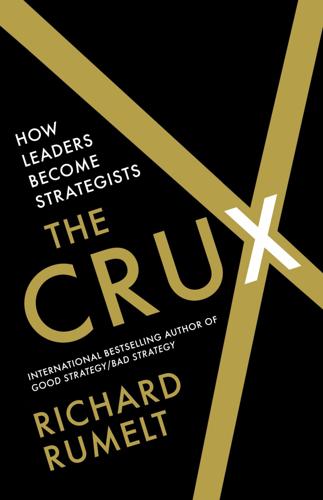
The Crux
by
Richard Rumelt
Published 27 Apr 2022
And how easy is it for a buyer or seller to switch to a different platform? With Uber, search is fast and easy, though one can get caught with fares three times normal if there is a rush. There is some concern about the lack of stickiness on both sides of Uber’s market. A large portion of its drivers also drive for competitors like Lyft, and its ride-hailing phone app is fairly easy to duplicate. Some of those concerns also apply to Airbnb. The craft platform space sees buyers and sellers willing to move to alternative platforms, but it is somewhat costly for a seller to do so. This is chiefly due to the cumbersome structure of code underlying websites and the slightly sticky nature of a Web link to a shop.
…
This not only encouraged property owners to list, but also made their listing appear comparable to good hotels rather than the bare-bones Craigslist format. Over time, as renters began to use the platform, Airbnb no longer had to pay for photography—property owners hired their own to keep up with the look of other listings. Uber is a platform connecting drivers and their cars with people wanting a ride. At Uber its ride-sharing prices are low enough to pull business away from taxicabs and black cars. There is controversy over what it pays drivers. It is obviously easy enough to get people to drive for Uber, though the turnover is reported to be on the order of 60 percent per year. The company spends a great deal on marketing, on paying fines, and on making political contributions around the world.

The People vs Tech: How the Internet Is Killing Democracy (And How We Save It)
by
Jamie Bartlett
Published 4 Apr 2018
* Some of them are no doubt thinking of Karl Marx’s vision of a communist paradise, where people could ‘hunt in the morning, fish in the afternoon, rear cattle in the evening, criticise after dinner’. * The following operate as either monopolies or oligopolies in their respective fields: Google (search engine, video streaming, online advertising); Facebook (social network, messaging, online advertising); Uber (ride-sharing); Airbnb (home-sharing); Amazon (online retail – especially books, cloud computing); Twitter (micro-blogging); Instagram (photo-sharing); Spotify (music streaming). * People who talk breezily of ‘breaking-up’ Google don’t appreciate how much worse search engines would become without it

The View From Flyover Country: Dispatches From the Forgotten America
by
Sarah Kendzior
Published 24 Apr 2015
Struggling U.S. cities of the Rust Belt and heartland lack the investment of coastal contemporaries, but have in turn been spared the rapid displacement of hipster economics. Buffered by their eternal uncoolness, these slow-changing cities have a chance to make better choices—choices that value the lives of people over the aesthetics of place. In an April blog post, Umar Lee, a St. Louis writer and full-time taxi driver, bemoaned the economic model of ride-share services, which are trying to establish themselves in the city. Noting that they hurt not only taxi drivers but poor residents who have neither cars nor public transport and thus depend on taxis willing to serve dangerous neighborhoods, he dismisses Uber and Lyft as hipster elitists masquerading as innovators: “I’ve heard several young hipsters tell me they’re socially-liberal and economic-conservative, a popular trend in American politics,” he writes.
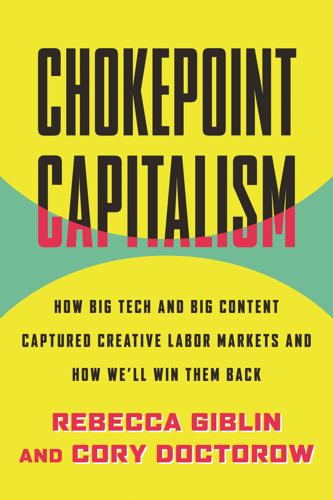
Chokepoint Capitalism
by
Rebecca Giblin
and
Cory Doctorow
Published 26 Sep 2022
For example, the recently formed App Drivers and Couriers Union was entitled under the GDPR to help thirteen drivers sue Uber and Ola, demanding that they provide drivers with greater access to data held about them. One purpose of the action was to improve their ability to collectively bargain against the rideshare giants, causing the companies to complain that it was an abuse of the data protection rights. However, the court ruled that that purpose did not disqualify the action and ordered the companies to provide drivers with anonymized ratings by passengers and some other data used to profile and surveil them.4 The US rules prohibit smaller companies from banding together to collectively negotiate rights against bigger ones.
…
You were fighting for endangered owls and I was fighting for the ozone layer but we were also fighting together and having each other’s backs.21 Today, chokepoint capitalism afflicts everyone from chicken farmers to professional wrestlers (a kind of high-risk creative labor that is dominated by just one employer, a Trumpist billionaire who bought out all his competition, misclassified his employees as contractors, stripped them of health insurance, and left them to beg on GoFundMe for palliative care as they die young from workplace-related injuries).22 It afflicts bank tellers—US retail banking is dominated by four firms; the largest, Wells Fargo, long pressured its tellers to defraud customers to meet unrealistic sales quotas and retaliated against those who refused by firing them and then adding them to a do-not-hire list that prevented them from getting other work.23 When Wells Fargo got caught, it blamed its low-level employees, and summarily fired thousands for fraud, making it almost impossible for them to get new jobs too.24 Chokepoint capitalism hurts nurses and rideshare drivers and delivery riders and adjunct professors at major universities. It afflicts fast food workers and thoracic surgeons, journalists and auto mechanics and countless more professions. And since big companies force other companies in their supply chains to get big too, even if your part of your industry doesn’t look like these labor markets yet, it’s only a matter of time if things keep heading in this direction.
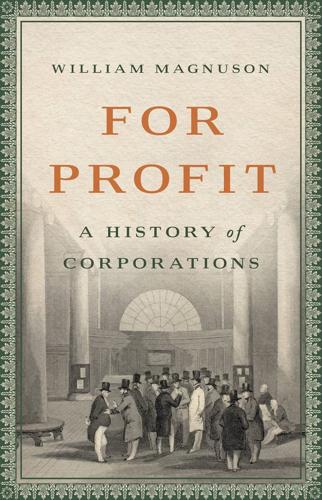
For Profit: A History of Corporations
by
William Magnuson
Published 8 Nov 2022
Most aim to become the dominant platform for whatever industry they happen to be operating in, be it real estate or transportation or media. The value of start-ups lies in their ability to create networks—of friends, coworkers, homeowners, drivers—and networks tend to be self-reinforcing. If all of your friends are using one social media site, you will likely use it too. If all the drivers are on one ride-hailing site, you will likely use it too. Growth begets growth. And growth eventually leads to profits, at least in theory. The Age of the Start-Up began in earnest in the early 2000s, in the wake of the bursting dot-com bubble. The start-up was new and exciting and promised a better, more socially responsible corporation.
…
The great promise of start-ups has always been that technology has an enormous capacity to improve human life, and the only thing holding us back is finding someone with the courage, the creativity, and, let’s say it, the hubris to try it out. Hotels cost too much? Let’s create a home-rental site. Taxis are too inconvenient? Let’s create a ride-sharing site. Humans get lonely? Let’s create a social network. Start-ups are here to give the gift of technology to the rest of us. But of course, start-ups are not entirely altruistic. They seek to profit from the revolutions they bequeath to the world. As venture capital firms have found out, successful start-ups can be very, very profitable.
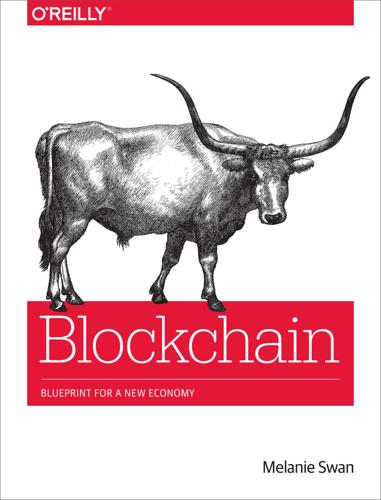
Blockchain: Blueprint for a New Economy
by
Melanie Swan
Published 22 Jan 2014
There is OpenBazaar (a decentralized Craigslist), LaZooz (a decentralized Uber), Twister (a decentralized Twitter), Bitmessage (decentralized SMS), and Storj (decentralized file storage). Table 2-4. Sample list of Dapps Project name and URL Activity Centralized equivalent OpenBazaar https://openbazaar.org/ Buy/sell items in local physical world Craigslist LaZooz http://lazooz.org/ Ridesharing, including Zooz, a proof-of-movement coin Uber Twister http://twister.net.co/ Social networking, peer-to-peer microblogging66 Twitter/Facebook Gems http://getgems.org/ Social networking, token-based social messaging Twitter/SMS Bitmessage https://bitmessage.org Secure messaging (individual or broadcast) SMS services Storj http://storj.io/ File storage Dropbox Swarm https://www.swarm.co/ Koinify https://koinify.com/ bitFlyer http://fundflyer.bitflyer.jp/ Cryptocurrency crowdfunding platforms Kickstarter, Indiegogo venture capital funding In a collaborative white paper, another group offers a stronger-form definition of a Dapp.67 In their view, the Dapp must have three features.
…
First, there could be a module for buying and selling assets within the local community, an OpenBazaar- or Craigslist-like asset exchange module. Second, there could be a sharing economy module, a decentralized model of Airbnb for dorm rooms, Getaround for transportation including cars and bikes, and LaZooz peer-based ride sharing. Third, there could be a consulting or “advisory services” module for all manner of advice, mentoring, coaching, and tutoring related to classes, departments, majors, and careers. Recent graduates could earn Campuscoin by consulting to job-seeking seniors with specific services like advice and mock interviews; freshmen could provide counsel to high school seniors; and former students in a class could provide advice to current students.
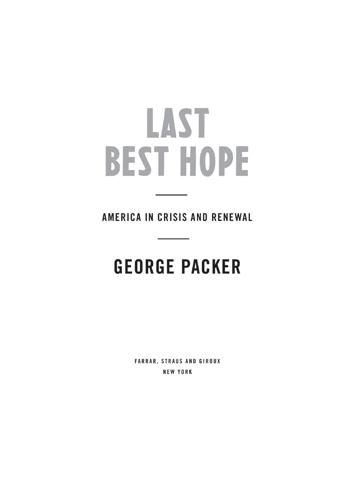
Last Best Hope: America in Crisis and Renewal
by
George Packer
Published 14 Jun 2021
Monopolies degrade communities by destroying Main Street businesses and drawing away wealth from depressed regions to a few thriving megalopolises. In the new gig economy, industry concentration in two or three winning hands forces workers to remain contractors, denying them the barest protections such as health insurance. And yet the whole system depends on our acquiescence. If a ride-share app is quick and easy, if one-click shopping beats driving to the mall, if a too-big-to-fail bank has branches all over the city, it’s hard to see all the negative consequences of monopoly, or want to do much about them. So in 2020 voters in California, who gave Biden 5 million more votes than Trump, also passed a referendum to overturn a new state law that would have allowed drivers for Uber and Lyft the status and rights of employees.
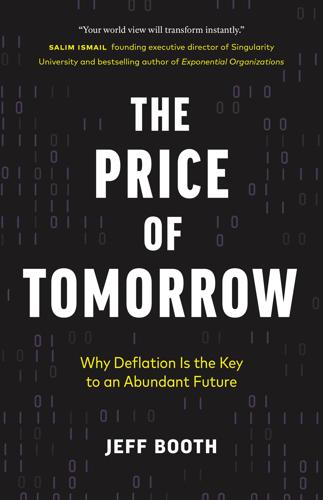
The Price of Tomorrow: Why Deflation Is the Key to an Abundant Future
by
Jeff Booth
Published 14 Jan 2020
Most likely that adjustment will have them selling cars as a service option, similar to software-as-a-service models in technology delivery today. Those aren’t the only second- and third-order effects of self-driving cars. As much as riders have benefitted from great new services, it is difficult to see how the ride-sharing companies, such as Uber or Lyft are going to make money in the future. The same key consideration for how to decrease their costs and increase their profits by removing drivers (automation) is going to make them compete against automotive manufacturers reinventing their models to stay in business.

The Rough Guide to New York City
by
Rough Guides
Published 21 May 2018
If you lose something in a taxi, or you have a problem with a driver, get the licence number from the right-hand side of the dashboard, or the medallion number from the rooftop sign or from the print-out receipt for the fare, and file a complaint at 311 or 1.nyc.gov. Uber and “gypsy cabs” Since 2015 there have been more Uber (uber.com) cars than yellow cabs in New York City. Ride-sharing service Uber connects riders with generally part-time drivers through a mobile app (so you need a smartphone to use it). Its introduction in New York has caused a backlash from yellow cab drivers, with calls for greater regulation, but at the time of writing the service remained popular and is generally safe.
…
Cars working for ride-sharing companies have started to replace the “gypsy cab” (which also looks like a regular car), traditionally divided into two types: licensed livery cabs (identified by a “T” on the number plate), only permitted to pick up passengers on call by telephone, but which often illegally seek passengers on the street; and completely unlicensed, uninsured operators who tout for business wherever tourists arrive. Avoid these drivers like the plague – they will rip you off (and can be unsafe). Their main hunting grounds are outside tourist arrival points like Penn Station and the Port Authority Bus Terminal. The main advantage of licensed livery cabs over ride-sharing services is that you can call them (you don’t need to use an app). Always check the fare in advance, before getting in the car or when booking on the phone. By ferry Manhattan is connected to New Jersey, Staten Island, Queens and Brooklyn by a web of ferry services. These generally serve commuters, but some routes are worth checking out for a relatively cheap opportunity to get onto the water.
…
The cheapest base fare is $2.55 (uberX), followed by $1.75 per mile (there’s usually a minimum payment of $8, making short trips uneconomical). Lyft (lyft.com) and Gett (gett.com) offer similar services and rates (also via apps). None of these services can be hailed on the street – you must reserve them through the apps. Cars working for ride-sharing companies have started to replace the “gypsy cab” (which also looks like a regular car), traditionally divided into two types: licensed livery cabs (identified by a “T” on the number plate), only permitted to pick up passengers on call by telephone, but which often illegally seek passengers on the street; and completely unlicensed, uninsured operators who tout for business wherever tourists arrive.

Age of Context: Mobile, Sensors, Data and the Future of Privacy
by
Robert Scoble
and
Shel Israel
Published 4 Sep 2013
Simultaneously, it is becoming cool to not own a car at all. Ford is not trying to reverse the trend with an expensive marketing campaign, as carmakers would have done in earlier eras. Instead, it is coping with the “democratization of technology,” and following the lead of future customers by investing in Zipcar, an urban ride-sharing service, and TechShop, where urban entrepreneurs can access advanced tech tools to germinate new city-based businesses. A Blind Spot As impressed as we were with the automotive industry’s understanding of contextual technology and its importance to the future of cars, we were disappointed to find that, as of now, none seems to be considering the impact of digital eyewear such as Google Glass.
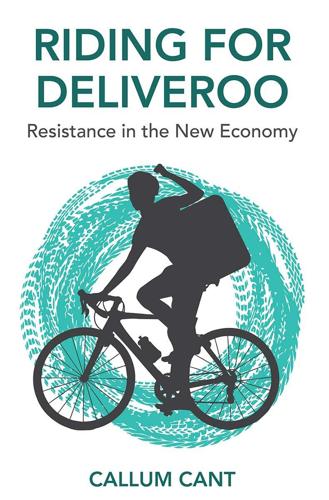
Riding for Deliveroo: Resistance in the New Economy
by
Callum Cant
Published 11 Nov 2019
Brighton and Hove City Council (2010) Housing costs update Quarter 4 2010. www.brighton-hove.gov.uk/sites/brighton-hove.gov.uk/files/2010%20%284%29%20Housing%20Costs%20%28Oct-Dec%29.pdf; Brighton and Hove City Council (2017) Brighton & Hove housing market report Quarter 4 2017. www.brighton-hove.gov.uk/sites/brighton-hove.gov.uk/files/2017%20%284%29%20Housing%20Market%20Report%20%28Oct-Dec%29.pdf. 3. F. Kooti, M. Grbovic, L. M. Aiello, N. Djuric, V. Radosavljevic, and K. Lerman (2017) Analyzing Uber’s ride-sharing economy, in Proceedings of the 26th International Conference, ACM Press. 4. K. Bryan (2019) Deliveroo and Uber Eats takeaway riders rent jobs to ‘illegal immigrants’. The Times. www.thetimes.co.uk/article/deliveroo-and-uber-eats-takeaway-riders-rent-jobs-to-illegal-immigrants-ml36gvp93. 5. M.
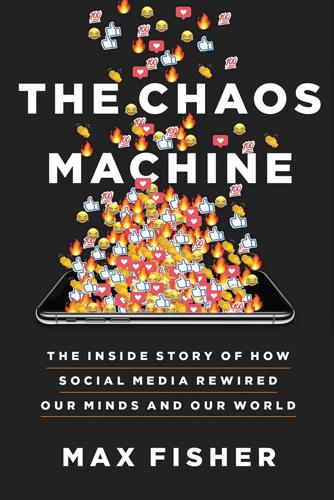
The Chaos Machine: The Inside Story of How Social Media Rewired Our Minds and Our World
by
Max Fisher
Published 5 Sep 2022
One was Amazon, whose founder, Jeff Bezos, wrote in a shareholder letter still circulated in the Valley, “There is a right answer or a wrong answer, a better answer or a worse answer, and math tells us which is which.” Another was Google, whose young founders Doerr personally instructed in the gospel of Grove. Wojcicki sat in. But as the Valley expanded its reach, this culture of optimization at all costs took on second-order effects. Uber optimizing for the quickest rideshare pickups engineered labor protections out of the global taxi market. Airbnb optimizing for short-term rental income made long-term housing scarcer and more expensive. The social networks, by optimizing for how many users it could draw in and how long it could keep them there, may have had the greatest impact of all.
…
Uber and Lyft would not just offer a new way to hail taxis, they would abolish and replace the old one. Airbnb would disrupt short-term housing. All three were PayPal alumni investees. Many others pursued the same violent displacement. Amazon and physical retail, Napster and music. Only a few, like Thiel, seriously suggested doing to global governance what Uber had done to ridesharing. But once the social media platforms stumbled into that role, it must have felt like just a continuation of their rightful place. Of the belief that society is a set of engineering problems waiting to be solved. 3. Convergence TWO YEARS AFTER Trump’s election shocked Americans into questioning the influence of social media over their politics, Renée DiResta and four other experts sat before the TV cameras and wood-paneled podiums of the Senate Select Committee on Intelligence ready to provide answers.
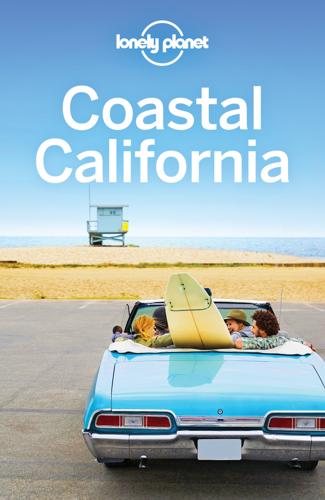
Coastal California Travel Guide
by
Lonely Planet
One paying adult may travel with up to two children aged 5 and under for free on buses with a valid MTS ticket. On Saturdays and Sundays up to two children (age 12 and under) may ride for free with one fare-paying adult (age 18 or older) on all MTS routes. Taxi & Rideshare Taxi fares vary, but plan on about $12 for a 3-mile journey. Established companies include Orange Cab (%619-223-5555; www.orangecabsandiego.net) and Yellow Cab (%619-444-4444; www.driveu.com). Recently app-based ride-share companies such as Uber (www.uber.com) and Lyft (www.lyft.com) have entered the market with lower fares. Trolley Municipal trolleys, not to be confused with Old Town Trolley tourist buses, operate on three main lines in San Diego.
…
Outside is the Digital Mural Project, where, in place of the usual cigarette advertisements, a billboard features slogans like 'Abolish borders!' in English, Arabic and Spanish. BEFORE YOU GO AMake reservations at top San Francisco restaurants – some accept early/late walk-ins, but not all do. AReserve Alcatraz tickets two to four weeks ahead, especially for popular night tours. ADownload SF-invented apps for ride sharing (Lyft, Uber), home sharing (Airbnb), restaurant booking (Yelp) and audio walking tours (Detour) – all widely used here. 2Activities Cycling & Skating Basically Free Bike RentalsCYCLING ( MAP GOOGLE MAP ; %415-741-1196; www.sportsbasement.com/annex; 1196 Columbus Ave; half-/full-day bike rentals adult from $24/32, child $15/20; h9am-7pm Mon-Fri, 8am-7pm Sat & Sun; c; gF, 30, 47, jPowell-Mason, Powell-Hyde) This quality bike-rental shop cleverly gives you the choice of paying for your rental or taking the cost as credit for purchases (valid for 72 hours) at sporting-goods store Sports Basement ( GOOGLE MAP ; %415-437-0100; www.sportsbasement.com; 610 Old Mason St; h9am-9pm Mon-Fri, 8am-8pm Sat & Sun; g30, 43, PresidiGo Shuttle), in the Presidio en route to the Golden Gate Bridge.
…
Visit Anaheim ( GOOGLE MAP ; %855-405-5020; http://visitanaheim.org; 800 W Katella Ave, Anaheim Convention Center) The city's official tourism bureau has information on lodging, dining and transportation, during events at the Convention Center. 8Getting There & Away Disneyland and Anaheim can be reached by car (off the I-5 Fwy) or Amtrak or Metrolink trains at Anaheim's ARTIC (Anaheim Regional Transportation Intermodal Center; GOOGLE MAP ; 2150 E Katella Ave, Anaheim) transit center. From here it's a short taxi, ride share or Anaheim Resort Transportation shuttle to Disneyland proper. The closest airport is Orange County's John Wayne Airport (SNA; GOOGLE MAP ; www.ocair.com; 18601 Airport Way, Santa Ana). Air Most international travelers arrive at Los Angeles International Airport (LAX), but for easy-in, easy-out domestic travel, the manageable John Wayne Airport in Santa Ana is served by all major US airlines and Canada’s WestJet.

The Wires of War: Technology and the Global Struggle for Power
by
Jacob Helberg
Published 11 Oct 2021
By the time the Berlin Wall fell, the East German Stasi had amassed so many files on its citizens—documents, photos, recordings—that its archives would have extended nearly seventy miles.24 But even the Stasi couldn’t have dreamed of the surveillance power of the Chinese state. Thanks to a proliferation of “online to offline” services—such as ride-hailing, bike-sharing, and food delivery—and the widespread adoption of mobile payment technology, Chinese companies have access to a trove of data that is both mind-bogglingly vast and incredibly detailed. In China, beggars display QR codes for Alipay and WeChat donations. One Chinese bike-share company alone sends 20 terabytes of data to the cloud each day.25 Whereas U.S. tech companies possess a great deal of data on our online habits—such as our searches and “likes”—China’s tech giants know what you like to buy at the grocery store and where you get your hair done.
…
Nevertheless, a small coterie of protesters begins speaking out, online and in the streets, prompting the government to ratchet up the pressure. Because everyone in China is tracked by their mobile phones and monitored by linked security cameras, intelligence agents begin a campaign of targeted harassment. Autonomous ride-sharing vehicles are automatically locked and rerouted to deliver suspected dissidents to waiting police patrols. Individuals chattering about a planned demonstration outside the embassy are sent overnight to underground “reeducation facilities”—unmarked black sites located deep in China’s vast interior.
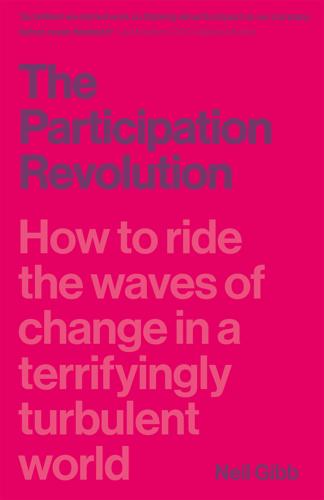
The Participation Revolution: How to Ride the Waves of Change in a Terrifyingly Turbulent World
by
Neil Gibb
Published 15 Feb 2018
The meet-up emerged out of an online discussion thread I joined about the festival. The experiment I am conducting is to see if I can do the whole trip using participatory tools on my iPhone. I found my accommodation using Airbnb. I booked my flight using a budget air travel app. I used Uber to get to the airport. I arranged a ride-share at the other end on the groups’ Facebook event page. I used Apple maps and WhatsApp to arrange a place to meet. In the half hour since we arrived at the café, I have posted three moody photos of palm trees to Instagram to prove to my friends what a groovy time I am having, responded to an important email from a client, and checked the weather.

There Is Nothing for You Here: Finding Opportunity in the Twenty-First Century
by
Fiona Hill
Published 4 Oct 2021
Service jobs that depended directly on consumer spending by America’s affluent were dramatically cut by wealthy households forgoing cleaning, child care, eating out, and sports and entertainment during locally imposed lockdowns—or simply because people were concerned about contracting the virus and decided to self-isolate. Ride-share services like Uber and Lyft, which had offered part-time and supplemental opportunities for many workers on the bottom rung of the employment ladder, who were juggling several jobs at once to earn a decent income, were also hard-hit. Although the pandemic expanded the idea of “essential workers” to frontline employees in online shopping warehouses and delivery services, grocery stores, and food production—many of whom retained their jobs and had their pay increased—COVID-19 had a huge negative impact on their already precarious health.
…
Unemployment was headed down during his tenure, and poverty rates were also trending toward all-time lows in 2019. Until the COVID-19 pandemic, many could cobble together a decent portfolio of part-time or contract work, or combine a full-time position with something additional and flexible in the service sector, like a ride-share job. But the portfolios of workers balancing part-time and contract work were precarious. Few new jobs came with benefits or the kind of decent wage the steelworkers were looking for when they stood around the president’s desk in the Roosevelt Room in March 2018. The COVID Accelerant In the United States and globally, COVID-19 was an accelerant to existing fuel.
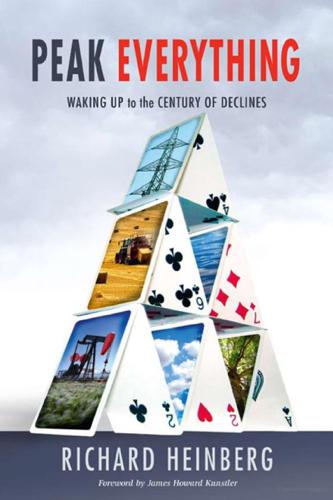
Peak Everything: Waking Up to the Century of Declines
by
Richard Heinberg
and
James Howard (frw) Kunstler
Published 1 Sep 2007
The related idea that life can be better without fossil fuels is a core tenet of the Transition Town movement, which started in England in 2005 (I quote its founder, Rob Hopkins, on pages 135-136). Transition Initiatives are grassroots efforts to wean communities off dependence on oil and other carbon fuels by promoting local resilience (through development of things like local food systems and ride-share programs). Transitioners realize that it is probably futile to wait for elected officials to take the lead in planning for the great energy shift, given that very few politicians understand our predicament — and given also that, even if they did, the measures they would likely propose would be deeply unpopular unless the populace were first educated about constraints on fossil-fueled growth.
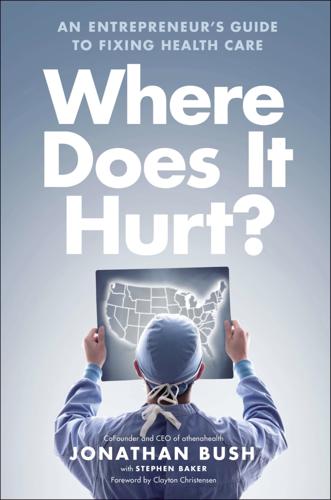
Where Does It Hurt?: An Entrepreneur's Guide to Fixing Health Care
by
Jonathan Bush
and
Stephen Baker
Published 14 May 2014
What would these medallions be worth if anyone with a driver’s license and a car could operate as a taxi? This is starting to happen as citizen-cab services like Uber enter the market. But the standard cabs have paid a lot of money to have the market to themselves. So it was little surprise in 2013 that a new ride-sharing service, Sidecar, got a rough reception in New York. Two of the drivers were detained, and one had her car impounded. The cabdrivers, in a sense, are a protected guild, free of the competition that might benefit the public. Health care is chockablock with artificial barriers like this to protect incumbents from competitors.
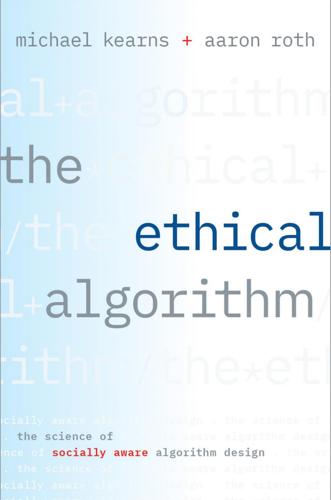
The Ethical Algorithm: The Science of Socially Aware Algorithm Design
by
Michael Kearns
and
Aaron Roth
Published 3 Oct 2019
Such phenomena cannot occur under the Maxwell solution. 4 Lost in the Garden Led Astray by Data Past Performance is no Guarantee of Future Returns Imagine that you wake up one day and check your email. Waiting for you in your inbox is a message with the subject line “Hot Stock Tip!” Inside, you find a prediction: shares of Lyft, the recently listed ride-sharing company (NASDAQ:LYFT), are going to end the day up. You should buy some now! Of course, you don’t take this advice—how did it get past your spam filter? But the prediction is specific enough that you remember it, and you check Google Finance after the close of the market. Sure enough, LYFT shares ended the day up.
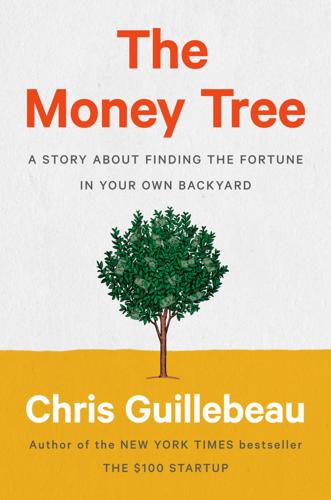
The Money Tree: A Story About Finding the Fortune in Your Own Backyard
by
Chris Guillebeau
Published 6 Apr 2020
So I figured I needed to make some money that I wasn’t already budgeting elsewhere. And the more I thought about it, the more I realized I should probably be doing that anyway. These days, it’s not smart to rely on a single company for your entire income.” “That’s exactly what I’ve been thinking about,” said Jake. “I thought about signing up for one of those ride-sharing programs, but when I did the math I realized I wouldn’t make much more than minimum wage. They promise that you’ll be an ‘owner,’ but they’re the ones collecting most of the money while all the drivers are out hustling.” “Right,” said Preena. “So that’s what brought me to the Third Way, the group I’ve been going to.
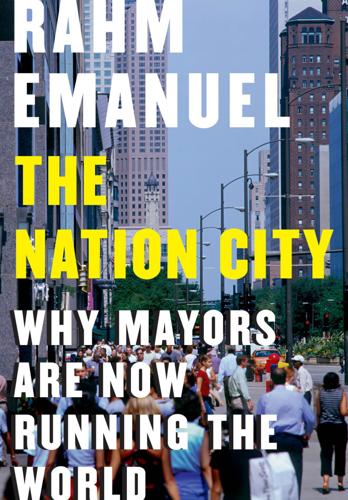
The Nation City: Why Mayors Are Now Running the World
by
Rahm Emanuel
Published 25 Feb 2020
We also found some money in a federal program called Congestion Mitigation and Air Quality Improvement. We had a start, but we needed more. So I put on my dancing shoes and went down to Springfield. I cajoled our state to change TIF regulations so we could apply TIFs to transportation. We also levied a first-ever fee on the ride-sharing companies Uber and Lyft, which raised $16 million in its first year (2017). We used that money to raise $180 million in bonds to be used for capital improvement. We did this—the biggest modernization of our transit system in the city’s history—without raising our tax rates or fare increases, and without a new federal transportation bill.
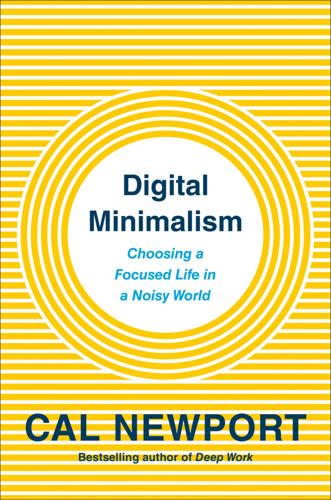
Digital Minimalism: Choosing a Focused Life in a Noisy World
by
Cal Newport
Published 5 Feb 2019
Some people are tied to their smartphones for specific reasons that cannot be ignored. If you’re a health care worker who makes home visits, for example, maintaining access to Google Maps is key. Similarly, around the time I was writing this chapter, I received a note from a reader from Curitiba, Brazil, noting that the ability to use ride-sharing services like Uber and 99 is crucial to getting around in a city where cabs and walking are often not available options. For other people, the opposite issue might hold: their smartphones aren’t enough of a problem for them to receive much benefit from removing them from their life. I count myself in this category.
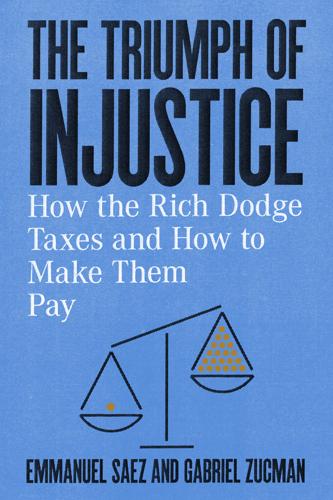
The Triumph of Injustice: How the Rich Dodge Taxes and How to Make Them Pay
by
Emmanuel Saez
and
Gabriel Zucman
Published 14 Oct 2019
As for the remaining 20%—mostly shares in private businesses—valuation raises fewer problems than you might think. Although not publicly listed, shares in large private businesses are regularly bought and sold. Even before Lyft and Uber went public in 2019, for instance, it was possible for rich people to invest in the ride-sharing service companies. Private companies regularly issue new stock to banks, venture capitalists, wealthy individuals, and other “accredited investors” with deep enough pockets. These transactions de facto put a value on private firms. Admittedly, in some cases no transactions can take place for years.

The Creative Curve: How to Develop the Right Idea, at the Right Time
by
Allen Gannett
Published 11 Jun 2018
For this reason, gatekeepers are a notorious challenge for creative people. Csikszentmihalyi explained to me that often an industry gatekeeper doesn’t want to “creatively christen” anyone new. In the world of start-ups, for example, venture capitalists may decide that there are too many Uber or Lyft clones already, and decline to fund a new ride-sharing service. Even if a fledgling company has the potential to become a strong competitor of Uber, it may not be possible to raise the necessary capital to compete. If you cannot attract the attention of the gatekeepers, you might very well be “original” and “technically skilled,” but the truth of the matter is you will not be considered creative.

Future Sex
by
Emily Witt
Published 10 Oct 2016
Belladonna had moved on, but there was still Dana Vespoli, another director with Evil Angel, who has described the porn she directs as “psychosexual.” Vespoli was born in 1972, and is known for her authenticity (“A tampon string hangs from her vagina as James fucks her asshole!” read the description of Dana Vespoli’s Real Sex Diary). Her movies have included a send-up about ride-sharing called Screwber X. There was Joanna Angel, the self-described “punk rock porn princess.” There was Jacky St. James, the director under contract with New Sensations who was inspired to make a BDSM video called The Submission of Emma Marx after finding the bestselling erotic novel Fifty Shades of Grey, in her words, “so incredibly weak and pathetic.”
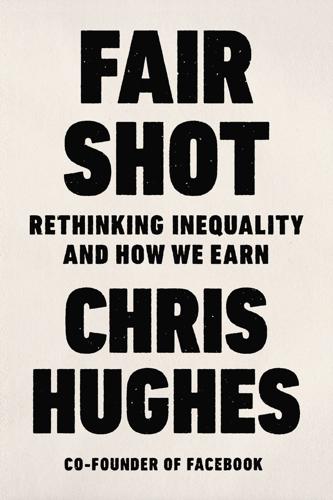
Fair Shot: Rethinking Inequality and How We Earn
by
Chris Hughes
Published 20 Feb 2018
“US Private Equity Funds Return 0.2%; US Venture Capital Funds Return 3.3% In 1Q 2016.” Press Releases, September 2016. https://www.cambridgeassociates.com/press-release/us-private-equity-funds-return-0-2-us-venture-capital-funds-return-3-3-in-1q-2016/. Campbell, Harry. “RSG 2017 Survey Results: Driver Earnings, Satisfaction and Demographics.” The Rideshare Guy (blog), January 17, 2017. http://therideshareguy.com/rsg-2017-survey-results-driver-earnings-satisfaction-and-demographics/. Card, David, Jochen Kluve and Andrea Weber. “What Works? A Meta Analysis of Recent Active Labor Market Program Evaluations.” RUHR Economic Papers, July 2015. Carroll, Christopher, Jiri Slacalek, Kiichi Tokuoka, and Matthew N.
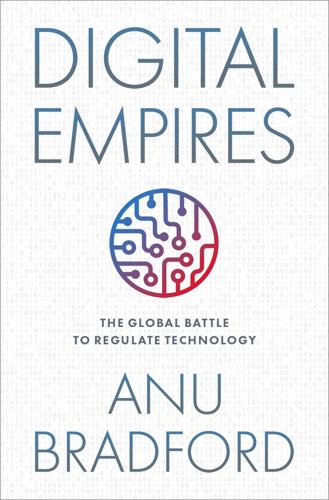
Digital Empires: The Global Battle to Regulate Technology
by
Anu Bradford
Published 25 Sep 2023
In 2020, TikTok, a social media company owned by the Chinese company ByteDance, was attempting to comply with the US government’s requirement that the company must find a US buyer—under the threat of being banned from the US market—only to learn that the Chinese government responded by prohibiting all artificial intelligence exports, thereby threatening the very sale that the US government required.66 Similarly, the Chinese ride-hailing company DiDi Chuxing found itself caught between the conflicting demands of the Chinese and US governments regarding the disclosure requirements associated with Chinese companies’ initial public offerings (IPOs) in the US. The US Securities and Exchange Commission asked DiDi to hand over data, which the Chinese government maintained could not leave China.
…
Its wide-reaching regulatory crackdown of the tech sector started with the suspension of the fintech company Ant Group’s planned $37 billion initial public offering—the largest IPO in history—in November 2020,159 followed by a $2.8 billion antitrust fine for the e-commerce giant Alibaba in April 2021.160 Two days after fining Alibaba, Chinese regulators ordered Ant Group to restructure its operations and become a financial holding company subject to central bank supervision.161 Next in line was the ride-hailing service DiDi Chuxing, whose data practices triggered a government investigation just days after the company’s $4.4 billion IPO on the New York Stock Exchange.162 Citing cybersecurity risks that the company posed to its customers, Chinese regulators ordered DiDi’s app to be removed from app stores in July 2021—within a week following the IPO—sending the company’s stock price tumbling,163 and resulting in a record high $1.2 billion fine imposed on the company in July 2022.164 In July 2021, the government blocked the proposed $5.3 billion Tencent-backed merger between DouYu with Huya, China’s two leading streaming operators.165 Another antitrust action followed in October 2021, with a $530 million fine imposed on Meituan, the food delivery giant, for its monopolistic practices.166 In parallel with targeting specific companies with enforcement actions, the government enacted a flurry of legislative measures between February and August 2021 to further assert control over the tech industry.
…
In 2020, the EU’s General Court overturned the Commission decision.136 The Commission is now appealing that decision to the CJEU, signaling the Commission’s continuing resolve to assert its view of fairness over the tax treatment of large tech companies.137 Employment Protections for Platform Workers The EU’s attention to fairness in the context of the digital economy is also reflected in its increasing concern about the working conditions of platform workers or “gig workers.”138 Platform work encompasses services such as food-delivery or ride-hailing services where workers perform services on demand while being connected to their customers via a platform. This type of work can enhance fairness by offering new opportunities for individuals to engage in the labor market under flexible conditions, thus benefiting workers, businesses, and customers alike.139 However, it can also undermine fairness, giving impetus for regulatory action.
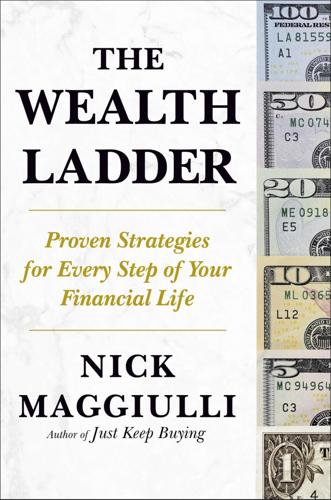
The Wealth Ladder: Proven Strategies for Every Step of Your Financial Life
by
Nick Maggiulli
Published 22 Jul 2025
For example, being “house rich, but cash poor” is one scenario where what you have on paper won’t help with your day-to-day living expenses. This is because some assets generate income while others reduce expenses. For example, stocks will typically generate income, but a car will reduce your need to pay future transportation expenses. With a car you don’t have to call a cab or a ridesharing service (like Uber) every time you want to go somewhere. The same is true of your home. While your primary residence won’t generate income, it does allow you to avoid paying the market rate for rent. Ultimately, the Wealth Ladder can and should be adapted to your financial situation. It’s more of an approximate art than an exact science.
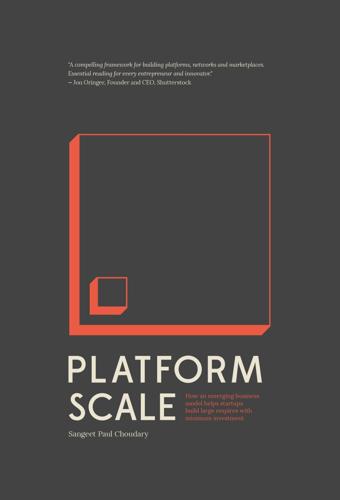
Platform Scale: How an Emerging Business Model Helps Startups Build Large Empires With Minimum Investment
by
Sangeet Paul Choudary
Published 14 Sep 2015
An understanding of sampling costs helps in identifying scenarios where social curation works well and those in which it doesn’t. 3.7 TRUST DRIVES INTERACTIONS The 7C Framework For Trust Trust is a critical factor in enabling interactions on platforms. It is especially important in enabling peer-to-peer interactions in hitherto fragmented and unorganized markets. Trust creates an environment that fosters the repeatability and long-term sustainability of interactions. Travelers on a ride-sharing platform like BlaBlaCar must be assured of a safe ride. Peer-to-peer marketplaces for used goods must ensure that buyers are assured of a minimum level of quality in the transactions they engage in. Airbnb hosts must be assured of a solution if their apartments are ransacked. Dating platforms must ensure that everyone feels safe in the interactions that ensue.
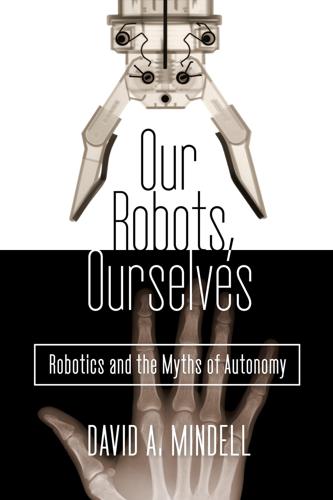
Our Robots, Ourselves: Robotics and the Myths of Autonomy
by
David A. Mindell
Published 12 Oct 2015
Unlike the Google car, however, Mercedes imagines that “passengers are able to interact intuitively with the connected vehicle” in a “symbiosis of the virtual and real world.” Google, on the other hand, has been promoting a vision of complete autonomy. As one Google engineer compares their approach to those of the car companies: “They want to make cars that make drivers better. We want to make cars that are better than drivers.” The ride-sharing giant Uber recently hired a large group of roboticists away from Carnegie Mellon, in an apparent effort to automate their cars. Google has been testing self-driving cars on California roads since 2009, claiming hundreds of thousands of miles of accident-free highway driving. They travel routes mapped with great precision by Google’s human-driven survey cars; the maps serve as virtual railway tracks for the cars (indeed, they are as yet unable to drive on roads without these detailed maps).
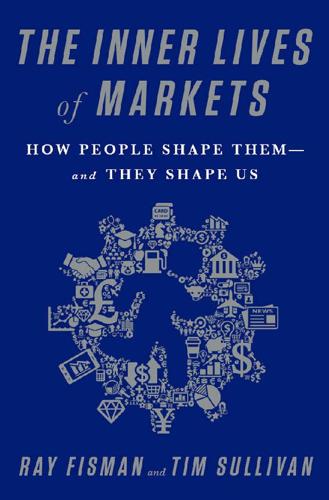
The Inner Lives of Markets: How People Shape Them—And They Shape Us
by
Tim Sullivan
Published 6 Jun 2016
There are plenty of modern-day equivalents to the French king’s shortsighted exploitation of the fair’s merchants. Once you hold a critical position between buyer and seller, market makers suffer from an almost inevitable temptation to profit from it. Uber has been accused of taking a bigger cut of its drivers’ fares after convincing them to invest in new cars and luring them to the ride-sharing platform. And Amazon—a notorious driver of hard bargains—eats the lunch of some of its third-party sellers who happen upon a blockbuster product. That’s what researchers Feng Zhu of Harvard and Qihong Liu of the University of Oklahoma found in their analysis of top-selling products on Amazon, where they showed that, in some fraction of these cases, Amazon started stocking the product itself.
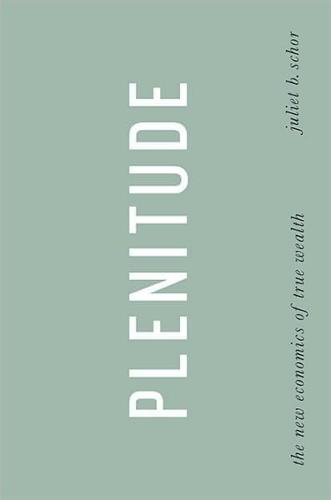
Plenitude: The New Economics of True Wealth
by
Juliet B. Schor
Published 12 May 2010
Ten years later, it’s not only mowers that are being jointly owned, but tractors and even vehicles. The sharing economy is taking off. The best-known example is car sharing, pioneered in the United States by Zipcar, which makes vehicles available to urban members on a short-term basis. Its founder, Robin Chase, has moved on to create GoLoco, a ride-sharing service. Freecycle.org members are committed to the reciprocity of both giving and getting. IShareStuff.com allows individuals to post items they are willing to share and to contact others who have done the same. These examples are extensions of two important movements that promote global sharing: the information commons and responsible use of common resources of land, water, and atmosphere.

Cogs and Monsters: What Economics Is, and What It Should Be
by
Diane Coyle
Published 11 Oct 2021
Daniel McFadden was co-recipient of the 2000 Nobel memorial prize for his development of econometric methods for predicting passenger demand, as applied in a now-classic example to San Francisco’s BART authority (McFadden 1974). Economists have developed road pricing mechanisms and congestion charges. In many places, before the days of ride-sharing services, there were shortages of taxis, sustained by barriers to entry in the form of licences. A taxi licence or medallion was a valuable piece of property, and incumbents ardently resisted the issue of new ones no matter how acute the taxi shortage. This made the regulation of fares essential: otherwise taxi owners and drivers could extract large monopoly rents from their customers.

12 Bytes: How We Got Here. Where We Might Go Next
by
Jeanette Winterson
Published 15 Mar 2021
Cookies, remember, are bits of tracking code inserted into your computer. When you, personally, are no longer doing the searching, because your personal PA is doing it for you, there will be no effective privacy preference. But in fact there really isn’t one now. Even innocent-seeming apps like the weather and ride-sharing are infested with tracking code. A mini-me PA will be a seductive choice. Why wouldn’t we want an able, considerate, smart helper who is always available, and mostly free? That used to be called a wife. But then feminism spoiled the party. She or he could, of course, in time, be a double agent.
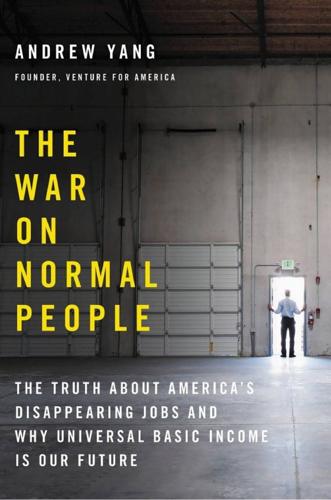
The War on Normal People: The Truth About America's Disappearing Jobs and Why Universal Basic Income Is Our Future
by
Andrew Yang
Published 2 Apr 2018
It is obvious that Tesla trucks will eventually have the same self-driving capabilities as their cars. Other autonomous vehicle companies report similar timelines, with 2020 being the first year of mass adoption. And it’s not just those driving trucks who are at risk. A senior official at one of the major ride-sharing companies told me that their internal projections are that half of their rides will be given by autonomous vehicles by 2022. This has the potential to affect about 300,000 Uber and Lyft drivers in the United States. The replacement of drivers will be one of the most dramatic, visible battlegrounds between automation and the human worker.

Company of One: Why Staying Small Is the Next Big Thing for Business
by
Paul Jarvis
Published 1 Jan 2019
The hotel has thirty-five rooms and access to six natural hot spring baths, which are open 24/7 to better serve their guests. The water of the baths is pure, alkaline, and neither artificially heated nor treated. The hotel serves simple, seasonal food, locally sourced from the surrounding mountains and rivers. Besides the baths, there are no other attractions in the nearby area, and there’s definitely no wi-fi or ride-sharing. Still, it’s been a popular destination for far longer than any of us (or our great-grandparents) have been alive. Guests have included emperors, politicians, samurai, and military commanders. The hotel’s focus, since the beginning, has been on customer service, not on growth or expansion. It’s stayed small because the top priority has always been making guests comfortable.
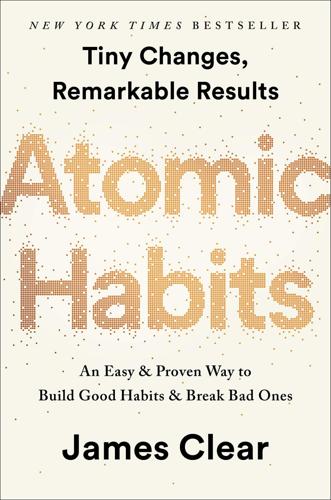
Atomic Habits: An Easy & Proven Way to Build Good Habits & Break Bad Ones
by
James Clear
Published 15 Oct 2018
If you look at the most habit-forming products, you’ll notice that one of the things these goods and services do best is remove little bits of friction from your life. Meal delivery services reduce the friction of shopping for groceries. Dating apps reduce the friction of making social introductions. Ride-sharing services reduce the friction of getting across town. Text messaging reduces the friction of sending a letter in the mail. Like a Japanese television manufacturer redesigning their workspace to reduce wasted motion, successful companies design their products to automate, eliminate, or simplify as many steps as possible.

API Marketplace Engineering: Design, Build, and Run a Platform for External Developers
by
Rennay Dorasamy
Published 2 Dec 2021
This has also given rise to a wave of sharing. Services such as Airbnb allow people to rent out a spare room or an entire home. Ride sharing services like Uber and Lyft are super simple to use and are constantly innovating with options such as low-cost trips and package delivery. This has enabled a paradigm shift as it could allow people to not make long-term investments in property and motor vehicles. Future generations may not need a driver’s license as it may be more economical and practical to use ridesharing than owning a car. From an industry perspective, the lines between organizations are blurring. One of the most successful mobile money services in East Africa is run by a telecommunications company.

Survival of the Richest: Escape Fantasies of the Tech Billionaires
by
Douglas Rushkoff
Published 7 Sep 2022
But this requires sweeping a lot of stuff under the rug—like the people and places where their systems actually operate. For example, usurping the role of municipalities in planning mass transit, Uber commissioned eight leading architecture firms to develop design proposals for “skyports” where future users of the ridesharing app could board and disembark from as-yet-uninvented urban air taxis. In spite of their lip service to social and environmental impact, the proposals convey a future like the one depicted in Fritz Lang’s Metropolis , where the wealthy fly from point to point in a city in the sky—while the workers supporting this lifestyle toil on the ground below.
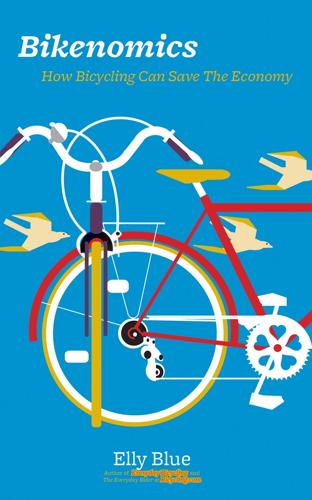
Bikenomics: How Bicycling Can Save the Economy (Bicycle)
by
Elly Blue
Published 29 Nov 2014
A grad student then presented her research that suggested that car ownership could play a role in helping people climb out of unemployment (though this and all other factors were dwarfed, she pointed out, by the positive effect of increased literacy on employment). A transit agency representative brought in to discuss an existing rideshare program for the elderly homebound in the city’s suburbs and unincorporated areas was inadvertently the star witness—the costs, as well as the travel times, were huge. Another speaker, the head of a regional business alliance, bragged about his two mile commute, which he undertook daily in his car, alone, and joked that his only problem with giving low income people cars was that they were likely to “end up wrapped around my front bumper.”

Come and Take It: The Gun Printer's Guide to Thinking Free
by
Cody Wilson
Published 10 Oct 2016
Startup cultures were of different strains. There were men who made millies and there were men who made billies. The rule is to get big and to get big fast, in the name of libertarianism, of course. “The cities fine your customers tens of thousands of dollars if you’re Airbnb; the attorneys general and the unions come after the ridesharing apps. There are undercover cops literally pulling people from Ubers. You have to move to many markets quickly, make it too hard to uproot you everywhere at once.” I met a few more people while I was there. I heard about a man collecting the notes of Peter Thiel to release as a book, about the Massive Online Open Course insurgents trying to drive a wedge between dot gov and dot edu, about Patri Freidman and those charting the high seas for zones of libertarian secession.

Exponential Organizations: Why New Organizations Are Ten Times Better, Faster, and Cheaper Than Yours (And What to Do About It)
by
Salim Ismail
and
Yuri van Geest
Published 17 Oct 2014
The ability to move infinitesimal transaction amounts will underpin entirely new business models. Autonomous vehicles Implications: In September 2014, California will issue the first license plates for driverless cars. Starting with delivery vehicles and then taxis, predictions call for existing road capacity to increase 8-10 times once a critical mass of AVs is reached. Ridesharing is an intermediate step toward fully automated transportation, which may have a bigger visible impact on society than anything else, including sustainability, urban planning (almost no parking lots) and fewer traffic fatalities. Note that most of these technologies and trends were unknown a decade ago, and all were non-existent thirty years ago.
…
Today, a trend known as Collaborative Consumption leverages the Internet and social networks to create a more efficient utilization of physical assets. The following shows just some of the vertical markets affected by the phenomenon of moving from “possess” to “access”: bartering, bike sharing, boat sharing, carpooling, ride sharing, car sharing, collaborative workspace, co-housing, co-working, crowdfunding, garden sharing, fractional ownership, peer-to-peer renting, product service systtem, seed swaps, taxi shares, time banks, virtual currency (Source: Wikipedia). Note that in traditional industries that can be fully information-enabled, new competition has produced a staggering drop in revenues for old companies.
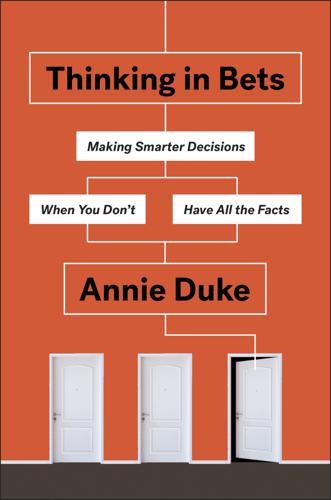
Thinking in Bets
by
Annie Duke
Published 6 Feb 2018
Ulysses recognized that his future-self (along with his crew) would become entranced by the Sirens and steer toward the rocks. So he had his crew fill their ears with wax and tie his hands to the mast, literally binding his future-self to better behavior. One of the simplest examples of this kind of contract is using a ride-sharing service when you go to a bar. A past version of you, who anticipated that you might decide irrationally about whether you are okay to drive, has bound your hands by taking the car keys out of them. Most illustrations of Ulysses contracts, like the original, involve raising a barrier against irrationality.
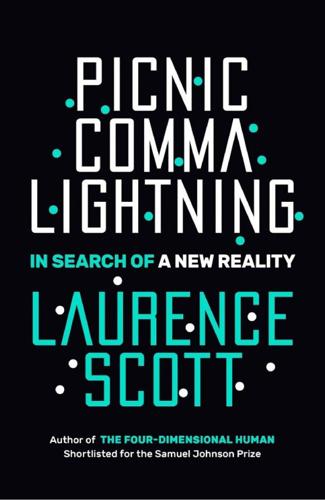
Picnic Comma Lightning: In Search of a New Reality
by
Laurence Scott
Published 11 Jul 2018
Did he/she explain any swapped items, was he/she careful with the groceries, did he/she take any unwanted bags away with him? Am I alone in hearing a note of menace in the supermarket’s description of their drivers as ‘the friendly face’ of the business? We now know that an experience is over when it’s time to quantify it, the moment ending on a question mark rather than a full stop. After each journey using a ride-sharing service, you are locked in that stalemate of mutual appraisal. Similarly, from library coffee shops to airport security lines, it’s now commonplace to encounter those stands with childish buttons for us to press on our way past. ‘How was your experience today?’ these unstaffed customer-service stations ask.
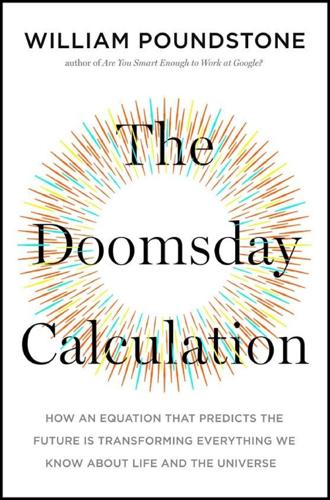
The Doomsday Calculation: How an Equation That Predicts the Future Is Transforming Everything We Know About Life and the Universe
by
William Poundstone
Published 3 Jun 2019
So did American Jews of the time, who created superhero franchises that have long survived Hitler’s thousand-year Reich. The Übermensch figures in the modernist canons of George Bernard Shaw (Man and Superman), James Joyce (Ulysses), and Alfred Hitchcock (Rope). Silicon Valley’s most successful ride-sharing company, Uber Technologies, dropped the umlaut for business reasons. Coming of age along with the internet, Bostrom became involved in the transhumanist movement. One of the first subcultures to be united by the global web, transhumanists meld Nietzsche, speculative technology, and science fiction into visions of the future.

Artificial Unintelligence: How Computers Misunderstand the World
by
Meredith Broussard
Published 19 Apr 2018
It’s still not as good as human translation, but human brains are magnificent at figuring out the meaning of garbled sentences. A stilted, awkward translation of a web page is usually all the casual web surfer needs. GPS systems that provide directions from point A to point B are terribly handy. They don’t always give the best directions to the airport, if you ask any professional taxi or ride-share driver, but they will get you there and they will mostly show the traffic on the route for sufficiently busy areas. However, the unreasonably effective data-driven approach has enough problems that I’m skeptical about using AI to fully replace humans for actual, life-threatening situations, like driving.
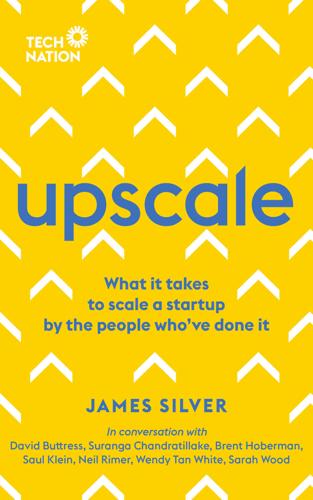
Upscale: What It Takes to Scale a Startup. By the People Who've Done It.
by
James Silver
Published 15 Nov 2018
So anything you do that’s driving up nights booked [or equivalent] is what you want to do for a marketplace. ‘For Uber and Lyft, it’s rides booked. So they don’t say kilometres driven; they could, and then you could incentivise people to do longer rides, but the theory is that ride length is not very elastic, so using these ride-sharing services for more rides is the right reflection of the utility of those apps.’ And while it’s not always immediately obvious what a company’s North Star metric is, says Grol, without knowing it you are going to have a much more challenging time accelerating the growth of your business. Benjamin Grol is a partner and the Head of Growth at leading VC firm Atomico, where he focuses on helping portfolio companies grow and evaluating new investment opportunities.

The Globotics Upheaval: Globalisation, Robotics and the Future of Work
by
Richard Baldwin
Published 10 Jan 2019
He died instantly. Despite safety issues raised by this and other accidents, US states are pushing forward laws that will hasten the progress of vehicles driven by software robots. In December 2016, for example, Michigan allowed the testing and use of self-driving cars on public roads, including ride-sharing and truck platoons (where a few robot-driven trucks follow each other closely). The Michigan law doesn’t require a human to be in the vehicle. This has truckers worried, and their labor union is doing something about it. The truckers’ union, the International Brotherhood of Teamsters, is over a century old—having been formed when a teamster was someone who drove a team of horses.
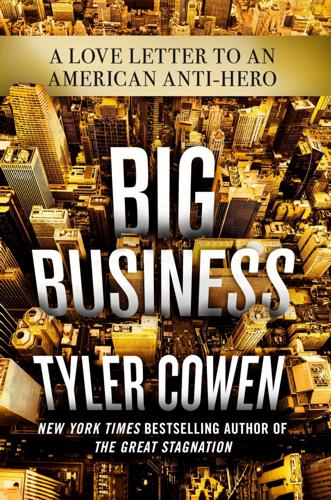
Big Business: A Love Letter to an American Anti-Hero
by
Tyler Cowen
Published 8 Apr 2019
Because most of us don’t have a vision for how we could accomplish those things on our own, or even through government, corporations end up doing many of them. “When in doubt, let it happen” has been the philosophy behind the spread of so much corporate activity in the United States, most of all in the world of tech. Did Uber even bother to ask for permission to operate its ride-share business, or request that a referendum be held on whether it should be treated as a municipal utility? In reality, we’ve had a tech revolution and such significant growth in American business because our companies very often solved problems first and sorted out many of the complications later. We also rely on business to regulate speech, for better or worse.
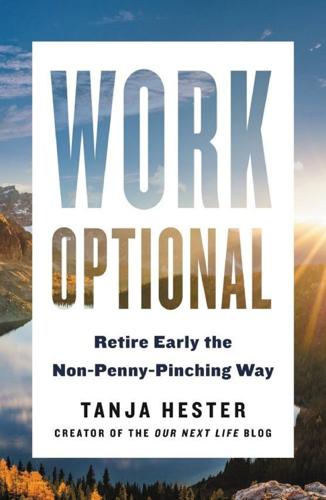
Work Optional: Retire Early the Non-Penny-Pinching Way
by
Tanja Hester
Published 12 Feb 2019
Even a paid-off car comes with ownership costs of several thousand dollars a year from insurance, gas, maintenance, and parking. If you are making payments on that car or, worse, leasing it, then add several thousand more dollars per year. Going carless is not an option for everyone, but if you live in a walkable area or a city with good public transportation, you might find that ridesharing and car-sharing services provide all the car time you need. If having a car is critical, consider ways to reduce your costs: keeping one car for a long time instead of upgrading, buying instead of leasing, buying used, increasing your insurance deductible to drop your premium, or just driving less to save gas.
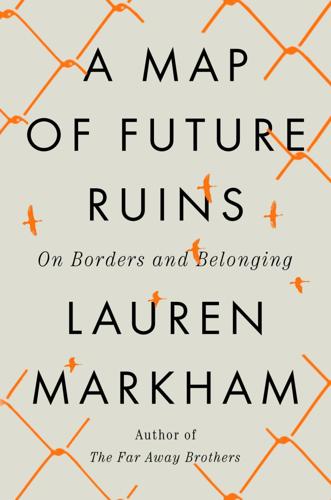
A Map of Future Ruins: On Borders and Belonging
by
Lauren Markham
Published 13 Feb 2024
I called the California unemployment hotline so often that I memorized the number, even though the line was almost always busy or unanswered. “I only have thirteen dollars in my bank account,” one father told me over the phone as we filled out his application. He had been a tailor in Senegal but had worked as a rideshare driver for the past few years. Now stuck at home, he’d made dozens of cloth masks, which, at the time, were in short supply. “I’m just at home, what else do I have to do?” he said. He wanted to donate them to the school, so that the staff distributing food during lockdown would have protection. All of his masks, I noticed when I picked them up, were made with material emblazoned with the US flag.
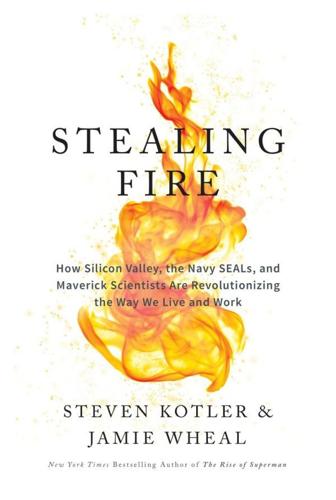
Stealing Fire: How Silicon Valley, the Navy SEALs, and Maverick Scientists Are Revolutionizing the Way We Live and Work
by
Steven Kotler
and
Jamie Wheal
Published 21 Feb 2017
They’ve supported Pencils of Promise, a nonprofit dedicated to global K–12 education that’s built almost four hundred schools, and helped launch Falling Whistles, a global network of over 120,000 members dedicated to eradicating child soldiers in the Congo. But it’s not just nonprofit work they’re interested in. They’ve also begun a venture capital fund that has helped seed dozens of start-ups, including the buy-one/give-one shoe company TOMS, the eyeglass upstart Warby Parker, and the ride-sharing giant Uber. By using non-ordinary states to promote community, they’re reimagining the staid world of professional networking, philanthropy, and venture capital. And Summit isn’t the only organization leveraging those lessons to accelerate change. MaiTai Global, started in 2006 by venture capitalist Bill Tai 31 and kitesurfing legend Susi Mai, uses action sports (mostly surfing and kitesurfing) as a stimulant for group flow and entrepreneurship.

Capitalism Without Capital: The Rise of the Intangible Economy
by
Jonathan Haskel
and
Stian Westlake
Published 7 Nov 2017
But it is also possible to imagine investments, intangible and tangible, that produce little or no social return; the private return they generate for the firm that makes them is the result of shifting value that had already been created somewhere else. Consider two businesses that have been in the news recently: Mylan, a drug company that sells the EpiPen, and Uber, the global ride-sharing business. As we mentioned in chapter 4, the success of the EpiPen depends on a set of interlocking intangible investments: its design has been approved by drug regulators; its name (which is protected) is recognizable; first aiders are trained in how to use it; and it has sales and marketing channels into important customers, like schools (some of which are supported by laws, like the US Schools Access to Emergency Epinephrine Act of 2013).
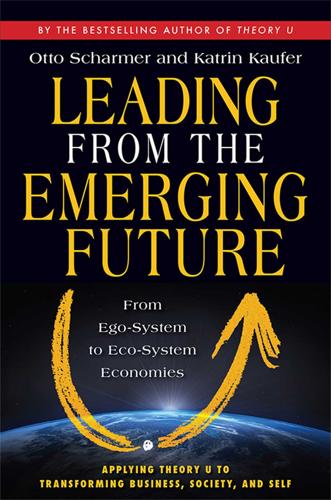
Leading From the Emerging Future: From Ego-System to Eco-System Economies
by
Otto Scharmer
and
Katrin Kaufer
Published 14 Apr 2013
I believe it will be referred to as a revolution, so to speak, when society, faced with great challenges, makes a seismic shift from individual getting and spending toward the rediscovery of collective good.”74 Here are a few examples of the early stages of that seismic shift. Zipcar, a car-sharing service founded in 2000 in Cambridge, Massachusetts, had 670,000 members in 2012. Netflix, founded in 1997, allows its 23 million members to share access to DVDs. Zimride is a social network for ride-sharing at MIT that allows students, employees, and faculty to coordinate shared car rides. At “Powershopping Parties” in Germany, women swap clothes at parties of eight hundred or more. More and more consumers are moving from buying to “using”; Botsman calls this phenomenon collaborative consumption.75 Says Robert Henrich, CEO of Daimler’s Car2go, a car-sharing company that operates in Vancouver, British Columbia; Austin, Texas; Washington, DC; San Diego; Amsterdam; Vienna; Lyons; and Hamburg, Dusseldorf, and Ulm, Germany, “In the beginning, especially young people wanted to try this out.

Power, for All: How It Really Works and Why It's Everyone's Business
by
Julie Battilana
and
Tiziana Casciaro
Published 30 Aug 2021
After six years of sleepless nights and busing domestic workers to the state capitol to protest and lobby, the organizers achieved a breakthrough: New York became the first state to sign the domestic workers’ Bill of Rights, which grants them overtime pay, paid time off, protections from harassment, severance pay, and more.52 The law isn’t perfect, and access to justice to fight delinquent employers remains a barrier; but it has contributed to shift the daily balance of power for workers like Sandra, another testament to the importance of collective organizing. In today’s gig economy, the absence of legal protections against abusive power is an issue that affects many other workers. Consider ride-share drivers and delivery food workers who, as we write, do not qualify as “employees” in many countries. Even though the companies that engage with these purportedly “self-employed contractors” cannot operate their businesses without them, they have unilateral control over their working conditions.

Upgrade
by
Blake Crouch
Published 6 Jul 2022
But as I reached to open the car door, headlights appeared in the distance, the light scattering across the raindrops that were sliding down the windshield. I waited, watching as the driverless car pulled to the curb. Beth opened the rear passenger door and climbed in. After two miles, Beth’s ride-share stopped in front of a restaurant called La Fleur, where we’d eaten together on a handful of special occasions. It was an anniversary and birthday place. A trying-to-impress-someone place with a synthetic-free menu and stupefying prices. They sold what some people were willing to pay a very high price for—the experience of what it used to feel like to eat out in the world.
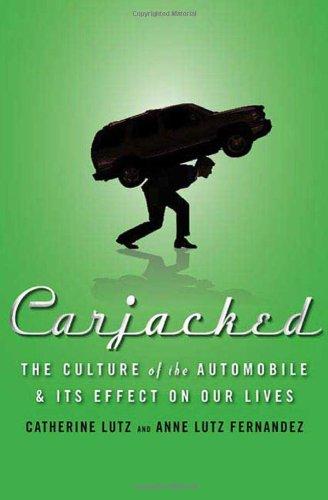
Carjacked: The Culture of the Automobile and Its Effect on Our Lives
by
Catherine Lutz
and
Anne Lutz Fernandez
Published 5 Jan 2010
After spending a couple of weeks with my co-workers during the commute I noticed that I was always in a better mood when I got to work because I was laughing all the way to work rather than cursing the red lights and traffic that were the bain [sic] of my weekday mornings.”49 Neighbors can also ride together to the mall or the big-box retailers to which many people drive on the weekends. These still-rare examples of ridesharing could work well in some highly social communities where neighbors already spend time with each other. But many people do not know their neighbors and do not wish to know them. When one couple moved into their new suburban home in 2004, they invited everyone on the cul-de-sac to an open house. A guest in her seventies remarked that it was the first time she had been invited to a party on the block, and she was meeting many of her neighbors for the first time.
…
The fact that many families now include two income earners accounts for an increase in the number of vehicles we feel we need. But the very idea 72 Carjacked of family members finding ways to share a car, carpool, and adapt their schedules to others’ has become unpalatable. A 2006 Pew Research study found that in response to higher gas prices, only 21 percent of Americans said they had started ride sharing or carpooling more often. In this survey, “more often” was not quantified, but might mean sharing a ride to work once a week or more. Since then, the amount of carpooling has risen only slightly. Increasingly, the second or third car is for the teenager in the family, who is seen as needing a car to get to school, activities, or to part-time work, even when walking, school buses, and public transit are possibilities.
…
See technology. public transportation: American Recovery and Reinvestment Act and, 208 availability of, 80–1, 107, 115 in Boston, 105 the carless and, 101–2, 104–5, 115, 125 children and, 26, 219 eco-friendly, 209 the elderly and, 111 fleet, 5 frustrations with, 155 funding for, 5, 10, 94, 126, 133–4, 176, 208, 224–6 health benefits of, 162–5 health hazards and, 161–2 housing values and, 207 inner cities and, 115–6 need for, xiv, 90, 156–9, 219–20, 223 physical exercise and, 162, 165 rail, 224 rapid, 133 school buses, 134–7 sprawl and, 80, 101, 111, 159 teens and, 72, 137, 219 traffic congestion and, 145, 203 travel times and, 220 INDEX Rain Man (film), 14 Reagan, Ronald, 102, 150 Reality Bites (film), 7 Renault, 43 Rent-A-Tire, xiii, 109–10, 120 repossession, xiii, 79, 83–4, 109, 117–9, 124 Resta, Pat, 98 Reynolds, Milton, 113 Rice, Bob, 37 ride sharing. See carpooling road construction, 5–6, 93–6, 127–9, 152, 225 road rage, 151–8 Roche, James M., 121 Rockefeller, Nelson, 9 Rolls-Royce Phantom, 75 Romney, Mitt, 9 Roosevelt, Franklin, 96 rush hour, 130–3, 156, 220, 223 Ryder, Winona, 7 Saab, 62–3 safe driving habits, 221–2 Saturn, 16, 85 Schultz, Howard, 138 Scion, 27 seat belts, 18, 116, 184, 193–7, 203, 221, 228 Selditz, Larry, 197–8 self-expression, 26–30, 53–57, 60, 78 self-reliance, 15, 27 Sloan, Alfred P. 64 Slocum, Tyson, 122 Speed (cable TV channel), 6 speed limits, 18, 153, 180, 193, 196, 221 speeding, ix, xi, 18–9, 23, 31, 196, 221 Speizer, Frank, 168 spinal cord injuries, 183–4, 187, 243n12 sport utility vehicles (SUVs): categorized as trucks, 199 crossovers and, 57 ESC in, 216 hybrid, 66, 88–9 introduction of, 62 marketing of, 199 reasons for buying, 72–3, 164 renting, 73, 142 safety and, xii, 120, 177–81, 194 sales, 3, 5, 73 sprawl, suburban, 80–1, 101, 125, 127–33, 145–6, 150, 159, 225 Stahl, Leslie, 207 Standard Oil, 10 Starbucks effect, 137–40 Stark, Ellen, 86, 98–9 253 Stevens, Ted, 95 sticker price, 65–8, 71, 75, 214–5 Stiglitz, Joseph E., 96 stimulus spending, 10, 95, 208 Stone, Judy, 188 Stone, Oliver, 123 Straith, Clair, 195 Students Against Destructive Decisions (SADD), 193, 198 Subaru, 16, 50–1, 57 Suckow, Fred, 43–6 Superbad (film), 18 talk radio, 149–51 tax credits, 235n34 technology: alternative fuels, 36, 89, 226 Americans’ faith in, 34–37 in-car technologies, 74–5, 147–9, 156 See also electric cars teenagers: car crashes and, 23, 52, 136, 181–3, 189, 197–8 cars purchased for, 3, 72 delayed driving for, 219 freedom and, 19–21 marketing to, 2, 51–4, 59 product placing and, 51–3 public transportation and, 137 trips taken by, 82–3, 139 telecommuting, 157, 219–20 Thelma and Louise, 22 Tillerson, Rex, 120 Toronto, Canada, 126 toxins, car-related, 169–71 Toyota, 16, 30, 40, 43–4, 51, 54, 57, 59, 65–9, 73, 88, 141, 157, 178, 206, 215 trade-ins, 70, 78, 86, 212–3 traffic: congestion, 6, 21, 36, 90, 92–5, 98, 127–135, 137–8, 142–148 court, 106 reduction strategies, 133–4, 152 regulation, 17–21, 112–114, Transformers (film), 7 transportation costs by income, 236n6 TREAD Act, 196 Truckers and Citizens United, 121 Turner, Terence, 30 Twitchell, James, 52 United Auto Workers (UAW), 9, 121 Used cars, 5, 8, 37, 72, 85, 99, 106–11, 119, 213–214 254 Carjacked Veblen, Thorstein, 57–8 volatile organic compounds (VOCs), 167, 169 Volkswagen, 22, 27–8, 45, 47–8, 53, 62, 77, 82, 148 Volvo, 27, 54, 74, 137, 166, 190 Wagoner, Rick, 120–1 Wahl, Wendy, 41–3, 57–8 walkable neighborhoods, 133, 165, 223, 225 Wall Street (film), 123 Wal-Mart, 8, 102–3, 110, 141 Waterworld (film), 34 Whitman, Walt, 15 Wild West, 16–7 Wilkinson, Tom, 87 Zenn, 215 Zipcar, 211–2

Listen, Liberal: Or, What Ever Happened to the Party of the People?
by
Thomas Frank
Published 15 Mar 2016
Lesser achievements included the million dollars Patrick spent “to provide assistance, mentoring and advice to startups and innovation companies” and the other million-and-a-half spent to support startups at the University of Massachusetts at Lowell.28 On still other occasions, favoring inno has meant bulldozing the people in its path—for instance, the taxi drivers whose livelihoods are being usurped by ridesharing apps like Uber. When these workers staged a variety of protests in the Boston area, Patrick intervened decisively on the side of the distant software company; apparently convenience for the people who ride in taxis was more important than good pay for people who drive those taxis. It probably didn’t hurt that Uber had hired a former Patrick aide as a lobbyist, but the real point was, of course, innovation: Uber was the future, the taxi drivers were the past, and the path for Massachusetts was obvious.

Crushing It!: How Great Entrepreneurs Build Their Business and Influence—and How You Can, Too
by
Gary Vaynerchuk
Published 30 Jan 2018
Still, 95 percent of the people reading this book, even the young ones, probably have some kind of obligation: college loans (many are likely still in school), mortgages, child support, elderly parents, or dependent families. Most probably already have a job. Maybe you’ve got a flexible schedule because you’re driving for a rideshare company or working part-time or nights. But most of you are working nine to five or even eight to six. Your only prayer to one day live the Crush It! life, therefore, is to deploy ungodly amounts of work from seven p.m. to two a.m. Monday through Friday, plus all day Saturdays and Sundays. Ideally you’ll be building your business around the thing you love to do for fun and relaxation, so it won’t feel like losing your leisure time.

Ten Lessons for a Post-Pandemic World
by
Fareed Zakaria
Published 5 Oct 2020
They help build the economic and social capital upon which healthy societies rest. They are also the most adaptive geographical units, capable of constantly responding to the pressures placed on them by broader trends or by their inhabitants. While some aspects of digital technology provide alternatives to city life, like teleconferencing, most of them—from rideshare to meal deliveries—actually make city life easier and richer. Today you can use your smartphone to get around a city quickly and cheaply, order in from hundreds of restaurants, get alerts about events in your neighborhood, and swipe for a date. Technology has enhanced the core reason people live in cities—to meet others.

The Corruption of Capitalism: Why Rentiers Thrive and Work Does Not Pay
by
Guy Standing
Published 13 Jul 2016
Christensen, The Innovator’s Dilemma: The Revolutionary Book That Will Change the Way You Do Business (Boston: Harvard Business Review Press, 1997). 4 C. Christensen, M. Raynor and R. McDonald, ‘What is disruptive innovation?’, Harvard Business Review, 2015. 5 M. Harris, ‘Uber: Why the world’s biggest ride-sharing company has no drivers’, The Guardian, 16 November 2015. 6 S. Jackman, ‘Crowdsourcing may hold key to unlocking Japan’s working potential’, Japan News, 2 January 2015. 7 Cited in S. O’Connor, ‘The human cloud: A new world of work’, Financial Times, 8 October 2015. 8 Associated Press, ‘US companies increasingly turning to temporary workers to fill positions’, Fox News, 8 July 2013. 9 Cited in The Economist, 13 June 2015, p. 57. 10 B.
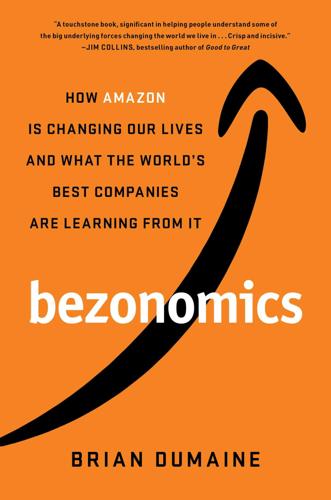
Bezonomics: How Amazon Is Changing Our Lives and What the World's Best Companies Are Learning From It
by
Brian Dumaine
Published 11 May 2020
Harit Talwar, the head of Goldman’s consumer bank division Marcus, talked about the Amazonization of banking at a 2019 conference: “Our purpose is to disrupt the distribution and consumption of financial services—pretty much what Amazon has done, and is doing, to retail.” Of course, Amazon itself is already trying to disrupt the banking industry, too. Echoing Talwar’s refrain, Uber CEO Dara Khosrowshahi says that he wants his ride-sharing platform to be the Amazon of transportation—using big data to conquer all aspects of transportation, from food delivery to scooter-sharing services to pay systems. “Cars are to us what books were to Amazon. Just like Amazon was able to build this extraordinary infrastructure on the back of books and go into additional categories, you are going to see the same from Uber.”
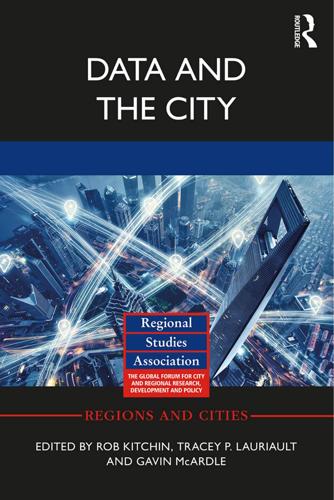
Data and the City
by
Rob Kitchin,Tracey P. Lauriault,Gavin McArdle
Published 2 Aug 2017
Even if data provenance and accuracy were not closely guarded trade secrets, the primary indicator of data worth is its literal exchange value: data are valuable because they, or products based upon them, can be sold. In many cases, if a company strives for more accuracy than the competition, they would not necessarily reap increased rewards. The price of a trip on a ride-share service depends not just company data, but also on the market as a whole. A company that charges much more than the competition is unlikely to survive. As long as the data are useful in leveraging a profit, as long as they are superior to their competitors in some way, the imperatives of capital are satisfied.

The Big Nine: How the Tech Titans and Their Thinking Machines Could Warp Humanity
by
Amy Webb
Published 5 Mar 2019
By 2018, some clever entrepreneurs had figured out how to repurpose those networks for the gig economy v2.0. Rather than driving for Uber or Lyft, freelancers could install “gigware” to earn money for idle time. The latest gigware lets third-party businesses use our devices in exchange for credits or real money we can spend elsewhere. Like the early days of ride-sharing services, a lot of people left the traditional workforce to stake their claim in this new iteration of the gig economy. They quit their jobs and tried to scrape together a living simply by leasing out access to their devices. This has caused a significant strain on the power grid and on network providers, who couldn’t keep up with demand.
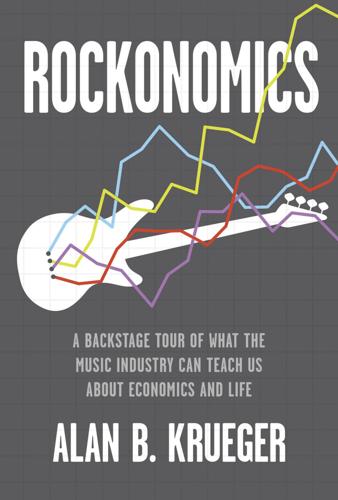
Rockonomics: A Backstage Tour of What the Music Industry Can Teach Us About Economics and Life
by
Alan B. Krueger
Published 3 Jun 2019
They care about what is said about them on social media. They may also consider it in their economic interest to sacrifice short-term revenue for the sake of long-term longevity and popularity, and perhaps greater profits in the future. This tension exists in other markets as well. For example, the ride-sharing company Uber faced intense opposition when it introduced surge pricing (i.e., charging a higher price when demand for rides greatly exceeds the supply of drivers in an area), and it has continually adjusted the practice to reduce customers’ sense of moral umbrage. And after a hurricane, states often impose anti-gouging laws for essential goods such as food and lumber.
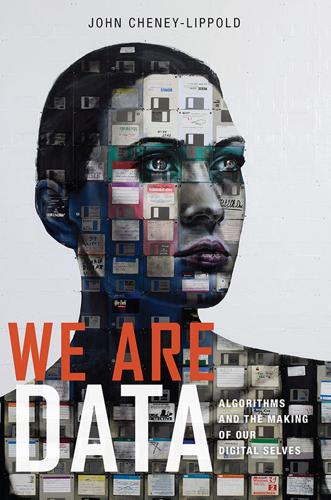
We Are Data: Algorithms and the Making of Our Digital Selves
by
John Cheney-Lippold
Published 1 May 2017
A machine-learned model of ‘woman’ from 2008 is archaic, most definitely out of fashion, and most likely passé. ‘She’ has no idea what Snapchat or Tinder is. ‘She’ might not know there was a global financial collapse around the corner. ‘She’ has never heard of the Arab Spring and wouldn’t know what an Uber or Lyft “ride-sharing” car was, even if it drove back in time and hit ‘her’ on the street. The measurable-type models that Quantcast developed in 2008 need to account for the dynamism of life itself. New sites, new words, new interactions, and new types of performance, when datafied, maintain these recursively updated versions of ‘gender’ (as well as ‘ethnicity,’ ‘class,’ ‘age,’ and even ‘education’).
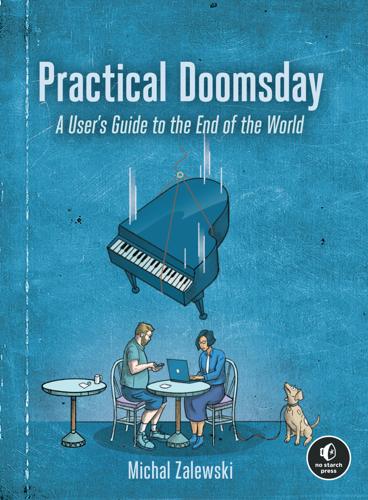
Practical Doomsday: A User's Guide to the End of the World
by
Michal Zalewski
Published 11 Jan 2022
The followers of this movement can pay much less for the hardware and for the titles themselves, and yet they seem about as content as the people living on the cutting edge of tech. Beyond these suggestions, many other opportunities to save are more dependent on your location, income bracket, or family situation. For young urban folks, habitual restaurant dining and ride-sharing can add up to a hefty sum every year. Designating some days of the week for public transit and home food can be useful. Meanwhile, for suburban homeowners, DIY home improvement can save you thousands compared to calling a pro to take care of rudimentary tasks, such as replacing a bathroom fixture, fixing a light switch, or unclogging the drain.

This Is for Everyone: The Captivating Memoir From the Inventor of the World Wide Web
by
Tim Berners-Lee
Published 8 Sep 2025
Using the Polis app, participants can post comments about topics or proposed legislation; other users click ‘agree’, ‘disagree’ or ‘pass/unsure’ on each comment. Interestingly, participants can’t respond directly to one another’s comments, eliminating thread-derailing arguments and abuse. Polis was used in 2015 to set Taiwan’s policy for ride-sharing apps like Uber, which faced opposition from local cab drivers. After a long series of posts to the app, the community came to a consensus that allowed Uber to operate in the country, but subjected it to strict regulations. Polis is deliberately designed to promote the norm, rather than extremes.

Markets, State, and People: Economics for Public Policy
by
Diane Coyle
Published 14 Jan 2020
There is some evidence that this has provided a route into formal work for people who have found it hard to get employment, such as ethnic minority drivers from the dismal banlieues, or suburbs, of big French cities. A study by Boston Consulting Group (commissioned by Uber) found that one in four jobs created in Paris in 2016 was due to ride-sharing companies. Unemployment in France is relatively high, and Paris and other French cities have fewer conventional taxis per head of population than cities like London or New York. On the other hand, the study found the average Uber driver in Paris worked 52 hours a week and earned 1,400 euros per month, just below minimum wage.
…
See Great Financial Crisis financial services: competition in, 56; industrial policy and, 130; privatization of, 114; regulation of, 3, 67–68, 69, 130, 264; wages in, 220 Finland, 2, 114, 284; universal basic income in, 237, 238 Firefox, 91 fiscal policy, 6 fishing, 139, 143, 147, 148–49 fixed costs, 104 “flagship” industries, 106 floods, 209 food safety, 67 food stamps, 198, 234 Foundations for Evidence-Based Policy-making Act (2019), 300 fracking, 86 framing bias, 173, 180–81, 186, 189, 190, 191, 199, 320 France: blood donation in, 196; competition policy in, 56, 63, 94; cost-benefit analysis in, 313; economic planning and industrial policy in, 21, 100, 130–31; electric industry in, 87; health care in, 250; inequality in, 217, 219; nationalization in, 107; privatization in, 114–15, 130; productivity in, 116; randomized control trials in, 329; regulatory burden in, 66; ride sharing in, 78; taxation in, 231; welfare state in, 205 franchising, 168 freedom, 7, 197, 226, 245 free riding, 27–28, 128, 137, 142, 152, 155, 169, 267 Friedman, Milton, 225–26, 236, 287 Frisch, Ragnar, 21 Fukushima nuclear disaster, 86 Funding Circle, 81 gambling, 114 gas and electricity, 22, 45, 46 Gates Foundation, 329 General Motors, 151 The General Theory of Employment, Interest and Money (Keynes), 21, 99 genetics, 131 Germany: blood donation in, 196; competition policy in, 94; under fascism, 20; health care in, 250; industrial policy in, 126; nuclear power in, 86; privatization in, 114, 115; productivity in, 116, 118; social insurance in, 203 gift relationship, 196 Gigerenzer, Gerd, 174 Gilded Age, 217 Gini coefficient, 215, 217, 224 GiveDirectly, 238 globalization, 207, 217, 220, 258 global positioning system (GPS), 132 gold plating (over-investment), 113 Goodhart’s law, 283 goodwill, 158, 159 Google, 52, 59, 91, 93, 94, 104, 124 government failure, ix, 1, 4–5, 14, 17, 22, 146, 197, 256–94; market failure and, 16–18, 293–94, 302–3 government spending, 2 Governing the Commons (Ostrom), 145 Granovetter, Mark, 157 Great Depression, viii, 20, 99, 100, 204, 206, 257 Great Financial Crisis (2008), 23–24, 207, 258; banks nationalized during, 100, 103; changes wrought by, viii, 67–68; confidence shattered by, 158; inequality stalled by, 217 The Great Gatsby (Fitzgerald), 217 Great Stink (1858), 308 Greece, 115 greenhouse gases, 84, 85, 140, 315 Grove, Andy, 46 Hahn, Robert, 300 Hanson, Gordon, 222 harbor authorities, 28, 142, 144 Hardin, Garrett, 137–43, 147, 165, 166 Hassler, William, 269 Hausman, Jerry, 324 Hayek, Friedrich, 20–21, 22, 23, 99, 291 health care, 2, 8, 21, 31, 126, 202, 204, 206, 208, 243; contestability in, 287; in developing countries, 186; inequality and, 245–51; in Japan, 185; monitoring of, 35; “nudge” policies in, 189; in United Kingdom, 101, 246–49, see also National Health Service (NHS); in United States, 210, 249–51 health insurance, 75, 203–4, 209–10, 250 hedonic valuation, 319, 326, 333 herd immunity, 25 Herfindahl-Hirschman Index (HHI), 58 heuristics, 173, 174, 176 Hicks, John, 14 Hirsch, Fred, 161 Hirschman, Albert, 138, 159–60 Hirst, Damien, 162 Hitler, Adolf, 205 Hollande, François, 231 homo economicus, 173 Hotelling, Harold, 261 housing prices, 319 human life valuation, 325–27 Hume, David, 262 Hungary, 198 Hutterites, 147 hydropower, 86, 141 hyperbolic discounting (present bias), 183–85, 190, 316 hypothetical bias, 321 IBM, 93 Iceland, 140 ICL (International Computers Limited), 107, 109 immigration, 207, 251 import quotas, 263 impossibility theorem, 15, 40 incentive compatibility, 323 increasing returns to scale, 29, 31, 44, 46, 64, 95, 104, 124, 293–94 India, 126, 217, 238, 292–93, 329, 330 indifference curve, 10, 39–40, 339–40 industrial policy, 98–99, 101, 103, 125–27; aims of, 128–34; tools of, 129; in United Kingdom, 106–7 Industrial Revolution, 18, 157 inequality, 24, 207–8, 251–53; causes of, 217, 220, 223; definitions of, 216; of income vs. wealth, 215; international vs. intranational, 218; policies to reduce, 231–45; as political issue, 223–27; trends in, 217–23; in United Kingdom, 217, 221, 241; in United States, 217, 219, 223–24, 240, 242; welfare benefits to reduce, 231–36,.

Lonely Planet Western Balkans
by
Lonely Planet
,
Peter Dragicevich
,
Mark Baker
,
Stuart Butler
,
Anthony Ham
,
Jessica Lee
,
Vesna Maric
,
Kevin Raub
and
Brana Vladisavljevic
Published 1 Oct 2019
Make absolutely sure the meter is turned on. Naxis Taxi (%011 19084; www.naxis.rs) Order a car by phone, text, Twitter or mobile app. Rates are fixed, drivers speak English and major credit cards are accepted. You can also rent a driver for a day trip out of the city. CarGo (www.appcargo.net) is a popular ride-share app. VOJVODINA ВОЈВОДИНА Home to more than 25 ethnic groups, six official languages and the best of Hungarian and Serbian traditions, the pancake plains of the northern Vojvodina province mask a diversity unheard of in the rest of the country. Affable capital Novi Sad hosts the eclectic EXIT Festival, the largest music festival in southeastern Europe, while the hills of Fruška Gora National Park keep the noise down in hushed monasteries and ancestral vineyards.
…
Don’t get swallowed up by the airport taxi shark pit. Head to the taxi information desk (near the baggage claim area); they’ll give you a taxi receipt with the name of your destination and the fare price (fixed according to six zones). A taxi from the airport to central Belgrade (Zone 2) is 1800RSD (a CarGo ride-share is about 500RSD less). PUBLIC TRANSPORT GSP Belgrade (www.gsp.rs) runs the city’s trams and trolleybuses, which ply limited routes, but buses chug all over town. Rechargeable BusPlus (www2.busplus.rs) smart cards can be bought (250RSD) and topped up (89RSD per ticket) at kiosks and other outlets (eg Maxi supermarkets) across the city; tickets are 150RSD if you buy from the driver.

Randomistas: How Radical Researchers Changed Our World
by
Andrew Leigh
Published 14 Sep 2018
This exploitation of employee ‘loss aversion’ did indeed raise productivity in a randomised experiment in a Chinese factory: Tanjim Hossain & John A. List. ‘The behavioralist visits the factory: Increasing productivity using simple framing manipulations’, Management Science, vol. 58, no. 12, 2012, pp. 2151–67. Similarly, ridesharing company Lyft found that new drivers were more likely to shift from a quiet time of the week to a busy time of the week if the difference was expressed as a loss than a gain (the company ultimately chose not to implement the results of the study): Noam Scheiber, ‘How Uber uses psychological tricks to push its drivers’ buttons’, New York Times, 2 April 2017. 42Alexandre Mas & Enrico Moretti, ‘Peers at work’, American Economic Review, vol. 99, no. 1, 2009, pp. 112–45; Oriana Bandiera, Iwan Barankay and Imran Rasul, ‘Social incentives in the workplace’, Review of Economic Studies, vol. 77, no. 2, 2010, pp. 417–58; Lamar Pierce and Jason Snyder, ‘Ethical spillovers in firms: Evidence from vehicle emissions testing,’ Management Science, vol. 54, no. 11, 2008, pp. 1891–1903.
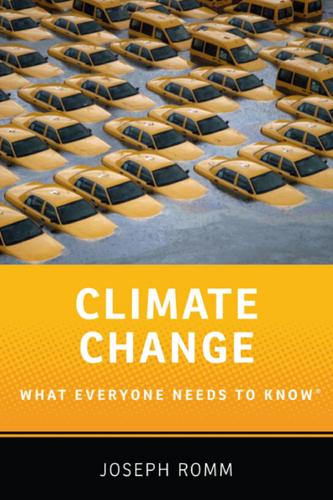
Climate Change
by
Joseph Romm
Published 3 Dec 2015
For instance, a major energy saver is that the car can now use “regenerative braking,” whereby the motor captures some of the energy that is lost to frictional heat in most vehicles when they slow down. Hybrids capture approximately half of the energy lost in braking. Another road for avoiding or reducing transportation-related carbon pollution is substitution. Substitution includes things like mass transit, bus systems, ridesharing, bike paths, and the like. Perhaps the biggest opportunity for substitution comes from the Internet. There are already indications that the Internet is beginning to affect the amount of total annual driving in industrialized countries like the United States, because more people telecommute, teleconference, and tele-shop on websites like Amazon.
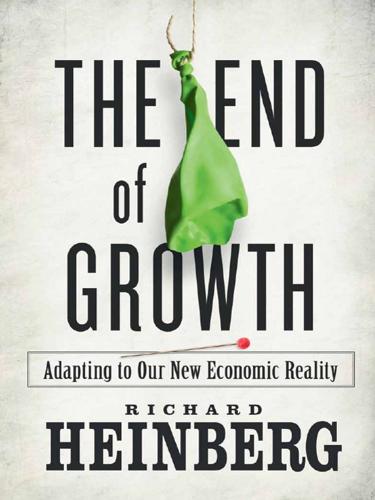
The End of Growth: Adapting to Our New Economic Reality
by
Richard Heinberg
Published 1 Jun 2011
Some possible examples of participating organizations and businesses: • A food co-op • A community food center, including commercial food-processing, food-preserving, and food-storage facilities available at low cost (or on labor-barter basis) to small-scale local producers15 • A community garden with individual beds available for seasonal rental, as well as communal beds growing produce for soup kitchens • A health center offering free or inexpensive wellness classes in nutrition, cooking, and fitness • A free (and/or barter) health clinic • Counseling and mental health services • A tool library, or an open-source customizable set of industrial machines16 • A work center that connects people who have currently unused skills with needs in the community — work can be compensated monetarily or through barter • A legal clinic • A credit union offering low-interest or even no-interest loans (on the model of the JAK bank in Sweden)17 • A recycling/re-use center that turns waste into resources of various kinds — including compost and scrap — and into re-manufactured or re-usable products • A co-op incubator • A local-currency headquarters and clearinghouse • A local-transport enterprise incubator, possibly including car-share, ride-share, and bicycle co-ops as well as a public transit hub • A shelter clearinghouse connecting available housing with people who need a roof — including rentals and opportunities for legal organized squatting in foreclosed properties, as well as various forms of space sharing • A community education center offering free or low-cost classes in skills useful for getting by in the new economy — including gardening, health maintenance, making do with less, energy conservation, weather-stripping, etc.
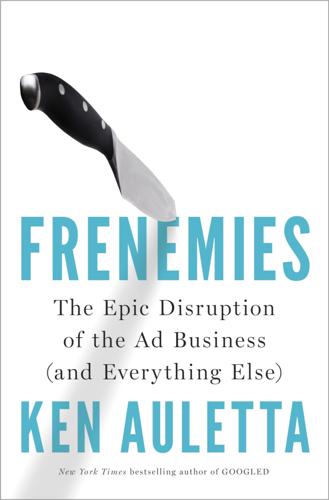
Frenemies: The Epic Disruption of the Ad Business
by
Ken Auletta
Published 4 Jun 2018
A popular and socially useful app aimed at reducing drunk driving fatalities was introduced by the Mindshare agency on behalf of Campari America, which makes Skyy Vodka, Wild Turkey, and Campari. They created in-app messages, sent Friday evenings to sports bars, containing a five-dollar discount coupon with the ride-sharing Lyft. Campari enjoyed a huge jump in its brand awareness, and probably saved lives. Among the more effective marketing ploys to reach younger consumers has been influencer marketing. Young influencers have their own channels or platforms on YouTube, Instagram, Facebook, Snapchat, as well as their own Web sites.
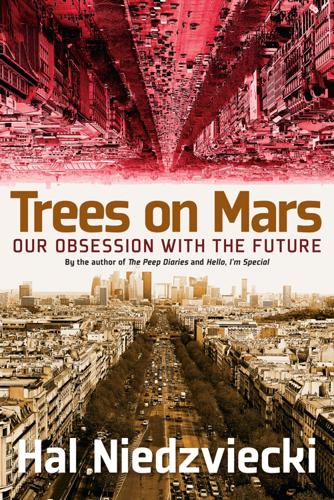
Trees on Mars: Our Obsession With the Future
by
Hal Niedzviecki
Published 15 Mar 2015
You can read about devices that will replace laboratory technicians and surgeons in hospitals. You can read about data-scanning and document-reading technology that is replacing lawyers and paralegals. Truckers and bus and subway and taxi drivers will all soon come under threat by self-driving technology (and are already coming under threat by ride-sharing apps). While everyone stared open-mouthed at Google’s experiments in driverless cars, companies like mining giant Rio Tinto forged ahead, introducing “40 robot trucks operating at three Australian mining locations” in 2014.72 Other mining companies are following suit. Meanwhile, in Europe, they are developing automated “road trains” on public highways and in the US, the little-known National Defense Authorization Act of 2001 requires that by 2015 “one-third of the operational ground combat vehicles are unmanned.”73 Teachers—especially at the higher education level—are under threat by distance learning coupled with interactive features that allow one single Nobel laureate to introduce ten thousand students to psychology.
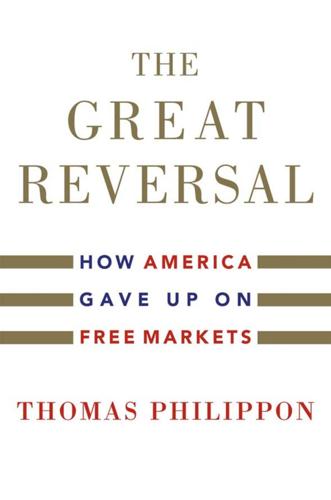
The Great Reversal: How America Gave Up on Free Markets
by
Thomas Philippon
Published 29 Oct 2019
Leaders of the new economy, just like leaders of the old economy before them, tend to overestimate the positive externalities from their activities. Rana Foroohar, writing in the Financial Times about the gig economy (August 2018), mentions that several years ago, Travis Kalanick, the founder and former chief executive of the ride-sharing company Uber, told a group of business executives that we were heading toward a world in which “traffic wouldn’t exist” within five years. Well, if recent experience in New York City is any guide, that is not happening. The average travel speed of cars in Midtown was 6.4 miles per hour in 2010.
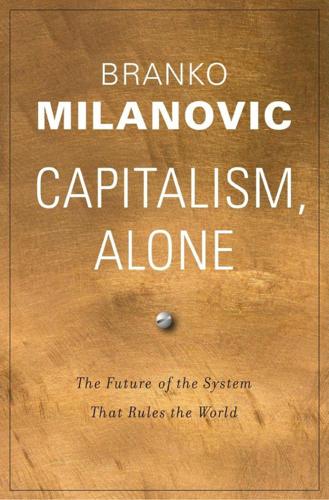
Capitalism, Alone: The Future of the System That Rules the World
by
Branko Milanovic
Published 23 Sep 2019
The growth of the gig economy commercializes our free time and things that we own but have not used for commercial purposes before. Uber was created precisely on the idea of making better use of free time. Limousine drivers used to have extra time between jobs; instead of wasting that time, they began to drive people around to make money. Now anybody who has some free time can “sell” it by working for a ride-share company or delivering pizza. A portion of leisure time that we could not commercialize (simply because jobs were “lumpy” and could not be squeezed into very short bits of free time) has become marketable. Likewise, a private car that was “dead capital” becomes real capital if used to drive for Lyft or Uber.
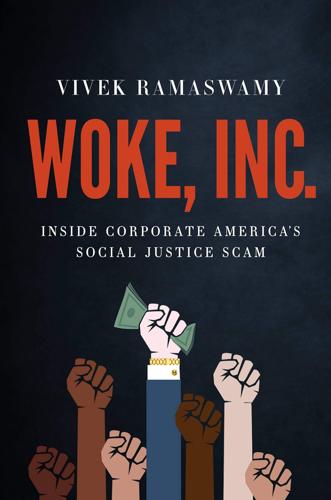
Woke, Inc: Inside Corporate America's Social Justice Scam
by
Vivek Ramaswamy
Published 16 Aug 2021
Khosrowshahi stated that Uber was donating millions to fight racism and that “Uber stands in solidarity with the Black community and with peaceful protests against the injustice and racism that have plagued our nation for too long.”1 The company announced that it would promote black-owned businesses on its ride-sharing app and tie executive pay to “diversity goals.” Lastly, Khosrowshahi wrote, “Let me speak clearly and unequivocally: Black Lives Matter.” In the weeks later, he pledged that Uber would be an “anti-racist company.” Meanwhile, at the exact same time, he was aggressively lobbying California to pass Proposition 22, which permits Uber to classify its drivers as independent contractors rather than as employees.

The Age of Surveillance Capitalism
by
Shoshana Zuboff
Published 15 Jan 2019
Optimized parking enforcement depends on Sidewalk’s algorithms “to calculate the most lucrative routes for parking cops,” earning cities millions of extra dollars that they desperately need but that arrive at the expense of their citizens. Cities are required to invest substantial public monies in Sidewalk’s technology platform, including channeling municipal funds earmarked for low-cost public bus service into “mobility markets” that rely on private ride-sharing companies such as Uber. The company insists that cities “share public transport data with ride-sharing companies, allowing Uber to direct cars to overcrowded bus stops.” The Flow Transit system integrates information and payment for nearly every kind of transport into Google Maps, and cities are obligated to “upgrade” to Sidewalk’s mobile payment system “for all existing transit and parking services.”
…
First, there is hardly an innocent app; if it’s not tracking you now, it may be doing so in the next week or month: “There is an entire industry based upon these trackers, and apps identified as ‘clean’ today may contain trackers that have not yet been identified. Tracker code may also be added by developers to new versions of apps in the future.” Second is that even the most innocent-seeming applications such as weather, flashlights, ride sharing, and dating apps are “infested” with dozens of tracking programs that rely on increasingly bizarre, aggressive, and illegible tactics to collect massive amounts of behavioral surplus ultimately directed at ad targeting. For example, the ad tracker FidZup developed “communication between a sonic emitter and a mobile phone.…” It can detect the presence of mobile phones and therefore their owners by diffusing a tone, inaudible to the human ear, inside a building: “Users installing ‘Bottin Gourmand,’ a guide to restaurants and hotels in France, would thus have their physical location tracked via retail outlet speakers as they move around Paris.
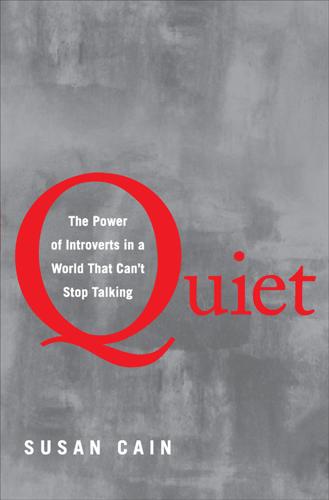
Quiet: The Power of Introverts in a World That Can't Stop Talking
by
Susan Cain
Published 24 Jan 2012
Newmark describes the site not as a business but as a public commons. “Connecting people to fix the world over time is the deepest spiritual value you can have,” Newmark has said. After Hurricane Katrina, Craigslist helped stranded families find new homes. During the New York City transit strike of 2005, Craigslist was the go-to place for ride-share listings. “Yet another crisis, and Craigslist commands the community,” wrote one blogger about Craigslist’s role in the strike. “How come Craig organically can touch lives on so many personal levels—and Craig’s users can touch each other’s lives on so many levels?” Here’s one answer: social media has made new forms of leadership possible for scores of people who don’t fit the Harvard Business School mold.

Together
by
Vivek H. Murthy, M.D.
Published 5 Mar 2020
And most of them told me how much more connected they felt to their colleagues and to the mission they served. In many companies, however, individualism dominates despite the fact that most work enterprise requires collective effort. The gig economy has doubled down on that individualistic thrust, as a growing number of people work alone as ride-share drivers, freelance consultants, and on-demand assistants. Meanwhile, the growing trend toward automation further threatens to undermine the human relationships that make work socially as well as economically rewarding. All of this is contributing to workplace alienation and loneliness. Gallup’s 2017 “State of the American Workplace”9 report revealed that just four in ten US employees strongly agree that their supervisor or someone at work seems to care about them as a person.

No Filter: The Inside Story of Instagram
by
Sarah Frier
Published 13 Apr 2020
Considering Zuckerberg’s reputation and that of the company were inextricably linked, they also asked these questions about Zuckerberg himself. Because Zuckerberg’s tour wasn’t helping the numbers, Facebook’s communications team gathered for an off-site meeting that spring of 2017, where Caryn Marooney, the PR head, presented research showing Facebook’s brand had a more unfavorable rating than that of Uber—a ride-sharing startup beset with scandal during that period. Emily Eckert, Systrom’s business lead, shot a look at Kristina Schake, the head of comms at Instagram. “Should I ask if they polled about Instagram’s brand?” she whispered, thinking it would be funny to make the room instantly uncomfortable about the discrepancy.

Arriving Today: From Factory to Front Door -- Why Everything Has Changed About How and What We Buy
by
Christopher Mims
Published 13 Sep 2021
By being a gigantic, highly visible company that offers above-market wages, plus health-care benefits starting on day one, Amazon is able to attract huge numbers of applicants. And because it relentlessly pursues automation to make the jobs of its workers ever simpler and more error-proof, it can attract and productively employ huge numbers of potential associates regardless of their level of skill or education. The genius of ride-sharing companies Uber and Lyft (not to mention delivery start-ups Postmates and Instacart) is that thanks to two-sided marketplaces run by software, route-planning algorithms, and GPS, all you need to know to work for these companies is how to drive a car. In the same way, the genius of Amazon is that all you need to possess in order to work in one of its warehouses are sensorimotor skills most people acquired by the time they’re in grade school.

Super Thinking: The Big Book of Mental Models
by
Gabriel Weinberg
and
Lauren McCann
Published 17 Jun 2019
Now, though, a better argument for peak oil is starting to form as the oil market’s underlying structure is proving to be unhealthy. The effects of climate change are looming. Solar energy is quickly becoming cost-competitive with oil on a global scale. Increasing cost-competitiveness of electric cars and the advent of autonomous vehicles and ride-sharing services are threatening to collapse the car and truck markets as we know them. All of these have the potential to create lasting effects on the oil market. Whether you are a market observer or a market participant, these structural changes are worth considering when you’re thinking about a possible new reality for the oil market.
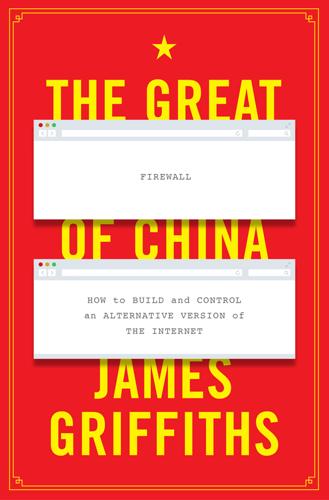
The Great Firewall of China
by
James Griffiths;
Published 15 Jan 2018
This, of course, was not done for benevolent purposes. As Chan writes, mobile payments were “the Trojan horse that allows WeChat to quickly onboard user payment credentials that then unlock new monetisation opportunities for the entire ecosystem”. Tencent has gobbled up restaurant recommendation apps, ride-sharing services and numerous other popular distractions to make sure that people never need to leave its app or the wider WeChat Pay system. In doing so, it has also created a privacy nightmare for Chinese users, with one app having access to everything from their selfies and status updates to their utility bills and hair salon appointments.
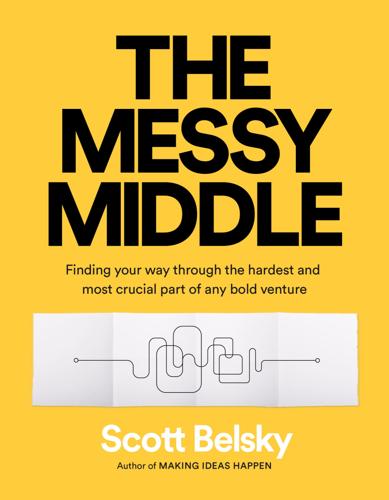
The Messy Middle: Finding Your Way Through the Hardest and Most Crucial Part of Any Bold Venture
by
Scott Belsky
Published 1 Oct 2018
KEEP YOUR OPPONENTS IN THE GAME Aside from being a source of energy for your own productivity, your competitors play a critical role in the health of your industry. Over time, every company in a field builds on one another and helps expand the potential size of the market. For example, in the ride-sharing space, Uber launched on-demand cars before Lyft, Lyft launched a carpooling option before Uber, then Uber launched a tool for drivers to pick up fares at the end of their shift on their way home before Lyft, then Lyft provided “prescheduled rides” before Uber, and the list goes on. Of course, the real winner here is the consumer, who gets a more evolved product offering from the endless competition between two companies.
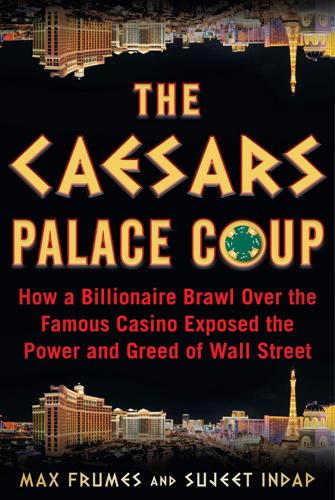
Palace Coup: The Billionaire Brawl Over the Bankrupt Caesars Gaming Empire
by
Sujeet Indap
and
Max Frumes
Published 16 Mar 2021
Even as TPG suffered from a string of disastrous pre-financial crisis LBOs, it would make a name for itself in 2010 in a new type of deal called “growth capital.” It had put money to work in the likes of Airbnb and Uber, tech “unicorns” who were expanding quickly but burning cash. These deals had new pitfalls. David Bonderman would get caught up in the ugly corporate drama at Uber, the ride-sharing company. The company was already under siege over what was widely considered a broken corporate culture instituted by founder Travis Kalanick. Bonderman resigned from the Uber board after he was caught making an irreverent, sexist comment to fellow director Arianna Huffington. If private equity firms had become more brazen in their tactics, hedge funds were not far behind.
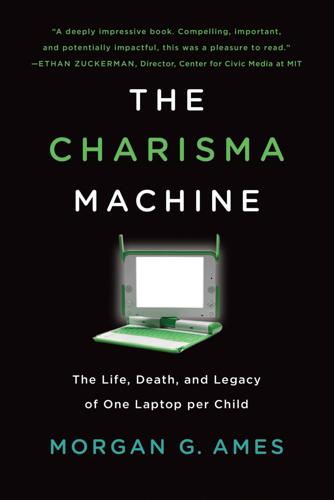
The Charisma Machine: The Life, Death, and Legacy of One Laptop Per Child
by
Morgan G. Ames
Published 19 Nov 2019
Negroponte largely shrugged off the sharp criticism his book and columns drew from some scholars, such as legal scholar Cass Sunstein, who has decried the echo chambers of Negroponte’s customized “Daily Me” newsfeed idea for polarizing the US political landscape, and cultural historian Fred Turner, who has linked Negroponte’s digital boosterism to the commodification of “New Communalist” utopianism in the 1970s and beyond.4 A decade later, in January 2005, Negroponte seemed to receive a relatively cool reception in Davos. His hallway pitch for a hundred-dollar laptop garnered a brief blog mention by Travis Kalanick, who was attending the World Economic Forum as a “technology pioneer” (and would later start the ride-sharing platform Uber), but this mention was more due to Negroponte’s other accomplishments than his idea for a hundred-dollar laptop. New York Times technology journalist John Markoff took up Negroponte’s pitch in more depth but concluded that Negroponte had not been given more of an official platform because the forum had moved on from the ideal of closing the digital divide to solving more “fundamental” inequalities.5 This tone changed considerably the following November, when Negroponte took the stage at the World Summit on the Information Society in Tunis.

Lonely Planet Kauai
by
Lonely Planet
,
Adam Karlin
and
Greg Benchwick
Published 18 Sep 2017
Allow more time during morning and afternoon rush hours and on weekends. Destination Miles Time Anahola 14 25min Hanalei 31 55min Hanapepe 18 30min Kapaʻa 11 20min Keʻe Beach 39 1¼hr Kilauea Lighthouse 25 40min Kokeʻe State Park 42 1½hr Poʻipu 14 25min Port Allen 17 30min Princeville 30 50min Waimea 23 40min Waimea Canyon 37 1¼hr Hitchhiking & Ride-Sharing Hitchhiking is technically illegal statewide and hitchhiking anywhere is not without risks. Lonely Planet does not recommend it. Hitchers should size up each situation carefully before getting in cars and women should be wary of hitching alone. People who do choose to hitchhike will be safer if they travel in pairs and let someone know where they are planning to go.

Bold: How to Go Big, Create Wealth and Impact the World
by
Peter H. Diamandis
and
Steven Kotler
Published 3 Feb 2015
As of July 2014, Crowdfunder has processed $105.2 million in deals with more than 11,000 companies listed and 62,000 investors registered on the site.11 AngelList is another equity platform that’s getting a lot of attention—and for good reason.12 Started in 2010 by Babak Nivi and Naval Ravikant, AngelList is a platform for startups to meet angel investors, and vice versa. Investors and startups can create profiles, list their investments, and connect to one another. Participants are some of the best in the business. For example, Uber, the ridesharing service discussed earlier, not only raised their first $1.3 million on the site, but also met investor Shervin Pishevar, who later lead a $32 million Series B for Uber at Menlo Ventures (Pishevar has also become one of the biggest investors on AngelList). The best news: you don’t have to invest millions of dollars to get into these deals.

The Uninhabitable Earth: Life After Warming
by
David Wallace-Wells
Published 19 Feb 2019
To imagine such a colony could offer material prosperity as abundant as tech plutocrats enjoy in Atherton is to live even more deeply in the narcissism of that delusion—as though it were only as difficult to smuggle luxury to Mars as to Burning Man. The faith takes a different form among the laity, unable to afford that ticket into space. But articles of faith are offered, considerately, at different price points: smartphones, streaming services, rideshares, and the internet itself, more or less free. And each glimmers with some promise of escape from the struggles and strife of a degraded world. In “An Account of My Hut,” a memoir of Bay Area house-hunting and climate-apocalypse-watching in the 2017 California wildfire season—which was also the season of Hurricanes Harvey and Irma and Maria—Christina Nichol describes a conversation with a young family member who works in tech, to whom she tried to describe the unprecedentedness of the threat from climate change, unsuccessfully.

Germany Travel Guide
by
Lonely Planet
If you’re in an accident, not wearing a seatbelt may invalidate your insurance. »Children need a child seat if under four years and a seat cushion if under 12; they may not ride in the front until age 13. »Motorcyclists must wear a helmet. »Mobile phones may be used only if they are equipped with a hands-free kit or speakerphone. »Pedestrians at crossings have absolute right of way over all motor vehicles. »Always watch out for cyclists when turning right; they have the right of way. »Right turns at a red light are only legal if there’s a green arrow pointing to the right. Hitching & Ride-Share Hitching (trampen) is never entirely safe in any country and we don’t recommend it. That said, in some rural areas in Germany poorly served by public transport – such as sections of the Alpine foothills and the Bavarian Forest – it is not uncommon to see people thumbing for a ride. If you do decide to hitch, understand that you are taking a small but potentially serious risk.
…
If you do decide to hitch, understand that you are taking a small but potentially serious risk. Remember that it’s safer to travel in pairs and be sure to let someone know where you are planning to go. It’s illegal to hitchhike on autobahns and their entry or exit ramps. A safer, inexpensive and ecoconscious form of travelling is ride-shares, where you travel as a passenger in a private car in exchange for some petrol money. Most arrangements are now set up via free online ride boards, such as www.mitfahrzentrale.de, www.mitfahrgelegenheit.de and www.drive2day.de. You can advertise a ride yourself or link up with a driver going to your destination.
…
Survival Guide DIRECTORY A-Z Accommodation Business Hours Climate Customs Regulations Discount Cards Electricity Embassies & Consulates Food Gay & Lesbian Travellers Health Insurance Internet Access Legal Matters Money Photography Post Public Holidays Telephone Time Toilets Tourist Information Travellers with Disabilities Visas Volunteering TRANSPORT GETTING THERE & AWAY Entering the Country Air Land Water GETTING AROUND Air Bicycle Boat Bus Car & Motorcycle Hitching & Ride-Share Local Transport Train LANGUAGE Top of section Directory A–Z Accommodation Germany has all types of places to unpack your suitcase. Standards are generally high, and even basic accommodation will likely be clean and comfortable. Reservations are a good idea between June and September, around major holidays, festivals, cultural events and trade shows.
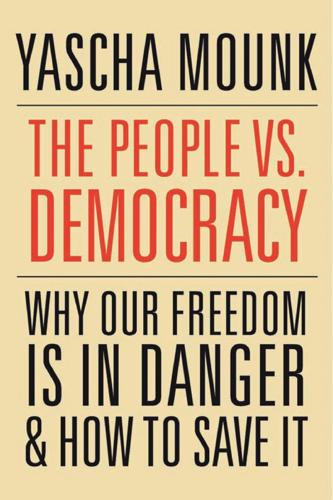
The People vs. Democracy: Why Our Freedom Is in Danger and How to Save It
by
Yascha Mounk
Published 15 Feb 2018
It seems relatively clear that governments should neither forbid the service, as some countries in Europe are proposing, nor allow it to circumnavigate key protections for their workforce, as most parts of the United States have effectively done. Rather, they should steer a forward-looking middle course—celebrating the huge increase in convenience and efficiency that ride-sharing offers while passing new regulations which ensure that drivers earn a living wage.65 But even if policymakers get that mix right, it seems unlikely that Uber drivers will ever derive the sense of identity and meaning from their work that factory workers once did. The reason for this is neither that their jobs will necessarily be less well-paid, nor that the service they provide is somehow less important.
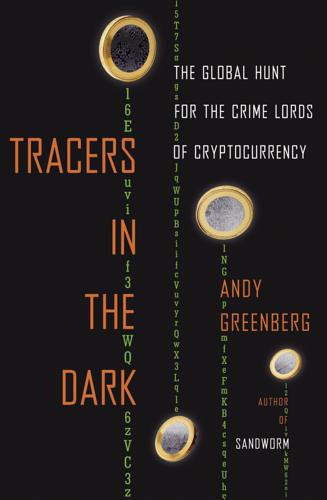
Tracers in the Dark: The Global Hunt for the Crime Lords of Cryptocurrency
by
Andy Greenberg
Published 15 Nov 2022
Over the years since Meiklejohn first became interested in questions of mass surveillance, following Snowden’s revelations in 2013, her interest in privacy has only grown. She’s adopted measures others might consider paranoid: She encrypts her communications and stays off social media. She avoids using Google whenever possible, opting for the more private alternative search engine DuckDuckGo. She doesn’t use ride-sharing services or food delivery apps. She turns off the GPS on her phone, or leaves it at home whenever she can. When it comes to cryptocurrency, though, Meiklejohn makes clear that her position is more nuanced than a simple moral opposition to “surveillance” of the blockchain. She’s concerned about a world of total, granular financial tracking, where governments and corporations can see every individual purchase and payment that a person makes.

Visit Sunny Chernobyl: And Other Adventures in the World's Most Polluted Places
by
Andrew Blackwell
Published 22 May 2012
The highway north of Fort McMurray is so small, relative to the thousands of workers who need to get to the work sites every day, that traffic can be terrible, especially during shift changes. So the oil sands companies hire buses to ferry workers to and from town. Ubiquitous red and white Diversified Transportation coaches ply the highway in pods. That an industry partly responsible for Canada blowing its emission-reduction goals has a thriving rideshare program is just one of the tidy, spring-loaded ironies that jump out at you here. The Suncor bus tour leaves from in front of the OSDC—I stole in for a quick taste of the Dig and Sniff—and it employs one of those same Diversified buses, re-tasked for our touristic needs. Mindy, our perky young tour guide, popped up in front and asked us to buckle our seat belts.

Blood and Oil: Mohammed Bin Salman's Ruthless Quest for Global Power
by
Bradley Hope
and
Justin Scheck
Published 14 Sep 2020
The company was in the news for all the wrong reasons, including governance and safety issues and a scandal involving senior executives spying on rivals. Uber was the Public Investment Fund’s first big deal, and he didn’t want it to go belly up—such bad public relations could harm the public view of his fledgling investment record. “I’m very worried,” Mohammed said. Masayoshi had wanted to avoid ridesharing but agreed to take a closer look. * * * Mohammed bin Salman’s worries didn’t stop there. He had deftly taken power, set the country off on the biggest transformation project since the discovery of oil almost eighty years earlier, and started spending billions of dollars on foreign investments.
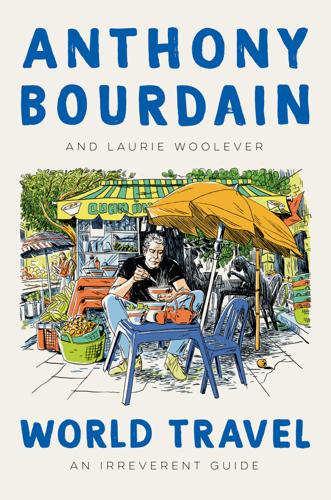
World Travel: An Irreverent Guide
by
Anthony Bourdain
and
Laurie Woolever
Published 19 Apr 2021
LOS is located about ten miles from Lagos city center, a trip that will take at least an hour, and up to three, depending on traffic, which can be fierce. Most sources advise arranging transport to your hotel ahead of time, to avoid the gantlet of drivers, money changers, and others who will swarm you upon exiting the terminal, especially if you look unsure. Arrange a shuttle from your hotel, if possible. Otherwise, rideshare services like Uber do operate in Lagos, and there are unmetered taxis available. You’ll need to negotiate the fare ahead of time, and pay in advance of the ride, which should be about 11,000 Nigerian naira/US$30. Tips are not necessarily expected, but a 10 percent tip for good service will be appreciated.

Blockchain Revolution: How the Technology Behind Bitcoin Is Changing Money, Business, and the World
by
Don Tapscott
and
Alex Tapscott
Published 9 May 2016
As the Internet of Things takes hold, these trends will go into hyperdrive. THE FUTURE: FROM UBER TO SUBER We’ve covered a lot of ground in this chapter. Now let’s pull all the strands of innovation together in just one scenario. Consider service aggregators like Uber and Lyft. Uber is an app-based ride-sharing network of drivers who are willing to give other people a lift for a fee. To use Uber, you download the Uber app, create an account, and provide Uber with your credit card information. When you use the app to request a car, it asks you to select the type of car you want and marks your location on a map.
…
Indeed, for Abra CEO Bill Barhydt, the staggering growth in the number of so-called sharing economy companies convinced him this wasn’t an issue. “People are willing to trust each other faster than they’re willing to trust an institution,” he said.47 The smart phone is key to all of this. In the same way the smart phone allows you to rent your apartment to someone else or rent your car to someone else or provide ride sharing to someone else, it can also be used as an ATM. Barhydt said, “It’s amazing what people are willing to do in a shared economy model and they’re just not doing it for money yet, maybe with the exception of peer-to-peer lending.” Moreover, he said, “It’s more important to us that you trust each other rather than Abra.
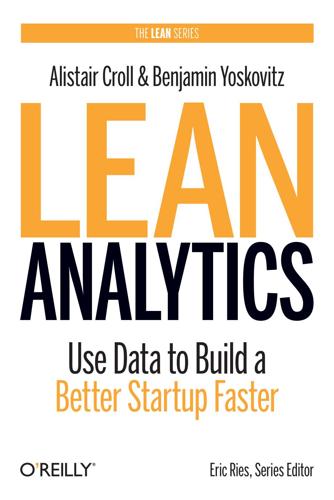
Lean Analytics: Use Data to Build a Better Startup Faster
by
Alistair Croll
and
Benjamin Yoskovitz
Published 1 Mar 2013
But rather than implementing it outright, they built a Concierge Minimum Viable Product (MVP) to quickly test their hypothesis. What Is a Concierge MVP? The Minimum Viable Product is the smallest thing you can build that will create the value you’ve promised to your market. But nowhere in that definition does it say how much of that offering has to be real. If you’re considering building a ride-sharing service, for example, you can try to connect drivers and passengers the old-fashioned way: by hand. This is a concierge approach. It recognizes that sometimes, building a product—even a minimal one—isn’t worth the investment. The risk you’re investigating is, “Will people accept rides from others?”

Competition Overdose: How Free Market Mythology Transformed Us From Citizen Kings to Market Servants
by
Maurice E. Stucke
and
Ariel Ezrachi
Published 14 May 2020
Median net worth of Gen X households at the same age was about $15,100”). 14.Martha Ross and Natalie Holmes, “Meet the Millions of Young Adults Who Are Out of Work,” Brookings Institution, April 9, 2019, https://brook.gs/2UveFHI. 15.To illustrate how the digital economy can shift the risk from the powerful tech platforms to the worker, consider Uber and Lyft drivers. When the ride-sharing app enters into a new city, it needs to attract drivers. The first few drivers initially have a lot of power, as Uber and Lyft need to hold onto them (while recruiting even more drivers). They could possibly demand better wages. But as Uber and Lyft keep adding drivers, each driver now becomes slightly more expendable.
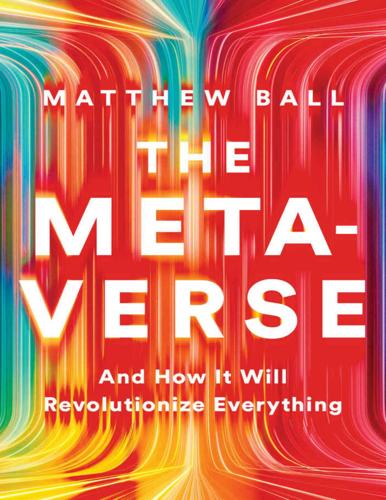
The Metaverse: And How It Will Revolutionize Everything
by
Matthew Ball
Published 18 Jul 2022
Should they? The Metaverse will further redefine the nature of work and labor markets. Right now, the majority of offshored jobs are menial and audio-only, such as technical support and bill collection. The gig economy, meanwhile, often takes place in person, but is not altogether dissimilar: ridesharing, housecleaning, dog walking. This will change as virtual worlds, volumetric displays, live-motion capture, and haptic sensors improve. A blackjack dealer need not live anywhere near Las Vegas, or even in the United States, to work at a casino’s virtual twin. The world’s best tutors (and sex workers) will program and then participate in hourly experiences.
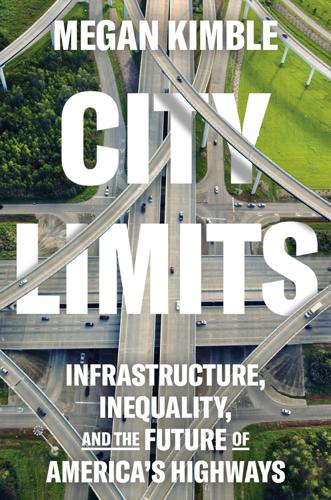
City Limits: Infrastructure, Inequality, and the Future of America's Highways
by
Megan Kimble
Published 2 Apr 2024
We’re waiting to hear how TxDOT voluntarily changes the project to make it less discriminatory.” In the meantime, homeowners like Modesti Cooper and Elda Reyes remained in limbo—unable to move, unable to settle. Modesti had planned to come to this gathering, which was just across the freeway from her house. But she had fallen asleep at 8:00 p.m. A month earlier, a rideshare driver had turned left onto a one-way street and T-boned her car. She walked away, seemingly fine. But within a few weeks, her back started bothering her, pain shooting up her spine. She went to see a chiropractor. “Weren’t you in a car accident?” he asked. Maybe that’s why her back was hurting.
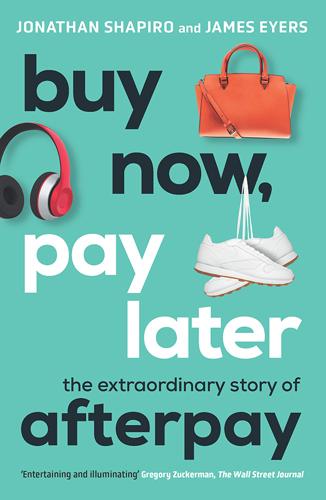
Buy Now, Pay Later: The Extraordinary Story of Afterpay
by
Jonathan Shapiro
and
James Eyers
Published 2 Aug 2021
In September 2018, Afterpay hired Damian Kassabgi, a former adviser to Labor prime ministers Julia Gillard and Kevin Rudd. He had been in Rudd’s office the day the National Consumer Credit Protection Act had been passed by the federal parliament in 2009. Kassabgi had also spent three years at Uber, the fast-growing ridesharing platform, as a director of public policy in Singapore, before moving to San Francisco. It was there that he had received an email from Andrew Charlton, who had also worked for Rudd, as an economic adviser. The Oxford-educated Rhodes Scholar had a wealth of policy experience and had represented the government at various global economic forums.

The Optimist: Sam Altman, OpenAI, and the Race to Invent the Future
by
Keach Hagey
Published 19 May 2025
A couple years later, he would publicly declare that preparing for the apocalypse, whether it was caused by a synthetic virus or rogue AI, was one of his personal hobbies. “I have guns, gold potassium iodide, antibiotics, batteries, water, gas masks from the Israeli Defense Force [sic], and a big patch of land in Big Sur I can fly to,” he told The New Yorker.10 Altman’s restless attention could not be held by companies trying to offer slightly better airport rideshares or HR software. “He’s a high-impact person who wants to do some somewhat crazy things,” Groom said. “He’s always been a deeply, deeply intellectual person. I think it comes from a pursuit of importance. As a person that smart, it’s hard to stay interested in consumer social apps.” Altman was so committed to his hard-tech vision that he went out and proactively recruited aviation and energy startups to join YC, something that the previous regime, already overwhelmed by the pile of applications flooding in, would never have considered doing.

Central Europe Travel Guide
by
Lonely Planet
Main post office ( 01802-3333; WDR Centre, Breite Strasse 6-26; 9am-7pm Mon-Fri, to 2pm Sat) Tourist office ( 2213 0400; www.koelntourismus.de; Unter Fettenhennen 19; 9am-8pm Mon-Sat, 10am-5pm Sun) Getting There & Away Air Cologne-Bonn airport (CGN; www.airport-cgn.de) is growing in importance. There are now direct flights to New York, while budget airlines German Wings and easyJet, among others, fly here. Car The city is on a main north–south autobahn route and is easily accessible for drivers. The popular German ride-share agency ADM-Mitfahrzentrale ( 194 40; www.citynetz-mitfahrzentrale.de; Maximinen Strasse 2) is near the train station. Train There are frequent RE services operating to Düsseldorf (€11 to €16, 25 to 30 minutes) and Aachen (€13.90, 50 minutes to one hour). Frequent EC, IC, or ICE trains go to Hanover (from €55, 2¾ to three hours), Frankfurt (from €39, one to 2¼ hours, three hourly) and Berlin (€104, 4¼ hours, hourly).
…
Bus Berlin is well connected to the rest of Europe by a network of long-distance buses. Most buses arrive at and depart from the Zentraler Omnibusbahnhof (ZOB; 302 5361; Masurenallee 4-6; Kaiserdamm/Witzleben) , opposite the Funkturm radio tower. Tickets are available from travel agencies or at the bus station. Car Lifts can be organised by ride-share agency ADM Mitfahrzentrale (www.mf24.de, in German) Hardenbergplatz ( 194 420; Hardenbergplatz 14; 9am-8pm Mon-Fri, 10am-2pm Sat, 10am-4pm Sun); Bahnhof Zoo ( 194 240; 9am-8pm Mon-Fri, 10am-6pm Sat & Sun) . Train Regular long-distance services arrive at the architecturally spectacular Hauptbahnhof (www.berlin-hauptbahnhof.de) , with many continuing east to Ostbahnhof.
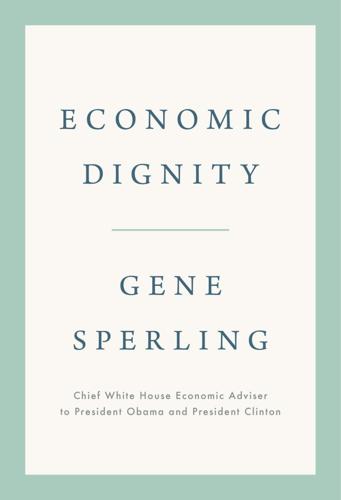
Economic Dignity
by
Gene Sperling
Published 14 Sep 2020
As UberX was launching in 2012, of the nearly two million in-home workers like housekeepers, childcare workers, and direct-care aides—overwhelmingly women and a majority people of color—only 12 percent received health insurance from their job, and only 7 percent received a pension plan.14 According to a survey by the National Domestic Workers Alliance, fewer than 2 percent of domestic workers in 2011 received retirement or pension benefits from their primary employer, and only 4 percent received employer-provided health insurance; 65 percent of domestic workers did not have any health insurance.15 Even today, few realize that before the ride-sharing revolution, the taxi drivers that people used for generations rarely had health-care coverage or qualified for unemployment insurance or any help during downturns and recessions.16 For example, a 2007 study of New York City cabdrivers found they were generally classified as independent contractors—just as Uber and Lyft drivers are now—and did not qualify for overtime pay despite typically working more than seventy hours a week.
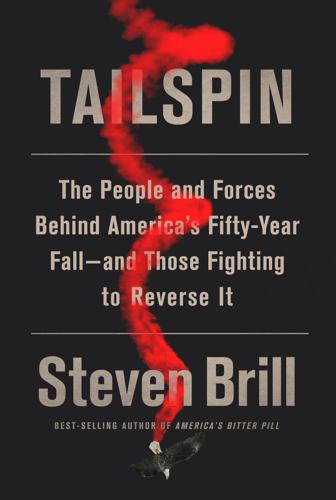
Tailspin: The People and Forces Behind America's Fifty-Year Fall--And Those Fighting to Reverse It
by
Steven Brill
Published 28 May 2018
.*3 How could it be that a clause keeping consumers out of court, or from bringing class actions even in arbitration, embedded in the pages of small print that everyone routinely agrees to online (for Amazon accounts, for example), or when they rent a car or sign up for a credit card or bank account is actually enforceable? Consumers do not knowingly agree to that, because they almost never read those pages of legalese. Besides, what choice do they have if every online retailer, credit card company, student loan processor, area nursing home or medical clinic, and car rental, ride-sharing, cell phone, and cable service has the same clause? What choice do they have if they are asked to sign an arbitration clause on the first day of a new job that prohibits them from bringing a suit based on violations of anti-discrimination laws that once were viewed as bedrocks of civil rights protections?

Good Economics for Hard Times: Better Answers to Our Biggest Problems
by
Abhijit V. Banerjee
and
Esther Duflo
Published 12 Nov 2019
A lot of the most successful inventions that came out of the high-tech revolution were “winner take all” products; there was no point in being on Myspace when the whole world was on Facebook, and Twitter is meaningless unless someone is retweeting your tweets. Technological innovations have also transformed existing industries, and created large benefits from being connected to industries where they used to be largely absent, like hospitality or transportation. For example, if drivers know that all passengers use a particular ride-sharing platform, they will choose to stay on that one. Conversely, if passengers know that all drivers use a particular platform, that is where they will go. These network effects explain in part the dominance of giant tech companies like Google, Facebook, Apple, Amazon, Uber, and Airbnb, but also of “old economy” behemoths, such as Walmart and Federal Express.
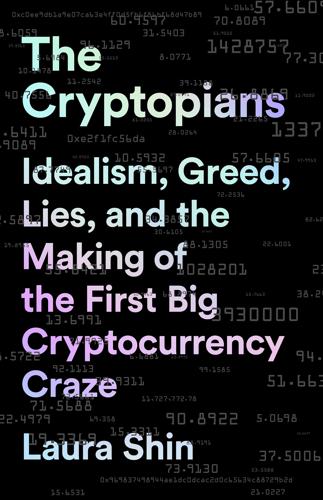
The Cryptopians: Idealism, Greed, Lies, and the Making of the First Big Cryptocurrency Craze
by
Laura Shin
Published 22 Feb 2022
A contract would be a little bit of code on Ethereum with an address and balance, and it, like a person, would be able to send and receive transactions. If someone sent a transaction to a contract, that would activate the contract’s code, changing the record of the contract or possibly causing the contract to send transactions. For instance, imagine you wanted to create a decentralized ride-sharing network—an Uber-like network of cars without the company Uber. You mint a new cryptocurrency—let’s call it CabCoin—and create CabCoin’s fund-raising contract on the Ethereum network. The contract could be programmed to send out the new token to anyone who sent it ether, at some predetermined ratio, such as ten thousand CabCoins per ether.

Taming the Sun: Innovations to Harness Solar Energy and Power the Planet
by
Varun Sivaram
Published 2 Mar 2018
Industrial facilities, like cement and steel plants, belch out soot from burning coal. Skyrocketing demand for transportation has also defiled the air and caused crippling congestion. Although fewer people own cars today than in decades past thanks to fleets of autonomous vehicles and convenient ridesharing, these advances have made it easier and cheaper than ever to get around; the resulting surge in travelers has packed more cars on the road at any given time.3 Many had hoped that electric vehicles might reduce local air pollution, and indeed they have risen to lead the pack in new vehicle sales.

The Controlled Demolition of the American Empire
by
Jeff Berwick
and
Charlie Robinson
Published 14 Apr 2020
Those without a card either by choice or by decree, will not be allowed to access online services including web browsing, online banking, booking travel, video chatting, social media, email, streaming video services, cloud storage, news, the new platform of television, online radio, navigation and other features for automobiles, rideshare services, and mobile payments. Good luck functioning in the modern world without an Internet ID Card. Want to post a video critical of the government on YouTube? Go for it, but their Internet ID Card might be shut off. Beyond the obvious overt censorship that comes with a system like this, there is also the unquantifiable self-censorship that inevitably accompanies these changes.

Lonely Planet Egypt
by
Lonely Planet
. $$$ Getting Around Not many people move around Sharm, instead opting to stay cocooned at a resort for the duration of their stay. Taxis are the fastest way to get around, but they drive a hard bargain – expect to be quoted a ridiculous price before negotiations begin. Hotels can also arrange taxis, albeit at inflated rates. Rideshare service London Cab Egypt (londoncabegypt.com) makes a good alternative, though the app is sometimes buggy. Microbuses regularly ply the main roads and charge LE5. Arrange airport transfers through your accommodation. Beyond Sharm El Sheikh Egypt’s first national park preserves a barren coastline of extraordinary beauty, the crown jewel of the Red Sea.

API Design Patterns
by
Jj Geewax
Published 19 Jul 2021
In particular, if there is a component that is updated much more frequently than the other components on a resource, keeping these together could lead to a significant amount of write contention, which could ultimately lead to write conflicts or, in extreme cases, data loss. For example, let’s imagine a ride-sharing API where there is a Driver resource. When the driver’s car is moving, we’ll want to update the resource’s location information as frequently as possible to show the latest location and the driver’s movement. On the other hand, more general metadata, such as the license plate, might not change very frequently, maybe not at all.
…
Put simply, there really isn’t any value added in having one singleton act as a parent to another. 12.3.4 Final API definition Taking all of the details from this implementation, we can define the API for our example service where we have Driver resources that have DriverLocation singleton sub-resources. This final API definition is shown in listing 12.1. Listing 12.1 Final API definition using the singleton sub-resource pattern abstract class RideSharingApi { static version = "v1"; static title = "Ride Sharing API"; @get("/drivers") ListDrivers(req: ListDriversRequest): ListDriversResponse; @post("/drivers") CreateDriver(req: CreateDriverRequest): Driver; @get("/{id=drivers/*}") GetDriver(req: GetDriverRequest): Driver; @patch("/{resource.id=drivers/*}") UpdateDriver(req: UpdateDriverRequest): Driver; @delete("/{id=drivers/*}") DeleteDriver(req: DeleteDriverRequest): void; @get("/{id=drivers/*/location}") GetDriverLocation(req: GetDriverLocationRequest): DriverLocation; @patch("/{resource.id=drivers/*/location}") UpdateDriverLocation(req: UpdateDriverLocationRequest): DriverLocation; } interface Driver { id: string; name: string; licensePlate: string; ❶ } interface DriverLocation { id: string; ❷ lat: number; long: number; updateTime: Date; } interface GetDriverRequest { id: string: } interface UpdateDriverRequest { resource: Driver; fieldMask: FieldMask; } interface ListDriversRequest { maxPageSize: number; pageToken: string; } interface ListDriversResponse { results: Driver[]; nextPageToken: string; } interface CreateDriver { driver: Driver; } interface DeleteDriverRequest { id: string; } interface GetDriverLocationRequest { id: string; } interface UpdateDriverLocationRequest { resource: DriverLocation; fieldMask: FieldMask; } ❶ Note that the driver’s location is not set as a location property.

Lonely Planet Sri Lanka
by
Lonely Planet
Taxis take from five to 20 minutes to arrive. Reliable companies include: Ace Cabs (%011-281 8818; www.acecabs.lk) Kangaroo Cabs (%011-258 8588; www.2588588.com) Offers service in small cars that dart through traffic. In addition, Uber is active in Colombo and is reliable and cheap. A local version of ride-sharing, PickMe, also offers app-based dispatching. Three-Wheeler Also known as tuk-tuks and tri-shaws, these are ubiquitous. Although you’re likely to get wet if it rains and the cramped back seats have limited views out, a ride in a three-wheeler is part of the Colombo experience. Drivers dart fearlessly between huge buses, an experience that's exhilarating for some and frightening for others.

Sweden Travel Guide
by
Lonely Planet
Add another 20kr for a refillable Access card. Taxi Taxis are readily available but fees are unregulated – be sure to check for a meter or arrange the fare first. Use one of the established, reputable firms, such as Taxi Stockholm (%15 00 00; www.taxistockholm.se) or Sverige Taxi (%020-20 20 20; www.sverigetaxi.se). The ride-sharing company Uber (www.uber.com) also covers Stockholm. Around Stockholm With royal palaces, vintage villages and Viking traces, the greater Stockholm county is certainly worth a venture or three. Conveniently, SL travel passes allow unlimited travel on all buses and local trains in the area.

A Generation of Sociopaths: How the Baby Boomers Betrayed America
by
Bruce Cannon Gibney
Published 7 Mar 2017
And this time, there will be no intermarriage between passenger and driver à la Lady Sybil and Tom, especially in the coming decades when the driver becomes a robot. The Dowager Countess of Grantham has become Lady Brenda of the Colonies, residing in Sun City, Arizona, couriered from aquarobics to gerontologist by rideshare and nursed by a contractor workforce, often composed of the immigrants her ex-governor Jan Brewer so detested.18 At least, however, there’s still staff; indeed, Lady Brenda can expect more, albeit younger, browner, poorer, and occasionally inanimate. The question of jobs and who fills them opens messy questions of trade and immigration, two fixtures of American policy that have recently returned to the forefront of debate.

Future Politics: Living Together in a World Transformed by Tech
by
Jamie Susskind
Published 3 Sep 2018
Social network proprietors are slowly taking steps to regulate their discussion spaces. Software engineers like those at loomio.org are trying to create ideal deliberation platforms using code.The Taiwanese vTaiwan platform has enabled consensus to be reached on several matters of public policy, including online alcohol sales policy, ridesharing regulations, and laws concerning the sharing economy and Airbnb.21 Digital fact-checking and troll-spotting are rising in prominence22 and the process of automating this work has begun, albeit imperfectly.23 These endeavours are important. The survival of deliberation in the digital lifeworld will depend in large part on whether they succeed.
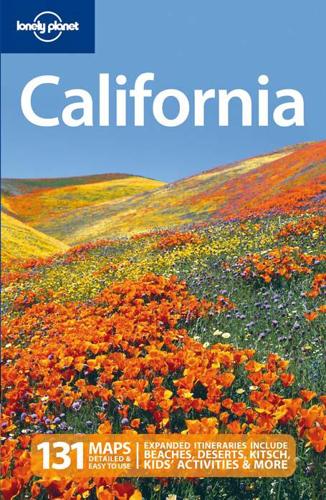
California
by
Sara Benson
Published 15 Oct 2010
Although riding Greyhound buses Click here lacks the romance of the rails, you’ll definitely meet a diverse cross-section of Californians who will give you insight into the real ‘state of the state,’ something drivers cocooned inside their cars don’t get. Cities sometimes offer car-free tourism incentives, as in Santa Barbara (go to www.santabarbaracarfree.org). While hitchhiking Click here is risky, ride-sharing using online bulletin boards like Craigslist (www.craigslist.org) is not uncommon. Craigslist also has listings for vacation rentals and housing sublets, short-term jobs, community activities and fee-free classified ads for anything you might want to buy, sell or barter during your trip, whether that’s a surfboard, a pair of skis or a used car.
…
Drivers tend to be suspicious of those with their thumbs out. Hitchhiking on freeways is prohibited. You’ll see more people hitchhiking (and drivers stopping) in rural areas than in cities, but these places aren’t any safer, and with sparse traffic, you may get stranded. A more reliable bet may be to check ride-share boards at hostels or online at www.craigslist.org, www.erideshare.com or www.digihitch.com – use these at your own risk too. In national parks, hitching to and from trailheads is not uncommon. Return to beginning of chapter LOCAL TRANSPORTATION Except in major cities, public transit is rarely the most convenient option, and coverage to outlying towns and suburbs can be sparse.

Future Crimes: Everything Is Connected, Everyone Is Vulnerable and What We Can Do About It
by
Marc Goodman
Published 24 Feb 2015
The trap had been set and the deplaning executive walked right into the arms of the faux chauffeur, all because a cardboard “screen” had been hacked. Several executives were kidnapped and others killed using the smart-phone research technique. Whatever the technical innovation, criminals are quick to adapt, either by mimicking legitimate Internet start-ups or by abusing their services. Borrowing a page from Uber, the ride-sharing phone app that connects crowdsourced drivers to passengers, a woman in the U.K. created her own SMS vehicle-on-demand service—for getaway cars. Sensing a market need by criminals without wheels, Nicole Gibson of Londonderry created a real-time “text a getaway driver” service to help robbers make a clean escape with the goods they had stolen from homes and businesses along the Irish border.

The Code: Silicon Valley and the Remaking of America
by
Margaret O'Mara
Published 8 Jul 2019
By the end of 2016, Android phones made up over 80 percent of the global market, and over half of Google’s revenue came from mobile.8 The entry into the phone market was even more profitable for Apple. Ten years after its introduction, over one billion iPhones had been sold worldwide. It was the bestselling consumer product in human history. Having a geolocated, camera-equipped supercomputer in millions of pockets jump-started whole new business categories, such as ride-sharing (Uber and Lyft), local search (Yelp), and short-term rentals (Airbnb). It further spiked the growth of social media, launching born-mobile apps (Instagram, Snapchat) and turning existing networks into even more potent vehicles for advertising and sales. The switch to mobile made Facebook’s user base grow even faster.

Moon Portugal
by
Carrie-Marie Bratley
Published 15 Mar 2021
The Cais do Sodré-Cacilhas crossing is the busiest. Commuter ferries are much cheaper than tourist boats, with single trips under €3. A charged 7 Colinas/Viva Viagem public transport card can be used to pay for tickets. Crossings provide awesome views of Lisbon’s iconic 25 de Abril Bridge and of the city. Taxi and Ride-Share Taxis in Portugal are plentiful and easy to spot: beige or black with a minty green roof. Each is identified with a number, usually under the driver’s side mirror. There are lots of taxi stands throughout the city at train and bus stations, central plazas, and near shopping malls. Hotel reception desks will call a taxi for you, or simply hail one on the street.

The Rough Guide to Mexico
by
Rough Guides
Published 15 Jan 2022
Yellow taxis should have a set fare from the border to Zona Río or La Revo, to the airport and to the bus station (check the prices on the board at the taxi rank; you can pay in US$). Similarly, taxis libres will usually charge a flat fee for trips within the centre. Uber (http://uber.com), the ride-sharing service, is available in Tijuana. By car All the major firms have desks at Tijuana airport: Budget 664 634 3303; Hertz 664 607 3950; Thrifty 664 683 8130. Accommodation See map page 417 Lucerna Paseo de los Héroes 10902 (Zona Río); http://hoteleslucerna.com. The six-storey main building and three annexes surround an outdoor pool with a mini waterfall.
…
Getting around By bus All city buses are the same fee (cash) or slightly less with a prepaid card, but if the bus is part of the flashy new Qrobús system you’ll need a prepaid card with a minimum amount already loaded to board (buy them at the Casa de la Cultura or the Antigua Presidencia Municipal). By taxi The city has been battling to introduce taxi meters for years, but until this is implemented make sure you agree the price with the driver in advance – the bus station should be the cheapest fare from downtown. The city is home to ride-sharing services Easy Taxi (http://easytaxi.com) and Uber (http://uber.com) – use of smartphones and the usual precautions apply. Accommodation See map page 264 As with most Bajío cities, there are plenty of good-value motel chains on the outskirts of Querétaro, but unless you are just passing through by car, or don’t mind taking a lot of taxis, opt for the far more convenient options in the centro histórico.

Lonely Planet Poland
by
Lonely Planet
To minimise that likelihood, it’s always best to order a taxi by phone rather than hail one in the street. Only use marked cabs and always ask for a receipt at the end of the ride. The meter should start at 7zł and rises by 2.30zł per kilometre, increasing to 3.50zł per kilometre from 10pm to 6am and on Sundays. App-based ride-share services like Uber and Bolt (Taxify) operate in Kraków and can be slightly cheaper than licensed taxis, though the quality and service vary greatly. iTaxi (%73 773 7737; www.itaxi.pl) From the website, download the app to your smartphone. Radio Taxi Barbakan (%609 400 400; www.barbakan.krakow.pl) Reliable radio-taxi service.

Lonely Planet Washington, Oregon & the Pacific Northwest
by
Lonely Planet
The Empire Builder travels to Chicago, the Cascades goes to Vancouver, BC, and the Coast Starlight runs between Seattle and Los Angeles, CA. 8Getting Around TO/FROM THE AIRPORT The MAX light-rail Red line takes about 40 minutes to get from the airport to downtown Portland (adult/child $2.50/1.25). Trains arrive approximately every 15 minutes. Taxis charge around $35 to $40 (not including tip) from the airport to downtown. For app-based ride-share service with Uber, Lyft and Wingz, there is a dedicated pick-up zone on the airport’s lower level. Walk outside toward island two, where you’ll find pick-up lines separated by company. With Uber and Lyft, you’ll receive a PIN number in the app upon requesting a ride. When it’s your turn in line, show this PIN to the next available driver, who will enter it into their system and pull up your destination information.

The Rough Guide to Australia (Travel Guide eBook)
by
Rough Guides
Published 14 Oct 2023
If booked in advance, a complimentary minibus service picks up from Southern Cross Station and drops off at most the hotels in the city centre and adjacent suburbs (Mon–Fri 6am–10.30pm, Sat & Sun 6am–7pm). Taxi A taxi from Melbourne Airport costs $55–70 to the city centre, $80 to St Kilda; a ride to the CBD will take around 30min. Various rideshare options, including Uber, are also available. Avalon Airport Jetstar Airways, a budget subsidiary of Qantas, operates a limited number of domestic flights from Avalon Airport, situated just off the Princes Freeway, 55km southwest of Melbourne (http://avalonairport.com.au). In recent years, AirAsia flights from Kuala Lumpur have also been landing here, as have Citilink places from Bali.
…
Night Bus Probably the most useful buses are the special after-midnight Night Bus services (every 30min Sat & Sun 12.30–5.30am), which depart from the CBD along 21 routes from the inner to the outer suburbs. CBD-bound buses depart suburban areas hourly throughout the night. See http://ptv.vic.gov.au for timetables and routes. By taxi Most locals use Uber or similar ridesharing apps to get around, but there are “proper” taxi ranks outside Flinders St and outside Spencer St stations; there are plenty to flag down around town, or call Silver Top Taxis (13 10 08) or Yellow Cabs (13 22 27). By Car Driving in Melbourne requires some care, mainly because of the trams.
…
Britz Campervan Hire (376 Sir Donald Bradman Drive; http://britz.com) has a full range of campervans and specialist off-road vehicles. Taxis The two standard taxi companies are Adelaide Independent Taxis (13 22 11) and Suburban Taxis (13 10 08) and 13cabs (13 22 27). Cab ranks can be found across the city and at most landmarks. A number of ride share operators are available, such as Uber and Shebah. Accommodation See map page 467 Adelaide has a good choice of budget and mid-range accommodation; you will need to book well in advance if planning to visit from January to March, when the city hosts a number of high-profile events, including Womadelaide and the Adelaide Festival.
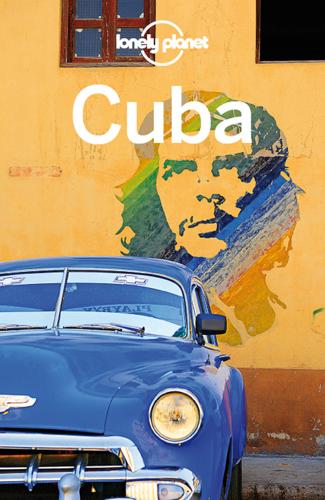
Cuba Travel Guide
by
Lonely Planet
In both 1994 and 2003, the Regla/Casablanca ferry was hijacked by Cubans trying to make their way to Florida. The 2003 incident involved tourists, so you can expect tight security. Hitchhiking The transport crisis, culture of solidarity and low crime levels make Cuba a popular hitchhiking destination. Here, hitchhiking is more like ride-sharing, and it’s legally enforced. Traffic lights, railroad crossings and country crossroads are regular stops for people seeking rides. In the provinces and on the outskirts of Havana, the amarillos (official state-paid traffic supervisors, so-named for their mustard yellow uniforms) organize and prioritize ride seekers, and you’re welcome to jump in line.

Lonely Planet Central Asia (Travel Guide)
by
Lonely Planet
,
Stephen Lioy
,
Anna Kaminski
,
Bradley Mayhew
and
Jenny Walker
Published 1 Jun 2018
Horses are available to rent for the river crossing beyond Jyrgal or for the full trip up to the lake, but a determined driver in a reliable 4WD can sometimes make it all the way to the lake's shore. Naryn Нарын %3522 / Pop 38,200 / Elev 2040m Wedged into a striking canyon, Naryn (Нарын) is an excellent place to hook up with other summer travellers to ride-share (and thus save money) on crossing the Torugart Pass to China, visiting Tash Rabat Caravanserai, heading up either of two more-adventurous routes to Son-Köl, or heading across the very rough road to Kazarman (for Osh). It's also the access point for adventures across the region – horse riding, hiking or bike trips galore.

Fall; Or, Dodge in Hell
by
Neal Stephenson
Published 3 Jun 2019
The blog was witty but a little too unsparing and scary-smart to attract a wide audience—she had maybe ten thousand followers at peak, but they had a tendency to age out as their kids got into their teens. Anyway, the era of the awesomely huge gleaming luxury crossover SUV was coming to an end. Like Tolkien’s elves fading away and going into the west, they were dissolving into the used market as many families were downsizing their fleets in favor of ride-sharing services, and then fully autonomous vehicles that were owned by no one and everyone. So by the time Maeve’s and Corvallis’s kids were in the nine to twelve range, she had stopped writing the blog and, intellectually/artistically, gone dark for a decade. And then suddenly the kids were out of the house, and Maeve, like a butterfly unfolding itself from a chrysalis, had begun to unfurl some of what she had quietly been making of herself in that darkness.

Artificial Intelligence: A Modern Approach
by
Stuart Russell
and
Peter Norvig
Published 14 Jul 2019
This involved up to 50,000 vehicles, cargo, and people at a time, and had to account for starting points, destinations, routes, transport capacities, port and airfield capacities, and conflict resolution among all parameters. The Defense Advanced Research Project Agency (DARPA) stated that this single application more than paid back DARPA’s 30-year investment in AI. Every day, ride hailing companies such as Uber and mapping services such as Google Maps provide driving directions for hundreds of millions of users, quickly plotting an optimal route taking into account current and predicted future traffic conditions. Machine translation: Online machine translation systems now enable the reading of documents in over 100 languages, including the native languages of over 99% of humans, and render hundreds of billions of words per day for hundreds of millions of users.
…
A high-level plan for a Hawaii vacation might be “Go to san Francisco airport; take flight HA 11 to Honolulu; do vacation stuff for two weeks; take HA 12 back to san Francisco; go home.” Given such a plan, the action “Go to san Francisco airport” can be viewed as a planning task in itself, with a solution such as “Choose a ride-hailing service; order a car; ride to airport.” Each of these actions, in turn, can be decomposed further, until we reach the low-level motor control actions like a button-press. In this example, planning and acting are interleaved; for example, one would defer the problem of planning the walk from the curb to the gate until after being dropped off.
…
In the latter case, note the recursive nature of the refinements and the use of preconditions. These examples show that high-level actions and their refinements embody knowledge about how to do things. For instance, the refinements for Go(Home, SFO) say that to get to the airport you can drive or take a ride-hailing service; buying milk, sitting down, and moving the knight to e4 are not to be considered. An HLA refinement that contains only primitive actions is called an implementation of the HLA. In a grid world, the sequences [Right, Right, Down] and [Down, Right, Right] both implement the HLA Navigate([1,3], [3,2]).

Seriously Curious: The Facts and Figures That Turn Our World Upside Down
by
Tom Standage
Published 27 Nov 2018
Why biggest isn’t fastest in the animal kingdom Geek speak: getting technical What is a brain-computer interface? The link between video games and unemployment What do robots do all day? Why 5G might be both faster and slower than previous wireless technologies Mobile phones are more common than electricity in much of sub-Saharan Africa Why self-driving cars will mostly be shared, not owned How ride-hailing apps reduce drink-driving What is augmented reality? Why we’re still waiting for the space elevator How astronomers spotted the first interstellar asteroid Why drones could pose a greater risk to aircraft than birds What is the point of spam e-mail? Why the police should wear body cameras Why tech giants are laying their own undersea cables Game theory: sport and leisure Why tennis players grunt Why board games are so popular in Nigeria How drones can keep beaches safe from sharks How football transfers work How St Louis became America’s chess capital What does “digitally remastering” a film really mean?
…
Although today’s experimental vehicles are modified versions of ordinary cars, with steering wheels that eerily turn by themselves, future AVs will have no steering wheel or pedals and will come in all sorts of shapes and sizes; pods capable of carrying six or eight people may prove to be the most efficient design. Rather than working everywhere, these pods will initially operate within geographically limited and well-mapped urban areas. And they will be shared “robotaxis”, summoned when needed using a ride-hailing app. The first self-driving vehicle you ride in will be shared, not owned, for a combination of technological and economic reasons. The technology needed to get vehicles to drive themselves has not yet been perfected, but it has improved enormously over the past decade and is on the verge of working reliably, at least in relatively simple urban environments with good weather.
…
Eventually, perhaps by 2030 or so, the cost of sensors will fall and it will no longer be prohibitively expensive to buy your own self-driving vehicle. The question then is whether you would want to. For people living in cities, robotaxis could offer a far cheaper and more convenient alternative to car ownership. At the moment, travelling by Uber or another ride-hailing service costs around $2.50 a mile; but take away the driver, and that cost could fall to $0.70 a mile, reckon analysts at UBS, a bank. That is less than the $1.20 a mile it costs, on average, to run a private car (when fuel, insurance, servicing and other costs are factored in). So if robotaxis really work as advertised, many urbanites could ditch their cars and save thousands of dollars a year.

Lonely Planet Turkey
by
Lonely Planet
If you take a taxi from the European side of the city to the Asian side over one of the Bosphorus bridges, it is your responsibility to cover the toll (₺7). The driver will add this to your fare. There is no toll when crossing from Asia to Europe. Uber has operated in the city since 2014, but at the time of writing was banned. The local rideshare company is BiTaksi (www.bitaksi.com/en). TRAM An excellent tramvay (tramway) service runs from Bağcılar, in the city’s west, to Zeytinburnu (where it connects with the metro from the airport) and on to Sultanahmet and Eminönü. It then crosses the Galata Bridge to Karaköy (to connect with the Tünel) and Kabataş (to connect with the funicular to Taksim Meydanı).

Internet for the People: The Fight for Our Digital Future
by
Ben Tarnoff
Published 13 Jun 2022
Parrott and Michael Reich, “An Earnings Standard for New York City’s App-Based Drivers,” Center for New York City Affairs at The New School, July 2018. (In December 2018, legislation passed to ensure that New York City’s ride-hail drivers earn a minimum wage of $17.22 an hour after expenses.) Finally, a 2020 study found that drivers in San Francisco earned less than the minimum wage: Chris Benner et al., “On-Demand and On-the-Edge: Ride-hailing and Delivery Workers in San Francisco,” UC Santa Cruz Institute for Social Transformation, May 20, 2020. Georgetown study: Katie J. Wells, Kafui Attoh, and Declan Cullen, “The Uber Workplace in DC,” Georgetown University Kalmanovitz Initiative for Labor and the Working Poor, April 2019. 130, Inspired by Uber’s example … “Uberization”: Alexis Madrigal and his colleagues at The Atlantic assembled a spreadsheet of 105 “Uber-for-X” companies.
…
For those who occupy or orbit these new zones of power, privatization is a success story. For those who don’t, the picture is more complicated. 8 Inclusive Predators Doug Schifter spent more than forty years driving for a living in New York City. Then, in 2011, Uber came to town. Over the next several years, the company flooded the city with ride-hail cars. Schifter’s income as a black-car driver collapsed, even as he began working 120-hour weeks. He maxed out his credit cards, missed a mortgage payment, and started moving his things into storage. Finally, on the morning of February 5, 2018, he drove up to City Hall and killed himself with a shotgun.
…
In city after city, this pressure has enabled Uber to evade long-standing municipal rules regarding fares and the number of vehicles allowed on the road. Equally important is the limitless supply of money provided by investors, which can be used to bankroll lobbying, as well as to subsidize the cheap fares that undercut existing livery drivers like Schifter. Finally, the legal classification of ride-hail drivers as independent contractors is a pillar of the business model, since it keeps labor costs low. Each of these elements is inseparable from the internet. The fact that Uber is an internet company has helped it persuade politicians and regulators that it should be exempt from a century of taxi regulations—indeed, that it represents a novel corporate form, a “Transportation Network Company.”

The Smartphone Society
by
Nicole Aschoff
Today Alibaba is among the world’s ten biggest companies by market capitalization and can count a sprawling online marketplace, digital video, music, sports, an online payments system (called Ant Financial), and artificial intelligence research in its portfolio. Baidu and Tencent are Alibaba’s peers. Their stakes in ride-hailing apps, media, food delivery, and e-commerce have made China the world leader in mobile payments. According to the McKinsey Global Institute, one-third of the world’s 262 “unicorns”—start-ups valued at more than $1 billion—are Chinese.13 Tech titans are not the only large and in-charge companies.
…
For information on ongoing campaigns see the website of the New York Taxi Workers Alliance, http://www.nytwa.org. See also Fitzsimmons, “Uber Hit with Cap as New York City Takes Lead in Crackdown.” Uber responded to the cap by suing the city in February 2019 to overturn the cap. The case was ongoing when this book went to press. For more, see Hawkins, “Uber Sues to Overturn New York City’s Cap on New Ride-Hail Drivers.” 6. Roose, “After Uproar, Instacart Backs Off Controversial Tipping Policy.” 7. Siegel, “DoorDash to Change Its Controversial Tipping Policy After Outcry.” 8. “Tech’s Invisible Workforce,” Silicon Valley Rising, March 2016. 9. Wagner, “Facebook to Raise Pay for Thousands of Contract Workers, Including Content Moderators.” 10.
…
Sexting Panic: Rethinking Criminalization, Privacy, and Consent. Urbana: University of Illinois Press, 2015. Hassan, Adeel. “Family of Jordan Edwards Says 15 Years Is Not Enough for Officer Who Murdered Him.” New York Times, August 31, 2018. Hawkins, Andrew J. “Uber Sues to Overturn New York City’s Cap on New Ride-Hail Drivers.” The Verge, February 15, 2019. Helft, Miguel. “Meet the Man Who Derailed Facebook’s Plan to Provide Free Internet in India.” Forbes, February 25, 2016. Hillis, Ken. Online a Lot of the Time: Ritual, Fetish, Sign. Durham, NC: Duke University Press, 2009. Hochschild, Arlie Russell. The Time Bind: When Work Becomes Home and Home Becomes Work.

The Power Law: Venture Capital and the Making of the New Future
by
Sebastian Mallaby
Published 1 Feb 2022
Finally and most tellingly—since this lies at the heart of what the industry presents as its core function—venture capitalists must reckon with their record as the stewards of tech companies. VCs have a proud tradition of building fledgling startups. They are less successful at governing multibillion-dollar unicorns such as the office-rental company, WeWork, or the ride-hailing giant, Uber. In short, venture capitalists are far from perfect. Yet even as the public mood has turned against the tech-industrial complex, the positive case for venture capital has grown more compelling. Until relatively recently, economists explained why some geographies grow wealthier than others by examining country-level differences: successful nations benefit from sound rule of law, stable prices, educated people, and so on.
…
In the years that followed, Benchmark repeatedly found that reckless later-stage investors seized effective control of its portfolio companies by stumping up tens of millions of dollars. Unable to muster equivalent sums, Benchmark lacked the muscle to protect startups from the hubris that came with so much capital. In two notorious cases—the ride-hailing company Uber and the office-rental giant WeWork—Benchmark lived through the painful spectacle of its wards going off the rails.[73] Such was the limitation of the cottage-industry model. Chapter Eight Money for Google, Kind of for Nothing One day in August 1998, two Stanford PhD students sat on a porch in Palo Alto.
…
Four of the six early PayPal employees had built bombs in high school.[46] Elon Musk spent half the earnings from his first startup on a race car; when he crashed it with Thiel in the passenger seat, all he could do was laugh about the fact that he had failed to insure it. Such extremes and eccentricities were actually good signs, Thiel contended; VCs should celebrate misfits, not coach them into conformity. A few years into its existence, Founders Fund made an expensive error by refusing to invest in the ride-hailing startup Uber; its bratty founder, Travis Kalanick, had alienated both Howery and Nosek. “We should be more tolerant of founders who seem strange or extreme,” Thiel wrote, when Uber had emerged as a grand slam.[47] “Maybe we need to give assholes a second and third chance,” Nosek conceded contritely.[48] If Thiel opposed VC mentoring of founders lest it suppress quirky genius, he also disliked it for another reason.
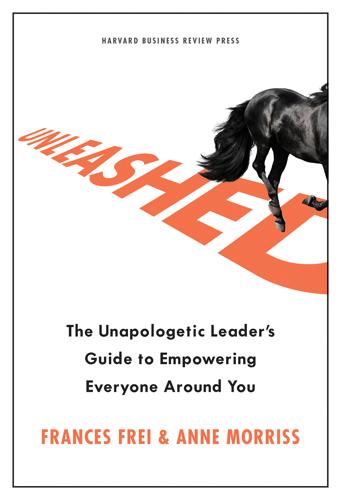
Unleashed
by
Anne Morriss
and
Frances Frei
Published 1 Jun 2020
Let’s begin. 2 TRUST On a Friday afternoon in the spring of 2017, Travis Kalanick, then CEO of Uber, walked into a conference room at the company’s minimalist Bay Area headquarters. A wildly talented deputy, Meghan Joyce, general manager for the United States and Canada, had orchestrated the meeting. Joyce was convinced that we could be helpful, but that was not our starting point. From everything we’d read about the iconic, ride-hailing startup, it looked like a company with little hope of redemption.a First, some context: Uber had disrupted at least one industry, but its astonishing success seemed to come at the price of basic decency. A #deleteUber campaign began shortly after the company appeared to take advantage of a taxi strike in response to President Trump’s travel ban.
…
Uber Technologies Inc., Financial Times, September 10, 2017, https://www.ft.com/content/a64de182-93b2-11e7-a9e6-11d2f0ebb7f0. 30. Kara Swisher, “Uber’s Culture Fixer, Frances Frei, Is Leaving the Company,” Vox, February 27, 2018, https://www.vox.com/2018/2/27/17058348/uber-culture-frances-frei-depart-travis-kalanick-dara-khosrowshahi-harvard-business-school. 31. Mike Isaac, “Uber Sells Stake to SoftBank, Valuing Ride-Hailing Giant at $48 Billion,” Technology, New York Times, December 28, 2017, https://www.nytimes.com/2017/12/28/technology/uber-softbank-stake.htm. Chapter 3 1. We are incredibly grateful to the amazing Professor Emma Dench of Harvard University for introducing us to Valerius Maximus and many of her other long-departed friends.
…
Go back to your triangle and put a plus sign next to your anchor. If you chose logic as your anchor, for example, then your triangle should now look like the one in figure 2-3. FIGURE 2-3 Which is your trust “anchor”? Test your hypothesis Our advice is to bring at least one other person along for your diagnostic ride. Sharing your analysis can be clarifying—even liberating—and will help you test and refine your hypothesis. Ideally, pick a thought partner who knows you well. About 20 percent of self-assessors need a round of revision, so choose a partner who can keep you honest if your analysis is off. Exchanging wobble stories with another person can also mediate any shame you may associate with losing trust.

Gambling Man
by
Lionel Barber
Published 3 Oct 2024
As for the $500,000, he insists it covered an oil investment.13 The campaign to destroy Nikesh Arora’s reputation began with a bogus complaint from largely anonymous international shareholders. They claimed the ex-Googler had received kickbacks from companies SoftBank invested in as the firm poured money into Indian start-ups. These included the e-commerce company Snapdeal.com, the ride-hailing service Ola and the real-estate search portal Housing.com. Separately, Arora, along with two other private-equity firms, Apax and TPG, found himself under scrutiny for arranging a non-SoftBank investment in a Greek telecoms company, Wind Hellas. In April, the shareholders of Hellas went public in a letter to the board.
…
For all Neumann’s talk about profit with purpose, he stood to gain several hundred million dollars, one of the most lucrative sales of stock by any start-up CEO. Once the paperwork was signed, Masa had a surprise in store. He retreated to his private dining room where Cheng Wei, founder of Didi Chuxing, the number-one ride-hailing app in China, sat waiting. Didi had beaten its US rival Uber in a brutal price war. Having backed both sides, Masa was now promising a further $6bn to power Didi’s global ambitions. Adopting the role of father-mentor, Masa said Neumann had lessons to learn from the shoot-out in China. ‘In a fight, who wins – the smart guy or the crazy guy?’
…
One partner at Andreessen Horowitz remembers Misra wandering in sockless, vaping an electronic cigarette and behaving like he owned the place. ‘I remember thinking: how did this happen?’ said the VC partner. ‘All of these guys are full of shit.’ Around this time, Bill Gurley, a six-foot-nine former college basketball star, remembers Masa muscling into a fund-raising event for Uber, the ride-hailing firm. Gurley’s VC firm Benchmark had led the Series A financing for Uber six years earlier. Masa snapped up a 15 per cent stake, diluting Benchmark’s position; but not before threatening to put his money into Lyft, Uber’s chief rival in the US. Gurley likened such conduct to asking for protection money.

Mexico - Culture Smart!
by
Maddicks, Russell;Culture Smart!;
Published 15 Nov 2023
Atlas Turístico de México An app and website that covers the whole country with maps and routes, as well as information on destinations and attractions. DiDi The Chinese ride hailing app became popular during the pandemic and is now the main rival to Uber. Ecobici An app to navigate the bicycle rental system in Mexico City, with maps showing available bike hubs. inDriver Another taxi app popular in Mexico. It allows you to negotiate a price with the driver, but you have to pay in cash. Moovit A one stop route-planning app. TheCity.mx A comprehensive guide to Mexico City. Uber The popular ride-hailing app doesn’t cover the whole country and drivers are restricted from pick-ups and drop-offs at some airports, but where the app does work it can cut journey costs considerably.
…
EXPRESS KIDNAPPING There has been a rise in recent years of so-called “express kidnappings” (secuestro exprés), in which taxi passengers are held up by one or more assailants, robbed of their valuables, taken to ATMs or banks and forced to empty their accounts over a short period of time before being released. Avoid being a target by traveling in a group, and calling a taxi service or using a ride-hailing app rather than hailing one in the street. If you are involved in an express kidnapping, it is best to give your assailants what they want without a fight. TIPS ON STAYING SAFE • Travel with others. You are safer in a group. • Leave your gold chains, diamond rings, and expensive watches at home, and keep digital cameras and cell phones out of sight
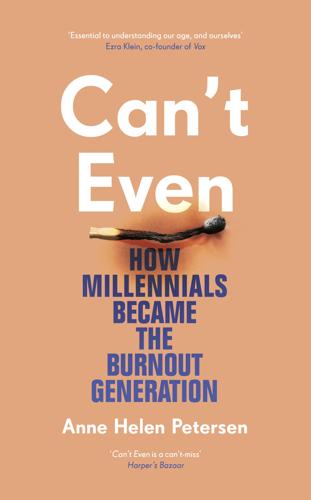
Can't Even: How Millennials Became the Burnout Generation
by
Anne Helen Petersen
Published 14 Jan 2021
Like so many other startup companies of the post-recession era, Uber was founded on the premise of disruption: taking an old industry, oftentimes one that was a bit clunky, and analog, but that paid its workers a living wage, and using digital technologies to change it into something sleeker, easier, and cheaper that would funnel money to the disrupting company. Uber, along with Lyft, Juno, and a handful of other ride-hailing companies, disrupted what has traditionally been known as the “livery” business: picking people up and taking them places. Their popularity launched an entire cottage industry of services reconceptualizing quotidian tasks: Rover disrupted pet care. Airbnb disrupted lodging. Handy disrupted handymen.
…
So they softly urge, manipulate, and command it: through notifications, but also through gamification, which use game-like elements to draw you into otherwise very un-fun activities, like following my Delta Frequent Flyer progress. These days, the phone is where most millennials do our bank account checking, Amazon ordering, ride hailing, route finding, music playing, TikTok watching, photo taking, secondhand clothes selling, recipe finding, sleeping baby monitoring, and ticket (plane, movie, bus, concert) storing. Some of those tasks can still be done off the phone, but they’re increasingly designed to be performed through an app.
…
See gig and freelance work Free Time (Hunnicutt), 183 Freudenberger, Herbert, xvi Friedan, Betty, 209 Fringe Hours (Turner), 241 Gates Foundation, 240 Generation of Sociopaths, A (Gibney), 16 Gen X, x, 3, 52 Gen Z, x, 2, 147, 163 Gibney, Bruce, 16 gig and freelance work employee status, 147 lack of benefits, 139 lifestyle choice, 114 logic of, 138 stress and anxiety, 144 worker exploitation, 69, 102, 139, 141 See also Uber and ride-hailing companies Gigged (Kessler), 143, 145 Gilmore Girls (TV series), 70 Girl, Stop Apologizing (Hollis), 241 Goldman Sachs, 125, 127 Google, 108, 157 Google Doc, 150, 172 Google Maps, 152 Gottlieb, Dylan, 19 Great Compression, 7, 98–99, 184 Great Depression, xvi, xix, xxi, 1, 8–9, 14, 113 Great Recession aftermath culture, 123 effect on journalism, 139–40 effect on millennials, vii, xviii, xxv, 77–78 jobs lost, 137 temporary employment, 102 Great Risk Shift, The (Hacker), 11 Greatest Generation, 7, 14 Gregg, Melissa, 186 Grit, 129 Grubb, W.
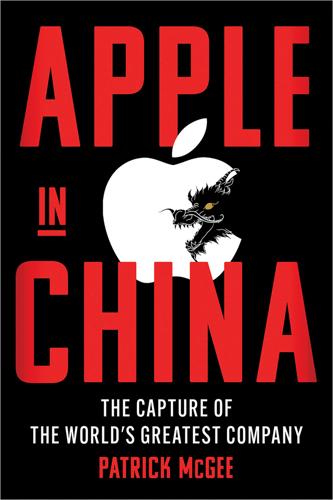
Apple in China: The Capture of the World's Greatest Company
by
Patrick McGee
Published 13 May 2025
CHAPTER 32 BUREAUCRATIC PROTECTION Jean Liu’s meeting in Cupertino was already shaping up to be the most important of her career when, just days before in April 2016, China’s regulators shut down Apple’s iTunes and iBooks stores. For Liu, the thirty-seven-year-old president of Didi Chuxing, a ride-hailing start-up, the abrupt move made for impeccable timing. Didi was spending truckloads of money in a battle for supremacy with Uber, and the cash burn was only going to get worse if Didi opted to invest in autonomous driving technology. Liu needed some financial help. But more than that; she wanted Apple’s endorsement.
…
The COO-turned-president of Didi had joined the company in July 2014 when it was already two years old, yet her work was so important that she’d earned the title of cofounder. Born in China—her given name is Liu Qing—and educated in computer science, Liu had spent more than a decade at Goldman Sachs, climbing from junior analyst to managing director in Hong Kong. When she first became interested in Didi, it was just one of thirty ride-hailing companies in China. Not having a driver’s license in Beijing, Liu found it difficult to navigate the city with her three children and was thankful for Didi’s service. She tried to invest on behalf of Goldman, but Didi had little problem raising money in its early years and rebuffed her. Eventually she told them, “Well, at least let me join you.”
…
“Jean has… built a company that is dedicated to serving the community around it,” he wrote in 2017. “By analyzing commuter patterns the way oceanographers track the tides, Didi may help traffic jams go the way of the flip phone.” Here to Stay Just twenty-two days after their meeting, Apple announced a $1 billion investment in the ride-hailing start-up. Liu said it happened “like lightning.” The investment stunned tech observers. Sure, Apple had acquired plenty of companies outright in the past, and it certainly had the cash, but the Cupertino behemoth almost never took a stake in a start-up—especially not an app developer that competed against rivals within its own ecosystem.
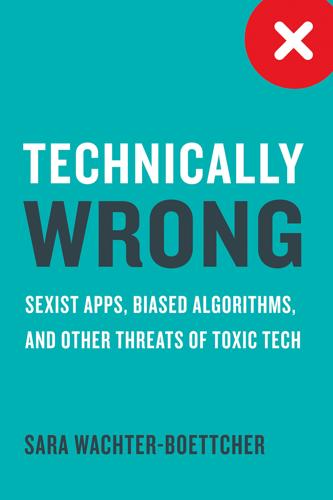
Technically Wrong: Sexist Apps, Biased Algorithms, and Other Threats of Toxic Tech
by
Sara Wachter-Boettcher
Published 9 Oct 2017
It’s a story that tech loves to tell about itself, and for good reason: the more everyone on the outside sees technology as magic and programmers as geniuses, the more the industry can keep doing whatever it wants. And with gobs of money and little public scrutiny, far too many people in tech have started to believe that they’re truly saving the world. Even when they’re just making another ride-hailing app or restaurant algorithm. Even when their products actually harm more people than they help. We can’t afford that anymore. Ten years ago, tech was still, in many ways, a discrete industry—easy to count and quantify. Today, it’s more accurate to call it a core underpinning of every industry.
…
As we’ll see in this chapter, every bit of the design process—from the default settings we talked about in Chapter 3, to the form fields in Chapter 4, to the cute features and clever copy in Chapter 5—creates an environment where we’re patronized, pushed, and misled into providing data; where the data collected is often incorrect or based on assumptions; and where it’s almost impossible for us to understand what’s being done by whom. DEFAULTING TO DECEPTION In November of 2016, ride-hailing company Uber released a new update to its iPhone app—and with it, a new detail you might have glossed right over while you were tapping “accept” and “continue”: rather than tracking your location while you’re using the app (which makes sense, since GPS location helps your driver find you easily), Uber now defaults to tracking your location all the time, even when the app is closed.
…
By Monday, he’d hired former attorney general Eric Holder’s law firm to investigate sexual harassment at the company, and he said that investor Arianna Huffington and others would be reviewing findings shortly.12 Within days, two more stories of sexual harassment and humiliation at Uber had been published, and countless others confirmed that the company culture was as they described it: aggressive, degrading, and chaotic. In the middle of the mess, a new hire—Amit Singhal, Uber’s vice president of engineering—resigned, after reports surfaced that he’d been pushed out of Google a year before because of sexual harassment allegations.13 It wasn’t the first PR disaster, or the last, to send the ride-hailing company into a tailspin in the first months of 2017. Just weeks earlier, Bloomberg had published a feature story on Uber drivers who couldn’t afford housing and spent most nights sleeping in their cars.14 In late January, Kalanick had gotten heat for joining President Trump’s advisory council.

Moon Mexico City: Neighborhood Walks, Food & Culture, Beloved Local Spots
by
Julie Meade
Published 7 Aug 2023
Getting around Mexico City on public transportation is cheap, easy, efficient, and generally safe. Easy-to-use transport options include buses, microbuses, Metro, Metrobús, and light-rail, though most visitors find the Metro and Metrobús systems are all they need to get everywhere they want to go. Secure radio taxis are an easy and inexpensive way to get around, as is ride-hailing service Uber. Within each neighborhood, walking is the best way to see everything. Given the accessibility of public transit, driving is not recommended for short trips to the city. RESERVATIONS It is generally not necessary (or even possible) to make reservations for cultural sights and museums in Mexico City.
…
The biggest reason to visit is the museum’s striking contemporary design by Pritzker-winning Japanese architect Toyo Ito. If you can take your eyes off the architecture, the most interesting rooms are those dedicated to Puebla’s baroque centro histórico. The museum is about seven kilometers outside the city center; the easiest way to get there and back is with ride-hailing app Uber. RESTAURANTS Start your food tour at one of Puebla’s oldest markets, the Mercado Melchor Ocampo El Carmen (21 Oriente 209; 7am-7pm daily). This is the place to try cemitas, Puebla’s version of the torta, or sandwich, filled with meat and often garnished with the fragrant herb pápalo.
…
In addition to city-licensed taxis, most high-end hotels work with private car services; these are the most expensive cabs by far, usually charging a flat rate between destinations, though they are safe and can be very comfortable. The cars are usually unmarked four-door sedans, and the drivers often speak some English. Some are licensed tour guides as well, who will offer a flat rate for a day trip to places like Teotihuacán or Xochimilco with tour services included. RIDE-HAILING SERVICES Uber (www.uber.com) operates in Mexico City, and is generally a safe, pleasant, and inexpensive way to get around. Uber charges a flat rate between destinations and often arrives within minutes. In order to use the service, you need to use the Uber app on your phone, which is connected to a credit card.
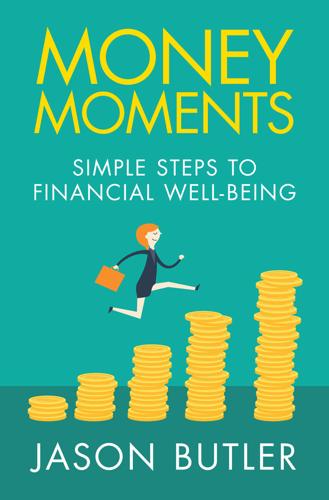
Money Moments: Simple Steps to Financial Well-Being
by
Jason Butler
Published 22 Nov 2017
Thirty years later my current car is a lot more comfortable (and reliable) than that old Vauxhall, but it is also a lot more expensive. The cost of car insurance for young people has skyrocketed over the past decade, to the extent that is can be almost as much as the value of the vehicle. This often makes it unaffordable without financial help from their family. The advent of ride hailing apps like Uber and Lyft, and the eventual availability of autonomous electric cars, together with wider adoption of car-sharing and better public transport, as well as rising vehicle running costs, are combining to undermine car ownership among younger people in urban areas. ‘Our intention is to make Uber so efficient, cars so highly utilized, that for most people it is cheaper than owning a car.’ said Uber’s then CEO Travis Kalanick in 2015.
…
Source: www.meaningfulmoney.tv In the example shown in the table, after five years you’d have a car worth nearly £20,000 and be better off by £14,800 (the difference between a cost of £6,200 and a cost of £21,000).* So think carefully: does it make sense to own a car or would it be better to walk, cycle, use public transport, taxis, ride-hail, or occasionally rent a vehicle? If you still think you do need to own a car then think about adopting Pete Matthew’s alternative funding approach. It might take you a bit longer but eventually you’ll end up with a cool set of wheels, just at a fraction of the cost. *The cost of the traditional approach would be £21,000 because £26,000 has been outlaid compared to the vehicle final value of £5,000.
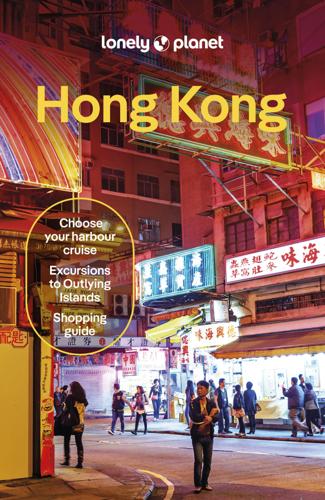
Lonely Planet Hong Kong
by
Lonely Planet
Taxi Complaints Most drivers are scrupulously honest, but if you feel you’ve been ripped off, take down the taxi or driver’s licence number (usually displayed on the sun visor in front) and contact the Transport Complaints Unit hotline (info.gov.hk/tcu/complaint) or the Transport Department hotline (852 2889 9999). Taxi Luggage Fees Hong Kong taxis impose a luggage fee of HK$6 per bag, but (depending on the size) not all drivers insist on this payment. Ride-Hailing Services Technically, ride-hailing services like Uber haven’t been fully approved by the Hong Kong authorities, but it’s a grey area and Uber continues to operate in the city. As well as private hires, the Uber app can also be used to hail licensed taxis. Particularly useful when you’re hiking in the Hong Kong countryside and need a pick-up.
…
Some species are under threat, while others are farmed or fished unsustainably. WWF Hong Kong has compiled a guide to making sustainable seafood choices: wwf.org.hk/en/oceans/seafood. Walk or Take Public Transport Hong Kong’s MTR, trams, ferries and buses are more energy-efficient forms of transport than taxis and ride-hailing services. The Central–Mid-Levels Escalator is usually faster than taxis or buses when going from downtown Central up into Soho. Discover Urban Rooftop Farming Rooftop Republic (rooftoprepublic.com) has built and managed over 80 urban farms in Hong Kong. The social enterprise also organises regular community events on organic farming and sustainable living.
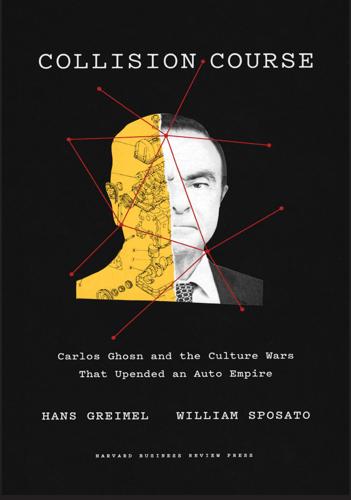
Collision Course: Carlos Ghosn and the Culture Wars That Upended an Auto Empire
by
Hans Gremeil
and
William Sposato
Published 15 Dec 2021
Geely really stunned the industry in 2018, when it secretly amassed a 9.7 percent stake in Germany’s Daimler AG, the parent company of Mercedes-Benz, to become its top shareholder.14 These new global juggernauts threatened to subvert the long-established industrial hierarchy—one in which Renault and Nissan had prime standing. If all this weren’t enough, new modes of mobility, such as the ride-hailing boom ushered in by giants Uber in the United States and Didi Chuxing in China, changed the ways cars were being used. Car sharing threatened to undermine the business model of individual car ownership and transform conventional automakers into rote manufacturers of utilitarian people movers that modern mobility providers, such as Uber, would buy in mass and churn through, with little interest in trivialities like emotional design, handling, or variety.
…
In China, the world’s biggest car market, the industry expected half of all new car sales to be electrified vehicles by 2035.3 Volkswagen envisioned producing twenty-six million full electrics by 2030 and was investing a whopping €73 billion ($86 billion) to make it happen.4 General Motors raced to make 40 percent of its US lineup electric by 2025.5 Forecasters predicted that by 2032, as many as twenty million new electric vehicles (EVs) would be sold every year worldwide.6 Meanwhile, old players and newcomers alike were diving into newfangled driver-assist systems, which were becoming de rigueur for premium brands and spreading rapidly down-market into volume models. Internet giant Google’s Waymo subsidiary was testing fully autonomous ride-hailing on US roads—with no human safety driver onboard to intervene in case of a computer glitch. Nissan, despite all its woes, was actually well placed for this era of electrification and autonomy, largely because Ghosn had the foresight to start early on the technologies. A new common platform for next-generation electric vehicles underpinned the Ariya crossover EV.
…
Edwards, 40 Deming Prize, 40 Denso Corp., 259 driver-assist systems, 74, 313 electric vehicles. See EVs Elkann, John, 195 emerging automotive markets, impact of, 86–87 EVs (electric vehicles), 313–314 Ariya, 310, 313 autonomous vehicles, 87 faster product cycles, 86 new companies buying up big-name brands, 86–87 Leaf, 73–74, 77, 79, 80, 81, 187, 313–314 ride-hailing boom, 87 Zoe, 79, 80, 313–314 executive compensation, international norms about, 16, 50, 52–53, 56, 221–222 extraterritoriality, 35, 158–159 Facta investigative magazine, on Olympus scandal, 244 Fall Seven Times, Get Up Eight (Hara), 38 FBI, 241 FCA (Fiat Chrysler Automobiles) merger with PSA Group, 198 Fields, Mark, 68 Financial Times, interview with Woodford, 241 fleet sales, 254 Flins, France, Renault assembly plant in, 98–99 Florange Crisis, 100–103, 113, 316, 324 Florange law, 99–101, 103, 119 Ford, Bill, 47–48 Ford Motor Company, 68, 118, 191 France desire to merge Renault and Nissan, 42–43, 315 examples of French expertise helping Japan, 107–108 government involvement in private companies, 108–109 government pressure to lock in control of Nissan, 195 popularity of japonisme in, 65 using Florange law to double government’s voting rights at Renault, 99–100, 102, 113–114, 119 Fuji Bank, 63 Fuyo Group, 37 gaiatsu (foreign pressure), 169, 178, 244, 322 Garton, Ben, 221 Geely (Zhejiang Geely Holding Group Co.), 86–87 General Electric Company, 70 General Motors Company.
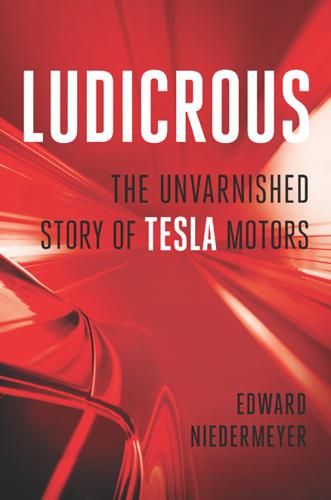
Ludicrous: The Unvarnished Story of Tesla Motors
by
Edward Niedermeyer
Published 14 Sep 2019
For all the enthusiasm that electric cars inspire, both among consumers and increasingly inside the industry, their single-digit market share tells us the long-awaited electric car revolution is still in its very early days. Though massive investments in electric vehicles are already being made, technologies like smartphone-based ride hailing and car sharing, autonomous drive, and micromobility suggest that there are even more socially and environmentally friendly opportunities than simply turning gas cars into electric cars. We are still in the very earliest stages of a potentially massive transformation of mobility, and the vagaries of technological progress, government policy, and consumer acceptance could lead us to wildly different outcomes.
…
Companies developing autonomous vehicles that had vastly more sophisticated sensor and compute systems than Tesla’s were saying that Level 5 was a fantasy . . . while Tesla continued to collect payments for a Level 5 system. Even as Waymo approached the late 2018 launch of the first-ever autonomous ride-hailing service in a suburb of Phoenix, Arizona, CEO John Krafcik publicly admitted that autonomous vehicles might never work in all locations and weather conditions, and that it would “take longer than you think” for autonomous vehicles to become ubiquitous. Most top autonomous-drive developers had been saying the same thing in private for months or even years, and only Tesla continued on as if nothing had changed until October 2018 when it made Full Self Driving an “off menu option,” without any further explanation.
…
If you didn’t, the brazenness of Tesla’s ploy to collect money for a feature it couldn’t possibly deliver on raised huge questions about what else the company was bluffing about and what it was really worth . . . and once you started down that line of questioning, there seemed to be no end to it. Tesla’s entire automated driving strategy also showed that there was a serious cost to being on the leading edge of mobility technology. When Tesla started, the big idea was simply to switch from gas to electric drivetrains. Yet within a decade of its founding, the rise of smartphone-based ride-hailing and autonomous-drive technology were opening up entirely new and more fundamentally disruptive possibilities. Tesla tried to co-opt these ideas to maintain the impression that it was a leader of this broader movement, but because it was already stuck in the traditional automaker business, its applications were little more than tacked-on compromises.
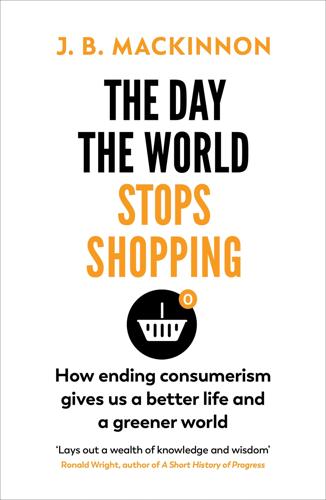
The Day the World Stops Shopping
by
J. B. MacKinnon
Published 14 May 2021
Sharing goods was initially promoted as an action that reduced consumption by its very nature—common sense tells us that if people share, say, a car or an electric slow cooker, then each of them does not need to own one. The sharing economy proved to be much more complicated than that, most famously in the case of ride-hailing schemes, which, rather than inspiring people to reject car ownership, led many to take more trips using services like Uber and fewer by foot, bicycle or public transit. In many places, ride-hailing made traffic worse, not better. But durability affected sharing in an even more basic way: unless vehicles were specifically designed to withstand the constant wear and tear of sharing, they broke down faster.
…
Every One Every Day operates in the consumerist world—one of its goals is to generate a hundred new businesses in Barking and Dagenham within five years—but also outside of it. A lot of sharing goes on, but Defriend does not consider it a “sharing economy,” because that term has been hijacked by for-profit businesses like ride-hailing and home rental. In Barking and Dagenham, sharing is often as simple and immediate as a group of women drawing lines on the floor of a workspace to mark out an area where they can take turns caring for each other’s children. It’s a clear example of how, in a place where consumer culture is somewhere between absent and dysfunctional, participants’ quality of life could dramatically improve without money changing hands, without economic growth.
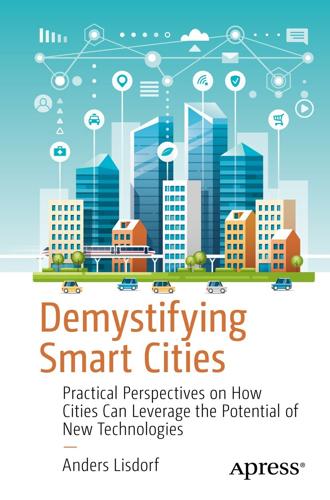
Demystifying Smart Cities
by
Anders Lisdorf
Electrical autonomous trucks that are similarly silent may collect finished goods and supply parts in the night when everyone is sleeping and no commuters are on the roads. When movement is necessary, the key issue to solve is one of interoperability. How do all the excellent opportunities for transportation merge? There should be one big mobility platform where all mobility could be handled, where autonomous busses, ride hailing and taxis, scooters, busses and metros are all connected and interfaced and purchased through the same interface to provide the consumer with a coherent mobility layer where new solutions and offerings can plug in seamlessly regardless of vendor; a planetary mobility fabric that optimizes on the supply and demand sides continuously to get human kind from point A to point B in the smartest possible way.
…
On faraway planets, the debate over fossil fuels or sustainable energy is vacuous; since there will only be sustainable energy sources in the beginning, cities have to harness solar and geothermal energy to survive. As for mobility, we will be back to a situation where everything is close; there are no ride hailing services in space, so our cities have to locate everything close by and have the potential to build a coherent transportation solution from the start. We will end up with an interplanetary transportation fabric. Recycling will similarly not be a choice but a necessity. Every chip, circuit, poop, and boot will have to enter the circular economy and be reprocessed.
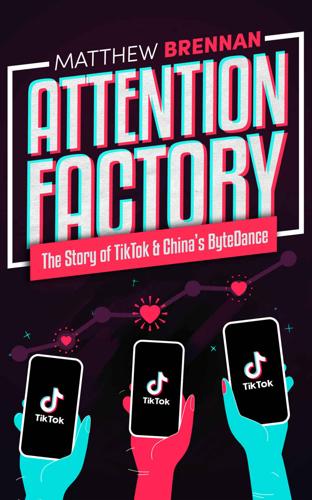
Attention Factory: The Story of TikTok and China's ByteDance
by
Matthew Brennan
Published 9 Oct 2020
AVIC Plaza, the new head office, was characterized by its high ceilings and sizable open-plan central space—a vast former aviation museum, it had now become an “attention factory. ” A new term, TMD, started appearing in the Chinese tech media to describe a group of rising internet stars, challengers to the old guard of Baidu, Alibaba, and Tencent. T stood for Toutiao. Up until 2018, Chinese media always referred to ByteDance as “Toutiao.” M stood for Meituan, the leading online food delivery and restaurant listing platform founded by Yiming’s friend Wang Xing. D stood for Didi Chuxing, the Chinese ride-hailing equivalent of Uber. Above: A group photo of leaders at the 2015 Wuzhen Summit, China’s most prestigious internet conference. Yiming’s position on the furthest left side at the back indicates he is arguably the least important person present. In contrast, Alibaba CEO Jack Ma, Tencent CEO Pony Ma, Baidu CEO Robin Li, and LinkedIn founder Reid Hoffman stand centrally and directly behind Chinese leader Xi Jinping. 116 Yiming learned to take greater care of his appearance.
…
The company announced it would invest $350 million into Kuaishou, the market-leading short video app at the time, pushing its valuation to $2.5 billion. The deal was widely judged to be a smart move—another critical ally in the booming sector of short videos and another savvy Tencent investment, which would lead to a handsome return. It followed a pattern of similar moves Tencent had taken in e-commerce, search, food delivery, and ride-hailing. One month after the Kuaishou investment, Weishi announced that it had officially closed. At the exact time, Douyin was coming out of its long cold-start period, Tencent was formally bowing out of the short video market and choosing to back a proxy. Above: Yiming attends a famous gathering of many of the most influential Chinese internet industry CEOs in 2017.
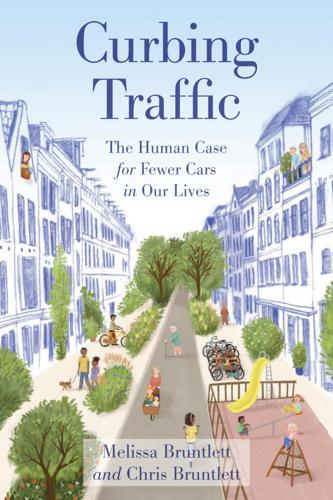
Curbing Traffic: The Human Case for Fewer Cars in Our Lives
by
Chris Bruntlett
and
Melissa Bruntlett
Published 28 Jun 2021
And that state of affairs will only be worsened by the (seemingly inevitable) introduction of autonomous cars: “Imagine all of us being in self-driving vehicles. The algorithm of the self-driving car solves all of these conflicts by itself. Imagine doing that for a year, and what that would do to your sense of trust of others.” On a smaller scale, this is already happening with ride-hailing services, such as Uber and Lyft, gradually diminishing our capacity to trust, and willingness to go out of our way to help one another. In both cases, we’re outsourcing these street-level negotiations to an external third party, with little regard of the consequences. One has only to delve into the comment section of an online article to appreciate how important that exposure to social and spatial diversity is in the twenty-first-century city.
…
This was made abundantly clear during the 2008 oil price spike, when prices went from US$50 per barrel to US$140 overnight; triggering a global financial crash as mortgage and car loans could no longer be paid. When Hurricane Harvey hit Houston in 2017, the flooding destroyed as many as a million cars, leaving many families scrambling for alternatives: rental cars, ride-hailing services, public transport, and yes, even bicycles. An estimated 100,000 did not have flood insurance, meaning they had to pay for a replacement out of pocket. Secondly, travel times within a car-dominated transport network are notably unreliable and heavily dependent on the presence of congestion, roadworks, weather (like rain, snow, and ice), and collisions.
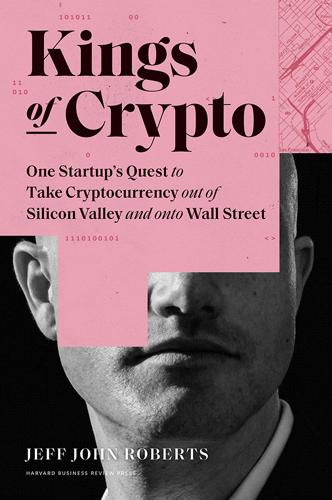
Kings of Crypto: One Startup's Quest to Take Cryptocurrency Out of Silicon Valley and Onto Wall Street
by
Jeff John Roberts
Published 15 Dec 2020
Overseas, the US was confronting the rise of a terrorist group called ISIS, while at home, gay couples filed court appeals for the right to marry. In Silicon Valley, tech investors made their first investments in a mattress-in-a-box company called Casper and a quirky work tool call Slack, while Forbesmagazine would hail a ride-hailing service called Uber as one of the hottest startups of the year. And as Brian and the Coinbase crew shook off their New Year’s hangovers, San Francisco still buzzed about bitcoin. The digital currency had pulled back from its giddy high of $1,100 in December, but still bounced around near $800—an astonishing development given that one bitcoin had sold for $13 at the start of 2013.
…
The December surge in sign-ups meant Coinbase would book more than $1 billion in revenue in 2017 while, months earlier, it had taken its place as a unicorn—a startup valued at more than a billion dollars. And Coinbase wasn’t just any unicorn—a leak from board member Barry Schuler months later revealed it was worth $8 billion, making it one of the ten most valuable startups in the country. What Uber was to ride-hailing and what Airbnb was to home rentals, Coinbase was to crypto. For Brian, all of this was vindication for the open secret he’d seized on at Y Combinator six years before. He had recognized that many more people would buy bitcoin if given an easy way to do it, and the success of Coinbase had proved him right.
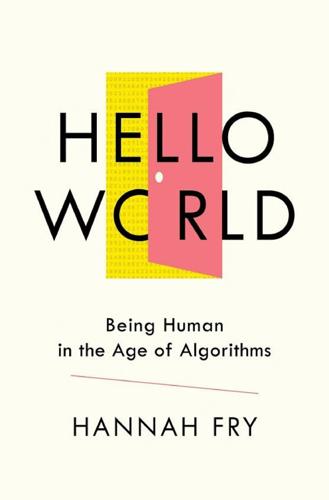
Hello World: Being Human in the Age of Algorithms
by
Hannah Fry
Published 17 Sep 2018
Imagine every piece of information that a data broker might have on you collapsed down into a single score. Everything goes into it. Your credit history, your mobile phone number, your address – the usual stuff. But all your day-to-day behaviour, too. Your social media posts, the data from your ride-hailing app, even records from your online matchmaking service. The result is a single number between 350 and 950 points. Sesame Credit doesn’t disclose the details of its ‘complex’ scoring algorithm. But Li Yingyun, the company’s technology director, did share some examples of what might be inferred from its results in an interview with the Beijing-based Caixin Media.
…
Most miles are so easy to drive, you can do it while daydreaming. Others are far more challenging. At the time of writing, Waymo cars aren’t allowed to go just anywhere: they’re ‘geo-fenced’ into a small, pre-defined area. So too are the driverless cars Daimler and Ford propose to have on the roads by 2020 and 2021 respectively. They’re ride-hailing cars confined to a pre-decided go-zone. And that does make the problem of autonomy quite a lot simpler. Paul Newman thinks this is the future of driverless cars we can expect: ‘They’ll come out working in an area that’s very well known, where their owners are extremely confident that they’ll work.

Calling Bullshit: The Art of Scepticism in a Data-Driven World
by
Jevin D. West
and
Carl T. Bergstrom
Published 3 Aug 2020
We already know that Lyft increased its rides by 31,000 per day over this period. So it looks like we could say that Lyft is responsible for 31,000 / 108,000 × 100 = 29% of the increase in overall rides. But that is odd. We said Lyft is responsible for about 24 percent of the increase in rides that ride-hailing services provide, but now we’re saying that Lyft is responsible for about 34 percent of the increase in rides by ride-hailing or taxi. How could both things be true? Things get even weirder if we look at Uber’s contribution to this increase in rides. Uber provided an extra 383,000 rides per day by the end of this period. We could say that the increase in Uber rides is responsible for 130,000 / 108,000 × 100 = 120% of the increase in total rides.
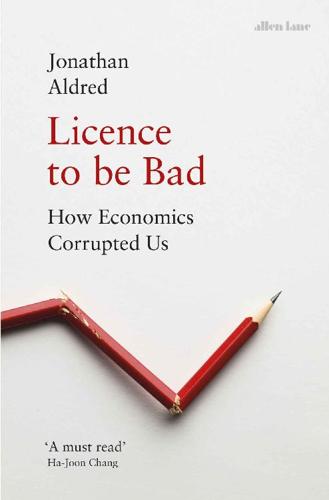
Licence to be Bad
by
Jonathan Aldred
Published 5 Jun 2019
A third of them failed, under oath, to declare their consulting income from firms that would be hit by the regulations.23 Similarly, there is clear evidence that some economists publishing in prestigious academic journals are overly relaxed about conflicts of interest: financial economists’ shyness in disclosing their consultancy work for the financial sector;24 empirical research on ride-hailing platforms, which is overwhelmingly dominated by economists sponsored by Uber, or using data selected and provided by Uber, or both.25 What about the relevant professional code of conduct covering these activities – the ethics code of the American Economic Association (the world’s largest association of professional economists)?
…
See: http://www.reuters.com/article/2010/12/20/us-academics-conflicts-idUSTRE6BJ3LF20101220. 24 Carrick-Hagenbarth, Jessica, and Epstein, Gerald A. (2012), ‘Dangerous Interconnectedness: Economists’ Conflicts of Interest, Ideology and Financial Crisis’, Cambridge Journal of Economics, 36 (1), 43–63. 25 Häring, N., ‘How UBER Money Dominates and Distorts Economic Research on Ride-hailing Platforms’, WEA Commentaries, 7 (6), December 2017. See https://www.worldeconomicsassociation.org/files/2018/01/Issue7-6.pdf. 26 Quoted in G. DeMartino (2011), The Economist’s Oath (New York: Oxford University Press), 8. 27 Stuckler, D. et al. (2009), ‘Mass Privatisation and the Post-communist Mortality Crisis: A Cross-national Analysis’, Lancet, 373 (9661), 399–407. 28 DeMartino, 65. 29 Interview with Federal Reserve Bank of Minneapolis, 26 August 2010.

Genius Makers: The Mavericks Who Brought A. I. To Google, Facebook, and the World
by
Cade Metz
Published 15 Mar 2021
After founding their start-up in the summer of 2015, he and Ghahramani installed their team of academics at a small office in downtown Manhattan where NYU incubated start-ups. Marcus joined them, while Ghahramani stayed in Britain. Little more than a year later, after conversations with many of the largest tech companies, from Apple to Amazon, they sold their start-up to Uber, the rapidly growing ride-hailing company that aspired to build self-driving cars. The start-up’s dozen researchers promptly moved to San Francisco, becoming the Uber AI Labs. Marcus moved with the lab, while Ghahramani stayed in the UK. Then, four months later, without much explanation, Marcus left the company and returned to New York, resuming his role as the world’s leading critic of deep learning.
…
Although deep learning had significantly improved their ability to recognize people, objects, and signs on the road—and accelerated their ability to predict events and plan routes forward—self-driving cars were still a long way from dealing with the chaos of the daily commute with the same agility as people. Though Google had promised a ride-hailing service in Phoenix, Arizona, by the end of 2018, that did not happen. Deep learning for drug discovery, an area that seemed to hold such promise after George Dahl and his Toronto collaborators won the Merck competition, turned out to be a far more complicated proposition than it seemed. Not long after coming to Google, Dahl moved away from the idea.
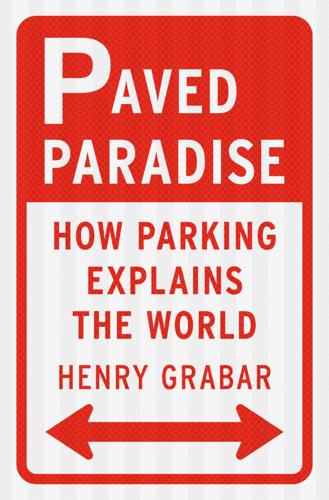
Paved Paradise: How Parking Explains the World
by
Henry Grabar
Published 8 May 2023
* * * Despite the controversy, Janette Sadik-Khan’s projects did not put much of a dent in the city’s supply of three million curb parking spaces. But the bike-share stations did exemplify, on an enormous scale, a new way of thinking about the curb that went beyond the old parking meter. Not surprisingly, one company interested in thinking about curb uses besides parking was Uber—the ride-hail giant whose cars now made up a significant share of traffic in central business districts, often stopping for minutes at a time to pick up or drop off passengers, but rarely parking. In 2018, Uber commissioned a study with the San Francisco consultancy Fehr & Peers that coined a new concept: the Curb Productivity Index, which attempted to think about curbs not by Morgan Stanley’s crude measures of profit but in terms of total utility.
…
And yet: each of those double-parked delivery vans was effectively removing a lane of traffic from circulation, which meant that New York’s rapidly growing delivery economy had the power to strangle the street grid. One study, of Athens, Greece, suggested that eliminating double-parking could reduce traffic congestion by 30 percent. On Santa Monica Boulevard in Los Angeles, 44 percent of vehicles stopped at the curb were double-parked—and 80 percent of those were ride-hail pickups and drop-offs. A study of 2,900 trips in downtown Seattle found that commercial drivers at one parcel delivery company spent 28 percent of their drive time looking for parking, creating traffic and driving up the cost of doing business. One problem standing between cities and better curb management was that, when it came to getting data, most cities were where Chicago was in 2008: focused on revenue from meters and tickets, and not thinking a step beyond.

The Everything Blueprint: The Microchip Design That Changed the World
by
James Ashton
Published 11 May 2023
Less than a week after Sōzō, having been pilloried for the revelations he smoked marijuana on board a private jet, Neumann stepped down as chief executive. The IPO was pulled soon after. The turn of events dealt a blow to SoftBank’s reputation and the thoroughness with which it carried out due diligence on its investments. In truth, its IPO programme had already delivered mixed results. Ride-hailing app Uber had listed in May that year, but on 14 August – the same day WeWork filed its intention to float – its shares slid after it posted a $5bn second-quarter loss. The performance of Slack, which floated in June, had been little better. Not only could SoftBank not raise any money from the heavily loss-making WeWork, but it also had to put more money in so the venture could remain afloat.
…
Either way, the case could play into the hands of RISC-V, the upstart royalty-free alternative, or generate uncertainty just as Arm was trying to find new investors. Since agreeing Arm’s takeover with Nvidia in September 2020, SoftBank’s financial woes had not eased. In August 2022, the company reported a record £19bn quarterly loss after a global sell-off in tech stocks hit the value of its portfolio. SoftBank sold its final stake in Uber, the ride-hailing app, disposed of more shares in Alibaba and resolved to cut costs. ‘I am ashamed of myself for being so elated by big profits in the past,’ said Son.12 The work towards listing Arm’s shares on Nasdaq continued. During autumn 2022, Arm remade its board with Wall Street squarely in mind, recruiting former executives from AOL, Intel and Qualcomm.

The Long History of the Future: Why Tomorrow's Technology Still Isn't Here
by
Nicole Kobie
Published 3 Jul 2024
Levandowski left Waymo in 2016, after earning $127 million throughout the years, to found his own startup, the autonomous truck company Otto. Otto leapt into the public eye via a test drive in Nevada, for which it wasn’t actually licensed, before delivering a shipment of beer – and then being acquired by Uber for $680 million21 to boost the ride-hailing app maker’s driverless efforts. A year later, Google/Waymo sued Uber and Levandowski for conspiracy to steal trade secrets. Before he departed, Google says, Levandowski downloaded 14,000 files, though Uber disputed any of those files were used in its own technology. After four days in court – during which Levandowski mostly pleaded the fifth, refusing to talk so he didn’t incriminate himself – the two companies agreed to settle, with Uber handing over 0.34 per cent of its stock to Google, at the time worth about $245 million.
…
But there’s a real risk that regulators will lose patience and ban the cars from city roads, and that investors will give up and yank funding for these high-cost trials rather than continuing to spend billions of dollars with little short-term payoff. DARPA has continued its investment in the area, more quietly than with the Grand Challenges, but has also admitted the whole thing has taken much longer than the US military would like. For city-bound vehicles, limited investor flight is already happening: Uber-rival ride-hailing app Lyft sold off its driverless division for $550 million to Toyota rather than burning through more cash. Chris Urmson has predicted it’ll be another three decades before driverless cars are widely available. There’s another issue with continuing the development of this driverless technology in this way: it might never work, ever.

The Contrarian: Peter Thiel and Silicon Valley's Pursuit of Power
by
Max Chafkin
Published 14 Sep 2021
Once PayPal had reached a certain scale, once all your friends had PayPal accounts, then there was no sense in trying competing products. Even if you liked Billpoint, your preference would become irrelevant if nobody else had a Billpoint account. This applied to payments, and really to everything else on the internet—social networks, food delivery, ride-hailing—and meant that any tech entrepreneur who wanted to succeed would have to grow as quickly and ruthlessly as possible. There would be a term of art for this, “blitzscaling,” coined, naturally, by Reid Hoffman, Thiel’s good friend and PayPal deputy. Many companies interpreted it to mean spending huge sums of money to try to take over a market, and then, once they’d achieved market dominance, trying to raise prices.
…
At the moment, Thiel’s investment firm, Founders Fund, was throwing money behind the hottest Silicon Valley trend: the “sharing economy.” The term described a class of startups in which unemployed people, or those looking for extra income, offered professional services on smartphone apps—Thiel’s firm invested in most of the biggest players. There was Lyft, a ride-hailing app that replaced taxi drivers with regular people driving their own cars. (Lyft developed this idea; Uber would copy it and make it famous.) The Founders Fund portfolio also included Airbnb, a lodging service to let people rent out spare bedrooms or vacation homes; TaskRabbit, where “gig workers” offered to do odd jobs, like laundry and dogwalking; and Postmates, a similar service, except the gig workers delivered you gourmet food instead of putting together your IKEA furniture.
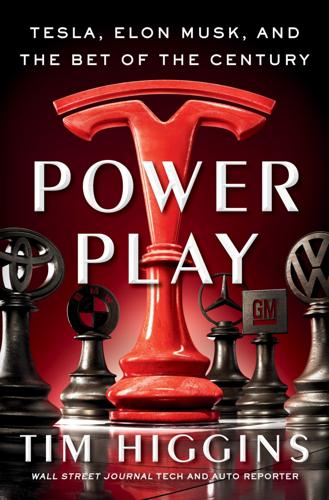
Power Play: Tesla, Elon Musk, and the Bet of the Century
by
Tim Higgins
Published 2 Aug 2021
While he may have talked in recent years about stepping back as CEO, the new pay package sent a powerful message to his senior leadership team—and investors—that he wouldn’t be letting go of the reins anytime soon. Some inside Tesla thought McNeill or maybe Field, the engineer overseeing the Model 3 whose authority had grown to include oversight of manufacturing, might be a future Tesla CEO. The next month, McNeill would depart Tesla to become chief operating officer of ride-hailing startup Lyft Inc. As the new year began, Musk wasn’t acting like he wanted to give up control. It was clear that Fremont, not Sparks, was the highest hurdle. Musk’s focus again shifted. The new Roadster reveal, along with the semi, helped Tesla’s cash situation, though money was running low again and, for a few reasons, Musk was reluctant to seek more capital.
…
Instead of spending an hour with each customer introducing the new Tesla owner to their brand-new car’s features, Kim wanted his deliverers to aim for five minutes. They would tell customers to watch a training video instead. Some of the drivers were so eager to return that they would summon an Uber or Lyft ahead of their arrival at a customer’s door—a clever time-saving ploy unless the ride-hailing car showed up before they did and knocked on the eager Model 3 buyer’s door. As they raced toward the end of the quarter, it became clear that the team had failed to anticipate how many trucks it would require to deliver an ever-increasing volume of cars to delivery centers. Third-party car carriers didn’t have enough space for them.

How to Be Right: In a World Gone Wrong
by
James O'Brien
Published 2 Nov 2018
The stereotype of the loquacious Little Englander is, I’ve since discovered, actually very unfair but it is still chronically over-represented among the cabbies who call in to programmes like mine. To generalise wildly, they are uncomfortable with trade unions, immigration, Labour politicians and the European Union. The attitude to trade unions and support for the Conservative Party belies a mindset that throws their experiences at the hands of the so-called ride-hailing app into almost unbearably stark relief. Like Beefeaters and Routemaster buses, it’s easy to sentimentalise the London black cab. On rare childhood visits to the capital from Kidderminster, my little sister and I considered a ride on one of their pull-down seats to be as much of a ritual as popping into Harrods’ toy department.

Coders: The Making of a New Tribe and the Remaking of the World
by
Clive Thompson
Published 26 Mar 2019
Uber flooded the streets in cities worldwide with cars, which was terrific for riders—but less so for drivers, many of whom began to find it harder and harder to piece together a steady living, given the frenetic competition on the streets. (In New York City alone, in 2018 there were only 13,578 traditional taxis, but the number of ride-hail drives had exploded to 80,000.) Certainly, drivers who were only doing it for spare money were thrilled to have a way to quickly pick up some extra pocket money; Uber and Lyft made it possible to do driving as piecework. But it was bad news for anyone looking to drive as a reliably steady gig, a job that historically has been one of the easier-to-acquire forms of work for immigrants in big cities.
…
But it was bad news for anyone looking to drive as a reliably steady gig, a job that historically has been one of the easier-to-acquire forms of work for immigrants in big cities. “What Uber and Lyft have done is come into the industry and wreck it,” as the Nigerian cabdriver Nnamdi Uwazie told NBC. By 2017, several cabdrivers had committed suicide and blamed the ride-hail firms for destabilizing their work so massively that it wasn’t possible to rely on driving for a predictable income. Indeed, even the programmers themselves can be surprised, and disenchanted, by how their zeal for optimization can produce unexpected and unsettling freaky side effects. That’s what happened to some of the early engineers of Facebook’s Like button.

USA Travel Guide
by
Lonely, Planet
Hitchhiking on freeways is prohibited. You’ll see more people hitchhiking in rural areas and in Alaska and Hawaii, but these places aren’t safer than anywhere else, and with sparse traffic, you may well get stranded. In and around national parks, hitching to and from trailheads is common, but a safer bet is to check ride-share boards at hostels, park visitor centers and wilderness information stations. Local Transportation Except in large US cities, public transportation is rarely the most convenient option for travelers, and coverage can be sparse to outlying towns and suburbs. However, it is usually cheap, safe and reliable.

Blockchain Chicken Farm: And Other Stories of Tech in China's Countryside
by
Xiaowei Wang
Published 12 Oct 2020
Bring the mixture to a boil and then simmer for 1 hour, or run the porridge setting on your Instant Pot. 2 On a Blockchain Chicken Farm in the Middle of Nowhere 1. There is a cell phone service blackout in the city of Zhenjiang on the day I visit the Vinegar Culture Museum. As I leave the bullet train station, I frantically tap my ride-hailing app, DiDi, in hopes that some car will show up on the screen. My phone doesn’t have 4G or even 3G, just a puny little one-bar signal, for emergency calls. It’s a balmy day in Zhenjiang, a small city outside Nanjing, the old imperial capital for the Ming dynasty, before Beijing was even on a map.
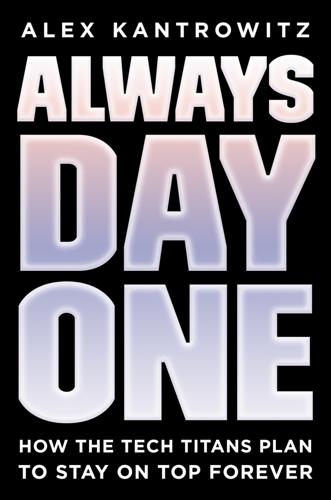
Always Day One: How the Tech Titans Plan to Stay on Top Forever
by
Alex Kantrowitz
Published 6 Apr 2020
But as Wozniak indicated, the marginal benefit of refinement was growing increasingly less apparent; the iPhone 6 was practically indistinguishable from the iPhone 7 and 8. And meanwhile, Apple’s competitors were catching up, building cameras and processors that approximated the iPhone’s, reducing its advantage over the field. Apple felt the loss particularly hard in China, where WeChat—an app that does chat, payments, investing, ride hailing, and more—had become the de facto operating system, allowing easy switching off from Apple’s iOS. With the refinement of Jobs’s iPhone no longer a reliable path to growth, Apple has big plans beyond it, and it will need to become inventive again to realize them. But its culture—created for a visionary-led company in an era that’s passed it by—doesn’t appear ready to take it where it needs to go.

The Great Wave: The Era of Radical Disruption and the Rise of the Outsider
by
Michiko Kakutani
Published 20 Feb 2024
Airbnb, which was valued at more than $67 billion in 2023, was launched in 2008 by cash-strapped roommates who decided to rent out air mattresses on their living room floor to people who couldn’t find or afford a hotel room. The encrypted messaging application WhatsApp was created the following year, as was the ride-hailing service Uber. And 2010 saw the founding of Instagram and Pinterest. * * * — COVID itself spurred all sorts of changes, forcing governments to set aside austerity measures (and fears of deficit spending) to quickly authorize trillions in COVID relief and stimulus payments and to reassess their social safety nets.

Age of the City: Why Our Future Will Be Won or Lost Together
by
Ian Goldin
and
Tom Lee-Devlin
Published 21 Jun 2023
Today, the city hosts offshore R&D centres for Amazon, Microsoft, Facebook and Google, and generates $130 billion in exports annually.66 By matching its talented engineers with a pool of venture capital investment equal to that of Berlin, the city has also spawned a number of domestic digital champions, from e-commerce firm Flipkart to ride-hailing firm Ola.67 Other poor countries are seeking to pull off similar feats. For example, the Yaba district of Lagos – referred to by locals as ‘Yabacon Valley’ – has emerged as a focal point for digital talent in Africa. But like most such clusters, it remains small in scale. Changing that will require massive investment in higher education, supported by reliable communication infrastructure and a lot more venture capital.

J.K. Lasser's Your Income Tax 2022: For Preparing Your 2021 Tax Return
by
J. K. Lasser Institute
Published 21 Dec 2021
Alternatively, you may claim 100% of the allowance if you are away for a regular “9-to-5” business day. 20.5 Business Trip Deductions If you are self-employed or an employee listed in 20.1, the following expenses of a business trip away from home (20.6) are deductible: Plane, railroad, taxi, ride-share, and other transportation fares between your home and your business destination Hotel and other lodging expenses. You need receipts or similar evidence for lodging expenses; there is no IRS standard lodging allowance as there is for meals (20.4). Meal costs. You may claim your actual meal costs if you maintain records to substantiate the expense (20.16). and the amount is not “lavish or extravagant,” which, according to the IRS, means it is reasonable under the circumstances.
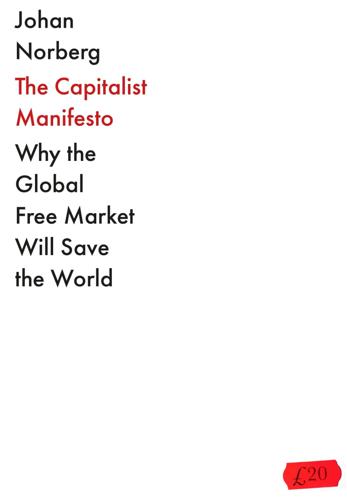
The Capitalist Manifesto
by
Johan Norberg
Published 14 Jun 2023
There is more lag in this debate than in my teenagers’ network connection when we’re on vacation, and it freezes more often. Just as many people began to see big platforms as impregnable monopolies, they were exposed to substantial competition for the first time. In the last five years, the leading company’s market share has actually decreased in online ads, cloud services, app stores, business software and ride hailing. In terms of video streaming and food delivery, the leading company has lost more than a quarter of the market.34 This is partly because of relative newcomers. During the pandemic, we were all on Zoom rather than established companies’ video services. Snapchat and TikTok suddenly made the old social media look rheumatic.
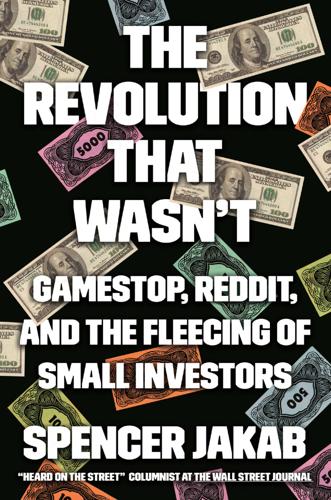
The Revolution That Wasn't: GameStop, Reddit, and the Fleecing of Small Investors
by
Spencer Jakab
Published 1 Feb 2022
Its stake in the office company WeWork, which had been headed for an initial public offering in 2019 worth an estimated $47 billion, had crumbled by around 90 percent as of September 2020 after its eccentric founder, Adam Neumann, departed under a cloud. And the value of SoftBank’s stake in the ride-hailing app Uber, which already was on the market, sank as a result of the pandemic. If the Nasdaq Whale’s maneuver seems more like a roll of the dice by a gambler down on his luck than the moves of a canny investor, well, that’s because it was. Throughout his career, Son has taken enormous risks that at the peak of the dot-com bubble in 2000 made him the world’s richest man—for three days.
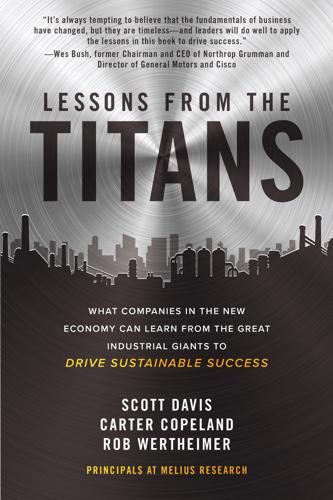
Lessons from the Titans: What Companies in the New Economy Can Learn from the Great Industrial Giants to Drive Sustainable Success
by
Scott Davis
,
Carter Copeland
and
Rob Wertheimer
Published 13 Jul 2020
Probably not coincidentally, rates that seemed competitive with taxis five years ago in New York City are now often considerably higher. Uber launched with a no-tipping structure, with drivers making enough without tips. Now tipping is strongly encouraged, which is effectively another layer of price increase. The physical assets still exist, and they are poorly run by many drivers. Right now, ride-hailing apps in New York have vehicles that run about half as many trips a month as do yellow cabs (and about a quarter as many as yellow cabs used to do before Uber came along). That’s a substantially less efficient use of an expensive vehicle versus the use of the old yellow cabs. Lower efficiency is also adding to congestion, slowing down traffic for everyone.
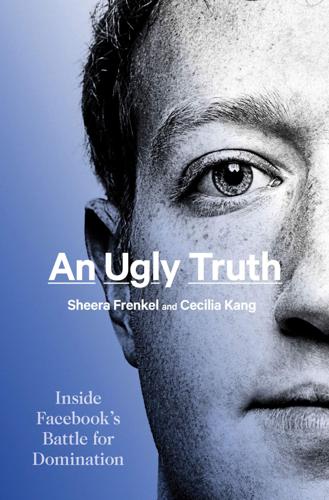
An Ugly Truth: Inside Facebook's Battle for Domination
by
Sheera Frenkel
and
Cecilia Kang
Published 12 Jul 2021
When Stamos left Yahoo, it was a sign that something was deeply wrong there. His arrival at Facebook, however, indicated that he saw something at the company worth working for. In the spring of 2015, Facebook executives were quietly looking around for a new head of security to replace Joe Sullivan, who was leaving for a similar post at the ride-hailing firm Uber. Zuckerberg and Sandberg asked Sullivan to help find his successor. Sandberg said she wanted a high-profile hire as a signal to their board of directors, and to regulators in Washington, of their commitment to security. Sullivan suggested Stamos. He argued that Stamos had a history of holding the powerful to account: as an independent contractor, he had been notoriously fired or forced to resign by employers because of his fierce adherence to privacy and security.

Who Owns This Sentence?: A History of Copyrights and Wrongs
by
David Bellos
and
Alexandre Montagu
Published 23 Jan 2024
It has always been held that things that exist in nature cannot be owned, and until very recently, it has been held that the discoveries of mathematicians are not their inventions, but revelations of the Platonic order of the world. Why then do mathematicians not merely work hard but make advances that are fundamental to inventions in all other fields, from ride-hailing apps to nuclear science, computing and space flight? Does mathematicians’ immunity to the incentive effect make them unlike other human beings? Surely not. Mersenne, Newton, Gauss, Einstein and John Conway were no more exempt than others from gambling debts, divorce settlements and forced exile.

Risk: A User's Guide
by
Stanley McChrystal
and
Anna Butrico
Published 4 Oct 2021
Following the news, Overstock rapidly regained 10 percent of its share value. Weak boards failing to intervene with suspect CEO behavior is a familiar story. Take former Uber CEO Travis Kalanick—whose behavior and leadership went unchecked as the company soared to unprecedented heights. Since 2009, Kalanick had revolutionized the ride-hailing industry, and in 2017 the tech start-up operated in more than seventy countries, valued at nearly $70 billion by its private investors. Beneath the hood of the car, however, was an engine of toxic corporate culture. ponzi scheming ■ How much is a stamp worth? In 1919 Charles Ponzi realized that there was profit potential in redeeming international postal reply coupons.

Human Compatible: Artificial Intelligence and the Problem of Control
by
Stuart Russell
Published 7 Oct 2019
That field is ruthlessly competitive, for some very good reasons: the first car manufacturer to release a fully autonomous vehicle will gain a huge market advantage; that advantage will be self-reinforcing because the manufacturer will be able to collect more data more quickly to improve the system’s performance; and ride-hailing companies such as Uber would quickly go out of business if another company were to roll out fully autonomous taxis before Uber does. This has led to a high-stakes race in which caution and careful engineering appear to be less important than snazzy demos, talent grabs, and premature rollouts. Thus, life-or-death economic competition provides an impetus to cut corners on safety in the hope of winning the race.
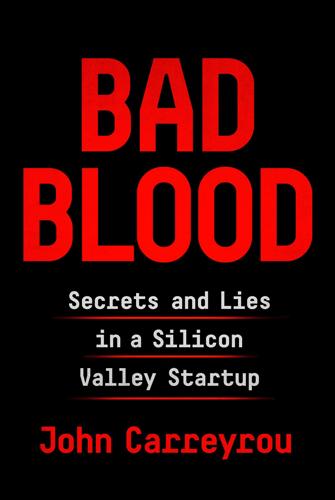
Bad Blood: Secrets and Lies in a Silicon Valley Startup
by
John Carreyrou
Published 20 May 2018
Despite their moniker, these tech unicorns were no myth: by Lee’s count, there were thirty-nine of them—a number that would soon soar past one hundred. Instead of rushing to the stock market like their dot-com predecessors had in the late 1990s, the unicorns were able to raise staggering amounts of money privately and thus avoid the close scrutiny that came with going public. The poster child of the unicorns was Uber, the ride-hailing smartphone app cofounded by the hard-charging engineer Travis Kalanick. A few weeks before Elizabeth’s Journal interview, Uber had raised $361 million at a valuation of $3.5 billion. There was also Spotify, the music streaming service that in November 2013 raised $250 million at a price per share that valued the whole company at $4 billion.

A World Without Work: Technology, Automation, and How We Should Respond
by
Daniel Susskind
Published 14 Jan 2020
Making good schools and universities open to all is an attempt to make sure valuable skills are not left only in the hands of a privileged, well-educated few. Now, as we move out of the Age of Labor, the Big State must try to share traditional capital as well. The sharing of traditional capital could happen without the state having to step in—but it is very unlikely. For one cautionary tale, consider a company called Juno. Like Uber, Juno is a ride-hail company, but with an important difference: while Uber was owned by its founders, Juno was initially owned by some of its drivers as well. When drivers joined Juno, they were given the chance to receive some Juno stock, which could translate into a stream of income if the company came to enjoy financial success.

Mbs: The Rise to Power of Mohammed Bin Salman
by
Ben Hubbard
Published 10 Mar 2020
Women’s universities planned to open driving schools, and Ford, Nissan, and Jaguar launched ads targeting what they hoped would be a flood of women drivers (and car buyers). According to one estimate, car sales would grow by 9 percent each year through 2025 and 20 percent of Saudi women would be driving by 2020. The ride-hailing company Uber planned to recruit women, and dealerships set aside women-only shopping hours. The lifting of the ban would change Saudi society in myriad ways in the years ahead, facilitating women’s entry into the workforce and giving them greater control over their social, economic, and even romantic lives.
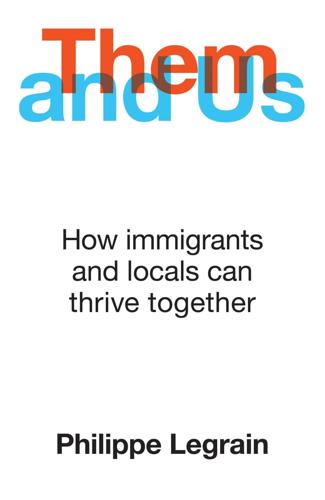
Them and Us: How Immigrants and Locals Can Thrive Together
by
Philippe Legrain
Published 14 Oct 2020
Tan Hooi Ling studied at Bath University in Britain and also worked for a year before returning to Malaysia to work as a consultant for McKinsey. The US firm, in turn, sponsored her to do an MBA at Harvard, where she met Anthony Tan, a businessman from Singapore. Together they founded Grab, a Singapore-based ride-hailing app which now operates across South East Asia and bought out Uber’s local operations. Grab has developed into a ‘super-app’ that also provides food delivery, digital payments and much else. In 2019 it was valued at $14 billion (£10.8 billion).42 More than nine million micro-entrepreneurs – one in 70 people in South East Asia – have earned an income through the Grab platform.

Men Who Hate Women: From Incels to Pickup Artists, the Truth About Extreme Misogyny and How It Affects Us All
by
Laura Bates
Published 2 Sep 2020
They are often able to continue their careers in new positions, as the swift return to work of one of the most high-profile perpetrators, comedian Louis CK, demonstrated. Similarly, Uber general manager Eyal Gutentag left his job after reportedly being witnessed sexually assaulting a female colleague, yet he quickly went on to become chief operations officer at another ride-hailing service, and then chief marketing officer at a billion-dollar company. And his is not an unusual case: it has been reported that, in the technology industry particularly, ‘a number of men who have been accused of, and admitted to, sexual misconduct have reemerged on the scene – sometimes within months of allegations surfacing in the public.
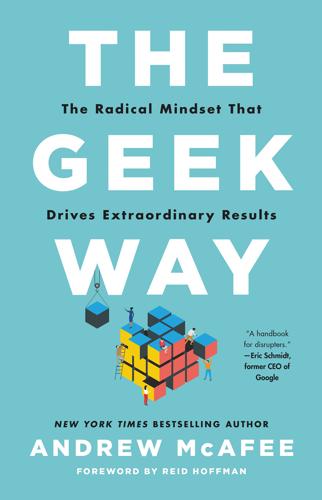
The Geek Way: The Radical Mindset That Drives Extraordinary Results
by
Andrew McAfee
Published 14 Nov 2023
I wrote about how the CVS drugstore chain rewrote its software to try to improve customer service, and how the global “fast fashion” retailer Zara used mobile technology to sense what people all over the world wanted to wear and quickly respond to this demand. I wrote about a European investment bank that was experimenting with an early internal blogging platform and about a strange new online reference called Wikipedia. I traveled to Argentina to look at an innovative soybean farmer; to Japan, where the owner of a taxi company built an automated ride-hailing service several years before Uber did; and to the port of Dubai, which wanted to better monitor all the cargo it received. And of course I went to Silicon Valley frequently. I wrote cases about online retailers, software and hardware startups, and entirely new kinds of companies like search engines and social networks.

Billionaire, Nerd, Savior, King: Bill Gates and His Quest to Shape Our World
by
Anupreeta Das
Published 12 Aug 2024
Ellen Pao, a former partner at Kleiner Perkins who sued the storied venture capital firm in 2012 for discrimination and bias, found herself a pariah amid venture capitalists after her lawsuit, which she lost. In it, she described a culture of all-male networking, including a ski trip to Vail that she was excluded from.35 Susan Fowler, an engineer at Uber, wrote a detailed blog post in 2017 about a hostile work environment at the ride hailing company, describing a culture of sexism, sexual harassment, and retaliation. Recent efforts to promote more female founders and invest in companies excluded from the typical Valley networks hold promise, but largely, the tech world’s underlying culture of maleness is just as rock steady as ever.

Your Face Belongs to Us: A Secretive Startup's Quest to End Privacy as We Know It
by
Kashmir Hill
Published 19 Sep 2023
“The delta between the path they’re on and the path they could be on is a trillion dollars,” Scalzo said. “Let it be free! Instead they’re artificially caging it. If this thing went to consumers, it would go to fifty million users in, like, four days.” He had thought that Ton-That and Schwartz had spines like that of Travis Kalanick, the Uber chief executive who had rolled his ride-hailing app out around the world, ignoring lawsuits and regulators screaming at him that the business model wasn’t legal. Scalzo said that Clearview had transformed from a rocket ship into a “GoFundMe for lawyers.” That wasn’t all. It was also turning into a punching bag for global privacy regulators.

The One Device: The Secret History of the iPhone
by
Brian Merchant
Published 19 Jun 2017
“The Antikythera”—the earliest known computing device, that mysterious Greek astrolabe whose precise origins scientists have been unable to successfully pin down—“is older, and there are abacuses and counting sticks. But [the volvelle] is certainly an old-school app.” The point is that people have been using tools to simplify and wield data and coordinate solutions for centuries. Take Uber: the ride-hailing app’s major innovation is its ability to efficiently pair a rider with a driver. The app reads the fluid data set of the number of available drivers in an area, taken by their GPS signals, and cross-references it with the number of desiring riders. Where those data sets intersect is where you and the driver meet for your ride.

Machine Learning Design Patterns: Solutions to Common Challenges in Data Preparation, Model Building, and MLOps
by
Valliappa Lakshmanan
,
Sara Robinson
and
Michael Munn
Published 31 Oct 2020
Entities are used as keys to look up feature values and are used to join features between different feature sets when creating datasets for training or serving. The entity serves as an identifier for whatever relevant characteristic you have in the dataset. It is an object that can be modeled and store information. In the context of a ride-hailing or food delivery service, a relevant entity could be customer_id, order_id, driver_id, or restaurant_id. In the context of a churn model, an entity could be a customer_id or segment_id. Here, the entity is the taxi_id, a unique identifier for the taxi vendor of each trip. At this stage, the feature set we created called taxi_rides contains no entities or features.
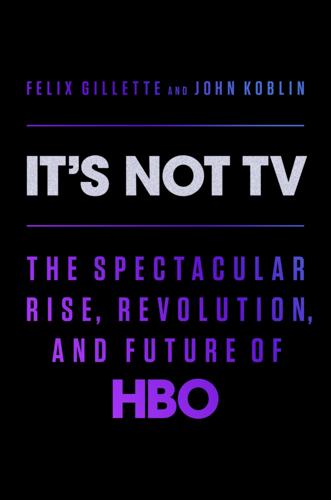
It's Not TV: The Spectacular Rise, Revolution, and Future of HBO
by
Felix Gillette
and
John Koblin
Published 1 Nov 2022
The monstrous growth was due not just to Netflix’s performance but also to the prevailing mood on Wall Street. Watching Amazon and Facebook put up huge returns, investors had grown deliriously hungry for superfast-growing tech companies. In search of the next big thing, both public and private investors were more than happy to pump money into unprofitable tech ventures like the ride-hailing service Uber, or the office subleasing company WeWork, or the home-sharing app Airbnb, so long as they were expanding wildly and gobbling up market share. The most important thing, according to the new paradigm of tech investing, was to crush the incumbents. Wooing new customers with ludicrous prices that made no long-term economic sense beyond undermining competitors was not only tolerated, it was expected and rewarded.

Four Battlegrounds
by
Paul Scharre
Published 18 Jan 2023
Every functionality one might desire in the United States or Europe is replicated in China, but by Chinese companies. Ride sharing? Download Didi; Uber doesn’t have a foothold there. Maps? Google Maps is blocked in country; Baidu Maps is great (but only in Chinese). Search? Google is also blocked; Baidu dominates the search market. In some areas, China is far ahead of Western companies. WeChat has no parallel in the West, an all-purpose social media platform that also does mobile payments, ride-hailing, food delivery, flight booking, games, and more. Many of these Chinese applications are superior to their American counterparts.

Rentier Capitalism: Who Owns the Economy, and Who Pays for It?
by
Brett Christophers
Published 17 Nov 2020
In 2017, when TfL first attempted to clip Uber’s wings, the then prime minister, Theresa May, blamed Khan for what she called a ‘disproportionate’ action, hers being the most notable intervention in what one observer described as an ‘escalating … political war of words between Labour and the Conservatives over the US ride-hailing company’.28 That war has continued, Uber becoming something of a lightning rod for the respective positions on digital platforms and their regulation of the ruling Tory party and the Labour opposition. When Uber’s licence was again withdrawn in 2019, the Tory mayoral candidate, Shaun Bailey, was just one of the Conservatives to attack Khan, saying he was ‘going after Uber to be popular’.29 The Conservative-supporting right-wing Daily Telegraph was sufficiently exercised to write a leader article, editorializing that Khan’s was an ‘ideological clampdown on Uber’ and a ‘harbinger’ of what a Labour government under Jeremy Corbyn would be like: ‘insular, over-regulated, resistant to innovation, protective of vested interests and closed to global investment’.30 If you listen closely enough, you can just about hear Margaret Thatcher turning in her grave.

The Singularity Is Nearer: When We Merge with AI
by
Ray Kurzweil
Published 25 Jun 2024
In 2005, the year The Singularity Is Near was released, DARPA awarded a $2 million prize to a Stanford team that won its grand challenge race for autonomous vehicles.[1] At the time, self-driving cars were still science fiction as far as the public was concerned, and even many experts believed they were as far as a century away. But when Google launched an ambitious AI-driven project in 2009, progress began to rapidly accelerate. The project became an independent company called Waymo, which by 2020 was offering fully autonomous ride-hailing taxis to the public in the Phoenix area, followed by expansion to San Francisco.[2] By the time you read this, its passenger service will have expanded to Los Angeles and possibly other cities.[3] Waymo’s self-driving vehicles have traveled well over 20 million fully autonomous miles at the time of this writing (a figure that is rapidly increasing—one of the challenges in writing this book!).

Character Limit: How Elon Musk Destroyed Twitter
by
Kate Conger
and
Ryan Mac
Published 17 Sep 2024
The FTC kept a watchful eye on the company’s privacy practices and expected quarterly updates about how its privacy work was progressing. As the lawyer in the group, Kieran was responsible for signing off on those audits and declaring that their contents were accurate. In October, a former security executive at Uber had been found guilty of lying to the FTC during a privacy inquest at the ride-hailing firm, and although he had yet to be sentenced, he faced the possibility of years in prison. The trial had been closely watched by other Silicon Valley executives, and Kieran was well aware that he could find himself in the same position if Twitter made any mistakes in its audit. But Musk’s mass layoffs had made those mistakes all but inevitable.

The Price of Time: The Real Story of Interest
by
Edward Chancellor
Published 15 Aug 2022
Dan Lyons, Disrupted: My Misadventure in the Start-Up Bubble (New York, 2017), p. 24. 36. Details of the Theranos story from John Carreyrou, Bad Blood: Secrets and Lies in a Silicon Valley Startup (London, 2019). 37. Hubert Horan, ‘Uber’s Path of Destruction’, American Affairs, 3 (2), Summer 2019. Uber was not the only loss-making ride-hailing app. Competitor Lyft came to the market in March 2019 with the largest loss, at $911 million, ever registered by an American start-up in the 12 months prior to its IPO. (Grant, ‘Standing on a Box’.) 38. Robert Cyran, ‘WeWork Offers Convincing Case to Avoid Its IPO’, Reuters Breakingviews, 14 August 2019. 39.

Empire of AI: Dreams and Nightmares in Sam Altman's OpenAI
by
Karen Hao
Published 19 May 2025
For Hinton, Sutskever, and Marcus, the tight relationship between corporate funding and AI development also affected their own careers. Not long after Google put its full weight behind Hinton and Sutskever, Marcus cofounded his own company, called Geometric Intelligence, in 2014. The startup was acquired by Uber two years later to build out an AI lab, but in 2020, after the ride-hailing firm’s IPO, it axed the division. Several original members of Geometric Intelligence subsequently joined OpenAI, where they switched from working on neurosymbolic advancements to deep learning. Over the years, Marcus would become one of the biggest critics of OpenAI, writing detailed takedowns of its research and jeering its missteps on social media.
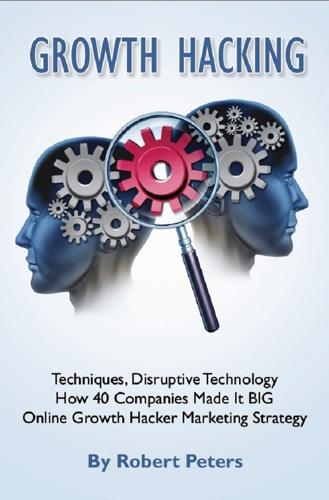
Growth Hacking Techniques, Disruptive Technology - How 40 Companies Made It BIG – Online Growth Hacker Marketing Strategy
by
Robert Peters
Published 18 May 2014
Customers on both ends of the equation love the option. Renters pay 40% less for a RelayRides vehicle over a traditional rent car and the average vehicle owner makes $250 a month in profit. Some owners are so attracted to the concept, they put from 2-4 cars into service. In studying the transportation/ride share market as part of the new economy of sharing, RelayRides hit on the untapped resource of underutilized vehicles that spend most of their time in the garage or parking lot. As a facilitator of the owner/rental connection, the company takes 25% and in exchange provides $1 million of insurance on the vehicle during the rental period.
…
Although facing stiff competition from Groupon, LivingSocial is still very much in the game and well positioned for even greater growth. Sidecar Defining the prevailing zeitgeist at any moment in time can be a powerful but difficult growth hack, but San Francisco-based Sidecar, a major competitor with Uber in the sector of peer-to-peer ride sharing seems to be a good market fit for the rapidly emerging Sharing Economy. In the months following its January 2012 launch in San Francisco, the company experienced 60% month-over-month growth and secured impressive funding starting with $20 million in seed money. Like Uber, SideCar opted for a “proof is in the pudding” approach to demonstrating its value at the influential SXSW tech conference in Austin, Texas from March 8-17, 2013.
…
Even in the face of replicable success, however, the focus should remain on delivering the best user / customer experience, even if that means completely changing the direction of the endeavor midstream. RelayRides is a good example of an incredibly successful change in course. They started out believing that their ride sharing concept was best targeted for short-term hourly hires and wound up completely focusing their business on long-term rentals with airport based drop off and pick up. Why? The company introduced its service at San Francisco International Airport where it was so well received, the concept was then implemented in 229 additional airports.
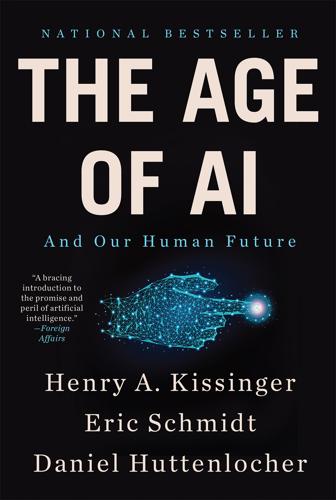
The Age of AI: And Our Human Future
by
Henry A Kissinger
,
Eric Schmidt
and
Daniel Huttenlocher
Published 2 Nov 2021
We would be better served by recognizing that AI is already all around us—often in ways that are not entirely evident—and redirecting our technological anxieties toward encouraging greater understanding of and transparency regarding AI’s integration into our lives. Social media, web searches, streaming video, navigation, ride sharing, and countless other online services could not operate as they do without the extensive and growing use of AI. By using these online services for the basic activities of daily life—to offer product and service recommendations, select routes, make social connections, and arrive at insights or answers—people around the world are participating in a process that is both mundane and revolutionary.
…
Engineers sought practical and efficient solutions—connecting users to information and online social spaces, passengers to cars and drivers, and customers to products. There was general excitement about new capabilities and opportunities. There was little demand for predictions about how these virtual solutions might affect the values and behavior of entire societies, such as patterns of vehicle use and traffic congestion with ride sharing or the real-world political and geopolitical alignments of national institutions with social media. AI-enabled network platforms were created even more recently; with less than a decade of development, we have yet to establish even the basic vocabulary and concepts for an informed debate about this technology—a gap this book seeks to help remedy.
…
Governments with resources may choose to sponsor a domestic entrant as a rival: in many cases, however, this choice would require substantial and sustained intervention—and still risk failure. Advanced countries are likely to try to avoid depending on products of any other single country for key functions (e.g., social media, commerce, ride sharing), particularly in areas where there are several network platforms available globally. That AI-enabled network platforms created by one society may function and evolve within another society and become inextricable from that country’s economy and national political discourse marks a fundamental departure from prior eras.
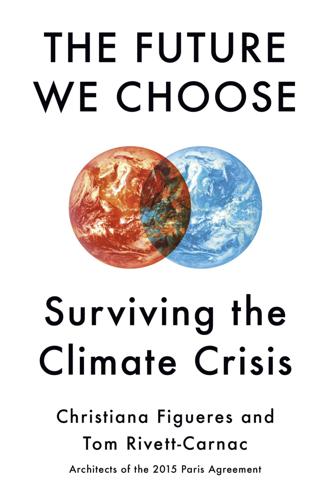
The Future We Choose: Surviving the Climate Crisis
by
Christiana Figueres
and
Tom Rivett-Carnac
Published 25 Feb 2020
When you take the electric train, you don’t have to fumble around for a metro card or wait in line to pay—the system tracks your location, so it knows where you got on and where you got off, and it deducts money from your account accordingly. We also share cars without thinking twice. In fact, regulating and ensuring the safety of driverless ride sharing was the biggest transportation hurdle for cities to overcome. The goal has been to eliminate private ownership of vehicles by 2050 in major metropolitan areas.22 We’re not quite there yet, but we’re making progress. We have also reduced land transport needs. Three-dimensional (3D) printers are readily available, cutting down on what people need to purchase away from home.23 Drones organized along aerial corridors are now delivering packages, further reducing the need for vehicles.24 Thus we are currently narrowing roads, eliminating parking spaces, and investing in urban planning projects that make it easier to walk and bike in the city.
…
Three-dimensional (3D) printers are readily available, cutting down on what people need to purchase away from home.23 Drones organized along aerial corridors are now delivering packages, further reducing the need for vehicles.24 Thus we are currently narrowing roads, eliminating parking spaces, and investing in urban planning projects that make it easier to walk and bike in the city. Parking garages are used only for ride sharing, electric vehicle charging, and storage—those ugly concrete stacking systems and edifices of yore are now enveloped in green. Cities now seem designed for the coexistence of people and nature. International air travel has been transformed. Biofuels have replaced jet fuel. Communications technology has advanced so much that we can participate virtually in meetings anywhere in the world without traveling.

Lonely Planet Belgium & Luxembourg
by
Lonely Planet
While Belgium’s motorway system is extensive and toll-free, traffic often grinds to a halt, especially on the ring roads around Brussels and Antwerp (at rush hour, September to June), on the Brussels–Ghent–Ostend highway (sunny weekends) and on the Ardennes-bound E411 (holidays and snowy weekends). Seemingly interminable repairs also result in frequent diversions and long traffic jams. Hitching & Ride Sharing Hitching can be a good way of meeting locals but is never entirely safe, and Lonely Planet does not recommend it. Travellers who hitch should understand that they are taking a small but potentially serious risk. Long-distance ride sharing is widespread in Northern Europe: Blablacar (www.blablacar.com) is probably the most popular app/website for posting and searching for rides. Local Transport Major cities have efficient public transport – mostly buses but also metro and trams in Brussels and Antwerp.
…
Belgium & Luxembourg Contents Plan Your Trip Welcome to Belgium & Luxembourg Belgium & Luxembourg’s Top Experiences Need to Know First Time Belgium & Luxembourg Month by Month Itineraries Family Travel Regions at a Glance On The Road Brussels Sights Tours Sleeping Eating Drinking & Nightlife Entertainment Shopping Information Getting There & Away Getting Around Bruges, Ghent & Northwest Belgium Bruges Damme Belgian Coast Knokke-Heist De Haan Bredene Zeebrugge & Lissewege Ostend (Oostende) Nieuwpoort Oostduinkerke De Panne Beer Country Veurne Diksmuide Poperinge Ypres (Ieper) Ypres Salient Kortrijk Oudenaarde Geraardsbergen Ghent Antwerp & Northeast Belgium Antwerp (Antwerpen) Around Antwerp Westmalle Turnhout Lier Mechelen Leuven Hageland Diest Hasselt Haspengouw Tienen Zoutleeuw Sint-Truiden Tongeren Wallonia Western Wallonia Tournai Pipaix Aubechies Ath Lessines Enghien Mons Binche Nivelles Waterloo Battlefield Louvain-la-Neuve Charleroi Thuin Aulne Botte de Hainaut Philippeville Mariembourg & Nismes Chimay The Ardennes Namur Crupet Dinant Han-sur-Lesse Rochefort St-Hubert Bouillon Orval Arlon Bastogne Achouffe La Roche-en-Ardenne Durbuy Huy Liège Verviers Spa Coo Stavelot The Eastern Cantons Luxembourg Luxembourg City Moselle Valley Schengen & Remerschen Müllerthal Region Larochette Echternach Beaufort Éislek Bourscheid Diekirch Vianden Esch-sur-Sûre Wiltz Clervaux UNDERSTAND Understand Belgium & Luxembourg History Belgian Beer Arts & Architecture The Belgian People Creative Cuisine SURVIVAL GUIDE Directory A-Z Accessible Travel Accommodation Activities Climate Customs Regulations Discount Cards Electricity Food Health Insurance Internet Access Legal Matters LGBTIQ+ Travellers Money Opening Hours Post Public Holidays Safe Travel Telephone Time Toilets Tourist Information Visas Work Transport Getting There & Away Air Land Sea getting AROUND Air Bicycle Boat Bus Car & Motorcycle Hitching & Ride Sharing Local Transport Train Language Behind the Scenes Our Writers COVID-19 We have re-checked every business in this book before publication to ensure that it is still open after the COVID-19 outbreak. However, the economic and social impacts of COVID-19 will continue to be felt long after the outbreak has been contained, and many businesses, services and events referenced in this guide may experience ongoing restrictions.
…
Self-employed individuals or employers sending staff on short-term contracts in Belgium need to register through www.limosa.be. A high percentage of Luxembourg’s workforce is made up of cross-border workers (www.lesfrontaliers.lu) who live in neighbouring countries. Transport Getting There & Away Air Land Sea getting AROUND Air Bicycle Boat Bus Car & Motorcycle Hitching & Ride Sharing Local Transport Train Transport Getting There & Away Belgium and Luxembourg are easily accessed from Europe and beyond. There are direct flights and international buses from numerous destinations and a comprehensive rail network connecting to locations across the continent. Flights, car hire and tours can be booked online at lonelyplanet.com/bookings.
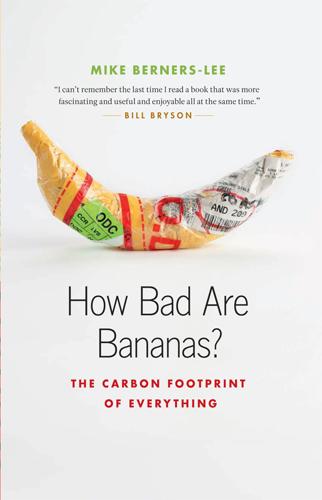
How Bad Are Bananas?: The Carbon Footprint of Everything
by
Mike Berners-Lee
Published 12 May 2010
If you make the assumption that the journey is many times longer than it would be if there were no traffic, then the time you waste in the line is about equal to the sum of the extra time you make everyone else waste. In other words, the hassle and anguish that you experience is equal to the hassle and anguish that you inflict. So when deciding whether to drive through a busy area at rush hour, picture your own pain and double it. All of this adds to the case for traveling by bike, bus, train, foot, or ride share wherever possible. It’s also a useful reminder that all motorists should treat cyclists with the respect they deserve for helping to cut everybody else’s journey time. Where you must drive in busy conditions, do your best to minimize stops and starts—both your own and everyone else’s. A steady slow stream of traffic is more efficient than a faster but less steady one unless the stops are so long that everyone can turn their engines off.
…
David Howard, Kim Kaivanto, Andy Scott, and Geraint Johnes from Lancaster University, and Sonny Khan, all helped with the input–output model that I have drawn upon extensively. Thanks also to David Parkinson and Chris Goodall, among others, for answering technical queries. Andrew Meikle let me chatter away during ride shares and has been a frequent sounding board. He read early pages aloud so that I could hear how bad they were. Others who cast a friendly eye include Phil and Jane Latham, Aly Purcell, Rachel Nunn, and Mark Jameson. Mum and Dad, true to form as incredible parents, both picked through the entire draft at a moment’s notice.
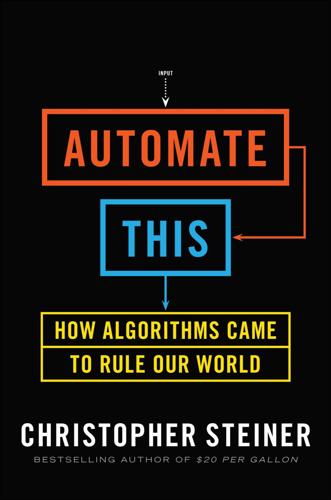
Automate This: How Algorithms Came to Rule Our World
by
Christopher Steiner
Published 29 Aug 2012
Poker bots can’t read faces, at least not yet, so to be effective against good players they must learn how to bluff, how to call others’ bluffs, and when to fold in the face of what’s likely a big hand for an opponent. Sandholm, who speaks with the slightest of accents, was born and raised in Finland and looks the part of Nordic conqueror with his sandy hair, high cheekbones, and cleft chin. In 1990 he built his first commercial algorithm, an automated negotiation platform for ride sharing. Riders could introduce routes for which they sought rides, and drivers could answer with price quotes. Each rider introduced a different route variation to each driver, making for a complex market that could only be tamed by the perfect algorithm. Sandholm’s foray into carpooling ultimately failed as the market didn’t behave how his bot had expected.
…
Simpson jurors evaluated, 177 see also litigation Lawrence, Peter, 1–2 least squares method, 62–63 Le Corbusier, 56 Lee, Spike, 87 Lehman Brothers, 191, 192 Leibniz, Gottfried, 26, 57–61, 68, 72 binary language of, 57–58, 60–61, 71, 73 Leipzig, 58 Lennon, John, 104, 107–8 “In My Life” claimed by, 110–11 as math savant, 103 “Let It Be,” 103 Levchin, Max, 188 leverage, trading on margin with, 51 Lewis, Michael, 141, 202 Li, David X., 65 Liber Abaci (The Book of Calculation) (Fibonacci), 56–57 Library of Congress, 193 Lin, Jeremy, 142–43 linguistics, 187 liquidity crisis, potential, 51–52 Lisp, 12, 93, 94 lit fiber, 114, 120 lithium hydroxide, 166 Lithuania, 69 litigation: health insurers and, 181 stock prices and potential, 27 Walgreens and, 156 logic: algorithms and, 71 broken down into mechanical operations, 58–59 logic theory, 73 logic trees, 171 London, 59, 66–67, 68, 121, 198 Los Angeles International Airport, security algorithm at, 135 Los Angeles Lakers, 143 loudness, 93, 106 Lovelace, Ada, 73 Lovell, James, 165–67 Lulea, Sweden, 204 lunar module, 166 lung cancer, 154 McAfee, Andrew P., 217–18 McCartney, Paul, 104, 105, 107 “In My Life” claimed by, 110–11 as math savant, 103 McCready, Mike, 78–83, 85–89 McGuire, Terry, 145, 168–72, 174–76 machine-learning algorithms, 79, 100 Magnetar Capital, 3–4, 10 Mahler, Gustav, 98 Major Market Index, 40, 41 Making of a Fly, The (Lawrence), prices of, 1–2 Malyshev, Mikhail, 190 management consultants, 189 margin, trading with, 51 market cap, price swings and, 49 market makers: bids and offers by, 35–36 Peterffy as, 31, 35–36, 38, 51 market risk, 66 Maroon 5, 85 Marseille, 147, 149 Marshall, Andrew, 140 Martin, George, 108–10 Martin, Max (Martin Sandberg), 88–89 math: behind algorithms, 6, 53 education in, 218–20 mathematicians: algorithms and, 6, 71 online, 53 on Wall Street, 13, 23, 24, 27, 71, 179, 185, 201–3 Mattingly, Ken, 167 MBAs: eLoyalty’s experience with, 187 Peterffy’s refusal to hire, 47 MDCT scans, 154 measurement errors, distribution of, 63 medical algorithms, 54, 146 in diagnosis and testing, 151–56, 216 in organ sharing, 147–51 patient data and home monitoring in, 158–59 physicians’ practice and, 156–62 medical residencies, game theory and matching for, 147 medicine, evidence-based, 156 Mehta, Puneet, 200, 201 melodies, 82, 87, 93 Mercer, Robert, 178–80 Merrill Lynch, 191, 192, 200 Messiah, 68 metal: trading of, 27 volatility of, 22 MGM, 135 Miami University, 91 Michigan, 201 Michigan, University of, 136 Microsoft, 67, 124, 209 microwaves, 124 Midas (algorithm), 134 Miller, Andre, 143 mind-reading bots, 178, 181–83 Minneapolis, Minn., 192–93 minor-league statistics, baseball, 141 MIT, 24, 73, 128, 160, 179, 188, 217 Mocatta & Goldsmid, 20 Mocatta Group, 20, 21–25, 31 model building, predictive, 63 modifiers, 71 Boolean, 72–73 Mojo magazine, 110 Moneyball (Lewis), 141 money markets, 214 money streams, present value of future, 57 Montalenti, Andrew, 200–201 Morgan Stanley, 116, 128, 186, 191, 200–201, 204 mortgage-backed securities, 203 mortgages, 57 defaults on, 65 quantitative, 202 subprime, 65, 202, 216 Mosaic, 116 movies, algorithms and, 75–76 Mozart, Wolfgang Amadeus, 77, 89, 90, 91, 96 MP3 sharing, 83 M Resort Spa, sports betting at, 133–35 Mubarak, Hosni, 140 Muller, Peter, 128 music, 214 algorithms in creation of, 76–77, 89–103 decoding Beatles’, 70, 103–11 disruptors in, 102–3 homogenization or variety in, 88–89 outliers in, 102 predictive algorithms for success of, 77–89 Music X-Ray, 86–87 Musikalisches Würfelspiel, 91 mutual funds, 50 MyCityWay, 200 Najarian, John A., 119 Naples, 121 Napoleon I, emperor of France, 121 Napster, 81 Narrative Science, 218 NASA: Houston mission control of, 166, 175 predictive science at, 61, 164, 165–72, 174–77, 180, 194 Nasdaq, 177 algorithm dominance of, 49 Peterffy and, 11–17, 32, 42, 47–48, 185 terminals of, 14–17, 42 trading method at, 14 National Heart, Lung, and Blood Institute, 159 Nationsbank, Chicago Research and Trading Group bought by, 46 NBA, 142–43 Neanderthals, human crossbreeding with, 161 Nebraska, 79–80, 85 Netflix, 112, 207 Netherlands, 121 Netscape, 116, 188 Nevermind, 102 New England Patriots, 134 New Jersey, 115, 116 Newsweek, 126 Newton, Isaac, 57, 58, 59, 64, 65 New York, N.Y., 122, 130, 192, 201–2, 206 communication between markets in Chicago and, 42, 113–18, 123–24 financial markets in, 20, 198 high school matching algorithm in, 147–48 McCready’s move to, 85 Mocatta’s headquarters in, 26 Peterffy’s arrival in, 19 tech startups in, 210 New York Commodities Exchange (NYCE), 26 New Yorker, 156 New York Giants, 134 New York Knicks, 143 New York magazine, 34 New York State, health department of, 160 New York Stock Exchange (NYSE), 3, 38–40, 44–45, 49, 83, 123, 184–85 New York Times, 123, 158 New York University, 37, 132, 136, 201, 202 New Zealand, 77, 100, 191 Nietzsche, Friedrich, 69 Nirvana, 102 Nixon, Richard M., 140, 165 Nobel Prize, 23, 106 North Carolina, 48, 204 Northwestern University, 145, 186 Kellogg School of Management at, 10 Novak, Ben, 77–79, 83, 85, 86 NSA, 137 NuclearPhynance, 124 nuclear power, 139 nuclear weapons, in Iran, 137, 138–39 number theory, 65 numerals: Arabic-Indian, 56 Roman, 56 NYSE composite index, 40, 41 Oakland Athletics, 141 Obama, Barack, 46, 218–19 Occupy Wall Street, 210 O’Connor & Associates, 40, 46 OEX, see S&P 100 index Ohio, 91 oil prices, 54 OkCupid, 144–45 Olivetti home computers, 27 opera, 92, 93, 95 Operation Match, 144 opinions-driven people, 173, 174, 175 OptionMonster, 119 option prices, probability and statistics in, 27 options: Black-Scholes formula and, 23 call, 21–22 commodities, 22 definition of, 21 pricing of, 22 put, 22 options contracts, 30 options trading, 36 algorithms in, 22–23, 24, 114–15 Oregon, University of, 96–97 organ donor networks: algorithms in, 149–51, 152, 214 game theory in, 147–49 oscilloscopes, 32 Outkast, 102 outliers, 63 musical, 102 outputs, algorithmic, 54 Pacific Exchange, 40 Page, Larry, 213 PageRank, 213–14 pairs matching, 148–51 pairs trading, 31 Pakistan, 191 Pandora, 6–7, 83 Papanikolaou, Georgios, 153 Pap tests, 152, 153–54 Parham, Peter, 161 Paris, 56, 59, 121 Paris Stock Exchange, 122 Parse.ly, 201 partial differential equations, 23 Pascal, Blaise, 59, 66–67 pathologists, 153 patient data, real-time, 158–59 patterns, in music, 89, 93, 96 Patterson, Nick, 160–61 PayPal, 188 PCs, Quotron data for, 33, 37, 39 pecking orders, social, 212–14 Pennsylvania, 115, 116 Pennsylvania, University of, 49 pension funds, 202 Pentagon, 168 Perfectmatch.com, 144 Perry, Katy, 89 Persia, 54 Peru, 91 Peterffy, Thomas: ambitions of, 27 on AMEX, 28–38 automated trading by, 41–42, 47–48, 113, 116 background and early career of, 18–20 Correlator algorithm of, 42–45 early handheld computers developed by, 36–39, 41, 44–45 earnings of, 17, 37, 46, 48, 51 fear that algorithms have gone too far by, 51 hackers hired by, 24–27 independence retained by, 46–47 on index funds, 41–46 at Interactive Brokers, 47–48 as market maker, 31, 35–36, 38, 51 at Mocatta, 20–28, 31 Nasdaq and, 11–18, 32, 42, 47–48, 185 new technology innovated by, 15–16 options trading algorithm of, 22–23, 24 as outsider, 31–32 profit guidelines of, 29 as programmer, 12, 15–16, 17, 20–21, 26–27, 38, 48, 62 Quotron hack of, 32–35 stock options algorithm as goal of, 27 Timber Hill trading operation of, see Timber Hill traders eliminated by, 12–18 trading floor methods of, 28–34 trading instincts of, 18, 26 World Trade Center offices of, 11, 39, 42, 43, 44 Petty, Tom, 84 pharmaceutical companies, 146, 155, 186 pharmacists, automation and, 154–56 Philips, 159 philosophy, Leibniz on, 57 phone lines: cross-country, 41 dedicated, 39, 42 phones, cell, 124–25 phosphate levels, 162 Physicians’ Desk Reference (PDR), 146 physicists, 62, 157 algorithms and, 6 on Wall Street, 14, 37, 119, 185, 190, 207 pianos, 108–9 Pincus, Mark, 206 Pisa, 56 pitch, 82, 93, 106 Pittsburgh International Airport, security algorithm at, 136 Pittsburgh Pirates, 141 Pius II, Pope, 69 Plimpton, George, 141–42 pneumonia, 158 poetry, composed by algorithm, 100–101 poker, 127–28 algorithms for, 129–35, 147, 150 Poland, 69, 91 Polyphonic HMI, 77–79, 82–83, 85 predictive algorithms, 54, 61, 62–65 prescriptions, mistakes with, 151, 155–56 present value, of future money streams, 57 pressure, thriving under, 169–70 prime numbers, general distribution pattern of, 65 probability theory, 66–68 in option prices, 27 problem solving, cooperative, 145 Procter & Gamble, 3 programmers: Cope as, 92–93 at eLoyalty, 182–83 Peterffy as, 12, 15–16, 17, 20–21, 26–27, 38, 48, 62 on Wall Street, 13, 14, 24, 46, 47, 53, 188, 191, 203, 207 programming, 188 education for, 218–20 learning, 9–10 simple algorithms in, 54 Progress Energy, 48 Project TACT (Technical Automated Compatibility Testing), 144 proprietary code, 190 proprietary trading, algorithmic, 184 Prussia, 69, 121 PSE, 40 pseudocholinesterase deficiency, 160 psychiatry, 163, 171 psychology, 178 Pu, Yihao, 190 Pulitzer Prize, 97 Purdue University, 170, 172 put options, 22, 43–45 Pythagorean algorithm, 64 quadratic equations, 63, 65 quants (quantitative analysts), 6, 46, 124, 133, 198, 200, 202–3, 204, 205 Leibniz as, 60 Wall Street’s monopoly on, 183, 190, 191, 192 Queen’s College, 72 quizzes, and OkCupid’s algorithms, 145 Quotron machine, 32–35, 37 Rachmaninoff, Sergei, 91, 96 Radiohead, 86 radiologists, 154 radio transmitters, in trading, 39, 41 railroad rights-of-way, 115–17 reactions-based people, 173–74, 195 ReadyForZero, 207 real estate, 192 on Redfin, 207 recruitment, of math and engineering students, 24 Redfin, 192, 206–7, 210 reflections-driven people, 173, 174, 182 refraction, indexes of, 15 regression analysis, 62 Relativity Technologies, 189 Renaissance Technologies, 160, 179–80, 207–8 Medallion Fund of, 207–8 retirement, 50, 214 Reuter, Paul Julius, 122 Rhode Island hold ‘em poker, 131 rhythms, 82, 86, 87, 89 Richmond, Va., 95 Richmond Times-Dispatch, 95 rickets, 162 ride sharing, algorithm for, 130 riffs, 86 Riker, William H., 136 Ritchie, Joe, 40, 46 Rochester, N.Y., 154 Rolling Stones, 86 Rondo, Rajon, 143 Ross, Robert, 143–44 Roth, Al, 147–49 Rothschild, Nathan, 121–22 Royal Society, London, 59 RSB40, 143 runners, 39, 122 Russia, 69, 193 intelligence of, 136 Russian debt default of 1998, 64 Rutgers University, 144 Ryan, Lee, 79 Saint Petersburg Academy of Sciences, 69 Sam Goody, 83 Sandberg, Martin (Max Martin), 88–89 Sandholm, Tuomas: organ donor matching algorithm of, 147–51 poker algorithm of, 128–33, 147, 150 S&P 100 index, 40–41 S&P 500 index, 40–41, 51, 114–15, 218 Santa Cruz, Calif., 90, 95, 99 satellites, 60 Savage Beast, 83 Saverin, Eduardo, 199 Scholes, Myron, 23, 62, 105–6 schools, matching algorithm for, 147–48 Schubert, Franz, 98 Schwartz, Pepper, 144 science, education in, 139–40, 218–20 scientists, on Wall Street, 46, 186 Scott, Riley, 9 scripts, algorithms for writing, 76 Seattle, Wash., 192, 207 securities, 113, 114–15 mortgage-backed, 203 options on, 21 Securities and Exchange Commission (SEC), 185 semiconductors, 60, 186 sentence structure, 62 Sequoia Capital, 158 Seven Bridges of Königsberg, 69, 111 Shannon, Claude, 73–74 Shuruppak, 55 Silicon Valley, 53, 81, 90, 116, 188, 189, 215 hackers in, 8 resurgence of, 198–211, 216 Y Combinator program in, 9, 207 silver, 27 Simons, James, 179–80, 208, 219 Simpson, O.
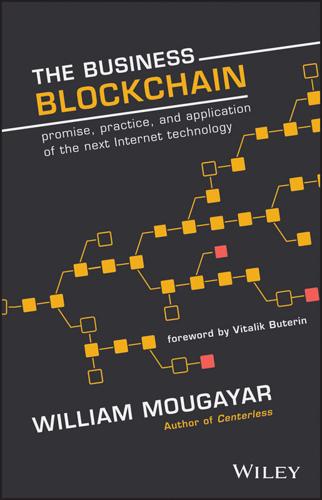
The Business Blockchain: Promise, Practice, and Application of the Next Internet Technology
by
William Mougayar
Published 25 Apr 2016
However, a global bank with no restrictions on borders or transactions would be interesting to users that want to conduct global transactions wherever they are in the world with the same ease as using a credit card. But here’s the sad news: this fictitious global bank will never exist, because local regulatory hurdles are too high and too real. No existing startup or bank has the incentive or desire to become that “ultra” bank. The hurdles that Uber (the ride sharing service) has faced against the global taxi cartels would pale in comparison to the complexities and intricacies of the regulatory, compliance, and legal barriers that are intrinsic to each local financial services system around the world. Do you know why HSBC is not really the world’s leading global bank, despite being in 72 countries?
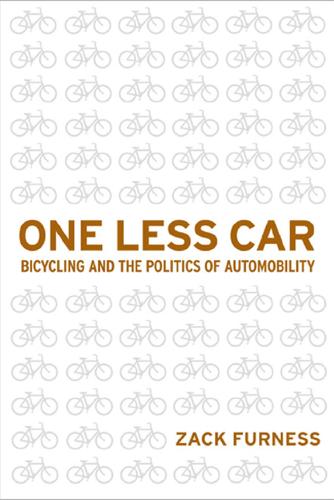
One Less Car: Bicycling and the Politics of Automobility
by
Zack Furness
and
Zachary Mooradian Furness
Published 28 Mar 2010
a number of other people also deserve credit for their insights (any errors that remain in the book are my own): Gordon Mitchell and andrew Weintraub, whose comments and suggestions made this an eminently better work; Jeff Ferrell and Stephen Duncombe, who gave me additional feedback on an earlier version of the manuscript; and Charles Komanoff, who shared not only his wisdom about bike activism and transportation politics but also valuable research materials and contacts. i am also grateful to the people who were kind enough to send me documents, photocopied articles, and other hard-to-find (print and digital) texts, including ross petty, peter norton, Jacquie phelan, aaron Wilcher, Michael niman, Doug McCabe, and John Dowlin (the unsung godfather of bike zines). in addition, i thank all the folks who sat for interviews, took me for rides, shared their thoughts and stories, responded to e-mail messages, engaged me in conversation (and the occasional argument), granted permission for the use of their artwork or lyrics, and otherwise made invaluable contributions to both this book and my perspectives on bicycling and bike culture in north america (and abroad).
…
For example, in my hometown of pittsburgh (pennsylvania) the community bicycle organization Free ride initially began in a storefront adjacent to the collectively run show space called the Mr. roboto project—an all-ages, Diy punk music venue that operates through membership dues and volunteer labor.24 Free ride shared this space, dubbed the “Multitool,” with The Big idea infoshop and both projects were, at one time, at least partly staffed by the same group of punks and activists who attend (or play) shows next door. in addition, Free ride’s rent costs were kept to a minimum through supplementary income made from bands that rented practice space in the basement of the Multitool.

The Rough Guide to Cape Town, Winelands & Garden Route
by
Rough Guides
,
James Bembridge
and
Barbara McCrea
Published 4 Jan 2018
As well as dangerous driving, be prepared for pickpockets working the taxi ranks. Don’t take minibus taxis after dark. Rikkis and shuttle buses The Rikkis Taxis fleet includes London-style black cabs, operating all hours and aimed principally at tourists; book through 086 174 5547 or rikkis.co.za. They offer airport shuttles, ride shares and a private door-to-door service. In the same vein but a little cheaper, the Backpacker Bus (booking two days ahead recommended; 082 809 9185, backpackerbus.co.za) offers good-value transport between Cape Town, Stellenbosch and the airport. From Cape Town accommodation to Stellenbosch costs R300 (R550 return); R450 (R650 return) for two people, R550 (R750 return) for three and R650 (R850 return) for four.
…
Fares are R9 a kilometre within their normal operating area (city centre to southern suburbs; open 24hr), but there may be an additional charge if your pick-up or drop-off point is further flung than this. Intercab 021 447 7799. Available 24/7, this decade-old company charges R8.80 per kilometre. Rikki’s Taxis 0861 745 547, rikkis.co.za. Long-running Rikki’s charges R10 per kilometre and offers cheaper ride shares and airport shuttles. Sport Taxis 021 447 4444, sport24hrs.co.za. Rikki’s affiliate charging the same rates. Tours and airport shuttles available. Uber uber.com/en-ZA/cities/cape-town. A popular and convenient option, with rates from R7 per kilometre (and R0.70 per minute) with a R5 base fare and a minimum charge of R20.
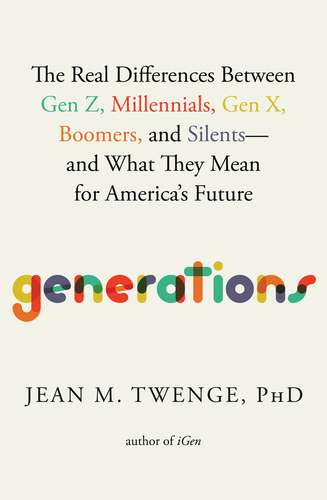
Generations: The Real Differences Between Gen Z, Millennials, Gen X, Boomers, and Silents—and What They Mean for America's Future
by
Jean M. Twenge
Published 25 Apr 2023
Most 12th graders were Gen Z after 2013 What about large purchases like cars? For much of the 2010s, observers speculated that Millennials would rely on ride shares and public transportation and thus wouldn’t buy cars. That did not turn out to be true, and that’s again backed up by what Millennials were saying when they were 18—their interest in cars was higher than Boomers’ in the 1970s. These data also suggest Gen Z will want to buy cars, especially as the COVID-19 pandemic illustrated the downsides of relying on ride shares and public transportation (see Figure 8.19). However, Gen Z is backing off Gen X’ers’ and Millennials’ desire for luxury goods like boats—the generation is too practical, and too pessimistic, to say that they want something that might feel indulgent.
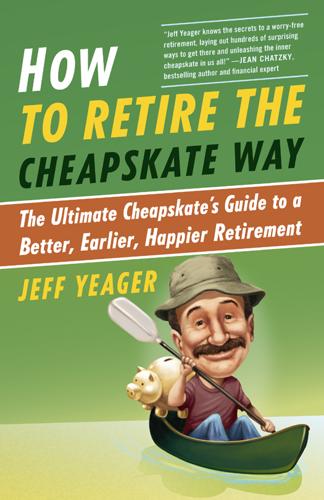
How to Retire the Cheapskate Way
by
Jeff Yeager
Published 1 Jan 2013
Whether or not you’re relocating in retirement, thinking through your options when it comes to transportation is an extremely high priority. Can you downsize from owning two cars to just one? Can you live without a car completely—or at least keep it parked in the garage more often—by relying on public transportation, community-provided transportation for seniors, or car/ride-sharing programs? An excellent book on the topic about how to live car-free or car-lite is, ironically, entitled How to Live Well Without Owning a Car, by Chris Balish. Don’t be put off by the title; in reality, Balish explores all types of creative options to simply reduce your automotive dependency (and costs), even if you decide to hang on to your four wheels once you retire.
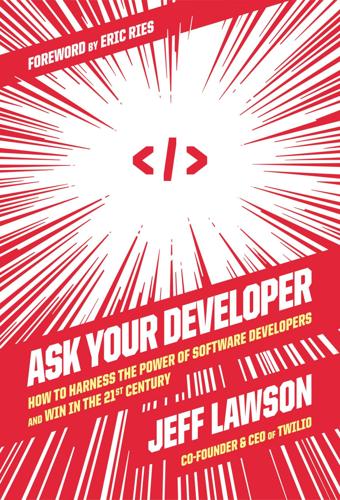
Ask Your Developer: How to Harness the Power of Software Developers and Win in the 21st Century
by
Jeff Lawson
Published 12 Jan 2021
When they all said they had, I asked them to take their phones out of their pockets and look at how those apps show there’s a car on the way and where it is. I asked them to imagine what it would mean to the patient experience if a patient knew the arrival time of the nurse or a doctor coming to their room to help. Thanks to software, it’s just as easy to do that for medical staff as it is for ride shares. Only the delusion that there’s no connection between software and patient care prevents that from becoming the norm. The digital revolution is fundamentally rewriting the rules of general management. Software simultaneously lowers transaction costs, demolishes barriers to entry, and accelerates the pace of change.

The Entrepreneurial State: Debunking Public vs. Private Sector Myths
by
Mariana Mazzucato
Published 1 Jan 2011
The fact that top pharma companies are spending a decreasing amount of funds on R&D at the same time that the State is spending more – all while increasing the amount they spend on share buybacks, makes this particular innovation ecosystem much more parasitic than symbiotic. This is not the ‘crowding out’ effect: this is free-riding. Share buyback schemes boost stock prices, benefitting senior executives, managers and investors that hold the majority of company stock. Boosting share prices does not create value (the point of innovation), but facilitates its extraction. Shareholders and executives are thus ‘rewarded’ for riding the innovation wave the State created.

EcoVillage at Ithaca Pioneering a Sustainable Culture (2005)
by
Liz Walker
Published 20 May 2005
Short-term goals (which might include different phases for research, design, and implementation) should be within the scope of what both the students and the residents can handle. For instance, I worked with the “Alternative Transportation” group in the spring, which surveyed and interviewed residents on their transportation habits and needs. From this semester-long project one concrete project was completed (an electronic ride share system), and another was generated (a green bus shelter). This led to a design project in the summer, and to a future hands-on building project. Even with this relatively successful project area, we have encountered significant glitches. The electronic ride board was something that many residents requested.
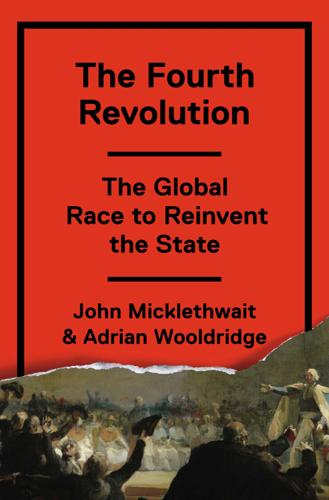
The Fourth Revolution: The Global Race to Reinvent the State
by
John Micklethwait
and
Adrian Wooldridge
Published 14 May 2014
It can make workers more productive; it can spread information, so that people can see how good their school or hospital is; and it can put more power in the hands of ordinary citizens. Technology is making it easier for ordinary people to come together to solve collective problems, often bypassing government in the process. Ride sharing is a way to reduce pressure on public transport. Road pricing makes it easier to price a public good. Indeed there are opportunities right across the public sector. Very quietly, the delivery of services in the public sector has gotten a lot more efficient in what was its original core area.

The Perfect Police State: An Undercover Odyssey Into China's Terrifying Surveillance Dystopia of the Future
by
Geoffrey Cain
Published 28 Jun 2021
In December 2016, Megvii, the facial recognition start-up founded five years earlier with the help of Microsoft Research Asia alumni, raised $100 million from investors.29 Tencent, the developer of WeChat, started out the year worth $180 billion and went on an investment spree. It poured more than $21 billion into a variety of start-ups—anything from online gaming to ride sharing to gene sequencing.30 Finally, China’s disparate start-ups, growing in wealth and influence, had the potential to build a nationwide ecosystem that could bring together big data, facial recognition, and AI. Go, the board game beloved in China, kick-started China’s AI engine. For years, AI engineers had believed Go was so hopelessly complex—it has 361 pieces—that it would be impossible to write a software program that could win over a human.
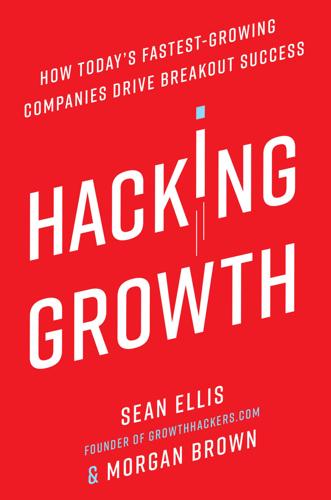
Hacking Growth: How Today's Fastest-Growing Companies Drive Breakout Success
by
Sean Ellis
and
Morgan Brown
Published 24 Apr 2017
FOGG BEHAVIOR MODEL And finally, for opt-in notifications, a trigger’s impact will vary greatly depending on how many users agree to receive them. The range of opt-in agreement can vary a great deal across products and product categories. For example, for mobile notifications, opt-in rates range from 80 percent at the high end, for services like ride sharing, to 39 percent at the low end for news and media offerings, according to Kahuna, a mobile messaging company.14 IOS PUSH OPT-IN RATES BY APP INDUSTRY One of the biggest mistakes companies make is asking visitors to opt in to receiving triggers such as notifications and emails too soon, often as a necessary first step to setting up or accessing the product.

The End of Ownership: Personal Property in the Digital Economy
by
Aaron Perzanowski
and
Jason Schultz
Published 4 Nov 2016
But we rented cars, stayed in hotels, and endured rented bowling shoes long before the first iPhone app. So what is it—if anything—that makes the sharing economy “disruptive”? For one, we see nonownership models moving from out-of-the-ordinary circumstances, like renting a car on vacation, to the everyday convenience, like ride sharing on your commute to work. In large part, the expansion of temporary-access models is a function of technology. Before everyone had a smartphone in their pocket, the transaction costs of renting your bike for a few hours were prohibitive. By making it easier for owners and users to connect, technology enables more efficient use of existing resources.

Artificial Intelligence: A Guide for Thinking Humans
by
Melanie Mitchell
Published 14 Oct 2019
“Vehicle Cybersecurity: DOT and Industry Have Efforts Under Way, but DOT Needs to Define Its Role in Responding to a Real-World Attack,” General Accounting Office, March 2016, accessed Dec. 18, 2018, www.gao.gov/assets/680/676064.pdf. 3. Quoted in J. Crosbie, “Ford’s Self-Driving Cars Will Live Inside Urban ‘Geofences,’” Inverse, March 13, 2017, www.inverse.com/article/28876-ford-self-driving-cars-geofences-ride-sharing. 4. Quoted in J. Kahn, “To Get Ready for Robot Driving, Some Want to Reprogram Pedestrians,” Bloomberg, Aug. 16, 2018, www.bloomberg.com/news/articles/2018-08-16/to-get-ready-for-robot-driving-some-want-to-reprogram-pedestrians. 5. “Artificial Intelligence, Automation, and the Economy,” Executive Office of the President, Dec. 2016, www.whitehouse.gov/sites/whitehouse.gov/files/images/EMBARGOED%20AI%20Economy%20Report.pdf. 6.
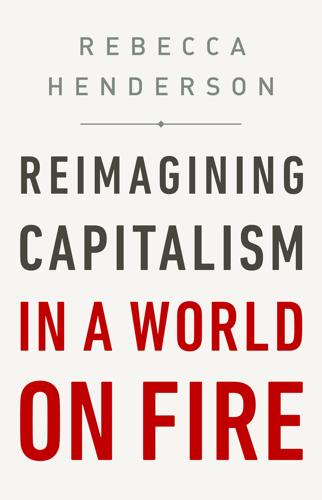
Reimagining Capitalism in a World on Fire
by
Rebecca Henderson
Published 27 Apr 2020
Instead of on-demand cars, it’s an on-demand life, in a much larger fullness.58 Zipcar grew to be the largest car sharing company in the world and was acquired by Avis in 2013 for half a billion dollars.59 It now has over a million members in five hundred cities in nine countries. Since leaving Zipcar, Chase has founded or helped to found at least three other ventures with similar goals—Buzzcar, a peer-to-peer car sharing service; GoLoco.org, a ride sharing company; and Veniam, a firm that uses cars and trucks to blanket a city with public Wi-Fi. But every time I teach, people ask me if firms can really make money by doing the right thing. “I know about Tesla,” they say, “but are there any other examples out there?” I tell them that there are hundreds and refer them to the Harvard Business School case website, armed with the right key words.

Hype: How Scammers, Grifters, and Con Artists Are Taking Over the Internet―and Why We're Following
by
Gabrielle Bluestone
Published 5 Apr 2021
Nor has it traditionally abided by any rules and regulations it deems unfavorable to its business, though current CEO Dara Khosrowshahi’s entire personality does seem to hinge on not being former CEO Travis Kalanick, who’s taken the brunt of the blame for the company’s early lawlessness. But when McFarland was still in business and Kalanick was still at the ride share company’s helm, Uber’s lawbreaking was seen as such a feature and not a bug of its business that the company had even managed to optimize its anarchic methods. In a process detailed by the nonprofit consumer advocacy group Public Citizen’s research director Rick Claypool in a 2016 paper, the company would swoop into a city and set up shop, ignoring local regulations and “insisting on the legality of its business.”

The AI Economy: Work, Wealth and Welfare in the Robot Age
by
Roger Bootle
Published 4 Sep 2019
So, these two parts of the triad that is supposedly destined to transform our society are very far from being nailed on. More importantly, we could see the widespread use of shared-use vehicles or electric vehicles, or both, without seeing a large-scale move to driverless vehicles. For, even without the ride sharing and the switch from petrol to electric, the widespread use of driverless cars is not as straightforward as is usually implied. Feasibility is not the issue. Safety is. Demis Hassabis, one of the founders of DeepMind, said in May 2018: “How do you ensure, mathematically, that systems are safe and will only do what we think they are going to do when they are out in the wild.”8 His misgivings are fully justified.

We Are All Fast-Food Workers Now: The Global Uprising Against Poverty Wages
by
Annelise Orleck
Published 27 Feb 2018
An ever-diminishing percentage of workers are full-time employees, whether at a college, a hospital, a restaurant, a hotel, or a factory. Fight for $15 leader David Rolf estimates that half of US jobs created since 2008 are part-time. We all know, or are, freelancers, home workers, service providers, car service/ride-sharing drivers, adjunct professors pulling together brief contract jobs to make ends meet. Most don’t earn enough to pay their bills. In 2016, more than 127,000 people slept in New York City homeless shelters. Many were working people and their kids.2 The cheerful pictures painted by Amazon, Uber, and McDonald’s are lies.
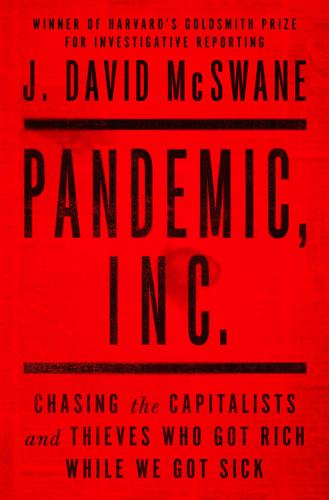
Pandemic, Inc.: Chasing the Capitalists and Thieves Who Got Rich While We Got Sick
by
J. David McSwane
Published 11 Apr 2022
“The Cardiffs are spending nearly $17,000 per month,” court records stated. “On Bentley, Porsche, and Range Rover lease payments, private elementary school tuition, restaurants, phone and cable bills, salons and spas, pet grooming, a 5-star hotel in New York City, music lessons, taekwondo lessons, ride shares, movie theaters, and other lavish expenditures.” The couple also stopped paying the $12,000 a month mortgage on their home. Oh, and that secret account in his father’s name? “Strikingly,” federal regulators said, it was not paying for his father’s retirement home bills. These records made we wonder if Zelonka was right—that Cardiff was the actual shadow owner of the company hired to get masks to the federal government and healthcare workers who were dying without them.

Fire and Fury: Inside the Trump White House
by
Michael Wolff
Published 5 Jan 2018
On the other hand, while there was a warming C-suite feeling for Trump, there was also rising concern about the consumer side of many big brands. The Trump brand was suddenly the world’s biggest brand—the new Apple, except the opposite, since it was universally disdained (at least among many of the consumers who most top brands sought to court). Hence, on inaugural morning, the employees of Uber, the ride sharing company, whose then CEO Travis Kalanick had signed on to the Schwarzman council, woke up to find people chained to the doors of their San Francisco headquarters. The charge was that Uber and Kalanick were “collaborating”—with its whiff of Vichy—a much different status than a business looking to sober forums with the president as a way to influence the government.
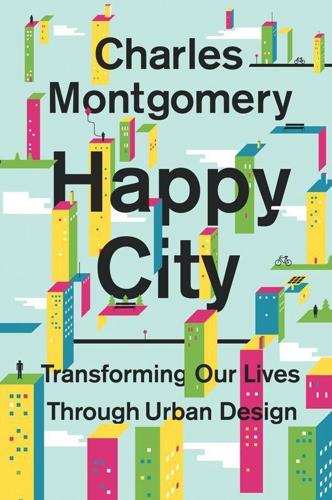
Happy City: Transforming Our Lives Through Urban Design
by
Charles Montgomery
Published 12 Nov 2013
In 2010 Getaround began providing car owners in the San Francisco area with small Wi-Fi and GPS-enabled units. Owners choose when and where they want to offer their vehicles, and renters find them and book them via an iPhone app. One peer-to-peer user reported that she left her car in San Francisco while she went hiking in Peru—and earned $350 per week in rentals while she was away.* Meanwhile, even ride sharing has gotten smarter. A smartphone application called Avego enables drivers and prospective passengers to link up through their phones. At the end of each journey an automated accounting system pays the driver out of the passenger’s account. In some ways, these peer-to-peer systems work like oxytocin, the trust hormone: they offer an inducement and immediate reward for behaving cooperatively with other people.

Smart Cities: Big Data, Civic Hackers, and the Quest for a New Utopia
by
Anthony M. Townsend
Published 29 Sep 2013
He had his eye on Washington, DC, where Apps for Democracy, the first city-sponsored apps contest, had run during the preceding autumn. Geraci had concluded that apps contests were an inspired idea but too open-ended and too driven by government data and the programmers’ own desires instead of the problems of citizens. So he devised a series of DIYcity Challenges that started with problems—ride sharing, bus tracking, tracking the spread of communicable diseases. To accelerate the process, and keep the focus on users, not tools, he even dictated key parts of the design solution—for instance, a Twitter bot to crowdsource traffic reports. And rather than inviting competition, Geraci’s approach was for the entire community to collaborate on a single solution.

Twitter and Tear Gas: The Power and Fragility of Networked Protest
by
Zeynep Tufekci
Published 14 May 2017
Rather, the tools have a wide range in what they allow us to do, and what they do not, and the ways they organize and shape communication. Each of these aspects makes a difference in what can be accomplished with them, as can be seen in the example of the bulletin board versus Twitter to organize ride sharing. This chapter goes in depth about the ways of thinking about technology and society and its complex interactions. It is not necessarily a chapter about social movements, but a means to clarify the conceptual approach that underlies the analysis of technology, networked movements and society in the rest of the book.
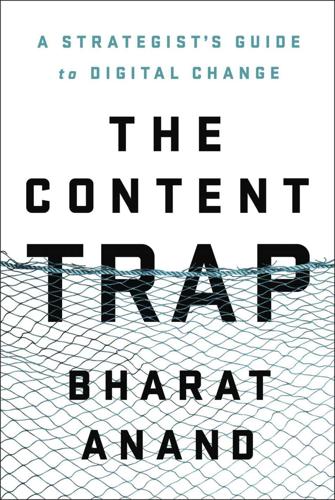
The Content Trap: A Strategist's Guide to Digital Change
by
Bharat Anand
Published 17 Oct 2016
Car companies are used to investing in engines and transmissions, looking to grab differentiation there. But some of them, including BMW, have begun licensing their technologies to others. Their reasoning? That superiority in hardware will be short-lived, even superfluous, as the shift toward electric cars (inspired by Tesla), self-driving cars (inspired by Google), and ride sharing (inspired by Uber) shifts the locus of differentiation toward sensors, controls, and software. It’s a familiar story: As competition moves from products to connected portfolios, it pays to know whose complement you are—or, to put it another way, which business you are really in. Define your business as engines and power trains, and you might just hear the whispers of the recording studios in your ear.

Mastering Blockchain, Second Edition
by
Imran Bashir
Published 28 Mar 2018
It should be noted that this system is not built on top of a blockchain; instead, DHTs are used in a peer-to-peer network to enable direct communication and data sharing among peers. It makes use of Bitcoin and various other cryptocurrencies as a payment method. Lazooz This is the decentralized equivalent of Uber. It allows peer-to-peer ride sharing and users to be incentivized by proof of movement, and they can earn Zooz coins. Many other DApps have been built on the Ethereum blockchain and are showcased at http://dapps.ethercasts.com/. Platforms for decentralization Today, there are many platforms available for decentralization.

Lifespan: Why We Age—and Why We Don't Have To
by
David A. Sinclair
and
Matthew D. Laplante
Published 9 Sep 2019
At least in one regard—the “stuff factor,” so to speak—technology is already driving a tremendous and positive change, a global process of “dematerialization” that has replaced billions of tons of goods with digital products and human services. Thus it is that wall-to-wall shelves dedicated to records and compact discs have been replaced by streaming music services; people who once needed vehicles for once-in-a-while travel now open an app on their phones to request a ride share; and entire wings of hospitals once used for storing patients’ records have been supplanted by handheld cloud-connected tablet computers. As Steven Pinker has pointed out, a lot of the time, energy, and money we once spent making “stuff” is now “directed toward cleaner air, safer cars and drugs for ‘orphan diseases.’ ”29 Meanwhile, the “experiences, not things” movements and the like are transforming the ways in which we save and spend money—and leaving us with less crap in our basements.

In Pursuit of Privilege: A History of New York City's Upper Class and the Making of a Metropolis
by
Clifton Hood
Published 1 Nov 2016
Scott, & Mr Smith, & Hillhouse, & Wickham, & Ketteltas; supped, & settled politics over a generous bottle.”72 In the two brief paragraphs he devoted to his stay in New York, Styles supplied the personal names of ten gentlemen whom he met and mentioned interactions with six other polite people (a dinner enjoyed with “three Philada. ladies”; a ferry ride shared with “three other Dutch gent.”) whom he did not identify by name.73 Styles made no reference to any strangers or crowds he had encountered on the street, in church, or on the ferries. Impolite people and sites were, of course, omnipresent, and Styles’s purposeful and conspicuous omission of nearly all of them from his diary was evidence of his ability to control his feelings and actions and to create a sanctuary for himself and his friends.

Devil Take the Hindmost: A History of Financial Speculation
by
Edward Chancellor
Published 31 May 2000
Taxis Metered taxis are always available, but given the density of public transport they’re rarely necessary – and besides, you need to be on a Swiss salary to afford them. The app-based taxi service Uber (uber.com) is available in nine cities across Switzerland, namely Geneva, Lausanne, Basel, Bern, Fribourg, Sion, Winterthur, Zug and Zürich. Other local transport-sharing apps and websites include hitchhike.ch and blablacar.co.uk/ride-sharing-abroad, both of which allow for the arranging of car-pooling journeys. By boat All of Switzerland’s bigger lakes, and many of its smaller ones, are served by regular ferries. Most run only during the summer season – which at its broadest covers April to October – and are primarily pleasure-oriented, duplicating routes which can be covered more quickly by rail.

The Rough Guide to Switzerland (Travel Guide eBook)
by
Rough Guides
Published 24 May 2022
Taxis Metered taxis are always available, but given the density of public transport they’re rarely necessary – and besides, you need to be on a Swiss salary to afford them. The app-based taxi service Uber (uber.com) is available in nine cities across Switzerland, namely Geneva, Lausanne, Basel, Bern, Fribourg, Sion, Winterthur, Zug and Zürich. Other local transport-sharing apps and websites include hitchhike.ch and blablacar.co.uk/ride-sharing-abroad, both of which allow for the arranging of car-pooling journeys. By boat All of Switzerland’s bigger lakes, and many of its smaller ones, are served by regular ferries. Most run only during the summer season – which at its broadest covers April to October – and are primarily pleasure-oriented, duplicating routes which can be covered more quickly by rail.

Northern California Travel Guide
by
Lonely Planet
Exhibits reveal once-popular views of Chinatown, including the sensationalist opium-den exhibit at San Francisco's 1915 Panama-Pacific International Expo inviting fairgoers to 'Go Slumming' in Chinatown. BEFORE YOU GO AMake reservations at top San Francisco restaurants – some accept early/late walk-ins, but not all do. AReserve Alcatraz tickets two to four weeks ahead, especially for popular night tours. ADownload SF-invented apps for ride sharing (Lyft, Uber), home sharing (Airbnb), restaurant booking (Yelp) and audio walking tours (Detour) – all widely used here. Fisherman's Wharf, The Marina & Russian Hill 1Top Sights 1Crissy FieldA2 2ExploratoriumH2 3Lombard StreetE2 4Maritime National Historical ParkE1 5Musée MécaniqueF1 6Sea Lions at Pier 39F1 1Sights 7Diego Rivera GalleryF2 8Fort Mason CenterD1 9Ina Coolbrith ParkF3 10USS PampanitoF1 11Vallejo Street StepsF3 2Activities, Courses & Tours 12Alcatraz CruisesG1 13Basically Free Bike RentalsF2 Blazing SaddlesE1 14Oceanic Society ExpeditionsC1 4Sleeping 15Argonaut HotelE1 16HI San Francisco Fisherman's WharfD1 17Hotel del SolD2 18Hotel DriscoC4 19Hotel ZephyrF1 20Inn at the PresidioA3 21Queen Anne HotelE4 5Eating 22Gary DankoE1 23GreensD1 24La FolieE3 25Lucca DelicatessenC2 26Off the GridD2 27Out the DoorD4 6Drinking & Nightlife 28Buena Vista CafeE1 29Interval Bar & CafeD1 The Marina, Fisherman's Wharf & the Piers oAlcatrazHISTORIC SITE ( GOOGLE MAP ; %Alcatraz Cruises 415-981-7625; www.nps.gov/alcatraz; tours adult/child 5-11yr day $37.25/23, night $44.25/26.50; hcall center 8am-7pm, ferries depart Pier 33 half-hourly 8:45am-3:50pm, night tours 5:55pm & 6:30pm; c) Alcatraz: for over 150 years, the name has given the innocent chills and the guilty cold sweats.

France (Lonely Planet, 8th Edition)
by
Nicola Williams
Published 14 Oct 2010
Remote rural areas are a better bet, but once you get off the routes nationales traffic can be light and local. If your itinerary includes a ferry crossing, it’s worth trying to score a ride before the ferry since vehicle tickets sometimes include a number of passengers free of charge. At dusk, give up and think about finding somewhere to stay. Ride Share A number of organisations around France arrange covoiturage (car sharing), ie putting people looking for rides in touch with drivers going to the same destination. You generally pay a per-kilometre fee to the driver as well as a flat administration fee. The best known is Paris-based Allostop ( 01 53 20 42 42; www.allostop.net, in French; 30 rue Pierre Sémard, 9e, Paris), though you might also try www.123envoiture.com, www.covoiturage.com, www.carecole.com, www.carjob.org and www.carvoyage.com.

Lonely Planet France
by
Lonely Planet Publications
Published 31 Mar 2013
Hitching in remote rural areas is better, but once you get off the routes nationales traffic can be light and local. If your itinerary includes a ferry crossing, it’s worth trying to score a ride before the ferry since vehicle tickets usually include a number of passengers free of charge. At dusk, give up and think about finding somewhere to stay. Ride Share A number of organisations around France arrange covoiturage (car sharing), ie putting people looking for rides in touch with drivers going to the same destination. The best known is Paris-based Allostop (www.allostop.net) , where you pay €3/5/8/10 for a single journey up to 50/100/150/200km. You might also try Covoiturage (www.covoiturage.fr) or, for international journeys, Karzoo (www.karzoo.eu) .